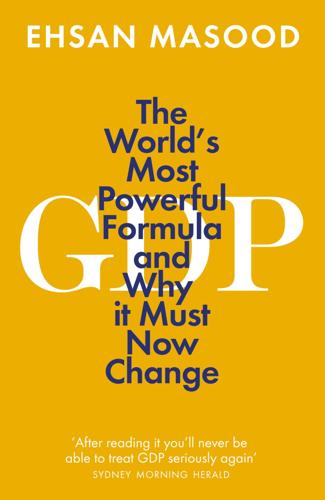
GDP: The World’s Most Powerful Formula and Why It Must Now Change
by
Ehsan Masood
Published 4 Mar 2021
In a separate email dated December 4, 2015, Bill Draper also confirmed the lunch with Mahbub ul Haq and General Zia on August 17, 1988, the day of Zia’s death. 5. Bill Draper, telephone interview with the author, May 2013. 6. Mahbub ul Haq, “The Birth of the Human Development Index,” in Reflections on Human Development (New York: Oxford University Press, 1995), 46. 7. Bill Draper also tells his story of meeting Mahbub ul Haq and publishing the Human Development Index in his memoir, William H. Draper III, The Startup Game: Inside the Partnership Between Venture Capitalists and Entrepreneurs (New York: Palgrave Macmillan, 2011), 121. 8. Amartya Sen, “The Possibility of Social Choice” (Nobel Lecture, December 8, 1998), accessed August 19, 2015, http://www.nobelprize.org/nobel_prizes/economic-sciences/laureates/1998/sen-lecture.pdf. 9.
…
And finally there was Amartya Sen, coinventor of the Human Development Index and by now a Nobelist, too. Sarkozy had good reasons for his choice of expert advisers. Joseph Stiglitz has for some years been a leading source for ideas on how to reduce inequality. Fitoussi’s value would include acting as cover for Sarkozy against attacks from the home side. Amartya Sen, meanwhile, would bring experience of such an exercise, not to say nearly two decades of reflection on the shaping, launch, successes, failures, and aftermath of the Human Development Index. In 2007, a whisker before the financial crisis of 2008, Sarkozy asked the trio to gather more of their colleagues, just as Sen and Mahbub ul Haq had done.2 He requested that they summarize for him the latest thinking in alternative ways to measure economies and societies.
…
But they cannot agree on what could or should change, and they are even less certain about how change could happen. Many support the idea that world leaders should be encouraged to follow a “dashboard” of numbers, of which GDP could be one, alongside indicators of the state of a nation’s health, education, employment, living standards, environment, and wellbeing. This dashboard might include the Human Development Index, a pioneering idea that in a single number captures life expectancy, literacy and schooling alongside income. The HDI was created more than twenty-five years ago as an alternative to GDP but would stand for better things, according to one of its architects, the Pakistani economist Mahbub ul Haq.6 A dashboard of alternatives to GDP might also include Gross National Happiness, an innovation from the landlocked state of Bhutan.
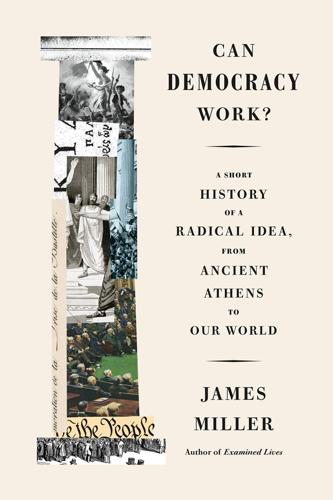
Can Democracy Work?: A Short History of a Radical Idea, From Ancient Athens to Our World
by
James Miller
Published 17 Sep 2018
It is noteworthy that The Economist, like Freedom House, does not measure levels of social and economic well-being. However, the United Nations does cover these areas in its Human Development Index (which measures good health, access to knowledge, human rights, human security, standard of living, absence of discrimination, dignity, and the extent of political self-determination). Social democrats have long argued that there are social and economic preconditions for fully developing the individual and the collective capacities for self-government—the UN Human Development Index is meant to track progress in fostering these capacities. Though all three of these indexes are rough instruments (and some scholars dispute their results), their measures, despite some discrepancies in their findings, produce roughly similar conclusions.
…
The countries with the most freedoms, and the most fully realized democracies, are in general also prosperous, with developed market economies. They also generally score highest on the UN Human Development Index, led by the Scandinavian countries (Norway, Sweden, Iceland, Finland, Denmark), followed by Canada, Australia, and various Northern European countries (Netherlands, Germany, Luxembourg, Switzerland, Ireland). High-ranking Asian nations include Japan and South Korea. Of the Latin American nations, Uruguay ranks high, along with Chile. Africa lags behind the rest of the world. China ranks much higher on the Human Development Index than on the freedom or democracy indexes. And the United States, which ranks “very high” on human development, and is considered “free” by Freedom House, in 2016 was ranked twenty-first in The Economist index, tied with Italy, making it a “flawed democracy” for the first time in the history of the index.
…
Herodotus Hetherington, Henry Hippias History of the French Revolution (Michelet) History of the Peloponnesian War (Thucydides) Hitler, Adolf Hobbes, Thomas Holmes, Oliver Wendell, Jr. Holocaust hoplites (Greek infantrymen) Horseshoe Bend, Battle of (1814) Hôtel de Ville, Paris House Un-American Activities Committee Howe, Irving Human Condition, The (Arendt) Human Development Index Human Nature in Politics (Wallas) human rights; Athenian democracy as lacking concept of; Declaration of Independence on; UN declaration of; UN Human Development Index of Humphrey, Hubert Hungary; workers’ councils in Huntington, Samuel P.; academic career of; on American national identity; antiwar protesters’ reviling of; democracy as viewed by; on erosion of white male power; in Johnson administration; liberalism of; Vietnam War and immigrants, undocumented imperialism, Versailles Peace Treaty and India, partition of Indignados (the Outraged) individualism; perfect Indonesia Industrial Workers of the World inequality: growth of; see also wealth inequality information, Internet and aggregation of institutions, representative, direct actions as frustrated by Intercollegiate Socialist Society International internationalism, democracy and International Socialist Congress International Working Men’s Association Internet: and aggregation of information; propaganda and Introductory Lectures on Psychoanalysis (Freud) Iraq, U.S. invasion of Italy: Carbonari in; Fascism in Izvestiia Jackson, Andrew; background of; commerce promoted by; 1828 presidential campaign of; elites detested by; historians’ views of; Indians hated by; rule of law disregard by; in War of 1812 “Jacksonian democracy” Jacobins, Jacobin clubs; as laboratories of direct democracy; Reign of Terror implemented by; Robespierre in address to James, Henry Jay, John Jay Treaty (1795) Jefferson, Thomas; Declaration of Independence and; as sympathizer with French revolutionary cause Jena, Germany Jews, Holocaust and Johnson, Lyndon Jones, Gareth Stedman Jowett, Benjamin Kahneman, Daniel Kelsen, Hans Kennedy, John F.
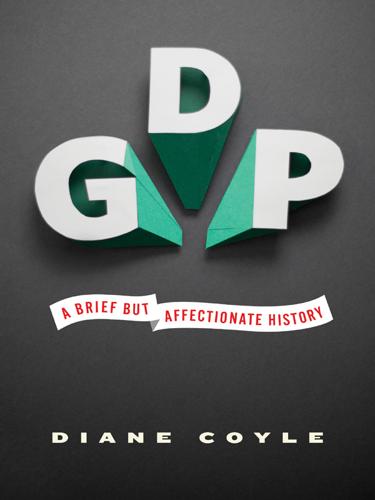
GDP: A Brief but Affectionate History
by
Diane Coyle
Published 23 Feb 2014
See also fiscal policy; monetary policy; policy and politics government services, 38–39 Great Depression, 12–13, 119, 121 Greece, 1–5, 72, 73, 138 Greenspan, Alan, 83, 88, 94, 102 Gross Domestic Product (GDP): adjustments and reforms of, 92, 117, 136–38; availability of country data on, 78; calculation issues in, 2, 32–34, 52–54; circular flow model of, 26–27, 27f, 57, 63; complexity of, 24–25, 28–31; concept of, 4–5, 24–31 (see also purpose and meanings of); country comparisons of, 42; criticisms of, 5, 14, 104, 110–11; future of, 121–40; GNP vs., 25; “gross” component of, 25, 30; HDI correlated with, 73–74; importance of, 1–6, 42, 135–36; information gathering for, 33, 37, 51–53, 137–38; international comparisons of, 48–57; issues facing, 121–35; loans influenced by, 3; origins of, 7, 16–18, 119–20; postwar, 43–45, 43t, 62–63; purpose and meanings of, 5–6, 92, 121, 136, 138–40 (see also concept of); recommendations concerning, 136–40; revisions of, 36; spending-income relationship in, 30, 33–34; statistical patterns in, 3; well-being and welfare correlated with, 111, 117, 136; well-being and welfare not measured by, 5, 14, 40, 91–92, 111–14, 124–25, 136, 140 Gross National Product (GNP), 15–16, 25, 115–16 Guevara, Che, 68 Haldane, Andrew, 99, 101 happiness, 5, 6, 110–13, 136, 137. See also well-being and welfare Harrod, Roy, 55 Hart, Keith, 107 HDI. See Human Development Index Healey, Denis, 35–36 hedonic price measurement, 35, 88–90 hedonic treadmill, 112 Heston, Alan, 50 high-income countries. See developed/high-income countries Hitler, Adolf, 41 Holland, 8, 17, 20 Hoover, Herbert, 13 household production/services, 38, 39, 106, 108–9, 140 human capital, 134, 135 Human Development Index (HDI), 72–74, 115, 136, 137 IMF. See International Monetary Fund imputed bank service charge (IBSC), 102–3 income, as GDP measure, 25, 26t income inequality.
…
Yet GDP has not grown much for most of the postwar era in sub-Saharan Africa, and poverty remains widespread. Mahbub Ul Haq, a Pakistani economist working at the World Bank in the 1970s and 1980s, and later (after a stint as Pakistan’s finance minister) at the United Nations, introduced an alternative approach to measuring poverty and welfare. The indicator he launched, the Human Development Index (HDI), built on the idea of measuring capabilities rather than income. The economist Amartya Sen, who subsequently won the Nobel Memorial Prize, had electrified the world of development economics with the argument that famines had nothing to do with income and poverty; rather, they were caused when governments were not responsive to the needs of their people, and in particular when there were no newspapers or broadcasters with sufficient independence to challenge and criticize government decisions.
…
Obviously the removal of such items from national income estimates, difficult as it would be, would make national income totals much better gauges of the volume of services produced, for comparison among years and among nations.34 In fact, there have been numerous initiatives over the years to develop an index of welfare as opposed to GDP, which measures output only. One widely used by economists, especially in discussing developing countries, is the Human Development Index, discussed in chapter 3. The structure of the index puts the Scandinavian economies at or near the top, instead of the United States, and some middle-income countries such as India lower in the ranking than their GDP per capita figures alone would indicate, because of extensive poverty and poor health.
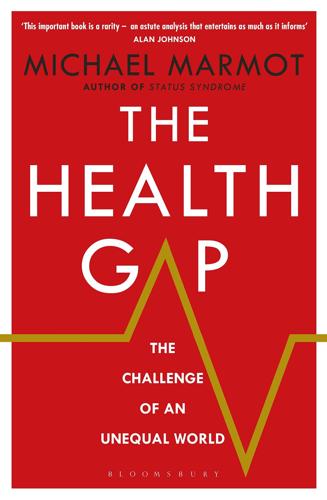
The Health Gap: The Challenge of an Unequal World
by
Michael Marmot
Published 9 Sep 2015
Further, consistent with Joseph Stiglitz’s arguments outlined in Chapter 9, social protection and enhancing people’s capabilities are likely to be good for economic growth and economic productivity. A way that the UNDP measures progress is with a human development index, and the important thing about this HDI is that it includes health, national income and education. Moving beyond the ideology of whether public spending is good or bad is the evidence shown in Figure 10.2. FIGURE 10.2: YESTERDAY’S SPENDING LEADS TO TODAY’S BENEFITS. Each point on the graph represents a country. It shows that the greater the public expenditure on health (care) and education in the year 2000, the higher the score on the human development index (HDI) twelve years later. If I showed this graph to a class of graduate students they would argue over cause and effect and could come up with any number of competing explanations for this correlation.
…
I cannot muster too much enthusiasm for a rose-tinted past. The United Nations has a whole agency devoted to Development, the UNDP. I find their reports invaluable. Pioneered by Mahbub ul Haq, and influenced by Amartya Sen, UNDP recognises that development involves much more than economic growth. It uses a Human Development Index, HDI, that includes measures of national income, of education, and of life expectancy. Further, rather than divide the world into developed and developing it ranks countries on their HDI. In the 2013 Report Norway ranked number 1 on HDI, and Democratic Republic of Congo and Niger ranked joint bottom at 186.
…
It is unseemly to boast, I know, but I could not have been more pleased. To put Darwin in context, think Australia. Sydney, with its iconic Opera House and Harbour Bridge, played host to a universally acclaimed Olympic Games. Australia ranks second, after Norway, on the UNDP (United Nations Development Programme) Human Development Index, which combines life expectancy, education and literacy, and national income.20 Now travel more than 3,000 km from Sydney to Darwin, in the Northern Territory at Australia’s top end – a frontier town that has got richer with nearby mining, and some tourism, but otherwise a world away from the boulevards of Sydney and Melbourne.
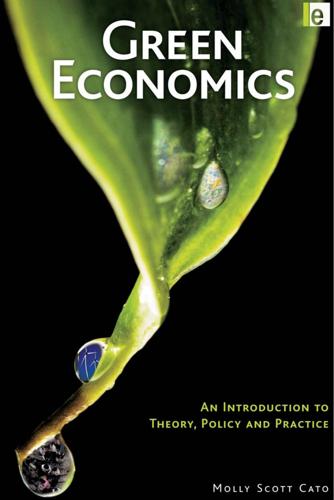
Green Economics: An Introduction to Theory, Policy and Practice
by
Molly Scott Cato
Published 16 Dec 2008
For this reason ‘sufficiency’ is a term preferred by green economists to the earlier term ‘subsistence’, which has come to sound patronizing.17 Much as we argued in Chapter 7 that GDP is not a very useful measure of human well-being, so we can question to what extent economic activity, especially fossil-fuelled economic activity, contributes to human well-being. 178 Threshold for high human development GREEN ECONOMICS 12 Ecological footprint per capita 10 8 6 UAE USA Finland Kuwait Estonia NZ Spain Australia Sweden UK Ireland Russia Saudi Arabia 4 Canada Portugal Slovenia 2 World biocapacity available per person Niger 0 Sierra Leone 0.2 0.4 South Africa Lebanon Botswana Gambia Tajikistan 0.6 Costa Rica Cuba Mali 0.8 1.0 UN Human Development Index, 2003 Figure 11.2 Human well-being and sustainability: Ecological footprint and Human Development Index compared, 2003 Source: Wilkinson and Pickett, 2008. Figure 11.2 compares countries’ ecological footprints with their scores on the UN Human Development Index. It indicates that there is no correlation between the two: countries manage to achieve a high HDI score based on consumption of the Earth’s resources ranging from less than 2 to 10, in the case of the US, and even 12 in the case of the United Arab Emirates.
…
K. 29, 132 GAST (General Agreement on Sustainable Trade) 134, 135 GCI (Global Commons Institute) 28–29, 111 GDH (gross domestic happiness) 119 GDP (gross domestic product) 39, 113–116 INDEX General Agreement on Sustainable Trade (GAST) 134, 135 George, H. 190–191, 192 Georgescu-Roegen, N. 25–26, 206 Germany 82, 108–109, 165 Gesell, S. 81 global commons 111 Global Commons Institute (GCI) 28–29, 111 global economy 27 global free trade see free trade global injustice 74–77 see also inequalities globalization 12, 123, 129–130, 139–141, 209 good life 18 goods 63 see also trade Graae, B. 197 Greek philosophy 18 green business 89–101, 208 energy use 95–96 low-carbon economy 98–99 production 97 resource use 96 scale 92–94 sustainability 90–92 green currencies 83 green economics 2–9, 18–19, 106–107, 205–06 Green Group in the European Parliament 143 green growth 40 Green Industrial Revolution 57, 58 Green Jobs Strategy 57 green parties 106 Green Party of England, Wales and Northern Ireland 144, 160, 180 green taxation 157–168, 209–210 commons 162–164 ecotaxes 164–168 strategic taxation 160–162 theory 157–159 greenwash 93 gross domestic happiness (GDH) 119 gross domestic product (GDP) 39, 113–116 growth, economic 9–10, 28, 38–39, 83, 174 Gudmund-Hower, J. 197 guild system 65–67 221 Hajer, M. 106 Hall, C. 99–100 happiness, gross domestic (GDH) 119 happy planet index (HPI) 119–120 Harper, R. 5, 57, 202 HDI (Human Development Index) 120, 177–178 health 175, 183–185 HE-economy 41 Henderson, H. 26–27, 30, 206 Henry George Institute 191 Hines, C. 126, 134, 139–140, 141, 143 Hoggett, P. 180 home ownership 195–197 Hopkins, R. 148 housing 108–109 HPI (happy planet index) 119–120 Human Development Index (HDI) 120, 177–178 human societies, early 176 Hutchinson, F. 19, 57, 58, 72 Illich, I. 60, 61, 101, 184 illness service 185 Index of Sustainable Economic Welfare (ISEW) 117–118 India 133, 177 indigenous peoples 188 industrial ecology 97 inequalities national income accounting 115 taxation 160, 161 trade 125, 126, 127 UK 3 widening 1, 2 see also global injustice informal economy 64 inheritance tax 160 intellectual roots, green economics 18–19, 205–506 intermediate technology 98 international division of labour 63 international financial system 74–77 International Labour Organization 120 Ireland 112, 158 ISEW (Index of Sustainable Economic Welfare) 117–118 Jackson, T. 117 JAK bank 182–183 Judaeo-Christian tradition 21 222 GREEN ECONOMICS just price 65–66 Kenya 128 Keynes, J.
…
Citizens’ Income and people’s pensions A health service, not an illness service 171 171 173 176 179 181 183 12 Land and the Built Environment Land and economics Taxing land Building on land Growing on the land 187 187 190 193 197 13 Summary and Further Resources 205 Index 219 List of Photographs, Figures, Tables and Boxes PHOTOGRAPHS 1.1 2.1 The men who devised the existing financial system 4 James Robertson with his wife and co-worker Alison Pritchard 22 2.2 Richard Douthwaite 28 3.1 The author modelling a ‘bioregional hat’ 43 3.2 The convivial economy: Stroud farmers’ market 44 4.1 Crests of the London livery companies associated with textiles 67 5.1 Labour note as used at Owen’s Equitable Labour Exchange in 1833 73 5.2 Chiemgauer note, showing the stamps that have to be added to preserve its value over time 82 6.1 Conviviality: Building the bread oven at Springhill co-housing, June 2008 100 9.1 Stroud farmers’ market 144 9.2 The Cuban ‘camel’: Improvised urban public transport in Havana 153 12.1 Springhill Co-housing, Stroud 197 12.2 Stroud Community Agriculture: Weeding in the cabbage path 200 FIGURES 1.1 2.1 2.2 3.1 3.2 3.3 5.1 Widening the consideration of economics beyond the classical economists’ ‘circular flow’ Hazel Henderson’s illustration of the love economy The relationship between economic activity and carbon dioxide emissions Three is a magic number: Re-imaging the relationship between society, economy and environment Permaculture flower Rainwater harvesting system for a domestic property Total debt service of low- and middle-income countries, 1990–2005 6 27 29 37 47 49 76 x 5.2 6.1 7.1 7.2 7.3 7.4 8.1 8.2 8.3 9.1 9.2 9.3 9.4 10.1 11.1 11.2 11.3 12.1 12.2 12.3 12.4 GREEN ECONOMICS Growth in broad money (M4) compared with growth in the economy (GDP), UK, 1970–2001 The carbon cycle The Passivhaus Illustration of the contraction and convergence model for global CO2 emissions reductions Sharing of ‘universal dividend’ from sale of carbon permits and its impact on incomes in different groups of the US population A comparison of GDP and ISEW in the UK, 1950–2002 Fair trade sales in the leading consumer countries in 2006 and 2007 Relationship between growth in trade and growth in CO2 emissions Production grid illustrating trade subsidiarity Trade gap in agricultural products in the UK, 1990–2005 Comparison of wage rates in a selection of countries, based on purchasing power parities, 2005 NEF’s image of the ‘leaky bucket’ local economy Margaret Legum’s design for building prosperity globally Revenues from environmentally related taxes as a percentage of GDP in various OECD countries Relationship between infant mortality and carbon dioxide emissions Human well-being and sustainability: Ecological footprint and Human Development Index compared, 2003 Illustration of the ability to provide for one’s individual needs over the productive life-course Equity creation through a CLT Agricultural and economic systems of sustainable agriculture Percentage of energy used in different aspects of food production and distribution The turning of the year: The annual cycle of growing and celebration on the land source 79 99 108 111 112 118 129 130 132 141 142 146 154 167 175 178 183 196 198 199 201 TABLES 1.1 1.2 1.3 3.1 Comparison of different strands of economics with a concern for the environment Ecological footprinting and shadow pricing compared The negative consequences of economic growth for quality of life Comparison between the HE (hyper-expansionist) and SHE (sane, humane, ecological) possible futures 8 9 10 41 LIST OF PHOTOGRAPHS, FIGURES, TABLES AND BOXES 3.2 3.3 6.1 7.1 7.2 7.3 7.4 8.1 10.1 10.2 10.3 10.4 10.5 10.6 12.1 Indicators of consumption and population in different regions of the world Valuation of activities and functions within the patriarchal economy Success of various sectors within a low-carbon economy Percentage of firms engaged in various waste-management activities in UK and Germany, 2001 Comparison of costs to society of various psychological ‘escape routes’ compared with spending in various areas, UK c. 2001 Additions and subtractions from GDP to arrive at the ISEW HDI and HPI rankings for the G8 countries and other nations with high gross GDP Changes in the terms of trade of some country groups, 1980–1982 to 2001–2003 Share of UK wealth owned by different sectors of the population Impact of the congestion charge on traffic in London Examples of environmental taxes and charges Types of installations resulting in tax credits for Oregon citizens in 2006 Examples of ecotaxes in a range of EU countries Revenue from environmental taxes in the UK, 1993–2006 Experiences with LVT in various countries xi 45 46 99 109 116 118 120 127 160 163 165 166 166 167 192 BOXES 1.1 3.1 3.2 4.1 4.2 4.3 5.1 5.2 5.3 5.4 6.1 6.2 6.3 6.4 Inequality in the UK, 1994–2004 Sustainability values Douthwaite’s criteria for ‘green’ growth Creating a million extra jobs through a green industrial revolution Policies to encourage voluntarism and self-help The expansion of worker cooperatives in Argentina Traditional money in Vanuatu The parable of the South African talents The Chiemgauer local currency in Chiemgau, Germany New Zealand’s complementary currencies Shell and CSR: A cynical view Cooperation for sustainability: The alternative food economy in the UK Principles of production to match the metabolism of the natural world Principles for achieving sustainability according to the Natural Step 3 36 40 58 64 65 77 81 82 84 93 95 97 100 xii 7.1 7.2 8.1 8.2 8.3 9.1 9.2 9.3 9.4 9.5 10.1 10.2 10.3 11.1 12.1 12.2 12.3 12.4 12.5 GREEN ECONOMICS The European Union Packaging Directive Norway’s experience with national resource accounting Trade and inequality The fight-back: Trade-related direct action in India Key provisions of the General Agreement on Sustainable Trade Provisions of the UK’s Sustainable Communities Act (2007) Essential features of a sustainable territory The Thames Gateway Development as an example of a non-self-reliant community A sufficiency economy in Thailand Kirkpatrick Sale’s essential elements to guide a bioregional economy The London congestion charge Energy tax credit programme in Oregon, US Pesticide taxation in Scandinavia Enduring terrors: The war against terror in global context MST: The land rights campaign in Brazil Land tax in Australia Co-housing in Denmark The principles of permaculture Stroud Community Agriculture 109 119 127 133 135 145 147 148 149 151 163 166 167 179 189 192 197 199 200 Acknowledgements My first and deepest gratitude must be for all those, named and unnamed, who have taxed their minds and spirits to clear the path towards a way of living more comfortably within our environment.

Numbers Don't Lie: 71 Stories to Help Us Understand the Modern World
by
Vaclav Smil
Published 4 May 2021
Not too many people would prefer to live in Iraq (2018 nominal GDP of about $6,000) than in Denmark (2018 nominal GDP of about $60,000). And average quality of life is undoubtedly higher in Denmark than in Romania: both belong to the EU, but the disposable income is 75 percent higher in the former. Since 1990, the most common alternative has been to use the Human Development Index (HDI), a multivariable measure constructed in order to provide a better yardstick. It combines life expectancy at birth and educational achievements (mean and expected years of schooling) with the gross national income per capita—but (not surprisingly) it correlates highly with the average per capita GDP, making the latter variable about as good a measure of the quality of life as the more elaborate index.
…
The same realities affect the United States, but the country’s relatively high infant mortality (6) is undoubtedly influenced (as is, to a lesser degree, the Canadian rate) by higher economic inequality. In this sense, infant mortality is a more discerning indicator of quality of life than the income average or the Human Development Index, but it still needs qualifications: no single measure is a fully satisfactory proxy for gauging a nation’s quality of life. What is not in doubt is that infant mortalities remain unacceptably high in a dozen of sub-Saharan nations. Their rates (above 60 per 1,000) are equal to those in western Europe some 100 years ago, a timespan that evokes the developmental gap those nations have to close in order to catch up with affluent economies.
…
The EU has just over 450 million people, less than 6 percent of the global population, but it generates nearly 20 percent of the world’s economic output, as against almost 25 percent for the United States. It accounts for nearly 15 percent of global exports of goods—a third more than the United States—including cars, airliners, pharmaceuticals, and luxury goods. Moreover, half of its 27 members are among the top 30 countries in terms of quality of life, as measured by the United Nations’ Human Development Index. And yet, today, the EU is witnessing mounting worries and disaffection. The bonds of union are loosening, and the UK has left outright. Within Europe, the commentariat offers endless explanations of this new centrifugal temper: the excessive bureaucratic control exercised from Brussels; the reassertion of national sovereignty; and poor economic and political choices, notably the adoption of a common currency without common fiscal responsibility.

Enlightenment Now: The Case for Reason, Science, Humanism, and Progress
by
Steven Pinker
Published 13 Feb 2018
No one has calculated this vector of progress underlying all the dimensions of human flourishing, but the United Nations Development Programme, inspired by the economists Mahbub ul Haq and Amartya Sen, offers a Human Development Index that is a composite of three of the major ones: life expectancy, GDP per capita, and education (being healthy, wealthy, and wise).44 With this chapter we have now examined all of these goods, and it’s an appropriate point to step back and take in the history of quantifiable human progress before we turn to its more qualitative aspects in the next two chapters. Two economists have developed their own versions of a human development index that can be estimated retroactively into the 19th century, each of which aggregates measures of longevity, income, and education in different ways.
…
Wilkinson, “Libertarian Principles, Niskanen, and Welfare Policy,” Niskanen blog, March 29, 2016, https://niskanencenter.org/blog/libertarian-principles-niskanen-and-welfare-policy/. 41. The road to totalitarianism: Payne 2005. 42. Though the United States has the world’s highest GDP, it falls in 13th place in happiness (Helliwell, Layard, & Sachs 2016), 8th in the UN’s Human Development Index (Roser 2016h), and 19th in the Social Progress Index (Porter, Stern, & Green 2016). Recall that social transfers boost the Human Development Index up to around 25–30 percent of GDP (Prados de la Escosura 2015); the United States allocates around 19 percent. 43. Visions of the left and right: Pinker 2002/2016; Sowell 1987, chap. 16. 44. The problems with predictions: Gardner 2010; Mellers et al. 2014; Silver 2015; Tetlock & Gardner 2015; Tetlock, Mellers, & Scoblic 2017. 45.
…
Our World in Data. https://ourworldindata.org/food-prices/. Roser, M. 2016f. Forest cover. Our World in Data. https://ourworldindata.org/forest-cover/. Roser, M. 2016g. Global economic inequality. Our World In Data. https://ourworldindata.org/global-economic-inequality/. Roser, M. 2016h. Human Development Index (HDI). Our World in Data. https://ourworldindata.org/human-development-index/. Roser, M. 2016i. Human rights. Our World in Data. https://ourworldindata.org/human-rights/. Roser, M. 2016j. Hunger and undernourishment. Our World in Data. https://ourworldindata.org/hunger-and-undernourishment/. Roser, M. 2016k. Income inequality.
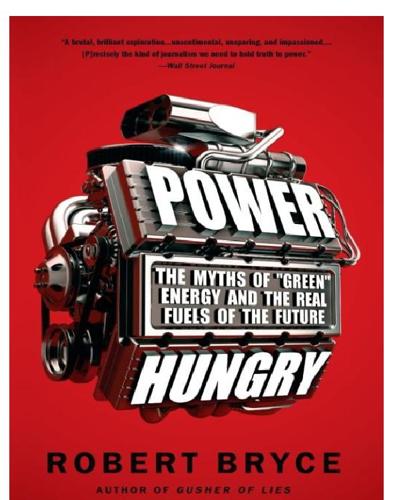
Power Hungry: The Myths of "Green" Energy and the Real Fuels of the Future
by
Robert Bryce
Published 26 Apr 2011
Conversely, the countries and territories with the lowest electricity consumption—Gaza, Chad, Burundi, Central African Republic, and Rwanda—are among the poorest.27 In 2000, Alan Pasternak of Lawrence Livermore National Laboratory did a systematic analysis of electricity use and wealth. He used the United Nations Human Development Index—which ranks countries based on measures such as life expectancy, nutrition, health, mortality, poverty, education, and access to safe water and sanitation—as his baseline ranking system. He then compared each country’s rank in the Human Development Index with its electricity consumption. Pasternak’s conclusions were unequivocal: “Neither the Human Development Index nor the Gross Domestic Product of developing countries will increase without an increase in electricity use,” he wrote.
…
Moreover, Pasternak found that providing modest amounts of electricity per capita was not enough to assure good results. He determined that per-capita electricity consumption needed to be at least 4,000 kilowatt-hours per person per year to assure that countries had a Human Development Index of 0.9 or greater. That’s an important distinction, because Pasternak found that only “14.6 percent of the sample global population enjoyed an HDI [Human Development Index score] of 0.9 or greater in 1997.” The essentiality of electricity can be demonstrated by looking at Africa. In 2007, the entire continent of Africa, a region with a population of some 955 million people, representing about 14 percent of the world’s population, used just 3 percent of the world’s electric power.
…
Energy Production: Comparing Wind and Solar with Other Energy Sources FIGURE 2 Percentage Change in CO Emissions Per Capita in the Six Most Populous Countries, 1990 to 2007 FIGURE 3 U.S. Primary Energy Consumption, by Source, 1825 to 2008 FIGURE 4 Consumption Increases for Various Energy Types, 1990 to 2007 FIGURE 5 Global Electricity Generation, by Fuel, 1973, 2006, and Projected to 2030 FIGURE 6 Electricity Consumption and the Human Development Index: A Near-Perfect Correlation FIGURE 7 Increases in U.S. Electricity Production from Solar, Wind, and Coal, 1995 to 2008 FIGURE 8 Gross Domestic Product and Oil Demand Per Capita, 2008 FIGURE 9 World Power Consumption, by Primary Energy Source, in Horsepower (and Watts) FIGURE 10 Per-Capita Power Consumption in the Six Most Populous Countries, in Watts FIGURE 11 The 2,700-Megawatt Challenge: Comparing the Power Densities of Various Fuels FIGURE 12 Resource Intensity of Electric Power Generation Capacity: Comparing Wind with Natural Gas, Nuclear, and Coal FIGURE 13 Reliable Summer Generation Capacity in Texas, by Fuel Type, 2009 and 2014 FIGURE 14 What Price Wind?

The Looting Machine: Warlords, Oligarchs, Corporations, Smugglers, and the Theft of Africa's Wealth
by
Tom Burgis
Published 24 Mar 2015
It had known years of single-party rule, but by the time it discovered oil Ghana had achieved something almost unique on the continent: it had yielded up great quantities of commodities while building a functioning, democratic state. Yet glitter as it may, Ghana’s gold has not made it rich. It is one of only ten countries in sub-Saharan Africa to have achieved ‘medium development’, according to the UN’s Human Development Index (all the rest are classed as ‘low development’, with a handful too chaotic or authoritarian for reliable data to be available).21 But Ghana’s relatively comfortable status among African countries should not mask the privation that persists; it sits between Iraq and India in the rankings. Ghana comes close to the top of the UN index that ranks countries by their success in turning GDP per head into improved living standards (scoring 22, compared with97 for Equatorial Guinea), but Ghanaians’ average income is a tenth of Lithuanians’ and one in three Ghanaians cannot read or write, the same level of illiteracy as in Congo.
…
A more revealing picture comes from a different calculation. Each year the United Nations ranks all the countries for which it can gather sufficient data (186 in 2012) by their level of human development, things like rates of infant mortality and years of schooling. It also ranks them by GDP per head. If you subtract a country’s rank on the human development index from its rank on the GDP per head index, you get an indication of the extent to which economic growth is actually bettering the lot of the average person in that country. In countries that score zero – as Congo, Rwanda, Russia and Portugal did in 2012 – living standards are roughly where you might expect them to be, given that country’s GDP per head.
…
Office of the Compliance Advisor/Ombudsman, ‘CAO Audit of Miga’s Due Diligence of the Dikulushi Copper-Silver Mining Project in The Democratic Republic of the Congo’, November 2005, www.cao-ombudsman.org/cases/document-links/documents/DikulushiDRCfinalversion02-01-06.pdf. 20. World Bank spokesperson, e-mail exchange with author, January 2014. 21. Human Development Index 2014, UN Development Programme, http://hdr.undp.org/en/content/table-1-human-development-index-and-its-components. 22. Ousman Gajigo, Emelly Mutambatsere and Guirane Ndiaye, ‘Royalty Rates in African Mining Revisited: Evidence from Gold Mining’, African Development Bank, June 2012, www.afdb.org/fileadmin/uploads/afdb/Documents/Publications/AEB%20VOL%203%20Issue%206%20avril%202012%20Bis_AEB%20VOL%203%20Issue%206%20avril%202012%20bis_01.pdf. 23.
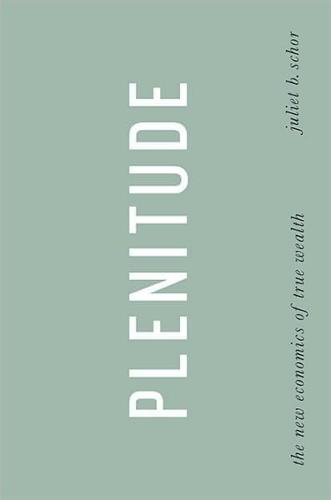
Plenitude: The New Economics of True Wealth
by
Juliet B. Schor
Published 12 May 2010
Before the crash, income inequality was worse than at any time since the end of the 1920s boom, and by some measures had even exceeded that historic peak. Even though consumption was increasing, so too were poverty, indebtedness, and lack of health insurance. Broader measures showed erosion in well-being even as spending was accelerating. The United States, which in 1990 ranked number two in the world on the Human Development Index, had plunged to number fifteen by 2006. The nonstop upscaling of lifestyles was arguably contributing to, rather than offsetting, the deterioration in quality of life. After the financial crisis hit, attention was focused on fiscal imbalances—a gaping trade deficit of $719 billion and, by 2008, nearly $14 trillion in household indebtedness.
…
It ignores changes in leisure time. If air pollution is impairing the health of a population, it counts their medical expenditures as an addition, but fails to add a corresponding negative tally for their deteriorating health status. It’s an increasingly antiquated metric, which is why alternatives, such as the Human Development Index, the World Bank’s genuine saving estimates, the genuine progress indicator, and the ecological footprint have been developed. If we do need aggregate growth, it has to be measured by something far more defensible. Measurement aside, there are two reasons aggregate growth might matter. The first is to create jobs to assimilate the unemployed and anticipate increases in population.
…
full-cost pricing furniture import statistics for prices of reuse of gardening GDP, see gross domestic product General Motors (GM) genuine progress indicator genuine saving estimates geothermal energy Germany: eco-communities in ecological footprint in historical carbon emissions of hours worked in New Work movement and productivity growth in Gershenfeld, Neil glaciers gleaning Global Ecovillage Network globalization Global North Global South Global Village Construction Set global warming, see climate change gold GoLoco Goulder, Lawrence Greece Green for All greenhouse gases agriculture and emissions of GDP and taxation of see also specific gases Greenland ice sheet green technology Green Worker Cooperatives gross domestic product (GDP) aggregate growth and consumption as percentage of global, climate change and Kuznets curve and material flow and rebound effect and relative decoupling and gross national product (GNP) growth: business size and financialization and households and income inequality and intensive versus extensive forms of job creation and limits to living standards and technology and H&M Hansen, James Happy Planet Index Harvard University Hawken, Paul Hayden, Anders Heal, Geoffrey health care single-payer (universal), plans for health insurance heat waves Holdren, John household production housing bubble in market for ecovillages and energy use in innovations in materials consumption and passive solar design and rebound effect and renovations and self-provisioning and storage and Hudson River Human Development Index human nature, adaptability of hurricanes hybrid vehicles hydrogen cell vehicles Hypercar hypoxia IBM Iceland iCommons IKEA imported goods automobiles as component of weight of income economic growth and inequality of well-being and income effect India: Auroville eco-city in ecological footprint in greenhouse gas emissions and Kuznets model and natural assets growth in population and Indonesia industrial revolution information technology insulation insurance integrated assessment models (IAMs) intensive growth Interface Intergovernmental Panel on Climate Change (IPCC) International DeGrowth Conference International Union for the Conservation of Nature Internet online community of invasive species IPAT formulation IShareStuff.com Italy: eco-communities in ecological footprint in flexible production in hours worked in Jakubowski, Marcin Japan: ecological footprint in historical carbon emissions of hours worked in well-being and Jevons, William Stanley jewelry Journal of Economic Perspectives Kahn, Herman Kahneman, Daniel Kasser, Tim Katrina, Hurricane Keynes, John Maynard Khazzoom, Daniel Klinenberg, Eric knowledge natural asset restoration and restriction of knowledge commons Krueger, Alan Krugman, Paul Kuznets, Simon Kyoto protocols labor health and hours worked trends in part-time component of stress and time wealth and value and see also unemployment; wages LaDuke, Winona land use Lappé, Anna Lappé, Frances Layard, Richard leather Lemire, Beverly Leonhardt, David Liberator 2 machine life expectancy Life Trac machine Limits to Growth, The (Meadows, et al.)
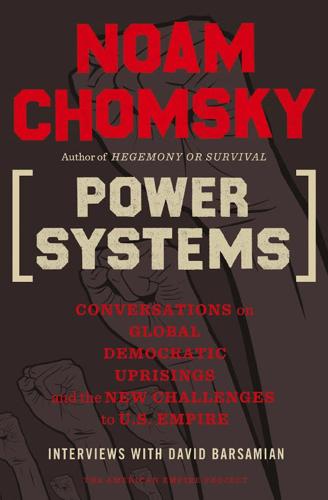
Power Systems: Conversations on Global Democratic Uprisings and the New Challenges to U.S. Empire
by
Noam Chomsky
and
David Barsamian
Published 1 Nov 2012
So, for example, the earnings of working people as a percentage of national income has by and large declined in the last couple of decades, but apparently it’s declined in China more than in most places.19 There is certainly economic growth in China and India. Hundreds of millions of people live a lot better than they did before, but then there are hundreds of millions more who don’t. In fact, it’s getting worse for them in many ways.20 The UN Human Development Index ranks India as 134th, slightly above Cambodia and Laos. And China ranks 101st.21 India is about where it was twenty years ago, before the famous reforms began. So yes, there has been growth. You go to Delhi, there is plenty of wealth. But it’s an extension of the traditional Third World system.
…
But we really don’t know what’s going on in the inner rural areas. On top of which, there are enormous ecological problems developing in China. So if you measured growth rationally—counting not just the number of products you make but the costs and benefits of making them—China’s growth rate would be much lower. And its ranking in the Human Development Index would probably also be lower, though 101st is bad enough. On your office door at MIT you have a bumper sticker featuring a quote from the two-time Medal of Honor winner Major General Smedley Butler, who was a veteran of many U.S. interventions, from China to Nicaragua. The sticker says, “War is a racket.
…
Federal Election Commission, 173–74 civil liberties, 69–73, 175 military detention and, 70–73 civil rights movement, 24, 30–31, 45, 65–66, 72, 150, 167, 176 climate change, 75, 121–25, 159 Clinton, Bill, 58, 83, 90, 170 Clinton, Hillary, 162 COINTELPRO, 73, 74, 120 collective bargaining, 40–41 Colombia, 7, 72, 145, 160, 164 colonialism, 3–5, 9, 46, 51 Communist Party, 23–24, 27, 29, 75, 118 Congress, U.S., 27, 32, 41–42, 85 Congress of Industrial Organizations, 23, 68 consensus, 74–75 Constitution, U.S., 72, 85, 174–75 consumerism, 36, 37, 80 corporations, 10, 24, 26, 27, 31–32, 38, 41, 76–77, 81, 103, 119, 152, 174 piracy issue, 107–8 Cuba, 4, 160, 161 culture, and language, 138–40 deaf-blind, 134–35 debt, 8, 87, 152, 168 student, 152 decolonization, 5, 46 democracy, 47, 54, 62, 79–81, 84–85, 109, 112, 143–44, 150, 151, 158–59, 172 Democratic Party, 32, 41–42 demonstrations, 29–33, 35, 40–43, 73–77 Arab Spring, 44–55, 60–64, 67, 112–13, 168 civil rights, 24, 30–31, 45, 65–66, 72, 150, 167, 176 Occupy, 47, 65–69, 74–77, 118–21, 146, 168, 177 student, 73–74 Depression, 23, 27, 28 deregulation, 48, 173–74 Dewey, John, 147, 148, 149 Dink, Hrant, 89, 91 dissidents, 144–45 doctrinal system, 8, 10, 36, 38, 158, 159 Dönitz, Karl, 116 Draghi, Mario, 169 drugs, 160–62 Durand Line, 99 Duvalier, Jean-Claude, 17 Economic Policy Institute, 168 economy, 4, 32, 76–78, 97, 121, 168, 171 Arab Spring, 44–55, 60–64, 67 Chinese, 7–10 financial crisis, 23, 48, 86–89, 168–69 global shift of power, 5–13, 58, 76–77 Indian, 7, 10–11, 20–23 stimulus, 33 U.S. decline, 4–10, 56, 59–60 education, 37, 82, 147–56, 165–68 battle over, 147–56 higher, 150–53, 165–68 K-to-12, 153–56 privatization of, 38–39, 156, 167–68 public, 37–39, 147–48, 153–56, 166–68 science, 154–55 Egypt, 35, 51, 53, 61, 67 Arab Spring, 44–49, 54, 60–64, 67, 168 Einstein, Albert, 143 Eisenhower, Dwight, 125 electoral politics, 102–13, 117–19 electronic books, 104 Ellsberg, Daniel, 15, 113 El Salvador, 145 Emerson, Ralph Waldo, 148, 156 Enlightenment, 116, 147, 148 environment, 12, 75, 121–25, 158–59, 163–65, 176 climate change, 75, 121–25, 159 fracking, 164–65 Erdoan, Recep Tayyip, 89, 90, 93 Europe, 5, 6, 9, 47, 51, 58, 161 economic crisis, 47, 86–89, 168–69 European Central Bank (ECB), 86–87, 169 European Union, 87, 89, 92 evolution, 128, 129, 137–38 Facebook, 145, 146 Federal Bureau of Investigation (FBI), 15, 71, 73 Federal Reserve, 86–87 financial crisis, 23, 48, 86–89, 168–69 Financial Times, 66, 76, 78, 123 Finland, 153, 154 Foreign Affairs, 59, 61 fossil fuels, 21, 22, 49–55, 122–24, 164, 165 fracking, 123, 164–65 France, 46, 50, 52, 68, 112–13, 170 Fraser, Doug, 25 Freedom of Information Act, 110 Gadhafi, Mu’ammar, 50, 53 Galileo, 143, 144 Gates, Bill, 11 Gaza, 93 General Motors, 33, 80 genetics, 126–27, 129, 140 Germany, 15, 27, 51, 58, 118, 153 economic policy, 88 Nazism, 28–29, 115–16 Weimar Republic, 25, 27–29 World War II, 115–16 GI bill, 152 Ginsberg, Benjamin, The Fall of the Faculty, 168 globalization, 5, 20–22, 170 financial crisis, 86–89, 168–69 labor, 9–12, 76–77, 169–70 shift of power, 5–13, 58, 76–77 Goldman Sachs, 42 Google, 107 government, 78–85, 150, 158 big, 81, 82 security, 107–13 “Grand Area” planning, 57 Great Britain, 5, 8–9, 16, 17, 21, 35, 50, 52, 61, 79, 107, 139, 172 colonialism, 9, 20 government, 79 slavery, 36 World War II, 115, 116 Greece, 87 Guantánamo, 72–73 Guatemala, 21 gun culture, 162–63 Gwadar, 22 Haiti, 11, 13–14, 17 Hale, Kenneth, 136, 139–41 Hanif, Mohammed, A Case of Exploding Mangoes, 106 Haq, Abdul, 16 Harvard University, Institute of Politics, 158 Havel, Václav, 145 health care, 24, 76, 82, 157 Obamacare, 124 Heilbrunn, Jacob, 111 Hindenburg, Paul von, 27–28 historical amnesia, 97–98 Hitler, Adolf, 28–29, 32, 88 Holder v. Humanitarian Law Project, 70–71 Honduras, 7, 110–11 House of Representatives, U.S., 85 Human Development Index, 13 “Human Intelligence and the Environment” (Chomsky), 42 Humanitarian Law Project, 70–71 human rights, 109, 113 violations, 89–92, 95–96, 145 Humboldt, Wilhelm von, 149 Hume, David, 79, 81 Hussein, Saddam, 17, 71, 95 imperialism, 1–33 saltwater fallacy, 3–4 terminology, 3 India, 7, 9, 10–11, 17–23, 38, 50, 51, 107, 164 Bhopal explosion, 174 British rule, 20 -China relations, 20–22 economic growth, 7, 10–11, 20–23 -Israel relations, 20, 21 natural resources, 17–20 neoliberalism and, 19–22 TAPI pipeline and, 17–18 -U.S. relations, 20–22 war, 20 indignados, 47 Indonesia, 17 intellectual culture, 79, 81, 104–6, 141 intellectual property rights, 107–8 International Energy Association (IEA), 121–22 International Monetary Fund (IMF), 47 International Organization for a Participatory Society, 171 international relations (IR) theory, 8, 63 Internet, 105–13 security, 107–13 iPhone, 145–46 Iran, 18, 60, 62, 63, 90–91, 93, 95–98, 111, 112, 114 nuclear threat, 112 TAPI pipeline and, 18 Iran-Iraq War, 97 Iraq, 16–17, 21, 60, 61 Kurds, 95–96 nationalism, 55–56 U.S. war in, 16–17, 55–56, 62–63, 114–16 Islam, 60 political, 49, 61 radical, 61, 100 Israel, 20, 21, 96, 112 -India relations, 20, 21 -Lebanon relations, 63 Palestinian conflict, 46 -Turkey relations, 92–94 -U.S. relations, 21 Jacob, François, 129 James, William, 130 Japan, 5, 8, 58, 131, 139 Jefferson, Thomas, 3, 172 job creation, 76, 87 Kagan, Elena, 70 Karachi, 22 Keller, Bill, 144 Keller, Helen, 134, 135 Kennan, George, 57 Kennedy, John F., 2–3 Vietnam policy, 2–3, 97 Khadr, Omar, 72–73 King, Martin Luther, 30–31, 66, 105 Klein, Naomi, 123, 124 Kurds, 21, 89–92, 95–96 labor, 38, 81, 87, 169 anti-labor movements, 40 Arab Spring, 44–55, 60–64, 67 Chinese, 9–10, 11–12 collective bargaining, 40–41 demonstrations and strikes, 29, 33, 35, 40–43, 68, 120, 146 Depression-era, 23, 40, 67–68 global, 9–12, 76–77, 169–70 organized, 23–25, 39–41, 67–68, 147, 171 rustbelt, 11–12 solidarity, 39–41 unemployment, 22–23, 38, 66, 76 unions, 24–26, 33, 39–41, 68, 79, 147, 171 language, 126–42 biological acquisition of, 129–36 culture and, 138–40 sensory deprivation and, 134–35 similarity of, 140–41 study of, 137–38, 142 universal grammar, 126–59 Latin America, 4–7, 22, 61, 160–62, 164 drugs, 160–62 integration of, 6–7, 47, 161 U.S. military bases in, 6–7 Laxness, Halldór, 106 Lebanon, 63 Lee, Ching Kwan, 11 Left, 23, 25, 32–33, 59, 117, 147, 149, 150, 151 student, 73–74 Left Forum, 25, 27, 33 libertarianism, 157, 158, 163 Libya, 50–54, 91 no-fly zone, 50–52 Lippmann, Walter, 81 Madison, James, 84, 85 Magna Carta, 59, 72, 116 Mandela, Nelson, 71 Manning, Bradley, 113, 114 Marcos, Ferdinand, 17 market system, 80–81 Marx, Karl, 173, 175 Massachusetts Institute of Technology, 13, 37, 105, 122, 134, 136, 149 mathematics, 137, 138 McCain, John, 103 McCarthyism, 24 McKiernan, Kevin, 95 media, 32, 66, 150, 151 mental slavery, 34–35, 101–25 Mexico, 11, 152–53, 162, 175 Middle East, 17, 44–64, 89–100, 111 Arab Spring, 44–55, 60–64, 67, 112–13, 168 oil, 21, 49–55 Turkish-Israeli relations, 92–94 uprisings, 44–64 military, 5, 98 Arab Spring, 44–55, 60–64 detention, 70–73 police, 119–20 U.S. bases in Latin America, 6–7 Mobutu Sese Seko, 17 Mondragon, 171 Montgomery, David, The Fall of the House of Labor, 23 Morgenthau, Hans, 63–64 The Purpose of American Politics, 64 Morocco, 46 Mubarak, Hosni, 45, 47, 62 Nader, Ralph, 150 NAFTA, 163, 175 Nasser, Gamal Abdel, 61 National Defense Authorization Act, 70 Native Americans, 22 natural gas, 17–18, 164–65 natural resources, 17–22, 164–65 Navy, U.S., 6–7, 14, 52, 116 Nazism, 28–29, 115–16 New Deal, 23, 82 New York, 67, 100, 166 New York Times, 60, 81, 89–91, 124, 144–45, 160 Ngo Dinh Diem, 2, 3 Ngo Dinh Nhu, 2, 3 Nicaragua, 7 9/11 attacks, 14, 15–16, 139 Nixon, Richard, 125, 150 No Child Left Behind, 153 Non-Proliferation Treaty, 18 North Africa, 46–48, 57, 60 North Atlantic Treaty Organization (NATO), 50, 51, 91, 92 Norway, 115 nuclear weapons, 97, 98, 100, 110, 112, 176 Nuremberg Trials, 115–16 Nystrom, Paul, 36 Obama, Barack, 7, 33, 63, 90–91, 93, 110, 111, 114, 153, 162, 164 Afghanistan War and, 14–15 civil liberties and, 70–73 Libya and, 51–52 organized labor and, 41–42 2008 election, 102–3 Obamacare, 124 Occupy movements, 47, 65–69, 74–77, 118–21, 146, 168, 177 oil, 21, 22, 49–55, 124 Orwell, George, 19, 97 Pakistan, 16, 17, 22, 61, 98–100, 110 drone attacks on, 18–19, 98–99 nuclear industry, 98–100, 110 TAPI pipeline and, 18 Palestine, 46, 72 -Israel conflict, 46 Palmer raids, 68 Pamuk, Orhan, 91 Panama, 7 Panetta, Leon, 114 Pashtuns, 99 Patterson, Anne W., 99, 110 Paul, Rand, 157, 162, 163 Paul, Ron, 75, 124–25, 157, 163 pensions, 12, 22, 24, 26 Peres, Shimon, 93 Peshawar, 16 pharmaceutical companies, 107–8 Philippines, 4, 17 Pinochet, Augusto, 61 piracy, 107–8 political Islam, 49, 61 Political Science Quarterly, 82 police repression, 119–20 politics, 32, 41, 57, 59, 121, 142–45, 171 electoral, 102–3, 117–19 labor demonstrations and, 41–43 poverty, 6, 66, 82, 84 Powell, Colin, 115 Powell, Lewis, 150–51 Powell memorandum, 150–51 power systems, 34–35, 69 aristocrats and democrats, 160–78 chains of submission and subservience, 34–43 global shift, 5–13, 58, 76–77 language and education, 126–59 mental slavery, 101–25 new American imperialism, 1–33 uprisings, 44–64 privatization, 11, 38, 39, 40, 156–57, 167 Progressive Labor (PL), 73 propaganda system, 35–40, 66, 80, 82, 102, 119, 122–24 property rights, 84, 85 public, power of the, 78–81 public education, 37–39, 147–48, 153–56, 166–68 public relations, 35, 79–81, 102–3 Qasim, Abd al-Karim, 61 Race to the Top, 153 racism, 3, 31, 92 Ravitch, Diane, 154 Reagan, Ronald, 62, 71, 82, 95, 99 recession, 23, 48, 86–89 Red Scare, 23, 68, 120 Reich, Robert, 170, 172 Reilly, John, 122 Republican Party, 41, 57, 75, 76, 124, 125 Revolutionary Armed Forces of Colombia (FARC), 72 Ribbentrop, Joachim von, 115 Right, 23, 32, 150–51 Riyadh, 52 Romney, Mitt, 57–58, 75 Roosevelt, Franklin D., 14, 23, 54 Roy, Arundhati, 22, 29, 31 Russia, 17–18, 20, 50, 61, 98, 102, 145 rustbelt, 11–12 Saharawi movement, 46 saltwater fallacy, 3–4 Saudi Arabia, 21, 49, 52, 61, 99, 111, 144 science, 142–43, 144 education, 154–55 modern, 143 sectarianism, 73–74 Seib, Gerald, 54 self-destruction, 42–43 Senate, U.S., 63, 85 sensory deprivation, 134–35 Shiites, 52–53 Singh, Manmohan, 19 Sino-Indian War, 20 slavery, 3, 34, 36, 51 end of, 34, 35, 36 mental, 34–35, 101–25 Slim, Carlos, 11 Smith, Adam, 8–9 social Darwinism, 157 social media, 105, 107, 145–47 Social Security, 39, 156–57 solidarity, 38–41, 146–47, 159 South Africa, 21, 50–51 apartheid, 71 South America, 6, 7, 57, 60, 161 Southeast Asia, 4, 60 South Korea, 9, 17 Spain, 4, 6, 33, 87 sports, college, 154–55 Stack, Joseph, 25–26, 29 Stalin, Joseph, 61 Stohl, Bev, 105 Stop Online Piracy Act, 107 strategic hamlets, 2 student activism, 73–74 submission and subservience, chains of, 34–43 Summit of the Americas (2012), 160–61 sunbelt, 11, 12 Sunnis, 52–53 Supreme Court, U.S., 70, 150 Buckley v.
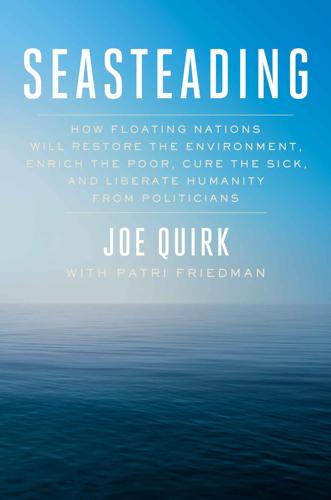
Seasteading: How Floating Nations Will Restore the Environment, Enrich the Poor, Cure the Sick, and Liberate Humanity From Politicians
by
Joe Quirk
and
Patri Friedman
Published 21 Mar 2017
Today the remote African island is considered one of the developing world’s most successful democracies. Rank among sub-Saharan African nations in the Rule of Law Index from the World Bank’s World Governance Indicators? Number one. Rank in the Index of African Governance? Number one. Rank in the United Nations’s Human Development Index among African nations? Number one. As of 2011, 87 percent of Mauritians owned their own homes. Beat that, America. Is it just a coincidence that the highest-performing African nation is an island nation? After Mauritius, the next two African nations with the highest governance rankings are also small island nations: the Seychelles and Cape Verde.
…
Hundreds of wars have been fought to gain access to the liquid nourishment of nations. Economist Paul Collier, in his book The Bottom Billion: Why the Poorest Countries Are Failing and What Can Be Done About It, argues that most of the poorest billion reside in landlocked countries. As measured by the United Nations Human Development Index (HDI), not a single landlocked country outside Europe is successful, and nine of the twelve countries with the lowest HDI scores are landlocked. Whether we are talking about goods, people, or information, wealth emerges from fluidity and flow. Patri’s dad, economist, physicist, and legal scholar David Friedman, tossed out a famously whimsical proposal on the benefits of mobility: Consider our world as it would be if the cost of moving from one country to another were zero.
…
In 2011 Taiwan real GDP per capita was almost four times the Mainland real GDP per capita.” Today it boasts GDP per capita levels similar to Germany: D. Runde, “Taiwan Is a Model of Freedom and Prosperity,” Forbes, May 26, 2015, www.forbes.com/sites/danielrunde/2015/05/26/taiwan-development-model-freedom-prosperity/#1ed03d0351ab. “Today, Taiwan has a human development index score that is comparable to France’s and GDP per capita levels similar to Germany.” “What is unprecedented is not poverty”: Big Think Interview with John Mackey, accessed February 26, 2016, http://bigthink.com/videos/big-think-interview-with-john-mackey. “dedicated to liberating the entrepreneurial spirit for good.”
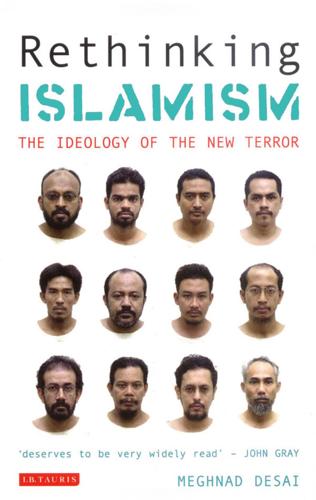
Rethinking Islamism: The Ideology of the New Terror
by
Meghnad Desai
Published 25 Apr 2008
The countries in Arabia are in a middle-income rather than low-income range by international standards, richer than Africa andSouthAsia,ifnotSoutheastAsiaaswell.TheUnitedNations DevelopmentProgramme(UNDP)haspublishedaHumanDevelopmentReportsince.ItpublishesaHumanDevelopmentIndex (HDI)whichsummarisesthreemeasuresofwell-being–longevity, literacyandaccesstoresourcesasmeasuredbyincomepercapita(in purchasingpowerparityunitstomakeinternationalcomparisons easier).Foreachofthethreedimensionsmeasuresarecalibratedto liebetweenand,withonerepresentingthehighestachievable level.
…
andabove),Mediumhumandevelopment (.to.)andLowhumandevelopment(below.). Arab countries do not do badly in terms of HDI. In the High category are Bahrain (), Kuwait (), Qatar (), UAE (); thefigureinparenthesesindicatestheirrankintermsofHuman DevelopmentIndexamongcountries.IntheMiddlecategory are Libya (), Oman (), Saudi Arabia (), Lebanon (), Jordan(),Tunisia(),Iran(),OccupiedPalestineTerritories(),Syria(),Algeria(),Egypt(),Morocco(). OnlyYemen()isinthelowcategory.
…
DrIan Pakistan andAfghanistan andBangladesh,– education establishment– andKashmir,– PartitionfromIndia–, politicalsystem Palestine BinLadenon,–,, –,– democraticelections(), dismembermentbyIsraeland Jordan firstnominationassiteforJewish homeland– Hamas,,, Israel–Palestineissue– Jewishnationalistmovementin refugees PalestineLiberationOrganisation (PLO), Pan-AfricanMovement ThePassion(film) PeaceCorps People’sWillseeNarodnayaVolya Peres,Shimon Picasso,Pablo Picot,Georges PLOseePalestineLiberation Organisation PolPot Popper,Karl Portugal PragueSpring() Princip,Gavrilo, Proudhon,Pierre-Joseph, Puritanism, Qana–, Qur’an needforfurtherstudy needforpoetictranslation placeinMuslimeducation statusamongMuslims–, Rabin,Yitzak racism,andimmigration Rasmussen,AndersFogh– Reagan,Ronald RedArmy(anarchistgroup) RedBrigades religion growthofWesterntolerance –,– andideology– andpolitics andwar– seealsoBuddhism;Christianity; Islam ‘RoadMap’ Robeson,Paul Rooker,Lord Rose,Flemming Rushdie,Salman– Russia seconomy anarchismin andChechnya,, seealsoSovietUnion RussianRevolution()– Rwanda Sadat,Anwar SaddamHussein, Sartre,Jean-Paul SaudiArabia andBinLaden–,– sitingofUStroopsin,– andWahhabism–,– Savonarola,Girolamo SecondWorldWar(–)–, Sen,Amartya, /,eventsof– Sharon,Ariel,, Shi’a inIraq originsandbeliefs,, Shihan(weekly) Shlaim,Avi, Siddhartha SidiqueKhan,Mohammad–, Sikhs, Silone,Ignazio SinnFein Smith,Adam–,,– SocialistInternational Somalia, SouthAfrica, SouthKorea, SovietUnion andAfghanistan–,, – underCommunism– effectsofcollapse– establishmentandcollapse– Muslimrepublicswithin–, – Stalin’sregime,,–, seealsoRussia Spain,, Spender,Stephen SriLanka Stalin,Josef,,–, SternGang Strauss,DavidFriedrich– Suezcrisis() Sunnis inIraq Shi’asplitfrom, Sykes,SirMark Sykes–PicotAgreement(), syndicalism Syria,, Taiwan Taliban taliban:originofword TamilTigers Tanwir,Shehzad– terrorism andanarchism– anti-capitalist–,– andCommunism– andIslam,– modernprevalence andnationalism,– natureofmodern– stateterrorism Thailand Thatcher,Margaret, Thoreau,HenryDavid Tito,Marshal, Puritancontribution reasonsforMuslimhostility– religioustolerance VietnamWar(–),, waragainstterror–, Usman,Caliph usury VietnamWar(–),, Turkey,, Ummayadcaliphate Umar,Caliph– umma,natureof,– UnitedNations BinLadenon– HumanDevelopmentIndex andinvasionofIraq() andIsrael–Palestineissue, ,, politicalinequality andRwanda andUSA, USA andAfghanistan– anarchismin– andanti-capitalistterrorism– anti-warmovement BinLadenon,–,–, –, BinLaden’slinkswith civilrightsmovement, andCommunism functionforGlobalIslamism andglobalisation– andIsrael–Palestineissue Jewsin andNorthernIreland–, – Wahhabism–,–, waragainstterror–, Warren,JusticeEarl Weathermen DieWelt(newspaper) WestBank, women,treatmentof,,– WorldBank WorldTradeCenter firstbombing() TwinTowersattack()see / WorldWarIseeFirstWorldWar WorldWarIIseeSecondWorldWar WyeRiverAgreement() YomKippurWar() Yousef,Ramzi Yugoslavia,,, Zapatistas Zawahiri,Aymanal-, Ziaul-Haq, Zimbabwe Zionism modernnature originsanddevelopment–, – seealsoIsrael;Jews REVELATION

Grand Transitions: How the Modern World Was Made
by
Vaclav Smil
Published 2 Mar 2021
Only 11 years left to prevent irreversible damage from climate change, speakers warn during General Assembly high-level meeting. https://www.un.org/press/en/2019/ga12131.doc.htm UN. 2019c. The 2019 Revision of World Population Prospects. New York: UN. https://population.un.org/wpp/ UNDP (United Nations Development Programme). 2018. Human Development Index (HDI). http://hdr.undp.org/en/content/human-development-index-hdi Unger, R. 1984. Energy sources for the Dutch Golden Age. Research in Economic History 9:221–253. Unger, T.A. 1996. Pesticide Synthesis Handbook. Park Ridge, NJ: Noyes Publications. UNHCR (United Nations High Commission for Refugees). 2019. Global Trends: Forced Displacement in 2018.
…
TFP was the leading factor in the United States until 1973 but then it was surpassed by capital, and it dominated the post-1950 growth in Germany until the century’s end. But even as growth of mature economies had slowed down after 1973 and as TPF contributions had weakened, important gains in an average standard of living continued with Japan making the greatest strides by matching, and surpassing, the average Western level as measured by the Human Development Index. Several Asian economies had copied the Japanese experience by concentrating on specific manufacturing sectors in order to achieve temporarily rapid rates of growth. Taiwan had focused first on inexpensive consumer goods but had rapidly moved into higher value-added electronics. South Korea followed Japan with its development of large-scale ship building and car making and with its concentration on electrical and electronic products made by its industrial conglomerates (Samsung, Hyundai, LG).
…
Economies and the environment This may be an apposite place to stress that in order to make better decisions we need better measures of economic activity as well as of energy use, the key driver of prosperity. The quest for a better economic indicator has some prominent advocates (Stiglitz et al. 2010) and the Human Development Index (HDI) has been the first widely used alternative (UNDP 2018). HDI is a composite that aggregates national scores for three dimensions (a long and healthy life, being knowledgeable, having a decent standard of living) but it is not concerned with inequality, poverty, and human security. The World Economic Forum now publishes its Inclusive Development Index (IDI), which measures how countries perform on 11 dimensions of economic progress in addition to their GDPs (WEF 2018).
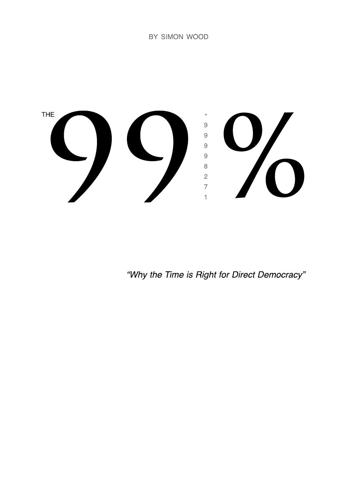
The 99.998271%
by
Simon Wood
Published 23 Apr 2012
The Democracy Index is a measure of how democratic a society is based on five categories: civil liberties, political participation, electoral process, functioning of government and political culture. The 2010 Democracy Index rankings: • Norway • Iceland • Denmark • Sweden • New Zealand • Australia • Finland • Switzerland • Canada • Netherlands The Human Development Index is a statistic used to rank countries in order with comparative measures of literacy, life expectancy, and standards of living and education. 58 The 2010 Human Development Index rankings: • Norway • Australia • New Zealand • United States • Ireland • Liechtenstein • Netherlands • Canada • Sweden • Germany As can be seen from this simple comparison, there are six repeat names in the top ten lists, suggesting a significant correlation between transparent and functioning democracy and general high standard of living and development.
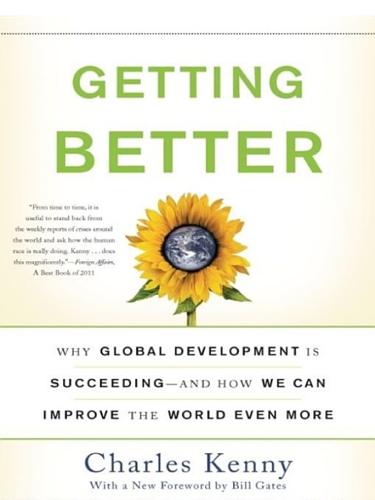
Getting Better: Why Global Development Is Succeeding--And How We Can Improve the World Even More
by
Charles Kenny
Published 31 Jan 2011
Because of the limited needs of mankind, he felt that the primary purpose of the pursuit of riches in wealthier countries is “regard to the sentiment of mankind . . . to be observed, to be attended to, to be taken notice of.”1 Smith was writing in the late eighteenth century, when GDP per capita in the United Kingdom was somewhere below $1,700. More recently, Nobel winner Amartya Sen has elaborated on the idea of capabilities as better measures of quality of life than mere income. His ideas informed the United Nations Development Program’s Human Development Index, an attempt to come up with one number that captures a multidimensional view of development progress incorporating health and education. INCOME MATTERS TO QUALITY OF LIFE Still, income does matter to the broader quality of life. Rich people can buy more stuff—that is what it is to be rich.
…
UK Mayan civilization modern Eastern European Netherlands public health expenditures in United Kingdom, 1650 to nineteenth century urbanization Western and African countries since World War II See also Expeditions; Global colonization; Malthusian trap HIV/AIDs Holmes, Oliver Wendall Hornemann, Friedrich Houghton, Daniel Human Development Index Human rights aid promoting demanding global changes in governmental trends toward greater democracy improvements in Polity scores improving protection of liberties income growth and India’s ban of caste discrimination International Covenant on Civil and Political Rights peacetime protection of policies for supporting global progress in UN’s Declaration of Human Rights women’s suffrage See also Suffrage Humility Improving State of the World, The (Goklany) In Defense of Global Capitalism (Norberg) Income.
…
See Conditional cash transfers Suffrage historical increases in European literacy rates and rights of women Summers, Larry Sustainability mistakes in population policies for neo-Malthusianism and unsustainable economic growth supporting efforts for global technology-focused development assistance for Technology barriers to adapting central to GDP growth cost of switching to new defining donor-supported development of downside of encouraging sustainable focusing research on global needs food production government support of health care as innovation limits to effectiveness link between long-term growth and lowering cost of quality of life prizes for innovative quality of life and spread of sticky supporting global innovation banks Television changing attitudes toward girls’ education impact of global access to influencing global cosmopolitanism literacy improvements with participation in social activities and promoting health education goals with Terrorism Theory of Economic Growth, The (Lewis) Theory of Moral Sentiments (Smith) Third World comparing GDP of development failures in divergence in income growth East Asian convergence in income gaps in reduction of infant mortality per capita income in Senegal and United States United Nations’ Millennium Development Goals for See also specific country or continent Tocqueville, Alexis de Tolstoy, Leo Toyota Trade, restricting weapons United Kingdom comparing India with Department for International Development incentives GDP in eighteenth century historic patterns and quality of life life expectancy rates in literacy rates in United Nations Declaration of Human Rights Development Program Expanded Program on Immunization goals for income growth Human Development Index International Covenant on Civil and Political Rights Millennium Development Goals Primer for Development United States granting aid for global stability quality of life in colonies supporting Marshall Plan Universal Declaration of Human Rights Urbanization Vaccinations donor-supported vaccine development financial incentives for global use of governmental policies on improving delivery of mass media campaigns motivating smallpox Vietnam infant mortality rates in life expectancy in public health expenditures in spread of technology to Violence against women economic effect on effect on other quality of life trends empathy lowering growing unacceptability of income growth correlated with lower rates of wealth and personal security Virtuous cycle convergence of trends in governmental improvements part of limits to progress Voices of the Poor Voting rights.
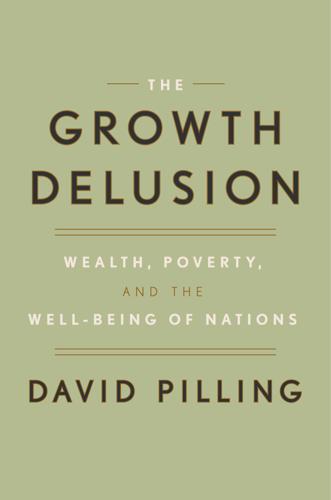
The Growth Delusion: Wealth, Poverty, and the Well-Being of Nations
by
David Pilling
Published 30 Jan 2018
Scandinavian countries, for example, regularly come in at the top of the Human Development Index. That, says one critic, is “because the HDI is basically a measure of how Scandinavian your country is.” In the search for a replacement for—or useful addition to—GDP, it is important to acknowledge this basic problem with composite indexes. The man who came up with the Scandinavian put-down is Bryan Caplan, a professor of economics at George Mason University in Virginia. He was having a go not at the twenty-six-component GPI, but at the far simpler three-component Human Development Index. The HDI was one of the first serious attempts to invent an alternative to GDP.
…
Bhutan’s 2015 Gross National Happiness Index, Centre for Bhutan Studies and GNH Research, November 2015: www.bhutanstudies.org.bt. CHAPTER 13: GDP 2.0 1. Tobin became most famous for his proposed tax on foreign exchange transactions to reduce risky and what he considered useless speculation. 2. “Against the Human Development Index”: econlog.econlib.org. 3. Minus net investment is when the value of new investments is less than the value of depreciation. 4. Interview with author, February 2017. 5. From a conversation with Steve Landefeld, February 2017. 6. “Canadian Index of Wellbeing, Executive Summary,” 2016: uwaterloo.ca.
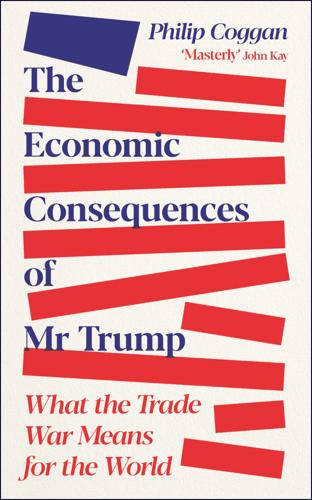
The Economic Consequences of Mr Trump: What the Trade War Means for the World
by
Philip Coggan
Published 1 Jul 2025
In France, where labour rights are very strong, manufacturing jobs are 11 per cent of total employment;21 in the US, just 8 per cent. The UN produces a human development index which combines measures of national income, longevity and years spent in education. Although the US is often described as the richest nation in the world, it is not top of this table, but equal seventeenth (with Liechtenstein and New Zealand).22 Many European nations are ahead of the US on the human development index, as are Australia, Canada, Hong Kong, Singapore and the United Arab Emirates. Strikingly, US life expectancy is four years below that of both Sweden and Singapore.
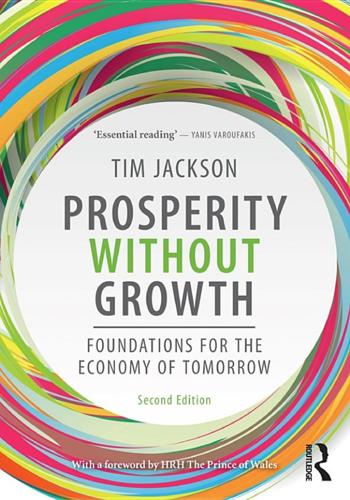
Prosperity Without Growth: Foundations for the Economy of Tomorrow
by
Tim Jackson
Published 8 Dec 2016
If anything, the contrast between poor nations and rich nations is even more striking than it was for life satisfaction, with a steeper slope for poor countries and a flatter slope past the turning point for the rich countries.18 Figure 4.1 Life expectancy at birth and income per capita Source: Data from Human Development Index (see note 17) Statistical correlations hide considerable cultural differences, however. A closer inspection of the data reveals some real surprises. There is a kind of health ‘sweet spot’ on the upper left of the curve where high life expectancy is achieved at relatively low incomes. Life expectancy in Cuba, Costa Rica and Chile, for instance, is higher than life expectancy in the USA.
…
One of the Millennium Development Goals (MDG) agreed in the year 2000 was to reduce under-5 mortality by two-thirds before 2015. Some remarkable progress was made. But the goal was missed by quite a wide margin, largely because of the high child mortality rates in the poorest regions.19 Figure 4.2 Under-5 mortality rate and income per capita Source: Data from Human Development Index (see note 20) Figure 4.2 tells a story of absolute health disaster in the poorest countries of the world. Particularly striking is the extremely steep decline in child mortality as per capita income rises from less than $1,000 to around $15,000, and the near flat trend in mortality rates for incomes between $15,000 and $84,000 per capita.20 The human story played out behind these statistics is shocking.
…
Interestingly, it’s the East European nations which seem to occupy the educational ‘sweet spot’ on the upper left of the curve. Estonia, with an average income of just $15,000, scores higher on the index than Japan, Ireland or Norway, countries with income levels four and five times higher. Figure 4.3 Mean years of schooling and income per capita Source: Data on schooling from the Human Development Index (see note 21) Understanding the complex relationships between income and human flourishing is a particularly important area for study. And much more exploration of these relationships is warranted. But nothing we have seen so far rules out the possibility that richer economies could achieve prosperity without growth.
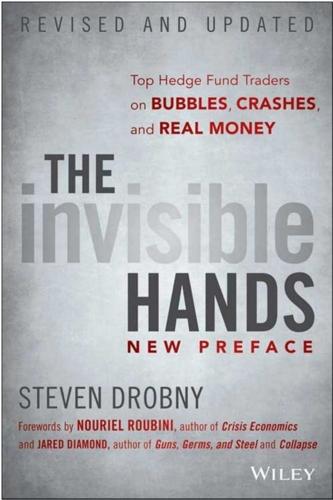
The Invisible Hands: Top Hedge Fund Traders on Bubbles, Crashes, and Real Money
by
Steven Drobny
Published 18 Mar 2010
In summary, I would focus my exposure on liquid, real assets in countries that will likely emerge into being transparently or professionally regulated. My starting point would be countries that are or very soon will be signatories to IMF Article VIII, score highly on both the Human Development Index (HDI; see box on page 196) and Transparency International’s Corruption Perceptions Index (CPI; see box on page 196), have high potential growth, and sound social policies. Human Development Index (HDI) The United Nations Human Development Index (HDI) is a statistical measure that gauges a country’s level of human development in three principal areas: (1) life expectancy at birth; (2) knowledge and education, as measured by the adult literacy rating and enrollments at various levels of formal education; and (3) standard of living, measured principally by GDP per capita at purchasing power parity (PPP).
…
See also Hyper-Great Macro Experiment explanation (Drobny) success Great Moderation Bernanke opinion Greenspan, Alan actions blame Conundrum speech Gunslinger fund manager Hang Seng, shorting Harvard University, endowments annual long-term performance assets, decline equity returns, contrast portfolio (2010) problems Headline inflation, core inflation (contrast) Hedge funds assets, growth business, Equity Trader outlook downside protection managers cash, availability prop trader, contrast transportation money allocation lending loss management, Commodity Trader perspective one-dimensional managers Plasticine Macro Trader complaint playing problems (2008) prop desk, contrast real money, differentiation redemptions running, worries space, Professor perspective stocks, contrast usage, Plasticine Macro Trader perspective Hedges, purchase Hendry, Hugh HFRI Macro Index Historical asset class, indicator Historical correlations, usage Historical events, examination Hoover, Herbert House, The business entry Human bias, impact Human Development Index (HDI) Hyper-Great Macro Experiment Hyperinflation impact risk scenario worry Hypothecation Hypotheses falsification, absence running Hypothesis testing, preference Ideas source trading Illiquid assets allocation avoidance inexpensiveness overinvestment Illiquid investments Illiquidity appearance cost, calculation increase needs, consideration premium, Pensioner measurement process risk premium, exposure Illiquidity assets risk value Illiquidity risk hedge process location mitigation recognition Illiquid positions, ownership Illiquid private deals, impact Illiquid strategies, investor engagement Incentive structures, change (process) India FDI GDP investment change Industrial production (IP) Inflation approach Commodity Trader perspective control deflation, contrast feeding, absence fiscal stimulus, impact hedge active commodity manager, impact impact increase persistence presence pressure psychological element quantitative easing, impact risk, increase risk premium volatility, reduction Inflation (1980-2000) Inflation-linked bonds Inflation-linked investment Inflation protected government bonds, purchase Inflection points, awareness Information arbitrage definition filtration flow, absence inundation Inside the House of Money (Drobny) Institutional investors impact leverage, usage (preclusion) money, loss outside advisors, usage Institutional money management, change Institutional real money mandates, Plasticine Macro Trader advice Insurance protection Intellectual property, anchor Intercontinental Exchange (ICE) Interest rates (1980-2000) increase trades weakness zero level International diversification, importance Investment account, volatility flow alternatives approach, defense committees, challenge human bias, impact hypotheses/positions, running losses rear view mirror process vehicles, usage Investment grade bonds (IG8) Investment Management Association (IMA) Investors base, impact complacency decisions, manager track record basis losses mistakes purchases, crisis risk management IOU papers/obligations Japan bullishness (Plasticine Macro Trader) economic malaise inflation-protected bonds inflation scenario performance (1990) rolling 10-year inflation stagnation Jobs, saving/creation (Obama phrase) Jones, Paul Tudor (success) JPMorgan Chase (2009) Keynes, John Maynard commodity belief Knowledge gap, reduction Latam-type bond defaults Latam-type financial crisis Latin America, performance Lehman Brothers government bond leverage change saving Leitner, Jim analysis, awareness interview lessons Leitner Center for International Law and Justice Leverage cash, relationship contrast efficient frontier, relationship function impact presence reduction usage Pensioner prediction Limited partnerships, leverage Liquidity crisis crisis (2008), leverage impact excess focus importance management, problem measurement process overvaluation perspective Predator definition premium provider risk excess scarcity valuation quantitative models, usage value example lesson Liquid markets mentality Livermore, Jesse London Interbank Offered Rate (LIBOR) basis, problem futures, ownership increase (2007) LIBOR-OIS basis (2008) three-month LIBOR Long-dated out-of-the-money equity index call options, purchase Longer-dated nominal bonds Long-only investments Long-term bonds, usage Long-Term Capital Management (LTCM) crisis problem Long-term fair value, departure Long-term fixed income assets Long-term historical correlations impact usage Long-term historical returns, usage Long-term horizon, irresponsibility Long-term inflation hedging investor nervousness Long-term money Long-term time horizon, advantage M2 (money supply measurements) Macroeconomics environment, creation imbalances pricing Macro factors examination risk Macro fund, running Macro hedge fund community Macro principles Macro risk management Macro scenario, preparation Macro traders, profits Macro trading Major Market Indices (2007) Managers, investor base (impact) Margin-to-equity, limits Markets Bond Trader viewpoint change conditions, improvement environment, identification functioning, understanding fundamentals/psychology, impact outguessing positioning, importance psychological game psychology, understanding zero-sum game Markets to fundamentals Marshall Plan Maximum Sharpe Ratio (MSR) portfolio construction goal Medium-term bonds, usage Medium-term theme projects Merrill Lynch saving (Thundering Herd) Microeconomic imbalances Mines, Commodity Investor purchase Minsky moment Misery index, peak Mishkin, Frederic S.

The Second Machine Age: Work, Progress, and Prosperity in a Time of Brilliant Technologies
by
Erik Brynjolfsson
and
Andrew McAfee
Published 20 Jan 2014
But changes in society and the economy may have heightened the problems, at the same time that advances in economics and statistical techniques may have provided opportunities to improve our metrics.28 The new metrics will differ both in conception and execution. We can build on some of the existing surveys and techniques researchers have been using. For instance, the human development index uses health and education statistics to fill in some of the gaps in official GDP statistics29; the multidimensional poverty index uses ten different indicators—such as nutrition, sanitation, and access to water—to assess well-being in developing countries.30 Childhood death rates and other health indicators are recorded in periodic household surveys like the Demographic and Health Surveys.31 There are several promising projects in this area.
…
As quoted in “GDP: One of the Great Inventions of the 20th Century,” January 2000 Survey of Current Business, http://www.bea.gov/scb/account_articles/general/0100od/maintext.htm. 28. Joseph E. Stiglitz, “GDP Fetishism,” Project Syndicate, http://www.project-syndicate.org/commentary/gdp-fetishism (accessed July 23, 2013). 29. “Human Development Index (HDI),” Human Development Reports, 2012, http://hdr.undp.org/en/statistics/hdi/ (accessed July 23, 2013). 30. “Policy—A Multidimensional Approach,” Oxford Poverty & Human Development Initiative, 2013, http://www.ophi.org.uk/policy/multidimensional-poverty-index/. 31. “DHS Overview,” Measure DHS: Demographic and Health Surveys, 2013, http://www.measuredhs.com/What-We-Do/Survey-Types/DHS.cfm (accessed September 11, 2013). 32.
…
.: GPS satellites maintained by see also economic growth, government role in GPS Graetz, Michael graphics, digital graphs, logarithmic Great Depression Great Recession Great Stagnation, The (Cowen) Greenspan, Alan Greenstein, Shane Greenwood, Jeremy Gregersen, Hal Grimbergen gross domestic product (GDP): alternative metrics to effect of Great Recession on increases in omissions from U.S. growth in see also economic growth; productivity Guo, Terry Hall, David Haltiwanger, John Hanson, Gordon Hanushek, Eric Hayek, Friedrich health, human: improvements in measurements of Health Affairs health care coverage hearing, computer-aided Heim, Bradley Hemingway, Ernest Hendren, Nathaniel Hendy, Barry Hewlett Foundation HireArt Hitchhiker’s Guide to the Galaxy, The (Adams) Hitt, Lorin Holmstrom, Bengt Homo sapiens Honda Hoover, Herbert housing, online data on How College Affects Students (Pascarella and Terenzini) HTML Hu, Jeffrey Hubbard, Elbert Huberman, Bernardo Hulu human development index humanity, social development of Hyatt, Henry IBM iChat IDC ideation, see creativity immigration income: average basic negative taxes on normal distributions in see also wages Industrial Revolution negative consequences of see also Second Industrial Revolution inequality: consequences of education and political see also spread inflation indexes information, control of information and communication technology (ICT) see also global digital network Information Rules (Shapiro and Varian) information technology (IT): demand elasticity in intangible assets associated with productivity correlated with infrastructure technological Innocentive innovation benefits of complementary economic measurement of effect of digitization on entrepreneurship’s role in government support of impact of spread on open; see also crowdsourcing organizational population growth and prizes for productivity linked to recombinant slowing down of unstable competitive effects of see also creativity Instagram Intel intellectual property International Conference on Computer Science and Software Engineering Internet collective projects on comparison sites on consumer surplus created by creation of education on housing data on retailing on sharing economy on time accounting for traffic on user costs of user-generated content on; see also social media see also global digital network; World Wide Web Intuit iOS iPad iPhone iRobot Israel iTunes Jaimovich, Nir Japan, productivity improvement in Jaspers, Karl Jelinek, Frederick Jennings, Ken Jensen, Robert Jeopardy!
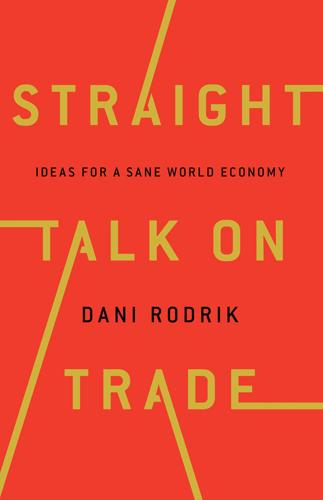
Straight Talk on Trade: Ideas for a Sane World Economy
by
Dani Rodrik
Published 8 Oct 2017
See GMOs geography: effect on trade, 38–40 Germany: Berlin Wall, 131; economic reform in, 185–186; eurozone fiscal rules in, 75; populist parties in, 7; structural reform in, 62 Gerschenkron, Alexander, 35, 111 Ghana, 237, 243 Gilens, Martin, 170–171 “global commons,” 14 global economy, 222–238; conflicts with, 235–236; developing countries and, 247–250; future growth policies, 239–266; “global citizenship,” 238; global consciousness and, 236–238; “green growth” and, 257–260; growth in the developed world, 253–256; managing interface of, 225; mercantilism and, 235–236; nation-state and, 25; principles of governance, 222–227; prosperity and, 223–224; public investment in, 250–253; reforms for, 270–271; rights and privileges of democracy, 225–226; systems of governance, 222 global governance, 29–30; achievement of, 218–221; capital and, 213–218; cooperation with, 207; models of, 226; policies for, 206–210; trade policies for, 207–208 globalization, ix; advocates of, 224, 232; balance of, 13–14; benefits of, 3–4; compensation and, 203–206; discipline with, 220, 226–227; domestic politics and, 72; financial, 214; “global commons,” 220; immigration and, 268; leadership and, 219; maximum, 225; nation-state and, 24–27; “New Deal” for, 205; proponents of, 2; in the United States, 204–205 Glorious Revolution, 99 GMOs (genetically modified food and seeds), 35, 208, 220 Goldman Sachs, 247 gold standard, 271; end of, 213; free trade and, 6; in Great Britain, 48–50, 70; as parallel to the eurozone, 48 Gordon, Robert, 153 governance: global, 16, 29–30; of nation-states, 223; principles of global economic governance, 222–227; private, 30; systems of, 222 government: failure to address inequality, 209; financial crises and, 178; model of incentives for, 198; relationship to business, 254; structural reform and, 59; support for green industries, 257 Great Britain: economic reform in, 185; exit from the European Union, 7, 12, 76, 141, 204, 223, 267; Glorious Revolution, 99; gold standard in, 48–50, 70 Greece, 269; competition in, 42–43; democracy in, 69; economic policies in, 5; effect of austerity in, 69; gross domestic product in, 54; growth economy in, 57–60; impediments to financial recovery, 59; politics in, 5; structural reform in, 51–52, 53–54, 58–59; Syriza, 269; 2015 referendum in, 68; value of export promotion, 60 Groningen Growth and Development Center, 244 gross domestic product (GDP): in Greece, 54 Group of 20, 30, 219, 249; nation-state and, 23–24 growth acceleration: in China, 57; definition of, 55; in India, 56–57; in Mauritius, 57; from 1957 to 1992, 55–56 Gulen, Fethullah, 105 Gypsies, 100 Haber, Stephen, 175 Hamon, Benoit, 73 Hanson, Gordon, 125 Hausmann, Ricardo, 157 HDI (Human Development Index), 107 Hitler, Adolf, 156 Home Depot, 177 Human Development Index (HDI), 107 Hungary: democracy in, 5; illiberal democracy in, 98, 172 Huntington, Samuel, 109 hyperglobalization: balance of, 13–14; history of, 28; institutional functions, 27–28; launch of, 11; nation-state and, 27–29 “hyperglobalization”: in Europe, 4–8; in Turkey, 5 ideas.
…
In 2010, just prior to the Arab Spring, the United Nations published its twentieth-anniversary Human Development Report (HDI). Perhaps the biggest surprise in it was the outstanding performance of the Muslim countries of the Middle East and North Africa. Here was Tunisia, ranked sixth among 135 countries in terms of improvement in its Human Development Index over the previous four decades, ahead of Malaysia, Hong Kong, Mexico, and India. Not far behind was Egypt, ranked fourteenth. The HDI is a measure of development that captures achievements in health and education alongside economic growth. Egypt and (especially) Tunisia did well enough on the growth front, but where they really shone was on these broader indicators.

Obliquity: Why Our Goals Are Best Achieved Indirectly
by
John Kay
Published 30 Apr 2010
Lord Kelvin’s lecture on “Electrical Units of Measurement,” 1883, reproduced in Popular Lectures and Addresses (London: Macmillan, 1891) vol. 1, p. 73. 6 United Nations Development Programme, Human Development Report (New York: Palgrave Macmillan, various years). Available at http://hdr.undp.org. 7 Derived from the United Nations Human Development Index Web site.L is life expectancy at birth. R is adult literacy rate (percent). E is gross enrollment index (combined primary, secondary and tertiary gross enrollment). G is GDP per capita at purchasing power parity. 8 Aristotle, Nicomachean Ethics (Cambridge: Cambridge University Press, 2000), 1, 4. 9 J.
…
General Electric (GE) Generally Accepted Accounting Principles (GAAP) genetics Germany Getty, John Paul “Getty kouros” Gilmartin, Ray Gladwell, Malcolm Glaxo God Goldman Sachs gold standard Golf Is Not a Game of Perfect (Rotella) Gombrich, Ernst Goodhart’s law Google government graphic design Great Britain Great Society greed Green, Hetty gross domestic product (GDP) Guinness World Records Hahn, Frank halo effects Hammer, Michael Hanson Trust Harvard Business School Hayek, Friedrich von health care hedge funds “hedgehogs” Heights of Abraham Heller, Robert heroin addicts hindsight historical analysis Hitler, Adolf Hobbes, Thomas Honda Hopkins, Gerard Manley How the Mighty Fall (Collins) human development index (HDI) Hume, David Huxley, Aldous hypertension IBM Iceland ICI imagination, failure of IMD immunization income levels “incompletely theorized agreement” incremental change India industrialization infinite series information technology insider trading intelligence reports intermediate goals International Financial Reporting Standards (IFRS) intuition iPods Iraq war Irish potato famine iteration Jacobs, Jane Japan Jencks, Charles Jenkins, Roy Jobs, Steve job security Johnson, Lyndon B.
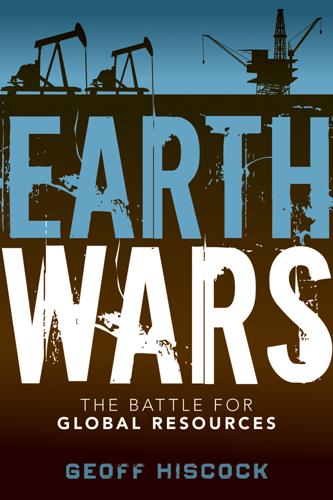
Earth Wars: The Battle for Global Resources
by
Geoff Hiscock
Published 23 Apr 2012
Toronto-listed Katanga Mining, owned by global commodities trader Glencore, runs a copper-cobalt operation that the company says has the potential to become the largest copper producer in Africa and the world’s largest cobalt producer. The DRC also has immense hydroelectric potential, but projects such as the proposed $10 billion Inga 3 dam on the Congo River face funding obstacles, opposition from environmental groups, and concerns over governance. The DRC ranks second-last (168 out of 169 nations) on the UN’s Human Development Index, and 164 out of 168 on Transparency International’s Corruption Perception Index. In South America, Brazil is in dispute with Bolivia, Uruguay, and Paraguay over relatively minor islands and water resource issues. Further to the south, Argentina continues to press its claim for the Malvinas (Falklands), a group of islands 500 km off its coast in the South Atlantic Ocean, and the scene of a short but bitter war with Britain in 1982.
…
Guinea, which declared its independence from France in 1958, clearly is no place for the faint-hearted in business, despite its wealth of mineral resources such as bauxite and iron ore. Drugs, violence, and military strongmen have tainted its investment milieu for years and kept most of its people poor. Transparency International ranks Guinea 164th out of 178 nations in its corruption perceptions index while the UN Human Development Index scores it at 156 out of 169 countries surveyed. According to Rio Tinto, the company made its first reconnaissance of the Simandou area in 1996 at the invitation of Guinea’s then mining minister. Rio subsequently applied for exploration licences covering the Simandou range, and these were granted in 1997.
…
Sweden Switzerland Syncrude Canada Syr Darya, Tajikistan Syria Tajikistan Takahagi, Mitsunori Taiwan Tangshan Iron & Steel Tanti, Tulsi Tanzania TAPI (Turkmenistan-Afghanistan-Pakistan-India) pipeline project Tata Group Tata, Ratan Tata Steel Tatarstan Tatneft Tavan Tolgoi, Mongolia Tawang Taylor, Ian Technology Metals Research Tenke Fungurume, DR Congo TerraGen Tete province, Mozambique Thailand Thanet wind farm, UK Three Gorges Project, China Tibet, Tibetan Plateau Tigris-Euphrates river basin Tillerson, Rex Timah Timchenko, Gennady Timor Sea Tinkler, Nathan Titanium TNK-BP Trafigura Group Tokarev, Nikolai Tokyo Electric Power Co (Tepco) Tokyo Gas Tongling Non-Ferrous Metals Group Tonkolili, Sierra Leone Tornqvist, Torbjoörn Toshiba Corp Total Toyota Motor Toyota Tsusho TransCanada Corp Transneft Transparency International Trina Solar TRUenergy Tungsten Tunguska, Russia Tunisia Turkey Turkiye Petrolleri Anonim Ortakligi (TPAO) Turkmenistan Uganda Uighur Ukraine Ukrnafta Umicore United Arab Emirates United Kingdom nuclear power wind power UN Human Development Index UN World Water Development Report United States coal copper oil and gas nuclear power pipelines shale Unocal Ural Mining & Metallurgical Co (UGMK) Uranium Uranium One, Canada Uruguay Usmanov, Alisher Utemuratov, Bulat Utica shale field Uzbekistan Vale Vasudeva, Sudhir Vattenfall Vedanta Resources Vekselberg.
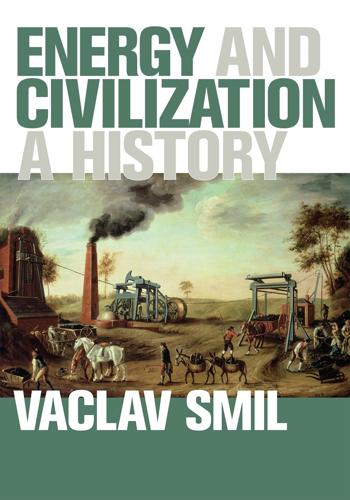
Energy and Civilization: A History
by
Vaclav Smil
Published 11 May 2017
Kenya’s per capita use of modern energies averages about 20 GJ/year, but slum dwellers in Africa and Asia consume as little as 5 GJ/year, or less than 2% of the U.S. mean. Figure 6.19 A Shanghai high-rise apartment building with air conditioners for virtually every room (Corbis). Figure 6.20 Average per capita energy consumption and the human development index in 2010. Plotted from data in UNDP (2015) and World Bank (2015a). Figure 6.21 Aftermath of Tokyo bombing of March 1945 (Corbis). Figure 6.22 Atmospheric CO2 measured at Mauna Loa Observatory in Hawaii (NOAA 2015). Figure 7.1 The prolonged dominance of human labor, the slow diffusion of water- and wind-driven machines, and the rapid post-1800 adoption of engines and turbines are the three most remarkable features in the history of prime movers.
…
Education and literacy data are not as revealing: enrollment ratios tell us about access but not about quality, and detailed achievement studies (such as the OECD’s Programme for International Student Assessment, or PISA) are not available for most countries. Another option is to use the UNDP’s Human Development Index (HDI), which combines life expectancy at birth, adult literacy, combined educational enrolment, and per capita GDP. Comparing these measures with average energy use leads to some important conclusions. Some societies have been able to secure adequate diets, basic health care and schooling, and a decent quality of life with an annual energy use as low as 40–50 GJ/capita.
…
Additional increases in discretionary energy use go into ostentatious housing (as average family size has declined, the average size of U.S. houses has more than doubled since the 1950s), the ownership of multiple expensive vehicles, and frequent flying. Figure 6.20 Average per capita energy consumption and the human development index in 2010. Plotted from data in UNDP (2015) and World Bank (2015a). More remarkably, America’s high energy use has been accompanied by quality-of-life indicators that are inferior not only when compared with the performance of leading EU countries or Japan (whose energy use is only half the U.S. rate) but when compared with the performance of many countries with intermediate energy use.
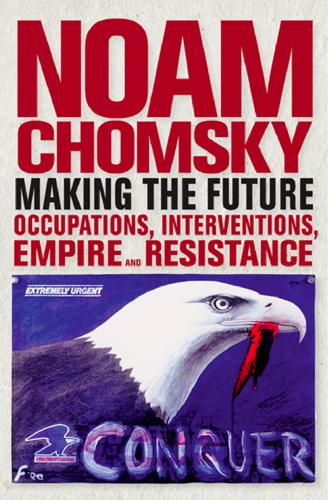
Making the Future: The Unipolar Imperial Moment
by
Noam Chomsky
Published 15 Mar 2010
Such a shift would return the global system to something like it was before the European conquests. Economic growth in China and India has been rapid, and thanks to their having rejected the West’s policies of financial deregulation, they survived the recession better than most. Nonetheless, questions arise. One standard measure of social health is the U.N. Human Development Index, available most recently through 2008. India ranks 134th, slightly above Cambodia and below Laos and Tajikistan, about where it has been for many years. China ranks 92nd—tied with Belize, a bit above Jordan, below the Dominican Republic and Iran. India and China also have very high inequality, so more than a billion of their inhabitants fall far lower in the scale.
…
National Intelligence Estimate, 97 UNASUR (Union of South American Nations), 136, 137, 167–169 unemployment, U. S., 192, 271, 286, 302 UNICEF, 165 Union of South American Nations (UNASUR), 136, 137, 167–169 United Nations (U. N.), 46, 99, 161, 282 Charter, 95 Committee on Disarmament, 75 Declaration on Friendly Relations (1970), 162 General Assembly, 281–284 Human Development Index, 195 Panel on Threats, Challenges and Change, 162–163 Relief and Works Agency, 128 World Summit (2005), 161, 163 United Nations (U. N.) Security Council, 163, 243–244 Resolution 242 (1967), 214 Resolution 687 (1991), 38–39, 76 Resolution 1725, 47–48 Resolution 1887 (2009), 171–173 United States attack on Osama bin Laden, 275–279 containment policy of, 37–40 decline of, 285–289 deficit, 195–196, 286–287 embassy in Baghdad, 66, 88, 170, 174 embassy in Pakistan, 256–257 Honduras coup (2009) and, 159, 185–187 Horn of Africa and, 45, 49 military bases, in Colombia, 168 military dominance and, 225–229 modes of control by, 80 North Korea and, 17–21 recognition of Palestine, 202–204 relations between Israel and, 31–35, 43–44, 85, 204–206, 242, 250 Somalia and, 45–49 South Africa and, 249 Supreme Court of, 189, 256 Universal Declaration of Human Rights, 108, 166 Unpeoplehood, 61, 95–97 UNRWA (United Nations Relief and Works Agency), 128 USS George Washington, 225 van Creveld, Martin, 27 van Tulder, Rob, 105 Vatican II, 179 Venezuela, 136, 159 vetoes, U.
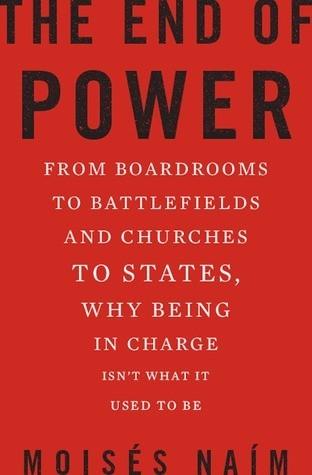
The End of Power: From Boardrooms to Battlefields and Churches to States, Why Being in Charge Isn’t What It Used to Be
by
Moises Naim
Published 5 Mar 2013
Perhaps one reason for all this progress is the rapid expansion of the professional community of scientists: in the countries covered by an Organisation for Economic Cooperation and Development (OECD) survey, the number of working scientists grew from 4.3 million in 1999 to 6.3 million in 2009.7 And that tally does not include several countries with large and growing science communities, most notably India. Human beings are indeed enjoying longer and healthier lives. According to the United Nations Human Development Index, which combines health, education, and income indicators to give a global measure of well-being, standards of living have risen everywhere in the world since 1970. In fact, you can count on one hand the countries in which it was lower in 2010 than in 1970. And between 2000 and 2010 only one country in the world—Zimbabwe—saw its human development index go down. From poverty and child mortality to educational attainment and caloric intake, the key numbers at the end of 2012 were better than they were in 2000.
…
See also Dictators Tyson, Ann Scott, 111 Uganda, 113, 134 Ukraine, 9, 103 Unemployment, 14, 15, 23, 130 Unions, 34, 38, 41, 45, 59, 68, 104, 193 history of, 200–202 See also Labor; under United States United Arab Emirates, 65, 186 United Fruit Company, 178 United Kingdom. See Great Britain United Nations, 55, 59, 62, 137, 138, 144, 227, 244 Durban climate talks, 152 Human Development Index, 57 members in, 81 Millennium Declaration, 156 peacekeeping missions of, 124 Security Council, 150, 151 United States, 9, 22, 27, 37, 57, 79, 86, 117, 144, 150, 195, 222–223 Agency for International Development (USAID), 8, 206 Chamber of Commerce hacked, 110 confirmation of appointees in, 91 decline of, 14, 131–132, 139–140, 235 defense budget/military spending, 13, 108–109, 119, 136, 141 economy, 45, 131, 223 elections in, 87, 88, 92, 241–242 favorable views of, 147 foundations in, 42–43 as hegemon, 130, 131, 136, 140, 141, 235 Hispanics in, 59 labor movement in, 59 (see also United States: unions in) Max Weber visit to, 39–40, 41 millionaires in, 42 Pax Americana, 141, 143 philanthropy in, 205–207 Special Operations Command, 124 State Department, 114, 138 Supreme Court, 68, 94, 98 unions in, 201, 202–203 United Way, 207 Universal Postal Union, 41 Universities, 30, 34, 41, 42, 61, 65, 193, 228 Uplift Academy, 211 Uppsala Declaration, 92 Urbanization, 60–61, 69 USAID.
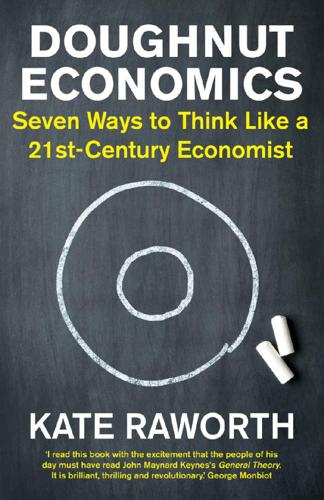
Doughnut Economics: Seven Ways to Think Like a 21st-Century Economist
by
Kate Raworth
Published 22 Mar 2017
Systems thinkers would suggest that one way out of this bind is to diversify and ‘start a new game’ with alternative measures of success. If a successful economy is one that thrives in balance, then that success will be reflected not in the metric of money but in metrics that reflect human prosperity in a flourishing web of life. Some well-known initiatives have taken this route. The UN’s Human Development Index, which ranks countries in terms of human health and education along with income per person, was created in 1990 precisely to start countering the sole use of GDP. Others like the Happy Planet Index, the Inclusive Wealth Index, and the Social Progress Index are now also aiming to create an alternative international family picture in which the biggest-GDP nations do not automatically appear centre frame.
…
Page numbers in italics denote illustrations A Aalborg, Denmark, 290 Abbott, Anthony ‘Tony’, 31 ABCD group, 148 Abramovitz, Moses, 262 absolute decoupling, 260–61 Acemoglu, Daron, 86 advertising, 58, 106–7, 112, 281 Agbodjinou, Sénamé, 231 agriculture, 5, 46, 72–3, 148, 155, 178, 181, 183 Alaska, 9 Alaska Permanent Fund, 194 Alperovitz, Gar, 177 alternative enterprise designs, 190–91 altruism, 100, 104 Amazon, 192, 196, 276 Amazon rainforest, 105–6, 253 American Economic Association, 3 American Enterprise Institute, 67 American Tobacco Corporation, 107 Andes, 54 animal spirits, 110 Anthropocene epoch, 48, 253 anthropocentrism, 115 Apertuso, 230 Apple, 85, 192 Archer Daniels Midland (ADM), 148 Arendt, Hannah, 115–16 Argentina, 55, 274 Aristotle, 32, 272 Arrow, Kenneth, 134 Articles of Association and Memoranda, 233 Arusha, Tanzania, 202 Asia Wage Floor Alliance, 177 Asian financial crisis (1997), 90 Asknature.org, 232 Athens, 57 austerity, 163 Australia, 31, 103, 177, 180, 211, 224–6, 255, 260 Austria, 263, 274 availability bias, 112 AXIOM, 230 Axtell, Robert, 150 Ayres, Robert, 263 B B Corp, 241 Babylon, 13 Baker, Josephine, 157 balancing feedback loops, 138–41, 155, 271 Ballmer, Steve, 231 Bangla Pesa, 185–6, 293 Bangladesh, 10, 226 Bank for International Settlements, 256 Bank of America, 149 Bank of England, 145, 147, 256 banking, see under finance Barnes, Peter, 201 Barroso, José Manuel, 41 Bartlett, Albert Allen ‘Al’, 247 basic income, 177, 194, 199–201 basic personal values, 107–9 Basle, Switzerland, 80 Bauwens, Michel, 197 Beckerman, Wilfred, 258 Beckham, David, 171 Beech-Nut Packing Company, 107 behavioural economics, 11, 111–14 behavioural psychology, 103, 128 Beinhocker, Eric, 158 Belgium, 236, 252 Bentham, Jeremy, 98 Benyus, Janine, 116, 218, 223–4, 227, 232, 237, 241 Berger, John, 12, 281 Berlin Wall, 141 Bermuda, 277 Bernanke, Ben, 146 Bernays, Edward, 107, 112, 281–3 Bhopal gas disaster (1984), 9 Bible, 19, 114, 151 Big Bang (1986), 87 billionaires, 171, 200, 289 biodiversity, 10, 46, 48–9, 52, 85, 115, 155, 208, 210, 242, 299 as common pool resource, 201 and land conversion, 49 and inequality, 172 and reforesting, 50 biomass, 73, 118, 210, 212, 221 biomimicry, 116, 218, 227, 229 bioplastic, 224, 293 Birmingham, West Midlands, 10 Black, Fischer, 100–101 Blair, Anthony ‘Tony’, 171 Blockchain, 187, 192 blood donation, 104, 118 Body Shop, The, 232–4 Bogotá, Colombia, 119 Bolivia, 54 Boston, Massachusetts, 3 Bowen, Alex, 261 Bowles, Sam, 104 Box, George, 22 Boyce, James, 209 Brasselberg, Jacob, 187 Brazil, 124, 226, 281, 290 bread riots, 89 Brisbane, Australia, 31 Brown, Gordon, 146 Brynjolfsson, Erik, 193, 194, 258 Buddhism, 54 buen vivir, 54 Bullitt Center, Seattle, 217 Bunge, 148 Burkina Faso, 89 Burmark, Lynell, 13 business, 36, 43, 68, 88–9 automation, 191–5, 237, 258, 278 boom and bust, 246 and circular economy, 212, 215–19, 220, 224, 227–30, 232–4, 292 and complementary currencies, 184–5, 292 and core economy, 80 and creative destruction, 142 and feedback loops, 148 and finance, 183, 184 and green growth, 261, 265, 269 and households, 63, 68 living metrics, 241 and market, 68, 88 micro-businesses, 9 and neoliberalism, 67, 87 ownership, 190–91 and political funding, 91–2, 171–2 and taxation, 23, 276–7 workers’ rights, 88, 91, 269 butterfly economy, 220–42 C C–ROADS (Climate Rapid Overview and Decision Support), 153 C40 network, 280 calculating man, 98 California, United States, 213, 224, 293 Cambodia, 254 Cameron, David, 41 Canada, 196, 255, 260, 281, 282 cancer, 124, 159, 196 Capital Institute, 236 carbon emissions, 49–50, 59, 75 and decoupling, 260, 266 and forests, 50, 52 and inequality, 58 reduction of, 184, 201, 213, 216–18, 223–7, 239–41, 260, 266 stock–flow dynamics, 152–4 taxation, 201, 213 Cargill, 148 Carney, Mark, 256 Caterpillar, 228 Catholic Church, 15, 19 Cato Institute, 67 Celts, 54 central banks, 6, 87, 145, 146, 147, 183, 184, 256 Chang, Ha-Joon, 82, 86, 90 Chaplin, Charlie, 157 Chiapas, Mexico, 121–2 Chicago Board Options Exchange (CBOE), 100–101 Chicago School, 34, 99 Chile, 7, 42 China, 1, 7, 48, 154, 289–90 automation, 193 billionaires, 200, 289 greenhouse gas emissions, 153 inequality, 164 Lake Erhai doughnut analysis, 56 open-source design, 196 poverty reduction, 151, 198 renewable energy, 239 tiered pricing, 213 Chinese Development Bank, 239 chrematistics, 32, 273 Christianity, 15, 19, 114, 151 cigarettes, 107, 124 circular economy, 220–42, 257 Circular Flow diagram, 19–20, 28, 62–7, 64, 70, 78, 87, 91, 92, 93, 262 Citigroup, 149 Citizen Reaction Study, 102 civil rights movement, 77 Cleveland, Ohio, 190 climate change, 1, 3, 5, 29, 41, 45–53, 63, 74, 75–6, 91, 141, 144, 201 circular economy, 239, 241–2 dynamics of, 152–5 and G20, 31 and GDP growth, 255, 256, 260, 280 and heuristics, 114 and human rights, 10 and values, 126 climate positive cities, 239 closed systems, 74 coffee, 221 cognitive bias, 112–14 Colander, David, 137 Colombia, 119 common-pool resources, 82–3, 181, 201–2 commons, 69, 82–4, 287 collaborative, 78, 83, 191, 195, 196, 264, 292 cultural, 83 digital, 82, 83, 192, 197, 281 and distribution, 164, 180, 181–2, 205, 267 Embedded Economy, 71, 73, 77–8, 82–4, 85, 92 knowledge, 197, 201–2, 204, 229, 231, 292 commons and money creation, see complementary currencies natural, 82, 83, 180, 181–2, 201, 265 and regeneration, 229, 242, 267, 292 and state, 85, 93, 197, 237 and systems, 160 tragedy of, 28, 62, 69, 82, 181 triumph of, 83 and values, 106, 108 Commons Trusts, 201 complementary currencies, 158, 182–8, 236, 292 complex systems, 28, 129–62 complexity science, 136–7 Consumer Reaction Study, 102 consumerism, 58, 102, 121, 280–84 cooking, 45, 80, 186 Coote, Anna, 278 Copenhagen, Denmark, 124 Copernicus, Nicolaus, 14–15 copyright, 195, 197, 204 core economy, 79–80 Corporate To Do List, 215–19 Costa Rica, 172 Council of Economic Advisers, US, 6, 37 Cox, Jo, 117 cradle to cradle, 224 creative destruction, 142 Cree, 282 Crompton, Tom, 125–6 cross-border flows, 89–90 crowdsourcing, 204 cuckoos, 32, 35, 36, 38, 40, 54, 60, 159, 244, 256, 271 currencies, 182–8, 236, 274, 292 D da Vinci, Leonardo, 13, 94–5 Dallas, Texas, 120 Daly, Herman, 74, 143, 271 Danish Nudging Network, 124 Darwin, Charles, 14 Debreu, Gerard, 134 debt, 37, 146–7, 172–3, 182–5, 247, 255, 269 decoupling, 193, 210, 258–62, 273 defeat device software, 216 deforestation, 49–50, 74, 208, 210 degenerative linear economy, 211–19, 222–3, 237 degrowth, 244 DeMartino, George, 161 democracy, 77, 171–2, 258 demurrage, 274 Denmark, 180, 275, 290 deregulation, 82, 87, 269 derivatives, 100–101, 149 Devas, Charles Stanton, 97 Dey, Suchitra, 178 Diamond, Jared, 154 diarrhoea, 5 differential calculus, 131, 132 digital revolution, 191–2, 264 diversify–select–amplify, 158 double spiral, 54 Doughnut model, 10–11, 11, 23–5, 44, 51 and aspiration, 58–9, 280–84 big picture, 28, 42, 61–93 distribution, 29, 52, 57, 58, 76, 93, 158, 163–205 ecological ceiling, 10, 11, 44, 45, 46, 49, 51, 218, 254, 295, 298 goal, 25–8, 31–60 and governance, 57, 59 growth agnosticism, 29–30, 243–85 human nature, 28–9, 94–128 and population, 57–8 regeneration, 29, 158, 206–42 social foundation, 10, 11, 44, 45, 49, 51, 58, 77, 174, 200, 254, 295–6 systems, 28, 129–62 and technology, 57, 59 Douglas, Margaret, 78–9 Dreyfus, Louis, 148 ‘Dumb and Dumber in Macroeconomics’ (Solow), 135 Durban, South Africa, 214 E Earning by Learning, 120 Earth-system science, 44–53, 115, 216, 288, 298 Easter Island, 154 Easterlin, Richard, 265–6 eBay, 105, 192 eco-literacy, 115 ecological ceiling, 10, 11, 44, 45, 46, 49, 51, 218, 254, 295, 298 Ecological Performance Standards, 241 Econ 101 course, 8, 77 Economics (Lewis), 114 Economics (Samuelson), 19–20, 63–7, 70, 74, 78, 86, 91, 92, 93, 262 Economy for the Common Good, 241 ecosystem services, 7, 116, 269 Ecuador, 54 education, 9, 43, 45, 50–52, 85, 169–70, 176, 200, 249, 279 economic, 8, 11, 18, 22, 24, 36, 287–93 environmental, 115, 239–40 girls’, 57, 124, 178, 198 online, 83, 197, 264, 290 pricing, 118–19 efficient market hypothesis, 28, 62, 68, 87 Egypt, 48, 89 Eisenstein, Charles, 116 electricity, 9, 45, 236, 240 and Bangla Pesa, 186 cars, 231 Ethereum, 187–8 and MONIAC, 75, 262 pricing, 118, 213 see also renewable energy Elizabeth II, Queen of the United Kingdom, 145 Ellen MacArthur Foundation, 220 Embedded Economy, 71–93, 263 business, 88–9 commons, 82–4 Earth, 72–6 economy, 77–8 finance, 86–8 household, 78–81 market, 81–2 power, 91–92 society, 76–7 state, 84–6 trade, 89–90 employment, 36, 37, 51, 142, 176 automation, 191–5, 237, 258, 278 labour ownership, 188–91 workers’ rights, 88, 90, 269 Empty World, 74 Engels, Friedrich, 88 environment and circular economy, 220–42, 257 conservation, 121–2 and degenerative linear economy, 211–19, 222–3 degradation, 5, 9, 10, 29, 44–53, 74, 154, 172, 196, 206–42 education on, 115, 239–40 externalities, 152 fair share, 216–17 and finance, 234–7 generosity, 218–19, 223–7 green growth, 41, 210, 243–85 nudging, 123–5 taxation and quotas, 213–14, 215 zero impact, 217–18, 238, 241 Environmental Dashboard, 240–41 environmental economics, 7, 11, 114–16 Environmental Kuznets Curve, 207–11, 241 environmental space, 54 Epstein, Joshua, 150 equilibrium theory, 134–62 Ethereum, 187–8 ethics, 160–62 Ethiopia, 9, 226, 254 Etsy, 105 Euclid, 13, 15 European Central Bank, 145, 275 European Commission, 41 European Union (EU), 92, 153, 210, 222, 255, 258 Evergreen Cooperatives, 190 Evergreen Direct Investing (EDI), 273 exogenous shocks, 141 exponential growth, 39, 246–85 externalities, 143, 152, 213 Exxon Valdez oil spill (1989), 9 F Facebook, 192 fair share, 216–17 Fama, Eugene, 68, 87 fascism, 234, 277 Federal Reserve, US, 87, 145, 146, 271, 282 feedback loops, 138–41, 143, 148, 155, 250, 271 feminist economics, 11, 78–81, 160 Ferguson, Thomas, 91–2 finance animal spirits, 110 bank runs, 139 Black–Scholes model, 100–101 boom and bust, 28–9, 110, 144–7 and Circular Flow, 63–4, 87 and complex systems, 134, 138, 139, 140, 141, 145–7 cross-border flows, 89 deregulation, 87 derivatives, 100–101, 149 and distribution, 169, 170, 173, 182–4, 198–9, 201 and efficient market hypothesis, 63, 68 and Embedded Economy, 71, 86–8 and financial-instability hypothesis, 87, 146 and GDP growth, 38 and media, 7–8 mobile banking, 199–200 and money creation, 87, 182–5 and regeneration, 227, 229, 234–7 in service to life, 159, 234–7 stakeholder finance, 190 and sustainability, 216, 235–6, 239 financial crisis (2008), 1–4, 5, 40, 63, 86, 141, 144, 278, 290 and efficient market hypothesis, 87 and equilibrium theory, 134, 145 and financial-instability hypothesis, 87 and inequality, 90, 170, 172, 175 and money creation, 182 and worker’s rights, 278 financial flows, 89 Financial Times, 183, 266, 289 financial-instability hypothesis, 87, 146 First Green Bank, 236 First World War (1914–18), 166, 170 Fisher, Irving, 183 fluid values, 102, 106–9 food, 3, 43, 45, 50, 54, 58, 59, 89, 198 food banks, 165 food price crisis (2007–8), 89, 90, 180 Ford, 277–8 foreign direct investment, 89 forest conservation, 121–2 fossil fuels, 59, 73, 75, 92, 212, 260, 263 Foundations of Economic Analysis (Samuelson), 17–18 Foxconn, 193 framing, 22–3 France, 43, 165, 196, 238, 254, 256, 281, 290 Frank, Robert, 100 free market, 33, 37, 67, 68, 70, 81–2, 86, 90 free open-source hardware (FOSH), 196–7 free open-source software (FOSS), 196 free trade, 70, 90 Freeman, Ralph, 18–19 freshwater cycle, 48–9 Freud, Sigmund, 107, 281 Friedman, Benjamin, 258 Friedman, Milton, 34, 62, 66–9, 84–5, 88, 99, 183, 232 Friends of the Earth, 54 Full World, 75 Fuller, Buckminster, 4 Fullerton, John, 234–6, 273 G G20, 31, 56, 276, 279–80 G77, 55 Gal, Orit, 141 Gandhi, Mohandas, 42, 293 Gangnam Style, 145 Gardens of Democracy, The (Liu & Hanauer), 158 gender equality, 45, 51–2, 57, 78–9, 85, 88, 118–19, 124, 171, 198 generosity, 218–19, 223–9 geometry, 13, 15 George, Henry, 149, 179 Georgescu-Roegen, Nicholas, 252 geothermal energy, 221 Gerhardt, Sue, 283 Germany, 2, 41, 100, 118, 165, 189, 211, 213, 254, 256, 260, 274 Gessel, Silvio, 274 Ghent, Belgium, 236 Gift Relationship, The (Titmuss), 118–19 Gigerenzer, Gerd, 112–14 Gintis, Herb, 104 GiveDirectly, 200 Glass–Steagall Act (1933), 87 Glennon, Roger, 214 Global Alliance for Tax Justice, 277 global material footprints, 210–11 Global Village Construction Set, 196 globalisation, 89 Goerner, Sally, 175–6 Goffmann, Erving, 22 Going for Growth, 255 golden rule, 91 Goldman Sachs, 149, 170 Gómez-Baggethun, Erik, 122 Goodall, Chris, 211 Goodwin, Neva, 79 Goody, Jade, 124 Google, 192 Gore, Albert ‘Al’, 172 Gorgons, 244, 256, 257, 266 graffiti, 15, 25, 287 Great Acceleration, 46, 253–4 Great Depression (1929–39), 37, 70, 170, 173, 183, 275, 277, 278 Great Moderation, 146 Greece, Ancient, 4, 13, 32, 48, 54, 56–7, 160, 244 green growth, 41, 210, 243–85 Greenham, Tony, 185 greenhouse gas emissions, 31, 46, 50, 75–6, 141, 152–4 and decoupling, 260, 266 and Environmental Kuznets Curve, 208, 210 and forests, 50, 52 and G20, 31 and inequality, 58 reduction of, 184, 201–2, 213, 216–18, 223–7, 239–41, 256, 259–60, 266, 298 stock–flow dynamics, 152–4 and taxation, 201, 213 Greenland, 141, 154 Greenpeace, 9 Greenspan, Alan, 87 Greenwich, London, 290 Grenoble, France, 281 Griffiths, Brian, 170 gross domestic product (GDP), 25, 31–2, 35–43, 57, 60, 84, 164 as cuckoo, 32, 35, 36, 38, 40, 54, 60, 159, 244, 256, 271 and Environmental Kuznets Curve, 207–11 and exponential growth, 39, 53, 246–85 and growth agnosticism, 29–30, 240, 243–85 and inequality, 173 and Kuznets Curve, 167, 173, 188–9 gross national product (GNP), 36–40 Gross World Product, 248 Grossman, Gene, 207–8, 210 ‘grow now, clean up later’, 207 Guatemala, 196 H Haifa, Israel, 120 Haldane, Andrew, 146 Han Dynasty, 154 Hanauer, Nick, 158 Hansen, Pelle, 124 Happy Planet Index, 280 Hardin, Garrett, 69, 83, 181 Harvard University, 2, 271, 290 von Hayek, Friedrich, 7–8, 62, 66, 67, 143, 156, 158 healthcare, 43, 50, 57, 85, 123, 125, 170, 176, 200, 269, 279 Heilbroner, Robert, 53 Henry VIII, King of England and Ireland, 180 Hepburn, Cameron, 261 Herbert Simon, 111 heuristics, 113–14, 118, 123 high-income countries growth, 30, 244–5, 254–72, 282 inequality, 165, 168, 169, 171 labour, 177, 188–9, 278 overseas development assistance (ODA), 198–9 resource intensive lifestyles, 46, 210–11 trade, 90 Hippocrates, 160 History of Economic Analysis (Schumpeter), 21 HIV/AIDS, 123 Holocene epoch, 46–8, 75, 115, 253 Homo economicus, 94–103, 109, 127–8 Homo sapiens, 38, 104, 130 Hong Kong, 180 household, 78 housing, 45, 59, 176, 182–3, 269 Howe, Geoffrey, 67 Hudson, Michael, 183 Human Development Index, 9, 279 human nature, 28 human rights, 10, 25, 45, 49, 50, 95, 214, 233 humanistic economics, 42 hydropower, 118, 260, 263 I Illinois, United States, 179–80 Imago Mundi, 13 immigration, 82, 199, 236, 266 In Defense of Economic Growth (Beckerman), 258 Inclusive Wealth Index, 280 income, 51, 79–80, 82, 88, 176–8, 188–91, 194, 199–201 India, 2, 9, 10, 42, 124, 164, 178, 196, 206–7, 242, 290 Indonesia, 90, 105–6, 164, 168, 200 Indus Valley civilisation, 48 inequality, 1, 5, 25, 41, 63, 81, 88, 91, 148–52, 209 and consumerism, 111 and democracy, 171 and digital revolution, 191–5 and distribution, 163–205 and environmental degradation, 172 and GDP growth, 173 and greenhouse gas emissions, 58 and intellectual property, 195–8 and Kuznets Curve, 29, 166–70, 173–4 and labour ownership, 188–91 and land ownership, 178–82 and money creation, 182–8 and social welfare, 171 Success to the Successful, 148, 149, 151, 166 inflation, 36, 248, 256, 275 insect pollination services, 7 Institute of Economic Affairs, 67 institutional economics, 11 intellectual property rights, 195–8, 204 interest, 36, 177, 182, 184, 275–6 Intergovernmental Panel on Climate Change, 25 International Monetary Fund (IMF), 170, 172, 173, 183, 255, 258, 271 Internet, 83–4, 89, 105, 192, 202, 264 Ireland, 277 Iroquois Onondaga Nation, 116 Israel, 100, 103, 120 Italy, 165, 196, 254 J Jackson, Tim, 58 Jakubowski, Marcin, 196 Jalisco, Mexico, 217 Japan, 168, 180, 211, 222, 254, 256, 263, 275 Jevons, William Stanley, 16, 97–8, 131, 132, 137, 142 John Lewis Partnership, 190 Johnson, Lyndon Baines, 37 Johnson, Mark, 38 Johnson, Todd, 191 JPMorgan Chase, 149, 234 K Kahneman, Daniel, 111 Kamkwamba, William, 202, 204 Kasser, Tim, 125–6 Keen, Steve, 146, 147 Kelly, Marjorie, 190–91, 233 Kennedy, John Fitzgerald, 37, 250 Kennedy, Paul, 279 Kenya, 118, 123, 180, 185–6, 199–200, 226, 292 Keynes, John Maynard, 7–8, 22, 66, 69, 134, 184, 251, 277–8, 284, 288 Kick It Over movement, 3, 289 Kingston, London, 290 Knight, Frank, 66, 99 knowledge commons, 202–4, 229, 292 Kokstad, South Africa, 56 Kondratieff waves, 246 Korzybski, Alfred, 22 Krueger, Alan, 207–8, 210 Kuhn, Thomas, 22 Kumhof, Michael, 172 Kuwait, 255 Kuznets, Simon, 29, 36, 39–40, 166–70, 173, 174, 175, 204, 207 KwaZulu Natal, South Africa, 56 L labour ownership, 188–91 Lake Erhai, Yunnan, 56 Lakoff, George, 23, 38, 276 Lamelara, Indonesia, 105–6 land conversion, 49, 52, 299 land ownership, 178–82 land-value tax, 73, 149, 180 Landesa, 178 Landlord’s Game, The, 149 law of demand, 16 laws of motion, 13, 16–17, 34, 129, 131 Lehman Brothers, 141 Leopold, Aldo, 115 Lesotho, 118, 199 leverage points, 159 Lewis, Fay, 178 Lewis, Justin, 102 Lewis, William Arthur, 114, 167 Lietaer, Bernard, 175, 236 Limits to Growth, 40, 154, 258 Linux, 231 Liu, Eric, 158 living metrics, 240–42 living purpose, 233–4 Lomé, Togo, 231 London School of Economics (LSE), 2, 34, 65, 290 London Underground, 12 loss aversion, 112 low-income countries, 90, 164–5, 168, 173, 180, 199, 201, 209, 226, 254, 259 Lucas, Robert, 171 Lula da Silva, Luiz Inácio, 124 Luxembourg, 277 Lyle, John Tillman, 214 Lyons, Oren, 116 M M–PESA, 199–200 MacDonald, Tim, 273 Machiguenga, 105–6 MacKenzie, Donald, 101 macroeconomics, 36, 62–6, 76, 80, 134–5, 145, 147, 150, 244, 280 Magie, Elizabeth, 149, 153 Malala effect, 124 malaria, 5 Malawi, 118, 202, 204 Malaysia, 168 Mali, Taylor, 243 Malthus, Thomas, 252 Mamsera Rural Cooperative, 190 Manhattan, New York, 9, 41 Mani, Muthukumara, 206 Manitoba, 282 Mankiw, Gregory, 2, 34 Mannheim, Karl, 22 Maoris, 54 market, 81–2 and business, 88 circular flow, 64 and commons, 83, 93, 181, 200–201 efficiency of, 28, 62, 68, 87, 148, 181 and equilibrium theory, 131–5, 137, 143–7, 155, 156 free market, 33, 37, 67–70, 90, 208 and households, 63, 69, 78, 79 and maxi-max rule, 161 and pricing, 117–23, 131, 160 and rational economic man, 96, 100–101, 103, 104 and reciprocity, 105, 106 reflexivity of, 144–7 and society, 69–70 and state, 84–6, 200, 281 Marshall, Alfred, 17, 98, 133, 165, 253, 282 Marx, Karl, 88, 142, 165, 272 Massachusetts Institute of Technology (MIT), 17–20, 152–5 massive open online courses (MOOCs), 290 Matthew Effect, 151 Max-Neef, Manfred, 42 maxi-max rule, 161 maximum wage, 177 Maya civilisation, 48, 154 Mazzucato, Mariana, 85, 195, 238 McAfee, Andrew, 194, 258 McDonough, William, 217 Meadows, Donella, 40, 141, 159, 271, 292 Medusa, 244, 257, 266 Merkel, Angela, 41 Messerli, Elspeth, 187 Metaphors We Live By (Lakoff & Johnson), 38 Mexico, 121–2, 217 Michaels, Flora S., 6 micro-businesses, 9, 173, 178 microeconomics, 132–4 microgrids, 187–8 Micronesia, 153 Microsoft, 231 middle class, 6, 46, 58 middle-income countries, 90, 164, 168, 173, 180, 226, 254 migration, 82, 89–90, 166, 195, 199, 236, 266, 286 Milanovic, Branko, 171 Mill, John Stuart, 33–4, 73, 97, 250, 251, 283, 284, 288 Millo, Yuval, 101 minimum wage, 82, 88, 176 Minsky, Hyman, 87, 146 Mises, Ludwig von, 66 mission zero, 217 mobile banking, 199–200 mobile phones, 222 Model T revolution, 277–8 Moldova, 199 Mombasa, Kenya, 185–6 Mona Lisa (da Vinci), 94 money creation, 87, 164, 177, 182–8, 205 MONIAC (Monetary National Income Analogue Computer), 64–5, 75, 142, 262 Monoculture (Michaels), 6 Monopoly, 149 Mont Pelerin Society, 67, 93 Moral Consequences of Economic Growth, The (Friedman), 258 moral vacancy, 41 Morgan, Mary, 99 Morogoro, Tanzania, 121 Moyo, Dambisa, 258 Muirhead, Sam, 230, 231 MultiCapital Scorecard, 241 Murphy, David, 264 Murphy, Richard, 185 musical tastes, 110 Myriad Genetics, 196 N national basic income, 177 Native Americans, 115, 116, 282 natural capital, 7, 116, 269 Natural Economic Order, The (Gessel), 274 Nedbank, 216 negative externalities, 213 negative interest rates, 275–6 neoclassical economics, 134, 135 neoliberalism, 7, 62–3, 67–70, 81, 83, 84, 88, 93, 143, 170, 176 Nepal, 181, 199 Nestlé, 217 Netherlands, 211, 235, 224, 226, 238, 277 networks, 110–11, 117, 118, 123, 124–6, 174–6 neuroscience, 12–13 New Deal, 37 New Economics Foundation, 278, 283 New Year’s Day, 124 New York, United States, 9, 41, 55 Newlight Technologies, 224, 226, 293 Newton, Isaac, 13, 15–17, 32–3, 95, 97, 129, 131, 135–7, 142, 145, 162 Nicaragua, 196 Nigeria, 164 nitrogen, 49, 52, 212–13, 216, 218, 221, 226, 298 ‘no pain, no gain’, 163, 167, 173, 204, 209 Nobel Prize, 6–7, 43, 83, 101, 167 Norway, 281 nudging, 112, 113, 114, 123–6 O Obama, Barack, 41, 92 Oberlin, Ohio, 239, 240–41 Occupy movement, 40, 91 ocean acidification, 45, 46, 52, 155, 242, 298 Ohio, United States, 190, 239 Okun, Arthur, 37 onwards and upwards, 53 Open Building Institute, 196 Open Source Circular Economy (OSCE), 229–32 open systems, 74 open-source design, 158, 196–8, 265 open-source licensing, 204 Organisation for Economic Co-operation and Development (OECD), 38, 210, 255–6, 258 Origin of Species, The (Darwin), 14 Ormerod, Paul, 110, 111 Orr, David, 239 Ostrom, Elinor, 83, 84, 158, 160, 181–2 Ostry, Jonathan, 173 OSVehicle, 231 overseas development assistance (ODA), 198–200 ownership of wealth, 177–82 Oxfam, 9, 44 Oxford University, 1, 36 ozone layer, 9, 50, 115 P Pachamama, 54, 55 Pakistan, 124 Pareto, Vilfredo, 165–6, 175 Paris, France, 290 Park 20|20, Netherlands, 224, 226 Parker Brothers, 149 Patagonia, 56 patents, 195–6, 197, 204 patient capital, 235 Paypal, 192 Pearce, Joshua, 197, 203–4 peer-to-peer networks, 187, 192, 198, 203, 292 People’s QE, 184–5 Perseus, 244 Persia, 13 Peru, 2, 105–6 Phillips, Adam, 283 Phillips, William ‘Bill’, 64–6, 75, 142, 262 phosphorus, 49, 52, 212–13, 218, 298 Physiocrats, 73 Pickett, Kate, 171 pictures, 12–25 Piketty, Thomas, 169 Playfair, William, 16 Poincaré, Henri, 109, 127–8 Polanyi, Karl, 82, 272 political economy, 33–4, 42 political funding, 91–2, 171–2 political voice, 43, 45, 51–2, 77, 117 pollution, 29, 45, 52, 85, 143, 155, 206–17, 226, 238, 242, 254, 298 population, 5, 46, 57, 155, 199, 250, 252, 254 Portugal, 211 post-growth society, 250 poverty, 5, 9, 37, 41, 50, 88, 118, 148, 151 emotional, 283 and inequality, 164–5, 168–9, 178 and overseas development assistance (ODA), 198–200 and taxation, 277 power, 91–92 pre-analytic vision, 21–2 prescription medicines, 123 price-takers, 132 prices, 81, 118–23, 131, 160 Principles of Economics (Mankiw), 34 Principles of Economics (Marshall), 17, 98 Principles of Political Economy (Mill), 288 ProComposto, 226 Propaganda (Bernays), 107 public relations, 107, 281 public spending v. investment, 276 public–private patents, 195 Putnam, Robert, 76–7 Q quantitative easing (QE), 184–5 Quebec, 281 Quesnay, François, 16, 73 R Rabot, Ghent, 236 Rancière, Romain, 172 rating and review systems, 105 rational economic man, 94–103, 109, 111, 112, 126, 282 Reagan, Ronald, 67 reciprocity, 103–6, 117, 118, 123 reflexivity of markets, 144 reinforcing feedback loops, 138–41, 148, 250, 271 relative decoupling, 259 renewable energy biomass energy, 118, 221 and circular economy, 221, 224, 226, 235, 238–9, 274 and commons, 83, 85, 185, 187–8, 192, 203, 264 geothermal energy, 221 and green growth, 257, 260, 263, 264, 267 hydropower, 118, 260, 263 pricing, 118 solar energy, see solar energy wave energy, 221 wind energy, 75, 118, 196, 202–3, 221, 233, 239, 260, 263 rentier sector, 180, 183, 184 reregulation, 82, 87, 269 resource flows, 175 resource-intensive lifestyles, 46 Rethinking Economics, 289 Reynebeau, Guy, 237 Ricardo, David, 67, 68, 73, 89, 250 Richardson, Katherine, 53 Rifkin, Jeremy, 83, 264–5 Rise and Fall of the Great Powers, The (Kennedy), 279 risk, 112, 113–14 Robbins, Lionel, 34 Robinson, James, 86 Robinson, Joan, 142 robots, 191–5, 237, 258, 278 Rockefeller Foundation, 135 Rockford, Illinois, 179–80 Rockström, Johan, 48, 55 Roddick, Anita, 232–4 Rogoff, Kenneth, 271, 280 Roman Catholic Church, 15, 19 Rombo, Tanzania, 190 Rome, Ancient, 13, 48, 154 Romney, Mitt, 92 Roosevelt, Franklin Delano, 37 rooted membership, 190 Rostow, Walt, 248–50, 254, 257, 267–70, 284 Ruddick, Will, 185 rule of thumb, 113–14 Ruskin, John, 42, 223 Russia, 200 rust belt, 90, 239 S S curve, 251–6 Sainsbury’s, 56 Samuelson, Paul, 17–21, 24–5, 38, 62–7, 70, 74, 84, 91, 92, 93, 262, 290–91 Sandel, Michael, 41, 120–21 Sanergy, 226 sanitation, 5, 51, 59 Santa Fe, California, 213 Santinagar, West Bengal, 178 São Paolo, Brazil, 281 Sarkozy, Nicolas, 43 Saumweder, Philipp, 226 Scharmer, Otto, 115 Scholes, Myron, 100–101 Schumacher, Ernst Friedrich, 42, 142 Schumpeter, Joseph, 21 Schwartz, Shalom, 107–9 Schwarzenegger, Arnold, 163, 167, 204 ‘Science and Complexity’ (Weaver), 136 Scotland, 57 Seaman, David, 187 Seattle, Washington, 217 second machine age, 258 Second World War (1939–45), 18, 37, 70, 170 secular stagnation, 256 self-interest, 28, 68, 96–7, 99–100, 102–3 Selfish Society, The (Gerhardt), 283 Sen, Amartya, 43 Shakespeare, William, 61–3, 67, 93 shale gas, 264, 269 Shang Dynasty, 48 shareholders, 82, 88, 189, 191, 227, 234, 273, 292 sharing economy, 264 Sheraton Hotel, Boston, 3 Siegen, Germany, 290 Silicon Valley, 231 Simon, Julian, 70 Sinclair, Upton, 255 Sismondi, Jean, 42 slavery, 33, 77, 161 Slovenia, 177 Small Is Beautiful (Schumacher), 42 smart phones, 85 Smith, Adam, 33, 57, 67, 68, 73, 78–9, 81, 96–7, 103–4, 128, 133, 160, 181, 250 social capital, 76–7, 122, 125, 172 social contract, 120, 125 social foundation, 10, 11, 44, 45, 49, 51, 58, 77, 174, 200, 254, 295–6 social media, 83, 281 Social Progress Index, 280 social pyramid, 166 society, 76–7 solar energy, 59, 75, 111, 118, 187–8, 190 circular economy, 221, 222, 223, 224, 226–7, 239 commons, 203 zero-energy buildings, 217 zero-marginal-cost revolution, 84 Solow, Robert, 135, 150, 262–3 Soros, George, 144 South Africa, 56, 177, 214, 216 South Korea, 90, 168 South Sea Bubble (1720), 145 Soviet Union (1922–91), 37, 67, 161, 279 Spain, 211, 238, 256 Spirit Level, The (Wilkinson & Pickett), 171 Sraffa, Piero, 148 St Gallen, Switzerland, 186 Stages of Economic Growth, The (Rostow), 248–50, 254 stakeholder finance, 190 Standish, Russell, 147 state, 28, 33, 69–70, 78, 82, 160, 176, 180, 182–4, 188 and commons, 85, 93, 197, 237 and market, 84–6, 200, 281 partner state, 197, 237–9 and robots, 195 stationary state, 250 Steffen, Will, 46, 48 Sterman, John, 66, 143, 152–4 Steuart, James, 33 Stiglitz, Joseph, 43, 111, 196 stocks and flows, 138–41, 143, 144, 152 sub-prime mortgages, 141 Success to the Successful, 148, 149, 151, 166 Sugarscape, 150–51 Summers, Larry, 256 Sumner, Andy, 165 Sundrop Farms, 224–6 Sunstein, Cass, 112 supply and demand, 28, 132–6, 143, 253 supply chains, 10 Sweden, 6, 255, 275, 281 swishing, 264 Switzerland, 42, 66, 80, 131, 186–7, 275 T Tableau économique (Quesnay), 16 tabula rasa, 20, 25, 63, 291 takarangi, 54 Tanzania, 121, 190, 202 tar sands, 264, 269 taxation, 78, 111, 165, 170, 176, 177, 237–8, 276–9 annual wealth tax, 200 environment, 213–14, 215 global carbon tax, 201 global financial transactions tax, 201, 235 land-value tax, 73, 149, 180 non-renewable resources, 193, 237–8, 278–9 People’s QE, 185 tax relief v. tax justice, 23, 276–7 TED (Technology, Entertainment, Design), 202, 258 Tempest, The (Shakespeare), 61, 63, 93 Texas, United States, 120 Thailand, 90, 200 Thaler, Richard, 112 Thatcher, Margaret, 67, 69, 76 Theory of Moral Sentiments (Smith), 96 Thompson, Edward Palmer, 180 3D printing, 83–4, 192, 198, 231, 264 thriving-in-balance, 54–7, 62 tiered pricing, 213–14 Tigray, Ethiopia, 226 time banking, 186 Titmuss, Richard, 118–19 Toffler, Alvin, 12, 80 Togo, 231, 292 Torekes, 236–7 Torras, Mariano, 209 Torvalds, Linus, 231 trade, 62, 68–9, 70, 89–90 trade unions, 82, 176, 189 trademarks, 195, 204 Transatlantic Trade and Investment Partnership (TTIP), 92 transport, 59 trickle-down economics, 111, 170 Triodos, 235 Turkey, 200 Tversky, Amos, 111 Twain, Mark, 178–9 U Uganda, 118, 125 Ulanowicz, Robert, 175 Ultimatum Game, 105, 117 unemployment, 36, 37, 276, 277–9 United Kingdom Big Bang (1986), 87 blood donation, 118 carbon dioxide emissions, 260 free trade, 90 global material footprints, 211 money creation, 182 MONIAC (Monetary National Income Analogue Computer), 64–5, 75, 142, 262 New Economics Foundation, 278, 283 poverty, 165, 166 prescription medicines, 123 wages, 188 United Nations, 55, 198, 204, 255, 258, 279 G77 bloc, 55 Human Development Index, 9, 279 Sustainable Development Goals, 24, 45 United States American Economic Association meeting (2015), 3 blood donation, 118 carbon dioxide emissions, 260 Congress, 36 Council of Economic Advisers, 6, 37 Earning by Learning, 120 Econ 101 course, 8, 77 Exxon Valdez oil spill (1989), 9 Federal Reserve, 87, 145, 146, 271, 282 free trade, 90 Glass–Steagall Act (1933), 87 greenhouse gas emissions, 153 global material footprint, 211 gross national product (GNP), 36–40 inequality, 170, 171 land-value tax, 73, 149, 180 political funding, 91–2, 171 poverty, 165, 166 productivity and employment, 193 rust belt, 90, 239 Transatlantic Trade and Investment Partnership (TTIP), 92 wages, 188 universal basic income, 200 University of Berkeley, 116 University of Denver, 160 urbanisation, 58–9 utility, 35, 98, 133 V values, 6, 23, 34, 35, 42, 117, 118, 121, 123–6 altruism, 100, 104 anthropocentric, 115 extrinsic, 115 fluid, 28, 102, 106–9 and networks, 110–11, 117, 118, 123, 124–6 and nudging, 112, 113, 114, 123–6 and pricing, 81, 120–23 Veblen, Thorstein, 82, 109, 111, 142 Venice, 195 verbal framing, 23 Verhulst, Pierre, 252 Victor, Peter, 270 Viner, Jacob, 34 virtuous cycles, 138, 148 visual framing, 23 Vitruvian Man, 13–14 Volkswagen, 215–16 W Wacharia, John, 186 Wall Street, 149, 234, 273 Wallich, Henry, 282 Walras, Léon, 131, 132, 133–4, 137 Ward, Barbara, 53 Warr, Benjamin, 263 water, 5, 9, 45, 46, 51, 54, 59, 79, 213–14 wave energy, 221 Ways of Seeing (Berger), 12, 281 Wealth of Nations, The (Smith), 74, 78, 96, 104 wealth ownership, 177–82 Weaver, Warren, 135–6 weightless economy, 261–2 WEIRD (Western, educated, industrialised, rich, democratic), 103–5, 110, 112, 115, 117, 282 West Bengal, India, 124, 178 West, Darrell, 171–2 wetlands, 7 whale hunting, 106 Wiedmann, Tommy, 210 Wikipedia, 82, 223 Wilkinson, Richard, 171 win–win trade, 62, 68, 89 wind energy, 75, 118, 196, 202–3, 221, 233, 239, 260, 263 Wizard of Oz, The, 241 Woelab, 231, 293 Wolf, Martin, 183, 266 women’s rights, 33, 57, 107, 160, 201 and core economy, 69, 79–81 education, 57, 124, 178, 198 and land ownership, 178 see also gender equality workers’ rights, 88, 91, 269 World 3 model, 154–5 World Bank, 6, 41, 119, 164, 168, 171, 206, 255, 258 World No Tobacco Day, 124 World Trade Organization, 6, 89 worldview, 22, 54, 115 X xenophobia, 266, 277, 286 Xenophon, 4, 32, 56–7, 160 Y Yandle, Bruce, 208 Yang, Yuan, 1–3, 289–90 yin yang, 54 Yousafzai, Malala, 124 YouTube, 192 Yunnan, China, 56 Z Zambia, 10 Zanzibar, 9 Zara, 276 Zeitvorsoge, 186–7 zero environmental impact, 217–18, 238, 241 zero-hour contracts, 88 zero-humans-required production, 192 zero-interest loans, 183 zero-marginal-cost revolution, 84, 191, 264 zero-waste manufacturing, 227 Zinn, Howard, 77 PICTURE ACKNOWLEDGEMENTS Illustrations are reproduced by kind permission of: archive.org
…
Page numbers in italics denote illustrations A Aalborg, Denmark, 290 Abbott, Anthony ‘Tony’, 31 ABCD group, 148 Abramovitz, Moses, 262 absolute decoupling, 260–61 Acemoglu, Daron, 86 advertising, 58, 106–7, 112, 281 Agbodjinou, Sénamé, 231 agriculture, 5, 46, 72–3, 148, 155, 178, 181, 183 Alaska, 9 Alaska Permanent Fund, 194 Alperovitz, Gar, 177 alternative enterprise designs, 190–91 altruism, 100, 104 Amazon, 192, 196, 276 Amazon rainforest, 105–6, 253 American Economic Association, 3 American Enterprise Institute, 67 American Tobacco Corporation, 107 Andes, 54 animal spirits, 110 Anthropocene epoch, 48, 253 anthropocentrism, 115 Apertuso, 230 Apple, 85, 192 Archer Daniels Midland (ADM), 148 Arendt, Hannah, 115–16 Argentina, 55, 274 Aristotle, 32, 272 Arrow, Kenneth, 134 Articles of Association and Memoranda, 233 Arusha, Tanzania, 202 Asia Wage Floor Alliance, 177 Asian financial crisis (1997), 90 Asknature.org, 232 Athens, 57 austerity, 163 Australia, 31, 103, 177, 180, 211, 224–6, 255, 260 Austria, 263, 274 availability bias, 112 AXIOM, 230 Axtell, Robert, 150 Ayres, Robert, 263 B B Corp, 241 Babylon, 13 Baker, Josephine, 157 balancing feedback loops, 138–41, 155, 271 Ballmer, Steve, 231 Bangla Pesa, 185–6, 293 Bangladesh, 10, 226 Bank for International Settlements, 256 Bank of America, 149 Bank of England, 145, 147, 256 banking, see under finance Barnes, Peter, 201 Barroso, José Manuel, 41 Bartlett, Albert Allen ‘Al’, 247 basic income, 177, 194, 199–201 basic personal values, 107–9 Basle, Switzerland, 80 Bauwens, Michel, 197 Beckerman, Wilfred, 258 Beckham, David, 171 Beech-Nut Packing Company, 107 behavioural economics, 11, 111–14 behavioural psychology, 103, 128 Beinhocker, Eric, 158 Belgium, 236, 252 Bentham, Jeremy, 98 Benyus, Janine, 116, 218, 223–4, 227, 232, 237, 241 Berger, John, 12, 281 Berlin Wall, 141 Bermuda, 277 Bernanke, Ben, 146 Bernays, Edward, 107, 112, 281–3 Bhopal gas disaster (1984), 9 Bible, 19, 114, 151 Big Bang (1986), 87 billionaires, 171, 200, 289 biodiversity, 10, 46, 48–9, 52, 85, 115, 155, 208, 210, 242, 299 as common pool resource, 201 and land conversion, 49 and inequality, 172 and reforesting, 50 biomass, 73, 118, 210, 212, 221 biomimicry, 116, 218, 227, 229 bioplastic, 224, 293 Birmingham, West Midlands, 10 Black, Fischer, 100–101 Blair, Anthony ‘Tony’, 171 Blockchain, 187, 192 blood donation, 104, 118 Body Shop, The, 232–4 Bogotá, Colombia, 119 Bolivia, 54 Boston, Massachusetts, 3 Bowen, Alex, 261 Bowles, Sam, 104 Box, George, 22 Boyce, James, 209 Brasselberg, Jacob, 187 Brazil, 124, 226, 281, 290 bread riots, 89 Brisbane, Australia, 31 Brown, Gordon, 146 Brynjolfsson, Erik, 193, 194, 258 Buddhism, 54 buen vivir, 54 Bullitt Center, Seattle, 217 Bunge, 148 Burkina Faso, 89 Burmark, Lynell, 13 business, 36, 43, 68, 88–9 automation, 191–5, 237, 258, 278 boom and bust, 246 and circular economy, 212, 215–19, 220, 224, 227–30, 232–4, 292 and complementary currencies, 184–5, 292 and core economy, 80 and creative destruction, 142 and feedback loops, 148 and finance, 183, 184 and green growth, 261, 265, 269 and households, 63, 68 living metrics, 241 and market, 68, 88 micro-businesses, 9 and neoliberalism, 67, 87 ownership, 190–91 and political funding, 91–2, 171–2 and taxation, 23, 276–7 workers’ rights, 88, 91, 269 butterfly economy, 220–42 C C–ROADS (Climate Rapid Overview and Decision Support), 153 C40 network, 280 calculating man, 98 California, United States, 213, 224, 293 Cambodia, 254 Cameron, David, 41 Canada, 196, 255, 260, 281, 282 cancer, 124, 159, 196 Capital Institute, 236 carbon emissions, 49–50, 59, 75 and decoupling, 260, 266 and forests, 50, 52 and inequality, 58 reduction of, 184, 201, 213, 216–18, 223–7, 239–41, 260, 266 stock–flow dynamics, 152–4 taxation, 201, 213 Cargill, 148 Carney, Mark, 256 Caterpillar, 228 Catholic Church, 15, 19 Cato Institute, 67 Celts, 54 central banks, 6, 87, 145, 146, 147, 183, 184, 256 Chang, Ha-Joon, 82, 86, 90 Chaplin, Charlie, 157 Chiapas, Mexico, 121–2 Chicago Board Options Exchange (CBOE), 100–101 Chicago School, 34, 99 Chile, 7, 42 China, 1, 7, 48, 154, 289–90 automation, 193 billionaires, 200, 289 greenhouse gas emissions, 153 inequality, 164 Lake Erhai doughnut analysis, 56 open-source design, 196 poverty reduction, 151, 198 renewable energy, 239 tiered pricing, 213 Chinese Development Bank, 239 chrematistics, 32, 273 Christianity, 15, 19, 114, 151 cigarettes, 107, 124 circular economy, 220–42, 257 Circular Flow diagram, 19–20, 28, 62–7, 64, 70, 78, 87, 91, 92, 93, 262 Citigroup, 149 Citizen Reaction Study, 102 civil rights movement, 77 Cleveland, Ohio, 190 climate change, 1, 3, 5, 29, 41, 45–53, 63, 74, 75–6, 91, 141, 144, 201 circular economy, 239, 241–2 dynamics of, 152–5 and G20, 31 and GDP growth, 255, 256, 260, 280 and heuristics, 114 and human rights, 10 and values, 126 climate positive cities, 239 closed systems, 74 coffee, 221 cognitive bias, 112–14 Colander, David, 137 Colombia, 119 common-pool resources, 82–3, 181, 201–2 commons, 69, 82–4, 287 collaborative, 78, 83, 191, 195, 196, 264, 292 cultural, 83 digital, 82, 83, 192, 197, 281 and distribution, 164, 180, 181–2, 205, 267 Embedded Economy, 71, 73, 77–8, 82–4, 85, 92 knowledge, 197, 201–2, 204, 229, 231, 292 commons and money creation, see complementary currencies natural, 82, 83, 180, 181–2, 201, 265 and regeneration, 229, 242, 267, 292 and state, 85, 93, 197, 237 and systems, 160 tragedy of, 28, 62, 69, 82, 181 triumph of, 83 and values, 106, 108 Commons Trusts, 201 complementary currencies, 158, 182–8, 236, 292 complex systems, 28, 129–62 complexity science, 136–7 Consumer Reaction Study, 102 consumerism, 58, 102, 121, 280–84 cooking, 45, 80, 186 Coote, Anna, 278 Copenhagen, Denmark, 124 Copernicus, Nicolaus, 14–15 copyright, 195, 197, 204 core economy, 79–80 Corporate To Do List, 215–19 Costa Rica, 172 Council of Economic Advisers, US, 6, 37 Cox, Jo, 117 cradle to cradle, 224 creative destruction, 142 Cree, 282 Crompton, Tom, 125–6 cross-border flows, 89–90 crowdsourcing, 204 cuckoos, 32, 35, 36, 38, 40, 54, 60, 159, 244, 256, 271 currencies, 182–8, 236, 274, 292 D da Vinci, Leonardo, 13, 94–5 Dallas, Texas, 120 Daly, Herman, 74, 143, 271 Danish Nudging Network, 124 Darwin, Charles, 14 Debreu, Gerard, 134 debt, 37, 146–7, 172–3, 182–5, 247, 255, 269 decoupling, 193, 210, 258–62, 273 defeat device software, 216 deforestation, 49–50, 74, 208, 210 degenerative linear economy, 211–19, 222–3, 237 degrowth, 244 DeMartino, George, 161 democracy, 77, 171–2, 258 demurrage, 274 Denmark, 180, 275, 290 deregulation, 82, 87, 269 derivatives, 100–101, 149 Devas, Charles Stanton, 97 Dey, Suchitra, 178 Diamond, Jared, 154 diarrhoea, 5 differential calculus, 131, 132 digital revolution, 191–2, 264 diversify–select–amplify, 158 double spiral, 54 Doughnut model, 10–11, 11, 23–5, 44, 51 and aspiration, 58–9, 280–84 big picture, 28, 42, 61–93 distribution, 29, 52, 57, 58, 76, 93, 158, 163–205 ecological ceiling, 10, 11, 44, 45, 46, 49, 51, 218, 254, 295, 298 goal, 25–8, 31–60 and governance, 57, 59 growth agnosticism, 29–30, 243–85 human nature, 28–9, 94–128 and population, 57–8 regeneration, 29, 158, 206–42 social foundation, 10, 11, 44, 45, 49, 51, 58, 77, 174, 200, 254, 295–6 systems, 28, 129–62 and technology, 57, 59 Douglas, Margaret, 78–9 Dreyfus, Louis, 148 ‘Dumb and Dumber in Macroeconomics’ (Solow), 135 Durban, South Africa, 214 E Earning by Learning, 120 Earth-system science, 44–53, 115, 216, 288, 298 Easter Island, 154 Easterlin, Richard, 265–6 eBay, 105, 192 eco-literacy, 115 ecological ceiling, 10, 11, 44, 45, 46, 49, 51, 218, 254, 295, 298 Ecological Performance Standards, 241 Econ 101 course, 8, 77 Economics (Lewis), 114 Economics (Samuelson), 19–20, 63–7, 70, 74, 78, 86, 91, 92, 93, 262 Economy for the Common Good, 241 ecosystem services, 7, 116, 269 Ecuador, 54 education, 9, 43, 45, 50–52, 85, 169–70, 176, 200, 249, 279 economic, 8, 11, 18, 22, 24, 36, 287–93 environmental, 115, 239–40 girls’, 57, 124, 178, 198 online, 83, 197, 264, 290 pricing, 118–19 efficient market hypothesis, 28, 62, 68, 87 Egypt, 48, 89 Eisenstein, Charles, 116 electricity, 9, 45, 236, 240 and Bangla Pesa, 186 cars, 231 Ethereum, 187–8 and MONIAC, 75, 262 pricing, 118, 213 see also renewable energy Elizabeth II, Queen of the United Kingdom, 145 Ellen MacArthur Foundation, 220 Embedded Economy, 71–93, 263 business, 88–9 commons, 82–4 Earth, 72–6 economy, 77–8 finance, 86–8 household, 78–81 market, 81–2 power, 91–92 society, 76–7 state, 84–6 trade, 89–90 employment, 36, 37, 51, 142, 176 automation, 191–5, 237, 258, 278 labour ownership, 188–91 workers’ rights, 88, 90, 269 Empty World, 74 Engels, Friedrich, 88 environment and circular economy, 220–42, 257 conservation, 121–2 and degenerative linear economy, 211–19, 222–3 degradation, 5, 9, 10, 29, 44–53, 74, 154, 172, 196, 206–42 education on, 115, 239–40 externalities, 152 fair share, 216–17 and finance, 234–7 generosity, 218–19, 223–7 green growth, 41, 210, 243–85 nudging, 123–5 taxation and quotas, 213–14, 215 zero impact, 217–18, 238, 241 Environmental Dashboard, 240–41 environmental economics, 7, 11, 114–16 Environmental Kuznets Curve, 207–11, 241 environmental space, 54 Epstein, Joshua, 150 equilibrium theory, 134–62 Ethereum, 187–8 ethics, 160–62 Ethiopia, 9, 226, 254 Etsy, 105 Euclid, 13, 15 European Central Bank, 145, 275 European Commission, 41 European Union (EU), 92, 153, 210, 222, 255, 258 Evergreen Cooperatives, 190 Evergreen Direct Investing (EDI), 273 exogenous shocks, 141 exponential growth, 39, 246–85 externalities, 143, 152, 213 Exxon Valdez oil spill (1989), 9 F Facebook, 192 fair share, 216–17 Fama, Eugene, 68, 87 fascism, 234, 277 Federal Reserve, US, 87, 145, 146, 271, 282 feedback loops, 138–41, 143, 148, 155, 250, 271 feminist economics, 11, 78–81, 160 Ferguson, Thomas, 91–2 finance animal spirits, 110 bank runs, 139 Black–Scholes model, 100–101 boom and bust, 28–9, 110, 144–7 and Circular Flow, 63–4, 87 and complex systems, 134, 138, 139, 140, 141, 145–7 cross-border flows, 89 deregulation, 87 derivatives, 100–101, 149 and distribution, 169, 170, 173, 182–4, 198–9, 201 and efficient market hypothesis, 63, 68 and Embedded Economy, 71, 86–8 and financial-instability hypothesis, 87, 146 and GDP growth, 38 and media, 7–8 mobile banking, 199–200 and money creation, 87, 182–5 and regeneration, 227, 229, 234–7 in service to life, 159, 234–7 stakeholder finance, 190 and sustainability, 216, 235–6, 239 financial crisis (2008), 1–4, 5, 40, 63, 86, 141, 144, 278, 290 and efficient market hypothesis, 87 and equilibrium theory, 134, 145 and financial-instability hypothesis, 87 and inequality, 90, 170, 172, 175 and money creation, 182 and worker’s rights, 278 financial flows, 89 Financial Times, 183, 266, 289 financial-instability hypothesis, 87, 146 First Green Bank, 236 First World War (1914–18), 166, 170 Fisher, Irving, 183 fluid values, 102, 106–9 food, 3, 43, 45, 50, 54, 58, 59, 89, 198 food banks, 165 food price crisis (2007–8), 89, 90, 180 Ford, 277–8 foreign direct investment, 89 forest conservation, 121–2 fossil fuels, 59, 73, 75, 92, 212, 260, 263 Foundations of Economic Analysis (Samuelson), 17–18 Foxconn, 193 framing, 22–3 France, 43, 165, 196, 238, 254, 256, 281, 290 Frank, Robert, 100 free market, 33, 37, 67, 68, 70, 81–2, 86, 90 free open-source hardware (FOSH), 196–7 free open-source software (FOSS), 196 free trade, 70, 90 Freeman, Ralph, 18–19 freshwater cycle, 48–9 Freud, Sigmund, 107, 281 Friedman, Benjamin, 258 Friedman, Milton, 34, 62, 66–9, 84–5, 88, 99, 183, 232 Friends of the Earth, 54 Full World, 75 Fuller, Buckminster, 4 Fullerton, John, 234–6, 273 G G20, 31, 56, 276, 279–80 G77, 55 Gal, Orit, 141 Gandhi, Mohandas, 42, 293 Gangnam Style, 145 Gardens of Democracy, The (Liu & Hanauer), 158 gender equality, 45, 51–2, 57, 78–9, 85, 88, 118–19, 124, 171, 198 generosity, 218–19, 223–9 geometry, 13, 15 George, Henry, 149, 179 Georgescu-Roegen, Nicholas, 252 geothermal energy, 221 Gerhardt, Sue, 283 Germany, 2, 41, 100, 118, 165, 189, 211, 213, 254, 256, 260, 274 Gessel, Silvio, 274 Ghent, Belgium, 236 Gift Relationship, The (Titmuss), 118–19 Gigerenzer, Gerd, 112–14 Gintis, Herb, 104 GiveDirectly, 200 Glass–Steagall Act (1933), 87 Glennon, Roger, 214 Global Alliance for Tax Justice, 277 global material footprints, 210–11 Global Village Construction Set, 196 globalisation, 89 Goerner, Sally, 175–6 Goffmann, Erving, 22 Going for Growth, 255 golden rule, 91 Goldman Sachs, 149, 170 Gómez-Baggethun, Erik, 122 Goodall, Chris, 211 Goodwin, Neva, 79 Goody, Jade, 124 Google, 192 Gore, Albert ‘Al’, 172 Gorgons, 244, 256, 257, 266 graffiti, 15, 25, 287 Great Acceleration, 46, 253–4 Great Depression (1929–39), 37, 70, 170, 173, 183, 275, 277, 278 Great Moderation, 146 Greece, Ancient, 4, 13, 32, 48, 54, 56–7, 160, 244 green growth, 41, 210, 243–85 Greenham, Tony, 185 greenhouse gas emissions, 31, 46, 50, 75–6, 141, 152–4 and decoupling, 260, 266 and Environmental Kuznets Curve, 208, 210 and forests, 50, 52 and G20, 31 and inequality, 58 reduction of, 184, 201–2, 213, 216–18, 223–7, 239–41, 256, 259–60, 266, 298 stock–flow dynamics, 152–4 and taxation, 201, 213 Greenland, 141, 154 Greenpeace, 9 Greenspan, Alan, 87 Greenwich, London, 290 Grenoble, France, 281 Griffiths, Brian, 170 gross domestic product (GDP), 25, 31–2, 35–43, 57, 60, 84, 164 as cuckoo, 32, 35, 36, 38, 40, 54, 60, 159, 244, 256, 271 and Environmental Kuznets Curve, 207–11 and exponential growth, 39, 53, 246–85 and growth agnosticism, 29–30, 240, 243–85 and inequality, 173 and Kuznets Curve, 167, 173, 188–9 gross national product (GNP), 36–40 Gross World Product, 248 Grossman, Gene, 207–8, 210 ‘grow now, clean up later’, 207 Guatemala, 196 H Haifa, Israel, 120 Haldane, Andrew, 146 Han Dynasty, 154 Hanauer, Nick, 158 Hansen, Pelle, 124 Happy Planet Index, 280 Hardin, Garrett, 69, 83, 181 Harvard University, 2, 271, 290 von Hayek, Friedrich, 7–8, 62, 66, 67, 143, 156, 158 healthcare, 43, 50, 57, 85, 123, 125, 170, 176, 200, 269, 279 Heilbroner, Robert, 53 Henry VIII, King of England and Ireland, 180 Hepburn, Cameron, 261 Herbert Simon, 111 heuristics, 113–14, 118, 123 high-income countries growth, 30, 244–5, 254–72, 282 inequality, 165, 168, 169, 171 labour, 177, 188–9, 278 overseas development assistance (ODA), 198–9 resource intensive lifestyles, 46, 210–11 trade, 90 Hippocrates, 160 History of Economic Analysis (Schumpeter), 21 HIV/AIDS, 123 Holocene epoch, 46–8, 75, 115, 253 Homo economicus, 94–103, 109, 127–8 Homo sapiens, 38, 104, 130 Hong Kong, 180 household, 78 housing, 45, 59, 176, 182–3, 269 Howe, Geoffrey, 67 Hudson, Michael, 183 Human Development Index, 9, 279 human nature, 28 human rights, 10, 25, 45, 49, 50, 95, 214, 233 humanistic economics, 42 hydropower, 118, 260, 263 I Illinois, United States, 179–80 Imago Mundi, 13 immigration, 82, 199, 236, 266 In Defense of Economic Growth (Beckerman), 258 Inclusive Wealth Index, 280 income, 51, 79–80, 82, 88, 176–8, 188–91, 194, 199–201 India, 2, 9, 10, 42, 124, 164, 178, 196, 206–7, 242, 290 Indonesia, 90, 105–6, 164, 168, 200 Indus Valley civilisation, 48 inequality, 1, 5, 25, 41, 63, 81, 88, 91, 148–52, 209 and consumerism, 111 and democracy, 171 and digital revolution, 191–5 and distribution, 163–205 and environmental degradation, 172 and GDP growth, 173 and greenhouse gas emissions, 58 and intellectual property, 195–8 and Kuznets Curve, 29, 166–70, 173–4 and labour ownership, 188–91 and land ownership, 178–82 and money creation, 182–8 and social welfare, 171 Success to the Successful, 148, 149, 151, 166 inflation, 36, 248, 256, 275 insect pollination services, 7 Institute of Economic Affairs, 67 institutional economics, 11 intellectual property rights, 195–8, 204 interest, 36, 177, 182, 184, 275–6 Intergovernmental Panel on Climate Change, 25 International Monetary Fund (IMF), 170, 172, 173, 183, 255, 258, 271 Internet, 83–4, 89, 105, 192, 202, 264 Ireland, 277 Iroquois Onondaga Nation, 116 Israel, 100, 103, 120 Italy, 165, 196, 254 J Jackson, Tim, 58 Jakubowski, Marcin, 196 Jalisco, Mexico, 217 Japan, 168, 180, 211, 222, 254, 256, 263, 275 Jevons, William Stanley, 16, 97–8, 131, 132, 137, 142 John Lewis Partnership, 190 Johnson, Lyndon Baines, 37 Johnson, Mark, 38 Johnson, Todd, 191 JPMorgan Chase, 149, 234 K Kahneman, Daniel, 111 Kamkwamba, William, 202, 204 Kasser, Tim, 125–6 Keen, Steve, 146, 147 Kelly, Marjorie, 190–91, 233 Kennedy, John Fitzgerald, 37, 250 Kennedy, Paul, 279 Kenya, 118, 123, 180, 185–6, 199–200, 226, 292 Keynes, John Maynard, 7–8, 22, 66, 69, 134, 184, 251, 277–8, 284, 288 Kick It Over movement, 3, 289 Kingston, London, 290 Knight, Frank, 66, 99 knowledge commons, 202–4, 229, 292 Kokstad, South Africa, 56 Kondratieff waves, 246 Korzybski, Alfred, 22 Krueger, Alan, 207–8, 210 Kuhn, Thomas, 22 Kumhof, Michael, 172 Kuwait, 255 Kuznets, Simon, 29, 36, 39–40, 166–70, 173, 174, 175, 204, 207 KwaZulu Natal, South Africa, 56 L labour ownership, 188–91 Lake Erhai, Yunnan, 56 Lakoff, George, 23, 38, 276 Lamelara, Indonesia, 105–6 land conversion, 49, 52, 299 land ownership, 178–82 land-value tax, 73, 149, 180 Landesa, 178 Landlord’s Game, The, 149 law of demand, 16 laws of motion, 13, 16–17, 34, 129, 131 Lehman Brothers, 141 Leopold, Aldo, 115 Lesotho, 118, 199 leverage points, 159 Lewis, Fay, 178 Lewis, Justin, 102 Lewis, William Arthur, 114, 167 Lietaer, Bernard, 175, 236 Limits to Growth, 40, 154, 258 Linux, 231 Liu, Eric, 158 living metrics, 240–42 living purpose, 233–4 Lomé, Togo, 231 London School of Economics (LSE), 2, 34, 65, 290 London Underground, 12 loss aversion, 112 low-income countries, 90, 164–5, 168, 173, 180, 199, 201, 209, 226, 254, 259 Lucas, Robert, 171 Lula da Silva, Luiz Inácio, 124 Luxembourg, 277 Lyle, John Tillman, 214 Lyons, Oren, 116 M M–PESA, 199–200 MacDonald, Tim, 273 Machiguenga, 105–6 MacKenzie, Donald, 101 macroeconomics, 36, 62–6, 76, 80, 134–5, 145, 147, 150, 244, 280 Magie, Elizabeth, 149, 153 Malala effect, 124 malaria, 5 Malawi, 118, 202, 204 Malaysia, 168 Mali, Taylor, 243 Malthus, Thomas, 252 Mamsera Rural Cooperative, 190 Manhattan, New York, 9, 41 Mani, Muthukumara, 206 Manitoba, 282 Mankiw, Gregory, 2, 34 Mannheim, Karl, 22 Maoris, 54 market, 81–2 and business, 88 circular flow, 64 and commons, 83, 93, 181, 200–201 efficiency of, 28, 62, 68, 87, 148, 181 and equilibrium theory, 131–5, 137, 143–7, 155, 156 free market, 33, 37, 67–70, 90, 208 and households, 63, 69, 78, 79 and maxi-max rule, 161 and pricing, 117–23, 131, 160 and rational economic man, 96, 100–101, 103, 104 and reciprocity, 105, 106 reflexivity of, 144–7 and society, 69–70 and state, 84–6, 200, 281 Marshall, Alfred, 17, 98, 133, 165, 253, 282 Marx, Karl, 88, 142, 165, 272 Massachusetts Institute of Technology (MIT), 17–20, 152–5 massive open online courses (MOOCs), 290 Matthew Effect, 151 Max-Neef, Manfred, 42 maxi-max rule, 161 maximum wage, 177 Maya civilisation, 48, 154 Mazzucato, Mariana, 85, 195, 238 McAfee, Andrew, 194, 258 McDonough, William, 217 Meadows, Donella, 40, 141, 159, 271, 292 Medusa, 244, 257, 266 Merkel, Angela, 41 Messerli, Elspeth, 187 Metaphors We Live By (Lakoff & Johnson), 38 Mexico, 121–2, 217 Michaels, Flora S., 6 micro-businesses, 9, 173, 178 microeconomics, 132–4 microgrids, 187–8 Micronesia, 153 Microsoft, 231 middle class, 6, 46, 58 middle-income countries, 90, 164, 168, 173, 180, 226, 254 migration, 82, 89–90, 166, 195, 199, 236, 266, 286 Milanovic, Branko, 171 Mill, John Stuart, 33–4, 73, 97, 250, 251, 283, 284, 288 Millo, Yuval, 101 minimum wage, 82, 88, 176 Minsky, Hyman, 87, 146 Mises, Ludwig von, 66 mission zero, 217 mobile banking, 199–200 mobile phones, 222 Model T revolution, 277–8 Moldova, 199 Mombasa, Kenya, 185–6 Mona Lisa (da Vinci), 94 money creation, 87, 164, 177, 182–8, 205 MONIAC (Monetary National Income Analogue Computer), 64–5, 75, 142, 262 Monoculture (Michaels), 6 Monopoly, 149 Mont Pelerin Society, 67, 93 Moral Consequences of Economic Growth, The (Friedman), 258 moral vacancy, 41 Morgan, Mary, 99 Morogoro, Tanzania, 121 Moyo, Dambisa, 258 Muirhead, Sam, 230, 231 MultiCapital Scorecard, 241 Murphy, David, 264 Murphy, Richard, 185 musical tastes, 110 Myriad Genetics, 196 N national basic income, 177 Native Americans, 115, 116, 282 natural capital, 7, 116, 269 Natural Economic Order, The (Gessel), 274 Nedbank, 216 negative externalities, 213 negative interest rates, 275–6 neoclassical economics, 134, 135 neoliberalism, 7, 62–3, 67–70, 81, 83, 84, 88, 93, 143, 170, 176 Nepal, 181, 199 Nestlé, 217 Netherlands, 211, 235, 224, 226, 238, 277 networks, 110–11, 117, 118, 123, 124–6, 174–6 neuroscience, 12–13 New Deal, 37 New Economics Foundation, 278, 283 New Year’s Day, 124 New York, United States, 9, 41, 55 Newlight Technologies, 224, 226, 293 Newton, Isaac, 13, 15–17, 32–3, 95, 97, 129, 131, 135–7, 142, 145, 162 Nicaragua, 196 Nigeria, 164 nitrogen, 49, 52, 212–13, 216, 218, 221, 226, 298 ‘no pain, no gain’, 163, 167, 173, 204, 209 Nobel Prize, 6–7, 43, 83, 101, 167 Norway, 281 nudging, 112, 113, 114, 123–6 O Obama, Barack, 41, 92 Oberlin, Ohio, 239, 240–41 Occupy movement, 40, 91 ocean acidification, 45, 46, 52, 155, 242, 298 Ohio, United States, 190, 239 Okun, Arthur, 37 onwards and upwards, 53 Open Building Institute, 196 Open Source Circular Economy (OSCE), 229–32 open systems, 74 open-source design, 158, 196–8, 265 open-source licensing, 204 Organisation for Economic Co-operation and Development (OECD), 38, 210, 255–6, 258 Origin of Species, The (Darwin), 14 Ormerod, Paul, 110, 111 Orr, David, 239 Ostrom, Elinor, 83, 84, 158, 160, 181–2 Ostry, Jonathan, 173 OSVehicle, 231 overseas development assistance (ODA), 198–200 ownership of wealth, 177–82 Oxfam, 9, 44 Oxford University, 1, 36 ozone layer, 9, 50, 115 P Pachamama, 54, 55 Pakistan, 124 Pareto, Vilfredo, 165–6, 175 Paris, France, 290 Park 20|20, Netherlands, 224, 226 Parker Brothers, 149 Patagonia, 56 patents, 195–6, 197, 204 patient capital, 235 Paypal, 192 Pearce, Joshua, 197, 203–4 peer-to-peer networks, 187, 192, 198, 203, 292 People’s QE, 184–5 Perseus, 244 Persia, 13 Peru, 2, 105–6 Phillips, Adam, 283 Phillips, William ‘Bill’, 64–6, 75, 142, 262 phosphorus, 49, 52, 212–13, 218, 298 Physiocrats, 73 Pickett, Kate, 171 pictures, 12–25 Piketty, Thomas, 169 Playfair, William, 16 Poincaré, Henri, 109, 127–8 Polanyi, Karl, 82, 272 political economy, 33–4, 42 political funding, 91–2, 171–2 political voice, 43, 45, 51–2, 77, 117 pollution, 29, 45, 52, 85, 143, 155, 206–17, 226, 238, 242, 254, 298 population, 5, 46, 57, 155, 199, 250, 252, 254 Portugal, 211 post-growth society, 250 poverty, 5, 9, 37, 41, 50, 88, 118, 148, 151 emotional, 283 and inequality, 164–5, 168–9, 178 and overseas development assistance (ODA), 198–200 and taxation, 277 power, 91–92 pre-analytic vision, 21–2 prescription medicines, 123 price-takers, 132 prices, 81, 118–23, 131, 160 Principles of Economics (Mankiw), 34 Principles of Economics (Marshall), 17, 98 Principles of Political Economy (Mill), 288 ProComposto, 226 Propaganda (Bernays), 107 public relations, 107, 281 public spending v. investment, 276 public–private patents, 195 Putnam, Robert, 76–7 Q quantitative easing (QE), 184–5 Quebec, 281 Quesnay, François, 16, 73 R Rabot, Ghent, 236 Rancière, Romain, 172 rating and review systems, 105 rational economic man, 94–103, 109, 111, 112, 126, 282 Reagan, Ronald, 67 reciprocity, 103–6, 117, 118, 123 reflexivity of markets, 144 reinforcing feedback loops, 138–41, 148, 250, 271 relative decoupling, 259 renewable energy biomass energy, 118, 221 and circular economy, 221, 224, 226, 235, 238–9, 274 and commons, 83, 85, 185, 187–8, 192, 203, 264 geothermal energy, 221 and green growth, 257, 260, 263, 264, 267 hydropower, 118, 260, 263 pricing, 118 solar energy, see solar energy wave energy, 221 wind energy, 75, 118, 196, 202–3, 221, 233, 239, 260, 263 rentier sector, 180, 183, 184 reregulation, 82, 87, 269 resource flows, 175 resource-intensive lifestyles, 46 Rethinking Economics, 289 Reynebeau, Guy, 237 Ricardo, David, 67, 68, 73, 89, 250 Richardson, Katherine, 53 Rifkin, Jeremy, 83, 264–5 Rise and Fall of the Great Powers, The (Kennedy), 279 risk, 112, 113–14 Robbins, Lionel, 34 Robinson, James, 86 Robinson, Joan, 142 robots, 191–5, 237, 258, 278 Rockefeller Foundation, 135 Rockford, Illinois, 179–80 Rockström, Johan, 48, 55 Roddick, Anita, 232–4 Rogoff, Kenneth, 271, 280 Roman Catholic Church, 15, 19 Rombo, Tanzania, 190 Rome, Ancient, 13, 48, 154 Romney, Mitt, 92 Roosevelt, Franklin Delano, 37 rooted membership, 190 Rostow, Walt, 248–50, 254, 257, 267–70, 284 Ruddick, Will, 185 rule of thumb, 113–14 Ruskin, John, 42, 223 Russia, 200 rust belt, 90, 239 S S curve, 251–6 Sainsbury’s, 56 Samuelson, Paul, 17–21, 24–5, 38, 62–7, 70, 74, 84, 91, 92, 93, 262, 290–91 Sandel, Michael, 41, 120–21 Sanergy, 226 sanitation, 5, 51, 59 Santa Fe, California, 213 Santinagar, West Bengal, 178 São Paolo, Brazil, 281 Sarkozy, Nicolas, 43 Saumweder, Philipp, 226 Scharmer, Otto, 115 Scholes, Myron, 100–101 Schumacher, Ernst Friedrich, 42, 142 Schumpeter, Joseph, 21 Schwartz, Shalom, 107–9 Schwarzenegger, Arnold, 163, 167, 204 ‘Science and Complexity’ (Weaver), 136 Scotland, 57 Seaman, David, 187 Seattle, Washington, 217 second machine age, 258 Second World War (1939–45), 18, 37, 70, 170 secular stagnation, 256 self-interest, 28, 68, 96–7, 99–100, 102–3 Selfish Society, The (Gerhardt), 283 Sen, Amartya, 43 Shakespeare, William, 61–3, 67, 93 shale gas, 264, 269 Shang Dynasty, 48 shareholders, 82, 88, 189, 191, 227, 234, 273, 292 sharing economy, 264 Sheraton Hotel, Boston, 3 Siegen, Germany, 290 Silicon Valley, 231 Simon, Julian, 70 Sinclair, Upton, 255 Sismondi, Jean, 42 slavery, 33, 77, 161 Slovenia, 177 Small Is Beautiful (Schumacher), 42 smart phones, 85 Smith, Adam, 33, 57, 67, 68, 73, 78–9, 81, 96–7, 103–4, 128, 133, 160, 181, 250 social capital, 76–7, 122, 125, 172 social contract, 120, 125 social foundation, 10, 11, 44, 45, 49, 51, 58, 77, 174, 200, 254, 295–6 social media, 83, 281 Social Progress Index, 280 social pyramid, 166 society, 76–7 solar energy, 59, 75, 111, 118, 187–8, 190 circular economy, 221, 222, 223, 224, 226–7, 239 commons, 203 zero-energy buildings, 217 zero-marginal-cost revolution, 84 Solow, Robert, 135, 150, 262–3 Soros, George, 144 South Africa, 56, 177, 214, 216 South Korea, 90, 168 South Sea Bubble (1720), 145 Soviet Union (1922–91), 37, 67, 161, 279 Spain, 211, 238, 256 Spirit Level, The (Wilkinson & Pickett), 171 Sraffa, Piero, 148 St Gallen, Switzerland, 186 Stages of Economic Growth, The (Rostow), 248–50, 254 stakeholder finance, 190 Standish, Russell, 147 state, 28, 33, 69–70, 78, 82, 160, 176, 180, 182–4, 188 and commons, 85, 93, 197, 237 and market, 84–6, 200, 281 partner state, 197, 237–9 and robots, 195 stationary state, 250 Steffen, Will, 46, 48 Sterman, John, 66, 143, 152–4 Steuart, James, 33 Stiglitz, Joseph, 43, 111, 196 stocks and flows, 138–41, 143, 144, 152 sub-prime mortgages, 141 Success to the Successful, 148, 149, 151, 166 Sugarscape, 150–51 Summers, Larry, 256 Sumner, Andy, 165 Sundrop Farms, 224–6 Sunstein, Cass, 112 supply and demand, 28, 132–6, 143, 253 supply chains, 10 Sweden, 6, 255, 275, 281 swishing, 264 Switzerland, 42, 66, 80, 131, 186–7, 275 T Tableau économique (Quesnay), 16 tabula rasa, 20, 25, 63, 291 takarangi, 54 Tanzania, 121, 190, 202 tar sands, 264, 269 taxation, 78, 111, 165, 170, 176, 177, 237–8, 276–9 annual wealth tax, 200 environment, 213–14, 215 global carbon tax, 201 global financial transactions tax, 201, 235 land-value tax, 73, 149, 180 non-renewable resources, 193, 237–8, 278–9 People’s QE, 185 tax relief v. tax justice, 23, 276–7 TED (Technology, Entertainment, Design), 202, 258 Tempest, The (Shakespeare), 61, 63, 93 Texas, United States, 120 Thailand, 90, 200 Thaler, Richard, 112 Thatcher, Margaret, 67, 69, 76 Theory of Moral Sentiments (Smith), 96 Thompson, Edward Palmer, 180 3D printing, 83–4, 192, 198, 231, 264 thriving-in-balance, 54–7, 62 tiered pricing, 213–14 Tigray, Ethiopia, 226 time banking, 186 Titmuss, Richard, 118–19 Toffler, Alvin, 12, 80 Togo, 231, 292 Torekes, 236–7 Torras, Mariano, 209 Torvalds, Linus, 231 trade, 62, 68–9, 70, 89–90 trade unions, 82, 176, 189 trademarks, 195, 204 Transatlantic Trade and Investment Partnership (TTIP), 92 transport, 59 trickle-down economics, 111, 170 Triodos, 235 Turkey, 200 Tversky, Amos, 111 Twain, Mark, 178–9 U Uganda, 118, 125 Ulanowicz, Robert, 175 Ultimatum Game, 105, 117 unemployment, 36, 37, 276, 277–9 United Kingdom Big Bang (1986), 87 blood donation, 118 carbon dioxide emissions, 260 free trade, 90 global material footprints, 211 money creation, 182 MONIAC (Monetary National Income Analogue Computer), 64–5, 75, 142, 262 New Economics Foundation, 278, 283 poverty, 165, 166 prescription medicines, 123 wages, 188 United Nations, 55, 198, 204, 255, 258, 279 G77 bloc, 55 Human Development Index, 9, 279 Sustainable Development Goals, 24, 45 United States American Economic Association meeting (2015), 3 blood donation, 118 carbon dioxide emissions, 260 Congress, 36 Council of Economic Advisers, 6, 37 Earning by Learning, 120 Econ 101 course, 8, 77 Exxon Valdez oil spill (1989), 9 Federal Reserve, 87, 145, 146, 271, 282 free trade, 90 Glass–Steagall Act (1933), 87 greenhouse gas emissions, 153 global material footprint, 211 gross national product (GNP), 36–40 inequality, 170, 171 land-value tax, 73, 149, 180 political funding, 91–2, 171 poverty, 165, 166 productivity and employment, 193 rust belt, 90, 239 Transatlantic Trade and Investment Partnership (TTIP), 92 wages, 188 universal basic income, 200 University of Berkeley, 116 University of Denver, 160 urbanisation, 58–9 utility, 35, 98, 133 V values, 6, 23, 34, 35, 42, 117, 118, 121, 123–6 altruism, 100, 104 anthropocentric, 115 extrinsic, 115 fluid, 28, 102, 106–9 and networks, 110–11, 117, 118, 123, 124–6 and nudging, 112, 113, 114, 123–6 and pricing, 81, 120–23 Veblen, Thorstein, 82, 109, 111, 142 Venice, 195 verbal framing, 23 Verhulst, Pierre, 252 Victor, Peter, 270 Viner, Jacob, 34 virtuous cycles, 138, 148 visual framing, 23 Vitruvian Man, 13–14 Volkswagen, 215–16 W Wacharia, John, 186 Wall Street, 149, 234, 273 Wallich, Henry, 282 Walras, Léon, 131, 132, 133–4, 137 Ward, Barbara, 53 Warr, Benjamin, 263 water, 5, 9, 45, 46, 51, 54, 59, 79, 213–14 wave energy, 221 Ways of Seeing (Berger), 12, 281 Wealth of Nations, The (Smith), 74, 78, 96, 104 wealth ownership, 177–82 Weaver, Warren, 135–6 weightless economy, 261–2 WEIRD (Western, educated, industrialised, rich, democratic), 103–5, 110, 112, 115, 117, 282 West Bengal, India, 124, 178 West, Darrell, 171–2 wetlands, 7 whale hunting, 106 Wiedmann, Tommy, 210 Wikipedia, 82, 223 Wilkinson, Richard, 171 win–win trade, 62, 68, 89 wind energy, 75, 118, 196, 202–3, 221, 233, 239, 260, 263 Wizard of Oz, The, 241 Woelab, 231, 293 Wolf, Martin, 183, 266 women’s rights, 33, 57, 107, 160, 201 and core economy, 69, 79–81 education, 57, 124, 178, 198 and land ownership, 178 see also gender equality workers’ rights, 88, 91, 269 World 3 model, 154–5 World Bank, 6, 41, 119, 164, 168, 171, 206, 255, 258 World No Tobacco Day, 124 World Trade Organization, 6, 89 worldview, 22, 54, 115 X xenophobia, 266, 277, 286 Xenophon, 4, 32, 56–7, 160 Y Yandle, Bruce, 208 Yang, Yuan, 1–3, 289–90 yin yang, 54 Yousafzai, Malala, 124 YouTube, 192 Yunnan, China, 56 Z Zambia, 10 Zanzibar, 9 Zara, 276 Zeitvorsoge, 186–7 zero environmental impact, 217–18, 238, 241 zero-hour contracts, 88 zero-humans-required production, 192 zero-interest loans, 183 zero-marginal-cost revolution, 84, 191, 264 zero-waste manufacturing, 227 Zinn, Howard, 77 PICTURE ACKNOWLEDGEMENTS Illustrations are reproduced by kind permission of: archive.org

The Economics of Enough: How to Run the Economy as if the Future Matters
by
Diane Coyle
Published 21 Feb 2011
The ISEW adjusts for the first three points above and therefore paints a much gloomier picture than the conventional economic statistics.16 “Gross National Happiness” is another contender.17 The most recent one of this type is the Happy Planet Index from the New Economics Foundation.18 All are similar in their emphasis on subtracting environmental impacts from GDP, and in showing next to no “progress” in recent decades. This is wholly because of the way they are constructed. An alternative, widely used by economists, is the Human Development Index (HDI), which derives a single measure from GDP and other indicators (of health, literacy, access to technologies, and so on) measuring human capabilities to lead a satisfying life; this addresses the sixth point on the list. It combines into a single index a range of underlying indicators of well-being.
…
See also markets goodwill, 150 Google, 195, 291 Gore, Al, 60, 74 governance: definition of, 16; growth and, 270, 275, 288, 292; institutions and, 242, 247, 255–58, 261–62; measurement and, 183, 186; sense of, 18; technology and, 17; trust and, 151, 162–65, 173–77; values and, 211, 217, 238; wider crisis of, 255–58 government: bailouts and, 1, 88, 91, 99–100, 145; communism and, 96, 182–83, 209–13, 218, 226, 230, 239–40; debt and, 3–4, 11, 84–86, 89–94, 98–105, 108, 150, 248, 271, 275, 286–87, 294; decentralization and, 246; defining, 15–16, 269; distrust of, 150, 157, 162, 172, 175–76, 247; failure of, 183, 240–44, 257; fairness and, 121, 123, 131, 136; first ten steps for, 294–98; growing challenge to authority and, 245–46; growth and, 268–72, 275–89, 293–97; happiness and, 22–26, 29–32, 38–40, 43–45, 50–54; higher social spending and, 243–44; influence of over social norms, 280–84; infrastructure spending and, 93; institutions and, 240–63; interest groups and, 242–43, 285; Intergovernmental Panel on Climate Change (IPCC) and, 59, 66–69, 82, 297; intrusive regulatory practices and, 244; market control and, 14–15; measurement and, 182–88, 191, 193, 196, 202–3, 206; nature and, 58–62, 65–71, 82–84; New Public Management and, 245–47; OECD countries and, 4, 11, 38, 52, 60, 68, 87, 93–94, 97–99, 112, 125–26, 160, 171, 201, 212, 243–44, 246, 273–74, 281, 283, 287, 291, 293; online access of, 287–88; as organizing economy, 218–19; police service and, 5, 35, 163, 193, 200, 247; policy and, 2 (see also policy); posterity and, 85–95, 98–113; as shareholder, 88; stimulus packages and, 91, 100–103, 111; values and, 14, 210–11, 215–20, 225–26, 229–30, 234 government debt, 3–4, 84, 150, 248; cradle-to-grave social systems and, 104; credibility and, 101; default on, 110–12; deficit spending and, 101, 203, 287; demographic implosion and, 95–100; Gross on, 287; higher retirement age and, 106–7; importance of, 100–104; increased saving and, 105–6; legacy of, 90–92; less leisure and, 106–7; migration and, 108–9; policy for, 104–12, 271, 275, 286–87, 294; posterity and, 85–86, 90–94, 98–100, 105, 108; productivity improvements and, 107–8; reduced consumption and, 105–6; retirement age and, 98; as social issue, 113; Stein’s Law and, 104; as time bomb, 104 Great Crash, 28 Great Depression, 3, 28, 35, 61, 82, 109, 150, 208, 281 Greece, 3, 260, 276, 287, 295 greed, 248; bankers and, 277–78; fairness and, 129; happiness and, 26, 34, 54; high salaries and, 130, 143–44, 193, 223, 277–78, 286, 296; option pricing theory and, 222; policy recommendations for, 277–79; posterity and, 88; trust and, 150; values and, 221–23 Green, Stephen, 279 greenhouse gases, 23, 29, 35, 59, 61–63, 68, 70–71, 83 green lifestyle, 55, 61, 76, 289, 293 Greenspan, Alan, 129 Gross, Bill, 287 gross domestic product (GDP), 10, 12; Easterlin Paradox and, 39–44; fairness and, 127; growth and, 270, 274, 281, 294; happiness and, 22–23, 28, 32–42, 51–53; logarithm of, 41–42; measurement and, 41–42, 187–91, 198, 201–8; nature and, 56–60, 75–76, 80–82; policy recommendations for, 270, 274, 281, 294; posterity and, 91–94, 98–99, 103, 108, 111; trust and, 157, 160; values and, 212, 218, 232 Gross National Happiness, 36, 40 growth: antigrowth alternative and, 39–44; capitalism and, 268, 275, 290, 293, 297; Commission on the Measurement of Economic Performance and Social Progress and, 37–38; community and, 27, 51, 65, 117–18, 137, 141, 152–54; comprehensive wealth and, 81–82, 202–3, 208, 271–73; consequences of inequality and, 135–36; consumption and, 280, 295; cultural suspicion of capitalist, 26–29; democracy and, 268–69, 285–89, 296–97; downgrading consumption and, 11; fairness and, 114–16, 121, 125, 127, 133–37; governance and, 270, 275, 288, 292; government and, 268–72, 275–89, 293–97; gross domestic product (GDP) and, 270, 274, 281, 294; happiness and, 9–12, 22–29, 32–44, 51–53; increasing affluence and, 12; Industrial Revolution and, 27, 149, 290, 297; of information, 205, 291; innovation and, 201–7, 271–73, 281, 290–92; institutions and, 258, 261, 263; limits to, 13, 190, 231; Manifesto of Enough and, 267–98; measurement and, 181–85, 188–90, 194, 201–5, 208; mercantile economy and, 27–28; morals and, 275–76, 279, 293, 295, 297; nature and, 56–59, 62–66, 69–72, 76, 79–82; new conventional wisdom on, 23–24; paradox of prosperity and, 174; as policy goal, 22; politics and, 33; population, 29, 63, 70, 81, 89, 95–96, 108, 168; posterity and, 90, 95, 97, 99, 102, 105–8, 111; productivity and, 189–90, 194, 199–201, 206–7 (see also productivity); public goods and, 185–86, 190, 199, 211, 229, 249, 261; statistics and, 270–74, 290–94; sustainability and, 240, 244, 248 (see also sustainability); trust and, 152–56, 160, 174; values and, 13, 210–13, 222, 231–36; welfare and, 9–12 Groysberg, Boris, 143 Gutenberg press, 7 Haidt, Jonathan, 45–49, 117 Haldane, Andrew, 174 Hall, Peter, 140–41 Hamilton, Kirk, 81 handcrafting, 11, 55 happiness: absorbing work and, 10, 48–49; anomie and, 48, 51; anxiety and, 1, 25, 47–48, 136–38, 149, 174; capitalism and, 25–29, 33, 45, 53–54; charitable giving and, 33; choice and, 10–11; coherence and, 49; Commission on the Measurement of Economic Performance and Social Progress and, 37–38; commuting and, 45–47; conflict in relationships and, 47; consumer electronics and, 36–37; consumption and, 22, 29, 45; as correct guide for life, 29–32; cultural suspicion of growth and, 26–29; Easterlin Paradox and, 39–44; efficiency and, 9, 29–30, 61; emotional response to, 21; fairness and, 53; formula for, 46; freedom and, 10, 13, 26, 42–44, 50–53; globalization and, 24; government and, 22–26, 29–32, 38–40, 43–45, 50–54; gross domestic product (GDP) and, 22–23, 28, 32–42, 51–53; Gross National Happiness and, 36; growth and, 9–12, 22–29, 32–44, 51–53; health issues and, 24, 33–38, 42–43, 48, 50; Human Development Index (HDI) and, 36; inequality and, 25, 36, 42, 44, 53; innovation and, 37; lack of control and, 47; literacy and, 36; measurement and, 35–39; mercantile economy and, 27–28; morals and, 22, 26, 30, 34, 43, 48–49; more money and, 56; movement of, 10; nature and, 56–59, 75–76, 80–84; new conventional wisdom on, 23–24; noise and, 47; philosophy and, 21, 27, 31–32, 49–50; politics and, 22–30, 33, 43–44, 50–54; productivity and, 27, 38, 42, 51; psychology of, 44–50; religion and, 32–33, 43, 50; sense of flow and, 48–49, 51; shame and, 47; Slow Movement and, 27–28, 205; social engagement and, 10; social welfare and, 25–26, 30–32, 35, 39–42, 50–53; statistics and, 35–42, 51–52; technology and, 24–25, 35–37, 44, 53–54; unemployment and, 56; utiltariansim and, 31–32; volunteering and, 46–49 Happiness: Lessons from a New Science (Layard), 39 Happy Planet Index, 36 Harvard, 100 Hayek, Friedrich von, 215–16 health care, 4–5, 11; fairness and, 137–43; happiness and, 24, 33–38, 42–43, 48, 50; institutions and, 247, 252–53; measurement and, 181, 188–93, 200, 207; Obama administration and, 285; policy reform and, 285, 290, 293; politics and, 269; posterity and, 89, 93–94, 97–99, 103, 106, 111–13; trust and, 172 hedonic treadmill, 40 Henderson, David, 68 Himalayan glaciers, 66–67 hippies, 27 Hirsch, Fred, 190, 213 Hobbes, Thomas, 114 HSBC, 279 Hugo, Victor, 131 human capital, 81, 203–4, 282 Human Development Index (HDI), 36 Hume, David, 120 Hungary, 239 hybrid cars, 61 hyperinflation, 110–11 Idea of Justice, The (Sen), 43 illegal downloading, 196–97 incandescent light bulbs, 59–60 income.
…
See also markets goodwill, 150 Google, 195, 291 Gore, Al, 60, 74 governance: definition of, 16; growth and, 270, 275, 288, 292; institutions and, 242, 247, 255–58, 261–62; measurement and, 183, 186; sense of, 18; technology and, 17; trust and, 151, 162–65, 173–77; values and, 211, 217, 238; wider crisis of, 255–58 government: bailouts and, 1, 88, 91, 99–100, 145; communism and, 96, 182–83, 209–13, 218, 226, 230, 239–40; debt and, 3–4, 11, 84–86, 89–94, 98–105, 108, 150, 248, 271, 275, 286–87, 294; decentralization and, 246; defining, 15–16, 269; distrust of, 150, 157, 162, 172, 175–76, 247; failure of, 183, 240–44, 257; fairness and, 121, 123, 131, 136; first ten steps for, 294–98; growing challenge to authority and, 245–46; growth and, 268–72, 275–89, 293–97; happiness and, 22–26, 29–32, 38–40, 43–45, 50–54; higher social spending and, 243–44; influence of over social norms, 280–84; infrastructure spending and, 93; institutions and, 240–63; interest groups and, 242–43, 285; Intergovernmental Panel on Climate Change (IPCC) and, 59, 66–69, 82, 297; intrusive regulatory practices and, 244; market control and, 14–15; measurement and, 182–88, 191, 193, 196, 202–3, 206; nature and, 58–62, 65–71, 82–84; New Public Management and, 245–47; OECD countries and, 4, 11, 38, 52, 60, 68, 87, 93–94, 97–99, 112, 125–26, 160, 171, 201, 212, 243–44, 246, 273–74, 281, 283, 287, 291, 293; online access of, 287–88; as organizing economy, 218–19; police service and, 5, 35, 163, 193, 200, 247; policy and, 2 (see also policy); posterity and, 85–95, 98–113; as shareholder, 88; stimulus packages and, 91, 100–103, 111; values and, 14, 210–11, 215–20, 225–26, 229–30, 234 government debt, 3–4, 84, 150, 248; cradle-to-grave social systems and, 104; credibility and, 101; default on, 110–12; deficit spending and, 101, 203, 287; demographic implosion and, 95–100; Gross on, 287; higher retirement age and, 106–7; importance of, 100–104; increased saving and, 105–6; legacy of, 90–92; less leisure and, 106–7; migration and, 108–9; policy for, 104–12, 271, 275, 286–87, 294; posterity and, 85–86, 90–94, 98–100, 105, 108; productivity improvements and, 107–8; reduced consumption and, 105–6; retirement age and, 98; as social issue, 113; Stein’s Law and, 104; as time bomb, 104 Great Crash, 28 Great Depression, 3, 28, 35, 61, 82, 109, 150, 208, 281 Greece, 3, 260, 276, 287, 295 greed, 248; bankers and, 277–78; fairness and, 129; happiness and, 26, 34, 54; high salaries and, 130, 143–44, 193, 223, 277–78, 286, 296; option pricing theory and, 222; policy recommendations for, 277–79; posterity and, 88; trust and, 150; values and, 221–23 Green, Stephen, 279 greenhouse gases, 23, 29, 35, 59, 61–63, 68, 70–71, 83 green lifestyle, 55, 61, 76, 289, 293 Greenspan, Alan, 129 Gross, Bill, 287 gross domestic product (GDP), 10, 12; Easterlin Paradox and, 39–44; fairness and, 127; growth and, 270, 274, 281, 294; happiness and, 22–23, 28, 32–42, 51–53; logarithm of, 41–42; measurement and, 41–42, 187–91, 198, 201–8; nature and, 56–60, 75–76, 80–82; policy recommendations for, 270, 274, 281, 294; posterity and, 91–94, 98–99, 103, 108, 111; trust and, 157, 160; values and, 212, 218, 232 Gross National Happiness, 36, 40 growth: antigrowth alternative and, 39–44; capitalism and, 268, 275, 290, 293, 297; Commission on the Measurement of Economic Performance and Social Progress and, 37–38; community and, 27, 51, 65, 117–18, 137, 141, 152–54; comprehensive wealth and, 81–82, 202–3, 208, 271–73; consequences of inequality and, 135–36; consumption and, 280, 295; cultural suspicion of capitalist, 26–29; democracy and, 268–69, 285–89, 296–97; downgrading consumption and, 11; fairness and, 114–16, 121, 125, 127, 133–37; governance and, 270, 275, 288, 292; government and, 268–72, 275–89, 293–97; gross domestic product (GDP) and, 270, 274, 281, 294; happiness and, 9–12, 22–29, 32–44, 51–53; increasing affluence and, 12; Industrial Revolution and, 27, 149, 290, 297; of information, 205, 291; innovation and, 201–7, 271–73, 281, 290–92; institutions and, 258, 261, 263; limits to, 13, 190, 231; Manifesto of Enough and, 267–98; measurement and, 181–85, 188–90, 194, 201–5, 208; mercantile economy and, 27–28; morals and, 275–76, 279, 293, 295, 297; nature and, 56–59, 62–66, 69–72, 76, 79–82; new conventional wisdom on, 23–24; paradox of prosperity and, 174; as policy goal, 22; politics and, 33; population, 29, 63, 70, 81, 89, 95–96, 108, 168; posterity and, 90, 95, 97, 99, 102, 105–8, 111; productivity and, 189–90, 194, 199–201, 206–7 (see also productivity); public goods and, 185–86, 190, 199, 211, 229, 249, 261; statistics and, 270–74, 290–94; sustainability and, 240, 244, 248 (see also sustainability); trust and, 152–56, 160, 174; values and, 13, 210–13, 222, 231–36; welfare and, 9–12 Groysberg, Boris, 143 Gutenberg press, 7 Haidt, Jonathan, 45–49, 117 Haldane, Andrew, 174 Hall, Peter, 140–41 Hamilton, Kirk, 81 handcrafting, 11, 55 happiness: absorbing work and, 10, 48–49; anomie and, 48, 51; anxiety and, 1, 25, 47–48, 136–38, 149, 174; capitalism and, 25–29, 33, 45, 53–54; charitable giving and, 33; choice and, 10–11; coherence and, 49; Commission on the Measurement of Economic Performance and Social Progress and, 37–38; commuting and, 45–47; conflict in relationships and, 47; consumer electronics and, 36–37; consumption and, 22, 29, 45; as correct guide for life, 29–32; cultural suspicion of growth and, 26–29; Easterlin Paradox and, 39–44; efficiency and, 9, 29–30, 61; emotional response to, 21; fairness and, 53; formula for, 46; freedom and, 10, 13, 26, 42–44, 50–53; globalization and, 24; government and, 22–26, 29–32, 38–40, 43–45, 50–54; gross domestic product (GDP) and, 22–23, 28, 32–42, 51–53; Gross National Happiness and, 36; growth and, 9–12, 22–29, 32–44, 51–53; health issues and, 24, 33–38, 42–43, 48, 50; Human Development Index (HDI) and, 36; inequality and, 25, 36, 42, 44, 53; innovation and, 37; lack of control and, 47; literacy and, 36; measurement and, 35–39; mercantile economy and, 27–28; morals and, 22, 26, 30, 34, 43, 48–49; more money and, 56; movement of, 10; nature and, 56–59, 75–76, 80–84; new conventional wisdom on, 23–24; noise and, 47; philosophy and, 21, 27, 31–32, 49–50; politics and, 22–30, 33, 43–44, 50–54; productivity and, 27, 38, 42, 51; psychology of, 44–50; religion and, 32–33, 43, 50; sense of flow and, 48–49, 51; shame and, 47; Slow Movement and, 27–28, 205; social engagement and, 10; social welfare and, 25–26, 30–32, 35, 39–42, 50–53; statistics and, 35–42, 51–52; technology and, 24–25, 35–37, 44, 53–54; unemployment and, 56; utiltariansim and, 31–32; volunteering and, 46–49 Happiness: Lessons from a New Science (Layard), 39 Happy Planet Index, 36 Harvard, 100 Hayek, Friedrich von, 215–16 health care, 4–5, 11; fairness and, 137–43; happiness and, 24, 33–38, 42–43, 48, 50; institutions and, 247, 252–53; measurement and, 181, 188–93, 200, 207; Obama administration and, 285; policy reform and, 285, 290, 293; politics and, 269; posterity and, 89, 93–94, 97–99, 103, 106, 111–13; trust and, 172 hedonic treadmill, 40 Henderson, David, 68 Himalayan glaciers, 66–67 hippies, 27 Hirsch, Fred, 190, 213 Hobbes, Thomas, 114 HSBC, 279 Hugo, Victor, 131 human capital, 81, 203–4, 282 Human Development Index (HDI), 36 Hume, David, 120 Hungary, 239 hybrid cars, 61 hyperinflation, 110–11 Idea of Justice, The (Sen), 43 illegal downloading, 196–97 incandescent light bulbs, 59–60 income. See distribution Inconvenient Truth, An (Gore), 60 Index of Sustainable Economic Welfare (ISEW), 36 India, 212; emerging middle class of, 125; fairness and, 122–26, 133; inequality and, 125–26; nature and, 63, 65, 81; posterity and, 108; purchasing power parity (PPP) and, 306n19; Satyam and, 146; trust and, 146, 149, 163, 172; wage penalties and, 133; World Bank influence and, 163 Industrial Revolution, 27, 149, 290, 297 inequality, 4–5, 11, 17, 84, 306n19, 308n34; Bush and, 127–28; consequences for growth, 135–36; decline in trust and, 139–44; dramatic increase in, 126–27, 131; extraction ratio for, 124; fairness and, 114–16, 122–43; fractal character of, 134; Gini coefficient and, 126; globalization and, 122–24, 127, 131, 155; happiness and, 25, 36, 42, 44, 53; high salaries and, 130, 143–44, 193, 223, 277–78, 286, 296; historical perspective on, 126–27; institutions and, 116, 127–31, 141; measurement of, 126; policy recommendations for, 267, 276, 295–97; poverty and, 43, 55–56, 100, 125, 128, 138, 142, 168–69, 261, 267; reduction of, 276–77; Republican administrations and, 127–28; social corrosiveness of, 139–44; structural causes of, 131–35; superstar effect and, 134; taxes and, 115–16, 123, 127–28, 131, 135–36; trends in, 125–30; unequal countries and, 124–30; United Kingdom and, 125–30; United States and, 122, 125–31, 135, 276; values and, 223–24, 234–36; well-being and, 137–43; within/between countries, 123–24 inflation, 37, 43, 61, 89, 102–5, 110–11, 189, 281, 305n17 information and communication technology (ICT), 6–7, 15, 17; data explosion and, 205, 291; decreased cost of, 254; fairness and, 133; happiness and, 24–25; institutional impacts of, 252–53; structural effects of, 194–98; trust and, 156–60, 165–67, 174 innovation, 6–7, 12; consumer electronics and, 36–37; fairness and, 121, 134; growth and, 271–73, 281, 290–92; happiness and, 37; institutions and, 244, 258, 263, 290–91; measurement and, 183, 196, 201–8, 273–74; musicians and, 195; nature and, 69–70, 81; policy recommendations for, 290–91; posterity and, 102; statistics and, 201–7; trust and, 157; values and, 210, 216, 220, 236 In Praise of Slowness, 27 institutions, 18; anomie and, 48, 51; balance and, 12–17; blindness of to financial crises, 87–88; broad framework for, 249–52; capitalism and, 240; consumption and, 254, 263; decentralization and, 246; democracy and, 242–43, 251–52, 262; downsizing and, 175, 246, 255; economies of scale and, 253–58; efficiency and, 245–46, 254–55, 261; extinction crisis and, 288; face-to-face contact and, 7, 147, 165–68; failures of, 240–44, 257, 262–63, 267, 289–90; fall of communism and, 226, 239–40, 252; freedom and, 244, 262; globalization and, 244; governance and, 242, 247, 255–58, 261–62; government and, 240–63; growth and, 258, 261, 263; health care and, 247, 252–53; high salaries and, 130, 143–44, 193, 223, 277–78, 286, 296; impact of new technologies and, 252–54; importance of, 261–63; inequality and, 116, 127–31, 141; innovation and, 244, 258, 263, 290–91; legitimacy and, 8, 16, 50, 66, 68–69, 162–63, 213, 226, 269, 274, 292, 296–97; managerialism and, 259; morals and, 254; nature and, 66–69, 82–84; New Public Management and, 245–47; outsourcing and, 159, 161, 175, 219, 287; policy recommendations for, 269, 284–91; politics and, 239–48, 251, 256–63; pollution and, 15, 35, 228; productivity and, 244–47, 257, 263; public choice theory and, 242–43; public deliberation and, 258–60; reform and, 245–48, 256, 285, 288–91, 296–97; responsibility to posterity and, 296; shareholders and, 145, 248, 257–58, 277; statistics and, 245; technology and, 244–46, 251–54, 257–63 (see also technology); values and, 240–42, 246–47, 258–60 intangible assets: measurement and, 199–201, 204–6; satellite accounts and, 38, 81, 204–6, 271; social capital and, 149–52, 157, 161, 199–201 InterAcademy Council, 66–67 interbank market, 1–2 Intergovernmental Panel on Climate Change (IPCC), 59, 66–69, 82, 297 International Monetary Fund (IMF), 90, 101–3, 111, 162–64, 176, 211, 287, 297 International Price Comparison, 124 International Telecommunications Union, 219 Internet, 155, 195, 245, 260, 273, 287–89, 291, 296 invisible hand, 209 iPods, 195 Ipsos Mori poll, 66, 247 Ireland, 172 Iron Curtain, 183, 239, 252 Italy, 95, 97–98, 146, 152 Jackson, Michael, 198 Japan, 42; debt of, 102; equal income distribution in, 125; fairness and, 125–26, 140–41; inequality and, 126; lost decade of, 102; posterity and, 91–92, 95, 97–98, 102; savings rates in, 280; trust and, 169, 175; voter turnout and, 175 Jazz Age, 127 Jefferson, Thomas, 184, 253–54 Johns, Helen, 41 Johnson, Simon, 256–57 Johnson, Steven, 187 Justice (Sandel), 237 Kahneman, Daniel, 215 Kamarck, Elaine, 247–48 Kay, John, 139, 245–46, 257 Kennedy School of Government, 247 Keynes, John Maynard, 101, 183–84, 190 Kleinwort, Dresdner, 87 knowledge economy, 191 Kobayashi, Keiichiro, 102 Korea, 126 Krugman, Paul, 100–103, 127–29, 232, 282 Kyoto Protocol, 62–64 labor: absorbing work and, 10, 48–49; call centers and, 131, 133, 161; creativity and, 166–68, 205–7; downsizing and, 175, 246, 255; global cities and, 165–70; globalization and, 131, 149 (see also globalization); human capital and, 81, 203–4, 282; measurement and, 189–99; migration and, 108–10, 172; outsourcing and, 159, 161, 175, 219, 287; pensions and, 4, 25, 85–86, 90, 92–100, 103–7, 111–13, 174–76, 191, 203, 243, 269–71, 275, 280, 286, 289–90, 293; Protestant work ethic and, 13–14, 236; retirement age and, 94, 97–99, 106–7, 112; skilled, 132–33, 159, 166–67, 276; specialization and, 160–61; technology and, 131–33; unemployment and, 3, 10, 43, 51, 56, 89, 107, 169, 207, 212–13, 243; unions and, 15, 51, 224, 249; unskilled, 132–33, 158, 172, 193; well-being and, 137–39; Whitehall Studies and, 139 lack of control, 47, 138–39 Lawson, Neal, 26 Layard, Richard, 31, 39–40, 43 Lehman Brothers, 1, 85, 87–88, 145, 211, 275–76 Leipzig marches, 239 Leviathan (Hobbes), 114 light bulbs, 59–61 Linux, 205 Lipsky, John, 102, 111 List, John, 117 literacy, 36 Live Nation, 197 living standards, 78–79, 106, 113, 136, 151, 162, 190, 194, 267 lobbyists, 15, 71, 247, 257, 276, 285, 289, 296 Lolapaloozza, 197 Louis Vuitton, 150 Luxury Fever (Frank), 40 Mackenzie, Donald, 221 Madonna, 194 Malthusianism, 95 Mama Group, 197 managerial competence, 2, 16, 150, 209, 259 Manzi, Jim, 231–32 Mao Zedong, 10 markets: asymmetric information and, 17, 186, 214, 219–20, 229, 248, 254, 262–63; black, 225; boom–bust cycles and, 4, 22, 28, 93, 102, 106–9, 136–37, 145, 147, 213, 222–23, 233, 277, 280, 283; capitalism and, 182, 230–38 (see also capitalism); culture and, 230–38; declining population and, 86, 89–90, 95–99, 103, 113; democracy and, 230–38; deregulation and, 7, 212; evidence–based policy and, 233–34; exchange advantage and, 214; externalities and, 15, 70, 80, 211, 228–29, 249, 254; failures of, 226–30, 240–44, 257, 262–63, 267, 289–90; Fama hypothesis and, 221–22; flaws of, 215–16; fractal character of, 134; free market model and, 14, 121, 129, 182–83, 210–11, 218–24, 232, 240, 243, 251; fundamentalism for, 213; gift economy and, 205–7; interbank, 1–2; international trade and, 110, 148, 159, 163; invisible hand and, 209; mathematical models of, 214; merits of, 211–17; missing, 229; moral, 210, 213, 220–25, 230–33; music, 194–98; network effects and, 253, 258; options, 222; as organizing economy, 218; performativity and, 224–25; Protestant work ethic and, 13–14, 236; public choice theory and, 220, 242–45; public domain and, 196; rational calculation and, 214–15; satellite accounts and, 81; shorting of, 86; social, 217–20; stability issues and, 2–4, 25, 70, 101, 124, 135, 140–41, 174, 176, 218, 296; trilemma of, 230–38; values and, 209–10 (see also values); winner take all, 134 Marx, Karl, 14, 28, 131, 221 McDonalds, 27 McKitrick, Ross, 68 Mean Fiddler Group, 197 Measuring Australia’s Progress, 274 measurement: asymmetric information and, 17, 186, 214, 219–20, 229, 248, 254, 262–63; Australian model and, 271, 274; balance and, 12–17; bankers and, 193, 200; capitalism and, 182; challenges of, 188–93; consumption and, 181–82, 198; distribution and, 191–99; evidence–based policy and, 233–34; GDP, 10 (see also gross domestic product [GDP]); Gini coefficient and, 126; governance and, 183, 186; government and, 182–88, 191, 193, 196, 202–3, 206; growth and, 181–85, 188–90, 194, 201–5, 208; happiness and, 35–39; health issues and, 181, 188–93, 200, 207; hedonic techniques and, 274; importance of, 184–85, 187–89; of inequality, 126; innovation and, 183, 196, 201–8, 273–74; intangible assets and, 199–201, 204–6; labor and, 189–99; less publication of, 271–72; living standards and, 13, 65, 78–79, 106, 113, 136, 139, 151, 162, 190, 194, 267; Measuring Progress exercise and, 294; policy recommendations for, 270–74; politics and, 182–84, 191, 193, 203, 208; productivity and, 189–90, 194, 199–201, 206–7; resources for, 294; social capital and, 154; statistics and, 187–89, 198–208; technology and, 181–85, 188–91, 194–201, 204–6; time constraints and, 204–7; trust and, 152–57; uncertainty of accuracy and, 273; unmeasurable entities and, 187; values and, 209, 212–13, 224 Medicare, 93–94 Meek, James, 26 metrification, 184 Metropolitan Museum of Art symposium, 100–101 Mexico, 226 Microsoft, 253, 258 migration, 108–10, 172 Milanovic, Branko, 123–24 Mill, John Stuart, 31–32 Minsky, Hyman, 226 monopolies, 196, 245, 252, 254 Montreal Protocol, 59 Moore’s Law, 156 morals: bankers and, 90, 277–78; criticism of poor and, 142; fairness and, 116–20, 127, 131, 142, 144; greed and, 221 (see also greed); growth and, 275–76, 279, 293, 295, 297; happiness and, 22, 26, 30, 34, 43, 48–49; institutions and, 254; nature and, 55, 70–72, 76, 78; performativity and, 224–25; posterity and, 90; trust and, 149, 174; values and, 185, 210, 213, 220–25, 230–33 MP3 players, 195 music, 11, 194–98, 204, 208, 229, 254 nature: Brundtlandt Report and, 77; carbon prices and, 70–71; climate change and, 57–84 (see also climate change); consumption and, 58–61, 71–76, 79, 82; Copenhagen summit and, 62, 64–65, 68, 162, 292; democracy and, 61, 66, 68; efficiency and, 61–62, 69, 82; environmentalists and, 29, 55–59, 69–70, 99; freedom and, 79; future and, 75–83; global warming and, 57, 64, 66, 68; government and, 58–62, 65–71, 82–84; greenhouse gases and, 23, 29, 35, 59, 61–63, 68, 70–71, 83; green lifestyle and, 55, 61, 76, 289, 293; gross domestic product (GDP) and, 56–60, 75–76, 80–82; growth and, 56–59, 62–66, 69–72, 76, 79–82; happiness and, 56–59, 75–76, 80–84; health issues and, 81; hybrid cars and, 61; innovation and, 69–70, 81; institutions and, 66–69, 82–84; InterAcademy Council and, 66–67; Intergovernmental Panel on Climate Change (IPCC) and, 59, 66–69, 82, 297; Kyoto Protocol and, 62–64; light bulbs and, 59–61; Montreal Protocol and, 59; morals and, 55, 70–72, 76, 78; natural capital and, 79–81, 151, 271, 273; philosophy and, 69–70; plastic and, 61; politics and, 57–71, 75, 77, 82–84; population issues and, 99; productivity and, 78, 82; satellite accounts and, 81; self-interest and, 65; squandered natural wealth and, 181–82; statistics and, 66, 81–82; stewardship and, 78, 80; technology and, 69–72, 76–77, 80, 84; TEEB project and, 78–79 network effects, 253, 258 New Deal, 129 New Economics Foundation, 36 New Public Management theory, 245–47 Newton, Isaac, 214–15 Niger, 122 Nobel Prize, 18, 60, 102, 215, 220, 236, 250, 261 noise, 47 No Logo (Wolf), 34 Nordhaus, William, 37, 70, 73, 156 North, Douglass, 261 Northern Rock, 1, 146 Obama, Barack, 62–63, 87, 173, 260, 285, 288 Oberholzer-Gee, Felix, 197 obesity, 137–38, 279 Office for National Statistics, 274 Olson, Mancur, 242 opinion formers, 61 option pricing theory, 222 Orchestra of the Age of Enlightenment, 194 Organization for Economic Cooperation and Development (OECD), 4, 11, 201, 305n11; happiness and, 38, 52; inequality in, 125–26; nature and, 60, 68; policy recommendations for, 273–74, 281, 283, 287, 291, 293; posterity and, 87, 93–94, 97–99, 112; trust and, 160, 171; values and, 212, 243–44, 246 organized crime, 277 Ormerod, Paul, 41 Orwell, George, 56 Ostrom, Elinor, 17, 220, 250–51, 261–63 Pakistan, 81, 226 Paradox of Choice, The (Schwartz), 10–11, 40 Parmalat, 146 partisanship, 2, 16, 101, 128, 269, 285 Peake, Mervyn, 9 pensions, 4, 25, 243; burden of, 92–95; Chinese savings and, 94; measurement and, 191, 203; policy recommendations for, 269–71, 275, 280, 286, 289–90, 293; posterity and, 85–86, 90–100, 103–7, 111–13; retirement age and, 92, 97–99, 106–7, 112; trust and, 174–76 performativity, 224–25 Persson, Torsten, 136 Pew surveys, 140 philanthropy, 33 philosophy, 16; fairness and, 114–15, 123; freedom and, 237; happiness and, 21, 27, 31–32, 49–50; nature and, 69–70; utilitarian, 31–32, 78, 237; values and, 237–39 Pickett, Kate, 137–40 Piereson, James, 183 Piketty, Thomas, 127, 129 Pimco, 287 Pinch (Willetts), 98–99 Pinker, Steven, 118, 305n4 Poland, 239 police service, 5, 35, 163, 193, 200, 247 policy: Commission on the Measurement of Economic Performance and Social Progress and, 37–38; deregulation and, 7, 212; errors in standard, 8; evidence–based, 233–34; first ten steps for, 294–98; future and, 75–83, 291–98; Intergovernmental Panel on Climate Change (IPCC) and, 59, 66–69, 82, 297; legitimacy and, 8, 16, 50, 66, 68–69, 162–63, 213, 226, 269, 274, 292, 296–97; measurement and, 187–89; OECD countries and, 4, 11, 38, 52, 60, 68, 87, 93–94, 97–99, 112, 125–26, 160, 171, 201, 212, 243–44, 246, 273–74, 281, 283, 287, 291, 293; population growth and, 95–100; practical recommendations for, 269–91; reform and, 8, 82–83, 85 (see also reform); stability issues and, 2–4, 25, 70, 101, 124, 135, 140–41, 174, 176, 218, 296; stimulus packages and, 91, 100–103, 111; sustainability and, 57 (see also sustainability); tradition and, 9; transparency and, 83, 164, 288, 296; trilemma of, 13–14, 230–36, 275; World Forum on Statistics, Knowledge, and Policy and, 38 political correctness, 173, 231 political economy, 27–28 pollution, 15, 35, 228 Population Bomb, The (Ehrlich), 70 population issues: aging, 4, 95–100, 106, 109, 206, 267, 280, 287, 296; baby boomers and, 4, 106, 109; declining population and, 86, 89–90, 95–99, 103, 113; demographic implosion and, 95–100; environmentalists and, 99; global cities and, 165–70; Malthusianism and, 95; migration and, 108–10; one-child policy and, 95–96; posterity and, 89–90, 94–95, 105–6, 109, 112–13; retirement age and, 94, 97–99, 106–7, 112 Porter, Roy, 184 Portugal, 126, 287 posterity, 298; aging population and, 89–90, 94–95, 105–6, 109, 112–13; bankers and, 85–91, 94, 99–102; consumption and, 86, 104–6, 112–13; current generation’s debt to, 90–92, 112–13; declining population and, 86, 89–90, 95–99, 103, 113; default and, 110–12; democracy and, 106; demographic implosion and, 95–100; freedom of investors and, 108; globalization and, 108; government and, 84–95, 98–113; gross domestic product (GDP) and, 91–94, 98–99, 103, 108, 111; growth and, 90, 95, 97, 99, 102, 105–8, 111; health issues and, 89, 93–94, 97–99, 103, 106, 111–13; higher retirement age and, 94–98, 106–7, 112; innovation and, 102; institutional responsibility and, 296; less leisure and, 106–7; Medicare and, 93–94; migration and, 108–9; morals and, 90; pensions and, 85–86, 90, 92–100, 103–7, 111–13; politics and, 86–94, 98, 101–8, 111–13; poverty and, 100; productivity and, 88, 97–99, 102, 105–8, 112; public debt and, 85–86; reform and, 85–86, 98, 111–12; savings and, 86–87, 94, 98, 100–101, 105–8, 112; Social Security and, 93–94; social welfare and, 85, 100, 112; sustainability and, 79 (see also sustainability); taxpayer burden and, 85–91, 94, 99, 103–5; technology and, 107; welfare burden and, 92–95 poverty, 261, 267; desire to spend and, 55–56; fairness and, 125, 128, 138, 142; happiness and, 43; posterity and, 100; trust and, 168–69 printing press, 7 productivity, 16; balance and, 268, 271, 273–76, 281, 287; bureaucratic obstacles to, 285–86; Commission on the Measurement of Economic Performance and Social Progress and, 37–38; fairness and, 131, 135; globalization and, 131 (see also globalization); governance and, 173–77; happiness and, 27, 38, 42, 51; improvements in, 107–8; institutions and, 244–47, 257, 263; measurement and, 189–90, 194, 199–201, 206–7; nature and, 78, 82; posterity and, 88, 97–99, 102, 105–8, 112; public services and, 257; Soviet method and, 246; technology and, 107–8, 157–59, 268; trilemma of, 13–14, 230–36, 275; trust and, 156–59, 162, 166–67, 170, 174 property rights, 80, 174, 195–96, 261 Protestant work ethic, 13–14, 236 psychology: altruism and, 118–22; anomie and, 48, 51; anxiety and, 1, 25, 47–48, 136–38, 149, 174; behavioral economics and, 116–17, 121, 282; choice and, 10–11; coherence and, 49; commuting and, 47; conflict in relationships and, 47; Easterlin Paradox and, 39–44; face-to-face contact and, 7, 147, 165–68; freedom and, 237 (see also freedom); game theory and, 116–18, 121–22; gift economy and, 205–7; greed and, 26, 34, 54, 88, 129, 150, 221–23, 248, 277–79; happiness and, 9–12, 44–50 (see also happiness); lack of control and, 47; noise and, 47; paradox of prosperity and, 174; positive, 9–10, 49–50, 303n51; public choice theory and, 220, 242–45; rational choice theory and, 214–15; shame and, 47; Slow Movement and, 27–28, 205; thrift education and, 283–84, 294–95; well-being and, 137–43 Ptolemy, 274 public choice theory, 220, 242–45 Public Domain, The (Boyle), 196 public goods, 185–86, 190, 199, 211, 229, 249, 261 purchasing power parity (PPP), 306n19 Putnam, Robert, 140–41, 152–54 Quiet Coup, The (Johnson), 256–57 Radio Corporation of America (RCA), 195 Rajan, Raghuram, 136 Rank, Robert, 40 rational choice theory, 214–15 Rawls, John, 31 Reagan, Ronald, 93, 121, 127, 211, 240, 243, 247–48 recession, 9, 11–12, 275; happiness and, 22, 24, 41, 54; nature and, 55–56, 66; plethora of books following, 55; posterity and, 85, 88, 91–93, 100–101, 108, 110; recovery from, 3, 103; trust and, 182; values and, 209–10, 213, 222 reciprocal altruism, 118–22 reform, 8; benchmark for, 218; bankers and, 277–79; bonus taxes and, 278; collective assent to, 269; courage needed for, 203; first ten steps for, 294–98; health care, 285; improving statistics and, 271; institutions and, 245–48, 256, 285, 288–91, 296–97; nature and, 82–85; New Public Management and, 245–46; politics and, 287–88; posterity and, 98, 111–12; public sector, 288–90; trust and, 162–64, 176–77; values and, 218, 233, 275–78, 295 Reinhardt, Carmen, 111 religion, 10; happiness and, 32–33, 43, 50; nature and, 76, 78; Protestant work ethic and, 13–14, 236; trust and, 147 Renaissance, 7 retirement age, 94, 97–99, 106–7, 112 revalorization, 275 Road to Wigan Pier, The (Orwell), 56 Rodrik, Dani, 136 Rogoff, Kenneth, 111 Romantic Economist, The (Bronk), 28 Romanticism, 27 Rothschilds, 147 Rousseau, Jean–Jacques, 114 Royal Bank of Scotland, 146 runs, 1 Ruskin, John, 27–28 Russia, 97–98, 123; Cold War and, 93, 112, 147, 209, 213, 239; Iron Curtain and, 183, 239, 252; production targets and, 246; as Soviet Union, 228, 246 Saez, Emmanuel, 127, 129 salaries: high, 130, 143–44, 193, 223, 277–78, 286, 296; measurement and, 191–99; paradox of, 193; superstar effect and, 134; technology and, 2, 89 Sandel, Michael, 224–25, 237 Sarkozy, Nicolas, 37, 202, 274 satellite accounts, 38, 81, 204–6, 271 Satyam, 146 savings, 1, 280–82, 293; China and, 87, 94, 100, 108; necessary increasing of, 105–6; negative, 105; policy recommendations for, 280–84; posterity and, 86–87, 94, 98, 100–101, 105, 108, 112; thrift education and, 283–84, 294–95 savings clubs, 283 Schumpeter, Joseph, 14 Schwartz, Barry, 10–11, 40 Seabright, Paul, 148–49, 170, 213–14, 228 self-interest: fairness and, 114–22; greed and, 26, 34, 54, 88, 129, 150, 221–23, 248, 277–79; moral sentiments and, 119–20, 142, 221; nature and, 65; reciprocal altruism and, 118–22; values and, 214, 221 Selfish Gene, The (Dawkins), 118 Sen, Amartya, 18, 37, 43, 82, 202, 237, 274, 310n25 shame, 47 shareholders, 88, 145, 248, 257–58, 277 Silicon Valley, 166 Simon, Herbert, 249–50, 254, 261, 270 Simon, Julian, 70 Singapore, 126 Sloan School, 256 Slow Food, 27 Slow Movement, 27–28, 205 smart cards, 252–53 Smith, Adam, 119–20, 209, 221, 255 Smith, Vernon, 215 social capital, 8, 12, 17; definition of, 152–53; fairness and, 116, 121, 139–43; intangible assets and, 149–52, 157, 161, 199–201; measurement of, 154, 185; policy recommendations for, 267, 271, 273, 276; Putnam on, 152–54; trust and, 5, 151–57, 168–74, 177; values and, 223–25, 231, 257 social justice, 31, 43, 53, 65, 123, 164, 224, 237, 286 Social Limits to Growth, The (Hirsch), 190, 231 social markets, 217–20 social networks, 260, 270, 288–89 Social Security, 93–94 social welfare.
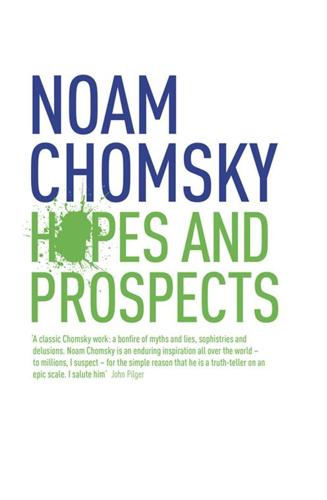
Hopes and Prospects
by
Noam Chomsky
Published 1 Jan 2009
India has strengthened its alliance with the United States, while also maintaining a somewhat independent stance. China and India have been growing rapidly, but they face very severe internal problems; whether they can be overcome is far from clear. One indication is their ranking on the UN Human Development Index (December 2008): India ranks 132 and China 94, a ranking that is more speculative in the case of China because of less easy access. The Middle East oil producers face even more dire problems despite the great wealth that they are now accumulating. Thirty years ago, French economist Maurice Guernier, one of the founders of the OECD, warned that the region is “heading for tragedy” unless it undertakes a rational investment policy to overcome its reliance on a wasting resource, a brief opportunity that will not return, and that has yet to be properly exploited.20 These are only a few of the serious challenges that lie ahead.
…
Klaus Naumann, John Shalikashvili, et al., Towards a Grand Strategy for an Uncertain World: Renewing the Transatlantic Partnership, (Center for Strategic & International Studies, Noaber Foundation), 2007, http://www.worldsecuritynetwork.com/documents/3eproefGrandStrat(b).pdf. 20. HDI, http://en.wikipedia.org/wiki/List_of_countries_by_Human_Development_Index. Maurice Guernier, An-Nahar Arab Report and Memo, Beirut, April 17, 1978. For further quotes see Towards a New Cold War. Eight: Turning Point? 1. Dan Fromkin, Washington Post, May 29, 2009. 2. Agence France-Presse, May 16, 2009. 3. Akiva Eldar, Haaretz, June 1, 2009. 4. See chap. 10, below. 5.
…
See “free trade” Taylor, Lance, 107 technology, 87–89, 93 terrorism, 26–29, 249 war on, 42, 60–61, 267–68 See also specific topics Texas, annexation of, 17 Thailand, 90 Thucydides, 37 Tiedeman, Christopher, 30 Timor Gap Treaty, 184–85 Torricelli, Robert, 51–52 Torture Convention, UN, 262 torture memos, 259–68 “trade,” concept of, 90 trade liberalization, 76 and third world, 80 See also “free trade” Trujillo, Rafael, 47 Turkey, 44 Turner, Mark, 100 “unholy trinity,” 72 Union of South American Nations (UNASUR), 59–60, 104, 115 United Nations (UN), 128–29, 163 Charter, 136, 150, 195, 200, 250 Committee on Disarmament, 167 Human Development Index, 175 Israel-Arab conflict and, 195, 252–53 R2P and, 20, 185, 278 Security Council, 129, 146, 148, 149, 169, 179, 195, 249, 278 Resolution 242 (UN 242), 161, 179 Resolution 687, 136, 170 Resolution 1887, 195, 200 Torture Convention, 262 World Food Program, 12 United Nations Relief and Works Agency (UNRWA), 151 United States characterizations of, 21 early history, 17–20 Fourth Fleet, 57 Liberal Illiberalism, 40–42 mega-embassies, 63, 203 “national identity,” 40 “national purpose,” 39–40 political ideals, 40–41, 46–47, 97, 122, 131–32 (See also “democracy promotion”; idealism) popular attitudes toward social democratic (welfare state) programs, 208–9 “transcendent purpose,” 39 See also specific topics Universal Declaration on Human Rights (UDHR), 38, 99 Uttar Pradesh, 213 Valenzuela, Arturo, 68 van Alstyne, R.
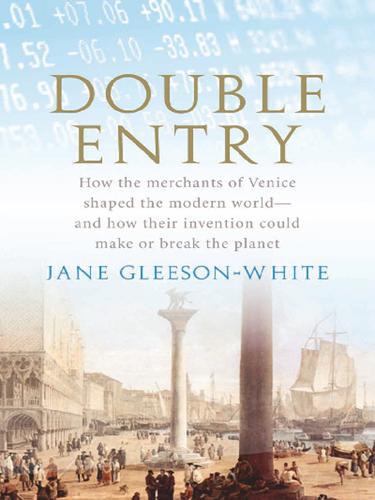
Double Entry: How the Merchants of Venice Shaped the Modern World - and How Their Invention Could Make or Break the Planet
by
Jane Gleeson-White
Published 14 May 2011
Or, as Gertner puts it, in a green accounting context, ‘a heightened focus on environmental indicators, for starters, could give environmental legislation far greater urgency’. Amartya Sen has arrived at a similarly pragmatic view. Sen’s involvement with alternate approaches to national accounting goes back to 1990, when he formulated the Human Development Index (HDI) with friend and colleague Mahbub ul Haq. The HDI incorporates into a nation’s accounts GDP modified by education and health. Sen and Haq met at Cambridge University in 1953, where they found they shared an interest in national development and agreed that it was wrong to equate development with economic growth.
…
Crusades 16, 17, 18 currencies 100 da Gama, Vasco 29 da Pisa, Leonardo see Fibonacci da Vinci, Leonardo 7, 27, 32, 47, 60, 65, 80–2, 84, 87–8 Dafforne, Richard 120–3 Dandolo, Enrico 52 Dark Ages dark arts 35, 83 Darwin, Charles 139, 165 Das Kapital (Marx) 165 Dasgupta, Sir Partha 231–2, 237, 238, 239 Datini, Francesco 23–6, 52, 96 de’ Barbari, Jacopo 79 de’ Belfolci, Folco 34, 44 De divina proportione (Pacioli) 66, 82, 84, 85–6 De ludo scacchorum (Pacioli) 87–8 De pictura (Alberti) 60, 117 De quinque corporibus (Piero) 66 De viribus quantitatis (Pacioli) 83 Dean, Graeme W. 203 debit and credit entries 13, 55, 93–4, 100 difficulties 101–2, 122–3 The Decline of the West (Spengler) 167 Defoe, Daniel 127–8 della Francesca, Piero 7, 32, 34, 44–5, 46, 47 mathematical treatises 45, 66, 75 perspective painting 60, 64, 76–7 della Rovere, Giuliano 59 Deloitte, William 145 Deloitte Touche Tohmatsu 217 demand management 185 democracy 15 depreciation 148, 149, 231 Der moderne Kapitalismus (Sombart) 161–2, 171 derivatives market 198, 200 Descartes, René 40 d’Este, Isabella 83, 84, 88 dividends 144, 146, 147, 148, 149, 202 Doge’s Palace 50, 56 Domenici, Pete V. 191 domestic accounts 15–16 double-entry bookkeeping 8, 115, 120, 166 Badoer’s system 55 and capitalism 159–60, 161–75 and decision-making 126–7 earliest surviving 20–1 to improve the mind 125 link with rhetoric 172–3 in modern era 135–6, 249 origins 6–7, 16, 21–2 Pacioli’s definition 92–3 six essential features 20–1 texts on 117, 136 use by Datini 24, 26 Venetian 55, 67, 97–100, 123–7, 131 see also Particularis de computis et scripturis du Pont, Irénée 156 ducats 50, 55 Dürer, Albrecht 79–80 earnings per share (EPS) 219 earth see planet Earth Earth Summit 2012 248–9 East India Company 142 Ebbers, Bernie 213 eco-accounting 249 economic growth 192–3, 225, 227, 233, 242, 245, 248 economics 185 political economy 171 ecosystems 239–40, 247 education 245 Euclid’s Elements 37–8 quadrivium 36, 38, 43 trivium 38, 43 Egypt 35, 36 Eisenstein, Elizabeth 116–17 Elements (Euclid) 37–8, 39, 67, 68, 84 Elgin Marbles 15 Engels, Friedrich 162, 164, 165 England 116, 121, 131, 133, 147 Enron 3, 173, 194–9, 201, 207, 212–13, 214–16, 222–3 environmental accounting 233–8, 245, 247 environmental damage 222–3, 224–5, 232–3, 240, 241–2, 248 equity 21, 243 Erasmus of Rotterdam 68, 84–5 Erlich, Everett 235 Ernst & Young 209, 210, 216, 217 Espeland, Wendy Nelson 172–3 Euclid, Elements 37–8, 39, 67, 68, 75, 84 Eugenius IV, Pope 34 Europe 17, 20, 21, 22–3, 40, 116, 156, 188 accounting associations 153 currencies 25 medieval 26, 70–1 universities 30, 40, 42 vernacular languages 41 European Environment Agency 247 Evans, John H. 173–5 exchange rates 55 externalities 236 factory system 136–7, 138, 139–41, 165, 166 Farolfi ledger 20–1 Fastow, Andrew 213 Fells, J.M. 140–1 Fibonacci 18–19, 75 Fibonacci numbers 19–20 Liber abaci 19–20, 22, 39–41, 63, 66, 67, 75 Financial Accounting Standards Board (US) 206, 213 financial information 203–6 financial statements 5, 143, 144, 146, 200, 205, 214, 215 Fitoussi, Jean-Paul 243–4 Florence 6, 17, 34, 61, 64, 84 abbaco schools 41 bank ledger 20 expansion of commerce 21 Flugel, Thomas 127 Fondaco dei Tedeschi 56 Ford Motor Company 250–1 forests 240, 241 Forster, E.M. 154–5 Forster, Nathaniel 137 France 147 Franciscans 62, 65, 88, 89 Frankfurt Book Fair 95 Frederick II 95 Freiburg 27 Friedman, Milton 221 fund transfers 54 G20 249 Galileo 116, 166 Geijsbeek, John B. 157–8 General Electric 204 The General Theory of Employment (Keynes) 177–8, 179, 183, 185–6 Genoa 6, 17 geometry 36, 37, 38, 63, 73, 75, 81 Germany 56, 68, 183 Gertner, Jon 244 Giovanni, Enrico 244 Giovanni Farolfi & Co. 20 Glitnir 5 Global Biodiversity Outlook 3 (Sukhdev) global financial crisis (2008) 3, 5, 197, 215, 242, 243–4 globalisation, of finance 206–7, 219, 221 Goethe, Johann W. von 128–31 golden ratio 66, 86 Goodwin, Sir Fred 197 governmental accounting 120 grammar 38, 43 Great Depression 177, 178, 179, 180, 227 Greece, ancient 15 mathematics 34–5, 37–8, 61 philosophers 37 green accounting 244 Green Economy Report (Sukhdev) 248–9 Greenspan, Alan 227–8 Gross Domestic Product (GDP) 3, 180–2, 225, 227–30, 232–3, 235, 237–8, 242–3, 246 alternatives to 243–7, 249 failings of 246 Gross National Product (GNP) 1–3, 181, 190, 231 Groves, Eddy 208–9 Guidobaldo, Duke of Urbino 66, 72, 79, 92 Gutenberg, Johann 68, 77 Hagen, Everett 186 Hamilton, Alexander 22 Hammurabi’s Code 14 Haq, Mahbub ul 245 Henry VIII 25 Herodotus 36 HIH 208, 209, 213, 215 Hindu–Arabic arithmetic 34, 41, 62, 67 Hindu–Arabic numerals 18–19, 21, 26–7, 38, 44, 52, 71, 75 Hoenig, Chris 246–7 honeybee pollination 237 Hoover, Herbert 177 Hopwood, Anthony housework, unpaid 229 How to Pay for the War (Keynes) 182–3 Hudson, George 142–3 human capital 231, 248 Human Development Index 245 Humanism (Florence) 43–4, 59–60, 68 Huxley, Aldous 32–3 income measurement 218–19, 226 income statements 5, 202, 203, 219 in ancient Rome 16–17 see also profit and loss accounts India 29, 238 trade/double entry 22 Indonesia 240 industrial revolution 131, 133, 139, 200, 226 inflation 182, 183 information processing 203 Institute of Accountants and Bookkeepers of New York (IABNY) 156, 157 Institute of Chartered Accountants in England and Wales (ICAEW) 153, 205–6 Insull, Samuel 202, 214 Insull Utility Investments 201–2 interest payments 25, 54, 96 international accounting 189, 207 International Accounting Standards Board 207, 214 International Monetary Fund 187 internet 204 inventory 97–9, 101 Islam 22, 39 Italy 6, 7, 16, 19, 28, 167–8 mathematics 34–42, 62 Jerusalem 17 joint stock companies 133, 136, 142, 147, 148 Joint Stock Companies Act 1844 144, 149 Jones, Edward T. 133–6 Jones’ English System of Book-keeping 133–6 journal 99, 100, 101, 103, 118, 203 Julius II, Pope 59 Kennedy, Robert F. 1–3, 229–30, 246 Keynes, John Maynard 8, 176, 177–80, 182–7, 190, 250 Klein, Naomi 221, 233 KPMG 210, 214, 217 Kreuger, Ivar 201 Kreuger & Toll 201 Kublai Khan 18 Kuznets, Simon 2, 177, 180–1, 189, 229 Lanchester, John 4, 198 Landefeld, Steven 228 Landsbanki 5 Latin 35, 41, 63, 71, 72, 73, 74, 116, 220 Lawrence, D.H. 154–5 Lay, Kenneth 195, 196, 197, 212–13, 214 ledgers 20, 93, 99–100, 103–4, 118, 203 14th century 24, 93 Badoer’s 52, 55 balancing 111 closing accounts 111–13 Farolfi 20–1 Lee, G.A. 20–1 Lee, Thomas A. 203 Lehman Brothers 5, 216 Liber abaci (Fibonacci) 19–20, 22, 39–41, 63, 66, 67, 75 limited liability 147–8, 149 Littleton, A.C. 17, 140, 146, 147, 158–9 Liverpool and Manchester Railway 141 Lives of the Most Eminent Painters (Vasari) 46 Living Planet Survey 241–2 Lloyds-HBOS 5 London and North Western Railway 141 Louis XII 82 Machiavelli 30 Mackinnon, Nick 79–80 Madoff, Bernie 142 Madonna and Child with Saints 47 magic 35, 40, 83, 220 Mair, John 118, 125, 130 Malatesta family 33–4, 43 Malthus, Thomas 171 Manchester cotton mill (Engels) 165 Mandela, Nelson 221 Mantua 83, 84 manufacturing 136–41 manuscripts 61, 70, 77 Manutius, Aldus 84 Manzoni, Domenico 118–19 maritime insurance 53 Mark the Evangelist 51–2 marketplace, 15th century 95 markets, impact on politics 221, 228 mark-to-model 213 Marshall Plan 188 Marx, Karl 162, 163–5, 171 mass production 138 mathematics 7, 22, 28, 47, 89–90 ancient Greek 34–5, 37–8, 63 Arab 18–19, 63 and art 85–6 Hindu 39–40 in Italy 34–42 and magic 35, 40, 220 medieval European 63, 251–2 taught as astrology 29–30, 42 universal application 73, 116–17 see also arithmetic Mattessich, Richard 12–13, 186 Maurice, Prince of Orange 120 Maxwell Communications 207 McDonald’s 224 Meade, James 183–4 measurement 23, 218–19 Medici of Florence 26, 64, 80, 168, 171 Mehmed II 57 Mellis, John 121 memorandum (waste book) 99, 101, 118 entering transactions 105–7, 118, 122 merchandise 104 merchant bankers 21, 26, 69 merchants 10, 23, 35, 41 Arab 18–19, 25 Indian 22 Italian 40, 42 Phoenician 36 Venetian 18, 27, 55–6, 69, 94–5, 149 Mesopotamia 12, 13, 14 metaphysics 36–7 Middle Ages 60, 251–2 Milan 30, 34, 47, 61, 80–3 Millennium Ecosystem Assessment 239 Monsanto 222 Monteage, Stephen 124, 126 Morgan, John Pierpont 156 multiplication 74, 75–6 music 36, 38 Naples 50, 61–2 Napoleonic War 145 national accounts 175, 179–88, 190–3, 226–7, 230, 242, 244 natural capital 230–1, 235–9 navigation charts 23 Neighborhood Tree Survey (NY) 241, 244 Netherlands 119, 120 New Deal (Roosevelt) 177, 202 New York Light Company 155 New York Stock Exchange 155, 176, 201 New Zealand 153, 230 Nicholas V, Pope 61 No Royal Road: Luca Pacioli and his times (Taylor) 46–7 Nordhaus, William D. 180, 191, 227 numbers 37, 218, 219–20, 249 Obama, Barack 215, 246 O’Grady, Oswald 208 Oldcastle, Hugh 121, 124 Olmert, Michael 168 One.Tel 208, 209, 213, 215 Organisation for Economic Co-operation and Development (OECD) 190, 242 Organisation for European Economic Co-operation (OEEC) 188 Ormerod, Paul 244 Ottoman Empire 29, 34, 50, 51, 56, 57, 116 Pacioli, Luca 7, 8, 27–8, 34, 35, 161, 219 abbaco mathematics 40, 41 as academic 65, 80, 84, 89 astrologer 42 birth 30 bookkeeping treatise see Particularis de computis and Piero della Francesca 45–6, 47–8 education 43–8 encyclopaedia see Summa de arithmetica on Euclid 84–5 games/tricks 83–4 itinerant teacher 61–6 last years 88–90 and Leonardo da Vinci 80–2, 84 in Milan 80–3 portrait 47, 79–80 and the printing press 66–72 remembered in Sansepolcro 31–2 in Rome 58–61 in Venice 49–58 Paganini, Paganino de 67–8, 71–2, 78, 85 painting 60, 64, 81 Pakistan 224, 245 Paris 23, 50 Particularis de computis et scripturis (Pacioli) 29–30, 78, 90–114, 117–18, 121 and capitalism 163 foundation of modern accounting 30, 75, 131, 157–9, 166 profit calculation 146–7 partnerships 108–9, 147 Patel, Raj 222, , 224 Patient Protection and Affordable Care Act 2010 (US) 246 patronage 59, 67, 70, 72 Paul II, Pope 59 Payen, Jean-Baptiste 139–40 Peking 18 Perspectiva (Witelo) 64 perspective 23, 42, 45, 60, 64, 76–7, 80, 82 Perugia 62–3, 64, 65 Petty, William 180 phi 86 Philip VI 23 philosophy 37, 40 Phoenicians 36 pi 36 Piazza San Marco 56 Pinto cars 250–1 Pisa 6, 17 Pitcher Partners 209, 210, 211–12 plagiarism 63 planet Earth 8–9, 248 accounting for 254 effects of cost-benefit approach 175 health of 224–5, 239 Plato 37 Platonic solids 45, 79, 86 Pliny the Elder 16 pollution 244 Polly Peck International 207 Polo, Marco 18 Ponzi scheme 142 Postlethwayt, Malachy 124 poverty 237, 246, 248, 249 Prato 23–4 Price, Samuel 145 Price Waterhouse 201, 207 PricewaterhouseCoopers 217 principlism 173–4 printing 29, 45, 60, 63, 66–72, 77–8, 90, 115–17 profit 21, 24, 97, 102–3, 127, 146–8, 159, 161, 167, 169 profit and loss accounts 55, 109–11, 112, 166 Pythagoras 35, 36–7 quadrivium 36, 38, 43 quant nerds 220 railways 141–3, 231 Ramsay, Ian 211 Ratdolt, Erhard 68, 116 record-keeping 15 Reformation 33 regulation 206–14, 215 Reid Murray Holdings 207–8 religion 24, 96, 116, 124–5, 220 see also Christian Church; Islam Renaissance 7, 8, 23, 26, 36, 59, 80, 86, 89, 168 art 6, 7, 44, 60, 86 Resurrection (Piero) 32, 33 retained-earnings statements 5, 219 rhetoric 172–3 Rialto 50, 55, 108 Ricardo, David 171 Rich, Jodee 213 Rinieri Fini & Brothers 20 Ripoli Press 70 Robert of Chester 39 Rockefeller, John D. 156 Roman numerals 19, 26–7, 38, 40, 71, 116 Romantic poets, English 131, 154 Rome 58–61, 64, 89 ancient 15–16 Rompiasi family 57, 58, 97 Roosevelt, Franklin D. 177, 178, 181, 202, 214, 215 Rose, Paul L. 71 Ross, Philip 209–10, 211 Rothschild banks 133 Royal Bank of Scotland 173, 197–8 royal estate management 16–17 Rule of Three 38, 41 Russia 153–4 salt 51 Samuelson, Paul A. 191, 227 Sansepolcro 30–4, 43–4, 48, 65, 77, 88–9, 168 Sanuto, Marco 66, 72 Sarbanes, Paul 191 Sarbanes-Oxley Act 2002 212, 215 Sarkozy, Nicolas 242–3, 245 satellite accounts 234–5 scandals/fraud 194–203, 206, 207–12, 215, 225 Schmandt-Besserat, Denise 11–12 Schumpeter, Joseph 169–70 science 35, 37, 40, 42, 67, 76, 116, 166–7 Scotland 27, 147, 150, 153 Scott, Sir Walter 150–1 Scuola di Rialto 58 Second World War 32, 181–5, 187, 227 Securities and Exchange Commission (US) 202–3, 213, 214 Sen, Amartya 243–4, 245 Sforza, Ludovico 80, 81–2, 85, 86, 168 Sikka, Prem 216, 217 Silberman, Mark 213 Simons, James 220 Sistine Chapel 65 Sixtus IV, Pope 59 Skidelsky, Robert 178, 182, 187 Skilling, Jeffrey K. 196, 197, 212, 214 Smith, Adam 171 social sciences 171, 175 socialism 171 Society of Accountants, Edinburgh 152 Sombart, Werner 161–2, 164, 165–6, 166–8, 169, 170, 171–2, 173 Spain 22, 39 Spengler, Oswald 167 Sri Lanka 232–3, 240 State of the USA 246 Stevin, Simon 120, 121, 166, 169 Stiglitz, Joseph 243–4 Stiglitz-Sen-Fitoussi Commission 243–4 stock markets 143 stocktaking 166 Stone, Sir Richard 183–5, 188–9, 190 sub-prime mortgages Sukhdev, Pavan Summa de arithmetica (Pacioli) 57, 61, 62–3, 64, 72–7, 80, 82 printing 66–8, 71–2 publication 32, 77–9 sustainability 232, 243, 249 System of Integrated Environmental and Economic Accounting (UN) 234 System of National Accounts (UN) 189–90, 247 tabulae rationum 16 Taleb, Nassim N. 220 tariffs 63 Tartaglia, Nicholas 76 Taylor, R.
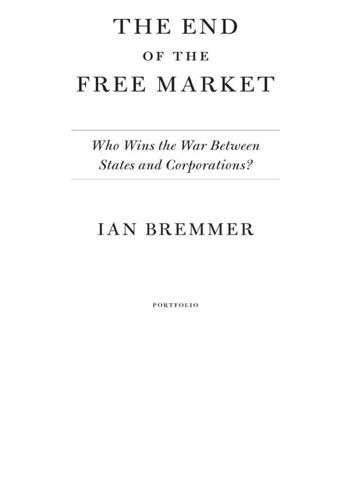
The End of the Free Market: Who Wins the War Between States and Corporations?
by
Ian Bremmer
Published 12 May 2010
No wealthy Western countries appear more skeptical of free markets than those of Scandinavia—Sweden, Norway, Finland, Denmark, and Iceland. Among larger countries, they have both high standards of living and narrow gaps between rich and poor. Few countries have come closer to eliminating poverty and illiteracy.4 According to the 2008 Human Development Index from the United Nations, which ranks 179 countries according to a composite score that includes life expectancy, educational achievement, and wealth, all five of these countries appeared among the top 13 in the world.5 How have they done it? Remember the firestorm during the 2008 U.S. presidential campaign over Barack Obama’s comment that it’s good for all when government “spreads the wealth around”?
…
This was a reversal of Sarkozy’s previous message: He had been elected in May 2007 on a conservative platform of cutting taxes, bureaucracy, and state jobs. 2 MITI’s functions were taken over by the newly created Ministry of Economy, Trade and Industry (METI) in 2001. 3 This movement from MITI to the premiership was known as amakudari, or “descending from heaven.” 4 The Scandinavian countries regularly hold top places in the UN’s annual Human Development Indexes, which measure per capita income, life expectancy and other leading health indicators, literacy rates, educational enrollment, and other factors to tabulate scores of quality of life globally by country. Data are also drawn from the Gini Index, which assesses levels of economic inequality within countries. 5 Human Development Reports, http://hdr.undp.org/en/statistics. 6 The term dirigisme was coined by Jean-Baptiste Colbert as Louis XIV’s finance minister in the second half of the seventeenth century.
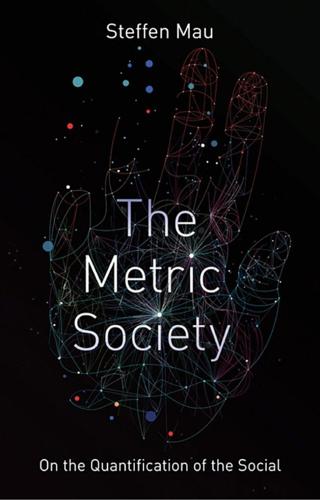
The Metric Society: On the Quantification of the Social
by
Steffen Mau
Published 12 Jun 2017
The politics of indicators works best when, in the perception of the public, the theoretical construct and the indicator are seen as one. This would be the case, for instance, if our concept of intelligence coincided exactly with the faculty measured by intelligence tests. Or if our notion of human development matched the criteria of the Human Development Index, which takes into account only life expectancy, education and per capita GDP – a woefully inadequate measure from an empirical perspective. Numbers offer an (often very convincing) answer to our need for objectivity, relevance and rationalization. Although they abstract from concrete social contexts, they are more than mere mathematics.
…
Index ‘20-70-10’ rule 155 academics 139 and altmetrics 77–8 and h-index 75–6, 139, 144 self-documentation and self-presentation 76–7 status markers 74–8 accountability 3, 91, 115, 120, 134, 147, 159 accounting, rise of modern 17 activism alliance with statistics 127 Acxiom 164–5 ADM (automated decision-making) 63 Aenta 108 Airbnb 88 airlines and status miles 71–2 algorithms 7, 64, 127, 167 and nomination power 123–5, 126, 141–2 AlgorithmWatch 127 altmetrics 77–8 Amazon 96, 150, 156 American Consumers Union 167 apps 99, 105, 150 finance 66–7 fitness and health 68, 102–3, 104, 107 Moven 65–6 Asian crisis (1997) 57 audit society 24–5 automated decision-making (ADM) 63 averages, regime of 155–7 Barlösius, Eva 113 Baty, Phil 48 Bauman, Zygmunt 143 behavioural reactivity 131 benchmarks, regime of 155–7 Berlin, television tower 40 Better Life Index 20 Big Data 2, 79, 123 biopolitics 19 of the market 70 biopower 19 Boam, Eric 104 body images, regime of 156–7 Boltanzki, Luc 125–6 border controls 73–4 borders, smart 74 Bourdieu, Pierre 111, 114, 115, 162 BP 108 Bude, Heinz 37 bureaucracy 18 calculative practices 11, 124 expansion of 11, 115 and the market 15–17 Campbell, Donald T. 130–1 Campbell's Law 130–1 capitalism 15, 54, 55 digital 150 capitalists of the self 163 Carter, Allan 48 Chiapello, Ève 125–6 Chief Financial Officer (CFO) 17 China Sesame Credit 67 Social Credit System 1, 166 choice revolution 118–19 class and status 33 class conflict switch to individual competition 168–70 classification 60–80 see also scoring; screening collective body 104–6 collective of non-equals 166–8 commensurability 31–3, 44, 159 Committee of Inquiry on ‘Growth, Wealth and Quality of Life’ (Germany) 127 commodification 163, 164 Community (sitcom) 96 companies 16–17 comparison 7, 26–39, 159 and commensurability/incommensurability 31–3 and competition 28 dispositive(s) of 7, 28–31, 159, 169 new horizons of 33–5 part of everyday life 27 prerequisites for social 35–6 registers of 135–9 and self-esteem 30 shifts in class structure of 33 and status 29–30, 36–7 universalization of 27–8 COMPAS (Correctional Offender Management Profiling or Alternative Sanctions) 79 competition 6, 7, 115–19, 159–60 and comparison 28 increasing glorification of 159 and neoliberalism 23 and performance measurement 115–19 and quantification 116–17 and rankings 45 switch from class conflict to individual 168–70 competitive singularities 169 consumer generated content (CGC) 85–6 control datafication and increased 143, 147, 169 individualization of social 143 levers of social 144 relationship between quantification and 78 conventionalization 128 Cordray, Julia 97 Correctional Offender Management Profiling or Alternative Sanctions (COMPAS) 79 Corruption Perceptions Index 26 cosmetic indicators 135 Couchsurfing 88 credit risk colonialization 64 credit scoring 63–7 and social status 67 criminal recidivism, scoring and assessment of 62–3, 79 criteria reductionism 22 cumulative advantages, theory of 174 CureTogether 106 customer reviews 82–6, 87, 88 Dacadoo 68 Daily Telegraph 149 darknet 87 data behaviourism 171 data leaks 152 data literacy 21 data mining 4, 22, 163 data protection 72, 142 data repositories 62, 73–4 data storage 22, 73, 135 data voluntarism 4, 152, 153, 159 dating markets and health scores 70 de Botton, Alain 30 decoupling 133, 136, 174–5 democratization and digitalization 166 difference 2 visibilization and the creation of 40–3 ‘difference revolution’ digitalization giving rise to 166–7 digital capitalism 150 digital disenfranchisement of citizens 151 digital health plans 70 digital medical records 67 digitalization 2, 7, 21–2, 25, 63, 73, 80, 111, 123, 180 and democratization 166 giving rise to ‘difference revolution’ 166–7 as ‘great leveller’ 166 quantitative bias of 124 disembedding 13 distance, technology of 23–4 diversity versus monoculture 137–40 doctors, evaluation of by patients 92–3 Doganova, Liliana 5–6 double-entry bookkeeping 15, 163 e-recruitment 61 eBay 87 economic valuation theory 5 economization 22–4, 38, 115, 117 and rise of rankings 46 education and evaluation 89–91 evaluation of tutors by students 89–90 law schools 44, 138–9 output indicators and resource allocation in higher 132 and Pisa system 122, 145–6 Eggers, Dave The Circle 41, 82–3 employer review sites 83 entrepreneurial self 3, 154 epistemic communities 121 equivalence 16, 27 Espeland, Wendy 44, 139 esteem 29, 30 and estimation 15, 38 see also self-esteem Etzioni, Amitai The Active Society 20 European Union 122 evaluation 81–98 connection with recognition 38 cult and spread of 7, 97–8, 134 education sector 89–91 loss of time and energy 136 and medical sector 91–3 peer-to-peer ratings 87–8 portals as selectors 84–6 pressure exerted by reviews 147–8 and professions 89–93 qualitative 117 satisfaction surveys 82–4 and social media 93–8 of tutors by students 89–90 evidence-basing 3 exercise and self-tracking 101–4 expert systems 7 transnational 121–2 experts, nomination power of 119–23, 126 Facebook 94 FanSlave 95 Federal Foreign Office (Germany) 53 feedback power of 147–8 and social media 93–4 Fertik, Michael 66 Fitch 56 fitness apps 68, 102–3, 104, 107 Floridi, Luciano 105 Foucault, Michel 19 Fourcade, Marion 163–4 Franck, Georg 29 fraud 137 Frey, Bruno ‘Publishing as Prostitution’ 146 ‘gaming the system’ 132 GDP (gross domestic product) 14 dispute over alternatives to 127–8 General Electric 155 Germany Excellence Initiative 51 higher education institutes 52–3 Gerstner, Louis V. 130 Glassdoor.com 83 global governance 122 globalization 34, 73 governance 12 self- 19, 37, 105 state as data manager 17–20 ‘government at a distance’ 145 governmentality 112 GPS systems 150 Granovetter, Mark ‘The strength of weak ties’ 147 gross domestic product see GDP h-index 75–6, 139, 144 halo effect 90 Han, Byung-Chul 154 Hanoi, rat infestation of 130 happiness and comparison 30 Hawthorne effect 107 health and self-tracking 101–4 health apps 68, 102–3, 104, 107 health scores 67–71 health status, quantified 67–71 Healy, Kieran 163–4 Heintz, Bettina 14, 33, 34 hierarchization/hierarchies 1, 5, 6, 11, 33, 39, 40–59, 174 and rankings 41–2, 43, 44, 48 higher education, output indicators and resource allocation 132 Hirsch, Jorge E. 75 home nursing care 135–6 hospitals and performance indicators 131 Human Development Index 14 hyperindividualization 167–8 identity theory 29 incommensurability 31–3 indicators 2, 3, 5, 20, 23–4, 34, 114, 159 and competition 116–17 and concept of reactive measurements 129–33 cosmetic 135 economic 7 governance by 24 politics of 14 status 35, 75 see also performance indicators individualization of social control 143 industrial revolution 19 inequality 6, 8, 158–76 collectives of non-equals 166–8 establishment of worth 160–2 inescapability and status fluidity 170–4 reputation management 162–6 switch from class conflict to individual competition 168–70 inescapability of status 170–4 information economy 2 information transmission interfaces, between social subsystems 165–6 institutional theory 113 insurance companies 72, 108, 151, 152, 167 International Labour Organization 122 investive status work 36–7 Italian Job, The (film) 138 justice 126 Kaube, Jürgen 2 Kula, Witold 16 Latour, Bruno 34 law schools 44, 138–9 league tables 35, 43, 46, 47, 51, 52, 53, 91, 138, 139, 146, 162, 175 legitimate test, concept of 125–6 Lenin, Vladimir 116 lifelogging 99, 109, 153 Luhmann, Niklas 166 Lyon, David 142 McClusky, Mark 101 McCullough, Nicole 97 Mann, Steve 153 market(s) calculative practices of 15–17 and neoliberalism 23 and rating agencies 55–6 Marron, Donncha 65 Matthew effect 174–5 measurement, meaning 10 media reporting 33 medical sector and evaluation 91–3 hospitals and performance indicators 131–2 MedXSafe 70 meritocracy 23, 161 Merton, Robert K. 161, 174 ‘metric revolution’ 16 Miller, Peter 112 mobility 71–4 border controls 73 digital monitoring of 72 and scoring 71–4 smart cars 72 and status miles 71–2 money as means of exchange 16 monoculture versus diversity 137–40 mood, self-tracking of 101–4 Moody's 56 motivation 106–10 and rankings 45 Moven 65–6 Münch, Richard 145 Nachtwey, Oliver 150 naturalization 113 neoliberalism 3, 12, 23, 25 basic tenets of 23 New Public Management 3, 117, 136, 155 NHS (National Health Service) 118 nomination power 111–28 and algorithms 123–5, 126, 141–2 critique of 125–8 and economization 115 of experts 119–23, 126 performance measurement and the framing of competition 115–19 and the state 112–15 non-equals, collectives of 166–8 normative pressure 144–6 North Korea 144 ‘number rush’ 2 numbers 13–14, 15 numerical medium 8, 14, 16, 18, 28, 33, 113, 160, 166 objectivization 35, 154, 160 OECD 122 Offe, Claus 175 Old Testament 17 omnimetrics 9 O’Neil, Cathy Weapons of Math Destruction 79 optimization 12, 25 Oral Roberts University (Oklahoma) 108 Peeple app 96–7 peer-to-peer ratings 87–8 Pentland, Alex 151 people analytics 150–1 performance enhancement 12 performance indicators 12, 38, 53, 74, 118, 119, 120, 129, 155 and hospitals 131–2 performance measurement 23, 38, 115–19 performance-oriented funding allocation 22 performance paradox 132 performance targets 4 Personicx 165 Pisa system 122, 145–6 politicians 14, 120 politics 114 portals 84–6, 88, 90–1 power of nomination see nomination power prestige 8, 29, 67, 144 principal–agent problem 147–8 private consultancy services 117 professional control, loss of 133–4 professionalization 19, 133 professions and evaluation 89–93 publicity 33 QS ranking 52 qualitative evaluation 117 quantification advantages of 8 engines of 21–5 history 11 impact and consequences of 5, 6 meaning 10, 12–15 risks and side-effects 7, 129–40 role of 35 quantified self 99–110 Quantified Self (network) 99–100 quantitative evaluation see evaluation quantitative mentality 11–12 quasi-markets 116, 118–19 race and assessment of criminal recidivism risk 79 rankings 47–53, 58–9, 60, 144 and competition 45 and compliance 44 differences between ratings and 42–3 disadvantage of 43–4 economization and rise of 46 and evaluation portals 84–6 and hierarchies 41–2, 43, 44, 48 and image fetishization 47 and motivation 45 as objectivity generators 41 performance-enhancing role 46 popularity of 41 as positional goods 45 purpose of 45 and reputation 48, 49, 50, 52 as social ushers 42 and status anxiety 46–7 university 6, 7, 43, 47–53, 144, 175 Welch's forced 155–6 rating agencies, market power of 53–9 ratings 41–3, 53–9, 60 definition 54 differences between rankings and 42–3 and evaluation portals 84–6 as objectivity generators 41 peer-to-peer 87–8 as social ushers 42 rationalization 5, 11, 12, 14, 15, 16, 19, 105, 110, 154, 163 Raz, Joseph 31–2 reactive measurements 129–33 recommendation marketing 85 recruitment, e- 61 reference group theory 29 reputation 29, 39, 66, 74, 121 academic 75–6 cultivating good 47 and rankings 48, 49, 50, 52 rating of 87–8 signal value of 87 social media and like-based 93–8 reputation management 4, 50, 162–6 reputation scoring 87–8 research community 146 and evaluation system 146 and review system 146–7 ResearchGate 77 reviews 136 customer 82–6, 87, 88 doctor 92 high demand for 136 lecturers/tutors 90 performance 25, 149 pressure exerted by popular 147 Riesman, David 37 risks of quantification 129–40 loss of professional control 133–5 loss of time and energy 135–7 monoculture versus diversity 137–40 reactive measurements 129–33 Rosa, Hartmut 94, 173 Rose, Nikolas 112 Rousseau, Jean-Jacques 28–9 running apps 107 Runtastic app 107 satisfaction surveys 82–4 Sauder, Michael 44, 139 Schimank, Uwe 134 Schirrmacher, Frank 152 Schmidt, Eric 147 schools and choice 118–19 evaluation of 90–1 league tables 46 and Pisa system 122, 145–6 scoring 7, 60, 61, 78–80 academic status markers 74–8 and assessment of criminal recidivism 62–3 credit 63–7 health 67–71 mobility value 71–4 pitfalls 79 screening 7, 60–1, 78–9 border controls 73–4 e-recruitment 61–2 function 60–1 smart cars 72 self-direction 105, 121, 143 self-documentation 153 and academic world 76–7 self-enhancement 3, 137 self-esteem 29, 37, 170 and comparison 29, 30 rankings and university staff 50–1 self-governance 19, 37, 105 self-image 37, 47, 50, 89 self-management 3, 20, 25 self-observation 25, 42 quantified 99–110 self-optimization 3, 19, 104, 109, 163 self-quantification/quantifiers 4, 13, 25, 101, 154–5, 156 self-reification 105 self-responsibility 25, 110 self-tracking 4, 7, 99, 100, 106, 109–10 collective body 104–6 as duty or social expectation 108 emotions provoked 109 health, exercise and mood 101–4 and motivation 106–10 problems with wearable technologies 103–4 running and fitness apps 68, 102–3, 104, 107 and sousveillance 153 as third-party tracking 154 self-worth 29, 36, 38, 47, 51, 170 and market value 67 Sesame Credit (China) 67 Shanghai ranking 47 ‘shared body’ 105 shared data 142, 152–3 Simmel, Georg 28 ‘small improvement argument’ 32 smart borders 74 smart cars 72 smart cities 21 smart homes 21 ‘social accounts’ 20 Social Credit System (China) 1, 166 social engineering 20 social management 20 social media 93–8, 153, 166 drivers of activity 93 and feedback 93–4 forms of connection 93 likes 93–5 and online disinhibition 153 and reputation building 95 resonance generated by 94 and running/fitness apps 107 social research 19–20 social security systems 19 social status see status social worth see worth socio-psychological rank theory 46 sociometrics/sociometers 2, 5, 36, 74, 141, 150–1 Sombart, Werner Modern Capitalism 15–16 sousveillance 153 sport 33 rise of world 35 Staab, Philipp 149–50 Stalder, Felix 124 Standard & Poor's 54, 56 statactivism 127 state as data manager 17–20 nomination power of the 112–15 statistics 14 origins of word 17 status and class 33 and comparison 29–30, 36–7 and credit scoring 67 inescapability from 170–4 and life satisfaction 30 seeking of 36 status anxiety 30 and rankings 46–7 status competition 26–39 status data 2, 80, 159, 161–2, 169, 174 functioning as symbolic data 8, 162 status fluidity 170–4 status insecurity 4 status miles 71–2 status sets 161–2 status symbols 158 status work 4, 36–7, 174 Stiglitz-Sen-Fitoussi Commission (France) 127 Streeck, Wolfgang 171–2 subprime crisis (2007) 57, 64 surveillance 8, 142, 152 interdependence of self- and external 153–5 and neoliberalism 23 workplace and technological 149–51 surveys, satisfaction 82–4 symbolic capital 174 status data as 8, 162 target setting 22 tariff models 152–3 technological surveillance, in the workplace 149–51 technologies of the self 25 tertium comparationis 32 Thomas theorem 59 Thompson, David C. 66 Times Higher Education ranking 47, 48, 53 tourism portals 85 tracking as double-edged sword 142 see also self-tracking trade relations 16 transnational expert systems 121–2 transparency 3, 91, 141–3, 144, 147 Transparency International 26 ‘transparent body’ 105 TripAdvisor 85 Trustpilot 86 Turkey 54 tutors evaluation of by students 89–90 Uber 156 űbercapital 163–4 UN Sustainable Development Goals 20 United Nations 122 university lecturers evaluation of 89–90 object of online reviews 90 university rankings 6, 7, 43, 47–53, 144, 175 valorization 5, 58, 124, 161 valuation 5–6 value registration 161 Vietnam War 131 visibilization, and the creation of difference 40–3 Webb, Jarrett 104 Weber, Max 15, 16, 154 Weiß, Manfred 119 Welch, Jack 155 ‘winner-take-all society’ 136 Wolf, Gary 99–100 Woolgar, Steve 34 workplace technological surveillance in the 149–51 World Bank 122 worth 5–6, 7, 11, 78–80, 170 assessments of 27 establishment of 160–2 orders of 11, 15, 29 self- 29, 36, 38, 47, 51, 67, 170 Young, Michael 161 The Rise of Meritocracy 23, 161 Zillien, Nicole 105 Zuckerberg, Mark 158 POLITY END USER LICENSE AGREEMENT Go to www.politybooks.com/eula to access Polity's ebook EULA.
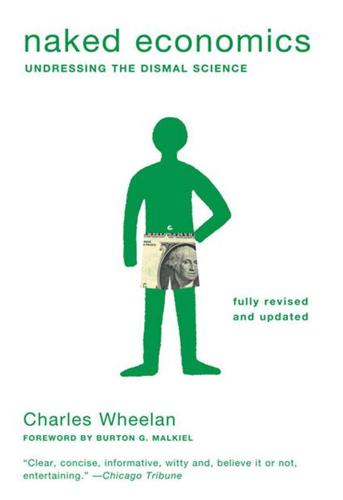
Naked Economics: Undressing the Dismal Science (Fully Revised and Updated)
by
Charles Wheelan
Published 18 Apr 2010
GDP does not take into account the distribution of income; GDP per capita is a simple average that can mask enormous disparities between rich and poor. If a small minority of a country’s population grow fabulously rich while most citizens are getting steadily poorer, per capita GDP growth could still look impressive. The United Nations has created the Human Development Index (HDI) as a broader indicator of national economic health. The HDI uses GDP as one of its components but also adds measures of life expectancy, literacy, and educational attainment. The United States ranked thirteenth in the 2009 report; Norway was number one, followed by Australia and Iceland.
…
Both of these things make the underlying economic problems worse, which causes asset prices and the currency to plunge further. The country pleads with the rest of the world to help stop the downward economic spiral. To get a sense of how this all plays out, let’s look at the most recent victim: Iceland. Iceland is not a poor, developing country. In fact, Iceland was at the top of the UN Human Development Index rankings in 2008. Here are Iceland’s three acts, as best I can figure them out: Act I. In the first decade of the twenty-first century, Iceland’s currency, the Icelandic krona, was extremely strong, and real interest rates were high by global standards. Iceland’s relatively unregulated banks were attracting capital from all over the world as investors sought high real returns.
…
The consultancy AT Kearney conducted a study of how globalization has affected thirty-four developed and developing countries. They found that the fastest-globalizing countries had rates of growth that were 30 to 50 percent higher over the past twenty years than countries less integrated into the world economy. Those countries also enjoyed greater political freedom and received higher scores on the UN Human Development Index. The authors reckon that some 1.4 billion people escaped absolute poverty as a result of the economic growth associated with globalization. There was bad news, too. Higher rates of globalization were associated with higher rates of income inequality, corruption, and environmental degradation.
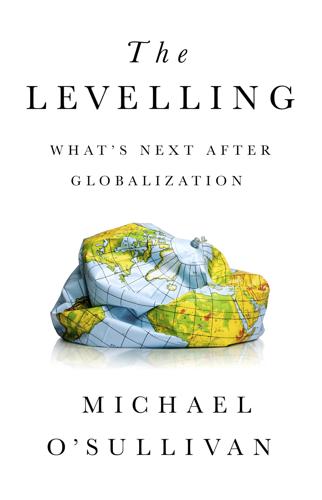
The Levelling: What’s Next After Globalization
by
Michael O’sullivan
Published 28 May 2019
Will governments bother to tackle very deep-seated problems like low productivity, will they address endemic corruption in southern and eastern Europe, and will they take the time to build adequate health-care systems across Asia? Country Strength Intangible infrastructure is just one key element in the equation that makes up country strength. The other components in this policy recipe are human development (as measured by the UN Human Development Index), the openness of an economy, the level of its macroeconomic volatility, and, finally, with a little overlap with intangible infrastructure, the quality of governance.35 In general the idea of country strength strikes a chord with the broad literature on political economic development. The relevance of the notion of country strength underpins Francis Fukuyama’s theory in Political Order and Political Decay, where he outlines the way in which strong institutions, trust across public life, the rule of law, and an effective state helped underwrite social and economic progress, or more simply, as he puts it, “the road to Denmark.”36 It comes as no surprise that small, advanced countries tend to do well in terms of strength, but the results are biased in favor of old small countries.
…
To try to synthesize what a pole entails, we can point toward several initial factors: size of a country’s GDP, size of its population, the existence of an imperial legacy, the extent of its regional economic role, its military size and sophistication (e.g., absolute spending, number of fighter jets and ships), its place on the UN Human Development Index relative to its region, and its participation (or not) in a regional grouping (such as NATO or the European Union). Under this schema the European Union, the United States, China, and potentially India are poles, but Japan and Russia would not qualify as distinct poles. Russia, for instance, scores well on certain aspects of multipolarity (e.g., militarily), but in its current state it may never become a true pole in the sense employed here.
…
The subcomponents of intangible infrastructure are as follows: in education: secondary and tertiary enrollment ratio; in health care: infant mortality, life expectancy, and health spending per capita; in technology: cellphone users (per 100), telephone lines (per 100), secure servers (per million), internet users (per 100), research-and-development expenditure (percent of GDP); in financial services: credit information score, legal rights score, lending risk premium, equity market capitalization (percent of GDP); in business services: ease of doing business rank, import delays, mean tariff rates, procedures needed to register a business. 33. Diamond, “Facing Up to the Democratic Recession.” 34. Data collected from World Bank World Governance Indicators, http://info.worldbank.org/governance/wgi/?xyzallow#home. 35. On the UN Human Development Index, see United Nations Development Programme, “Human Development Reports,” http://hdr.undp.org/en/composite/HDI. Quality of governance is expressed by the average of Transparency International’s Corruption Perceptions Index and the Center for Systemic Peace’s State Fragility Index. In assessing an economy’s macroeconomic volatility, two variables are important: standard deviation of GDP growth rates and inflation, taken from the World Bank database, from 1960 onward.

The Ministry for the Future: A Novel
by
Kim Stanley Robinson
Published 5 Oct 2020
The spread between the richest and the poorest is an important consideration, but when everyone in that spread is pretty well off, this is a different situation than when everyone across the spread is poor. Thus other rubrics to think about inequality have been devised. One of the best is the “inequality-adjusted Human Development Index,” which is no surprise, because the Human Development Index is already a powerful tool. But it doesn’t by itself reveal the internal spread of good and bad in the country studied, thus the inequality adjustment, which gives a more nuanced portrait of how well the total population is doing. While discussing inequality, it should be noted that the Gini coefficient for the whole world’s population is higher than for any individual country’s, basically because there are so many more poor people in the world than there are rich ones, so that cumulatively, globally, the number rises to around 0.7.
…
Criticisms of GDP are many, as it includes destructive activities as positive economic numbers, and excludes many kinds of negative externalities, as well as issues of health, social reproduction, citizen satisfaction, and so on. Alternative measures that compensate for these deficiencies include: the Genuine Progress Indicator, which uses twenty-six different variables to determine its single index number; the UN’s Human Development Index, developed by Pakistani economist Mahbub ul Haq in 1990, which combines life expectancy, education levels, and gross national income per capita (later the UN introduced the inequality-adjusted HDI); the UN’s Inclusive Wealth Report, which combines manufactured capital, human capital, natural capital, adjusted by factors including carbon emissions; the Happy Planet Index, created by the New Economic Forum, which combines well-being as reported by citizens, life expectancy, and inequality of outcomes, divided by ecological footprint (by this rubric the US scores 20.1 out of 100, and comes in 108th out of 140 countries rated); the Food Sustainability Index, formulated by Barilla Center for Food and Nutrition, which uses fifty-eight metrics to measure food security, welfare, and ecological sustainability; the Ecological Footprint, as developed by the Global Footprint Network, which estimates how much land it would take to sustainably support the lifestyle of a town or country, an amount always larger by considerable margins than the political entities being evaluated, except for Cuba and a few other countries; and Bhutan’s famous Gross National Happiness, which uses thirty-three metrics to measure the titular quality in quantitative terms.
…
A whole new economics was springing up to describe and analyze these new developments, and inevitably this new kind of economics included a lot of new measuring systems, because economics was above a system of quantified ethics and political power that depended on measurement. So now people were using older instruments like the Inclusive Prosperity Index, the Genuine Progress Indicator, the UN’s Human Development Index Inequality Adjusted, and the Global Footprint Index. And they were also making up many new ones as well. All these new indexes for economic health were often now amalgamated to a new comprehensive index of indexes, called the Biosphere and Civilization Health Meta-Index. BCHMI. The carbon coin had played its part in all of this.
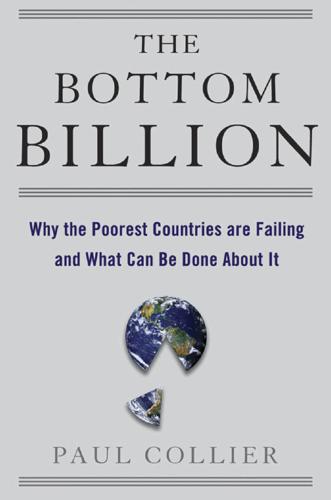
The Bottom Billion: Why the Poorest Countries Are Failing and What Can Be Done About It
by
Paul Collier
Published 26 Apr 2007
Speight’s slogan, “Fiji for the Fijians,” was a very emotive rallying cry, but was social justice really Speight’s only motive? I suppose that as a rallying cry “Give the mahogany contract to the Americans” would have lacked some of the same frisson of an implied struggle on behalf of the oppressed. How about Sierra Leone? Sierra Leone is a poor and miserable country at the bottom of the Human Development Index (a composite measure of life expectancy, literacy, and income), and its inhabitants most surely have plenty of reasons for grievance. The rebel leader Foday Sankoh came close to hitting the jackpot of gaining power—his forces were so strong relative to those of the government that he was offered amazingly generous settlement terms, including the post of vice president.
…
See also Failing states growth, 190 of reforms, 85 societies learning from, 66 False consciousness, 41 Fearon, Jim, 23 Fiefdoms, 122 Focus, 189–90 Foreign currency, 91, 162 France, 113 Free press, 48 Freedom House, 48 Fujimori, Alberto, 148 Future-generations fund, 142 G8 agenda, 13, 192 doubling aid to Africa, 100, 138 governments coordinated by, 189 summit, 100, 121, 138 G8 policy, 62 conflict trap relating to, 37 failing states relating to, 73–75 natural resource trap relating to, 52 Geography, 26, 54 Githongo, John, 181 Global aid budget, 32 Global capitalism, 5 Global Corruption Report 2005, 138 Global economic system, x, 93 Global market bottom billion joining, 86 breaking into, 83 hostility of, 6 resource-scarce economies joining, 85 Global poverty, x, 191 low income meaning, 20 reduction, xii, 11 resource wealth contributing to, 39 Global public goods, 156 Globalization, 6, 88, 175 capital provided by, 87 consequences for bottom billion, 81, 95 opportunities provided by, 10 ramifications on developing countries, 80 Governance aid relating to, 102–3, 108–11 in Bangladesh, 68 in bottom billion, 136, 179, 185 conditionality, 110 growth process relating to, 64–65 of oil revenues, 142–43 opportunities relating to, 66 transforming, 79 Governments of bottom billion countries, 4–5, 190 coordinating range of policies, xi coordination between multiple, 188–89 discrimination perpetrated by, 24 intentions signaled by, 90–91 military spending controlled by, 132 transforming money into public services, 66 treatment of investors, 153 Grand extortion, 133 Greenaway, David, 159 Grievances, 18, 22 awareness of, 30 flagrant, 24 Growth, 8–13 aid raising, 102 in Botswana, 50 Burkina Faso/Uganda sustaining rates of, 63 civil war resulting from slow, 20–22 development role of, 8–13 economic policies/governance relating to, 64–65 economic reform inducing, 41 electoral competition overcoming blockage to, 50 ethnic diversity relating to, 49 failure of, 190 lack of, leading to civil war, 20–22 in landlocked countries, 56 natural resource wealth harnessed for, 38 oil lowering, 102 population, 6 rate of bottom billion, 9–12, 35, 100 rate of failing states, 74 reducing risk, 32, 106 spilling over from neighbors, 58–59 strategy, 58 “Growth is Good for the Poor,” 11 Gueï, Robert, 129 Hegre, Harvard, 34 Hoeffler, Anke, 17, 23, 33, 91, 93, 103–4, 123, 127, 132–33, 152 Homicide rate, 34 Hope, 9 Hopelessness, 20 Human capital, 93 Human Development Index, 25 Hussein, Saddam, 42, 49, 51, 75 IBRD. See International Bank for Reconstruction and Development IDA. See International Development Association Images, xii IMF. See International Monetary Fund Immigration, 61 Import restrictions, 169 Improvement policy, 90 sustained, 70, 139 Income, 7 in bottom billion, 8–9 gap, 10 generated by primary commodity exporting, 81 inequality, 23–24 level to ensure safety, 99 low, 26 relating to war, 19–20 resource surplus increasing, 44 Independent service authority, 118, 120 India, 60, 120 Indonesia, 92 Industrial Surveys of Africa, 166–67 Industrialization, 62 Infrastructure, 59, 108, 121, 138 Institutional Investor, 89, 92–93 International arbitration, 154 International Bank for Reconstruction and Development (IBRD), 171 International charters, 139 opposition of, 182 promulgation of, 185 International Development Association (IDA), 171–72 International insurance, 154 International Monetary Fund (IMF), 8, 40, 58, 67, 186 International standards, 140, 143 Interventions, 72.
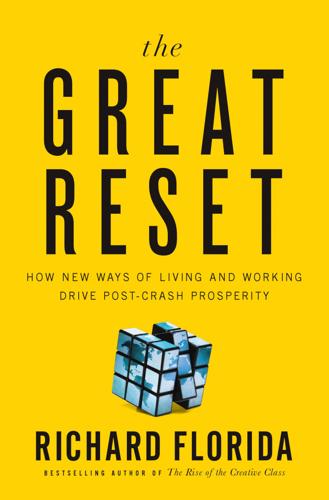
The Great Reset: How the Post-Crash Economy Will Change the Way We Live and Work
by
Richard Florida
Published 22 Apr 2010
Shanghai, China’s industrial and financial center, ranks thirty-sixth on the GFCI—roughly equivalent to the British Virgin Islands and the Bahamas. As fast-growing as it is, China as a whole remains an emerging economy in every sense of that phrase: it ranks thirtieth on the Davos Competitiveness index, eighty-first on the U.N. Human Development Index, and thirty-sixth on my own Global Creativity Index—a measure of global innovation, openness, and competitiveness. It will be some time until it can compete with the more established economic powers of the world, never mind the United States. While some Chinese observers seem to be cautiously optimistic about their financial prospects, others are less so—a fact conveyed in this headline from the China Digital Times: “Shanghai as World Financial Capital?
…
Regis hotels, 176 Strumsky, Deborah, 64–65 suburbs current growth inward from rural areas, 144–146 current spatial fix and redevelopment of, 145 roots of current economic crisis, 41–45, 129–130 Second Reset and, 33–39 Sunbelt, 36, 99 future of, 99–102 housing growth and decline in, 53, 92–98 Surowiecki, James, 140 Tampa, Florida, 94, 166 Tata, 60, 176 tax revenues, housing bubble and, 93 Taylor, Frederick, 28 Telegraph, 82 Tesla, Nikola, 12, 14 Thoma, Mark, 106 Tokyo, as global financial center, 50, 51, 56, 57, 58–59 Tor-Mon-tawa megaregion, 143 Toronto, Canada banking sector in, 89–90 economic polarization in, 91 high-speed rail service and, 168 resilience of, 87–91 Toronto Dominion Bank, 90 Total factor productivity, 26–27 Toyota Motors, 121, 122, 138–139 Trader Joe’s, 121 transportation infrastructure, in Current Reset decreased use of automobiles, 7–8, 156–163 high-speed rail and, 164–170, 185 principles for, 184–185 transportation infrastructure, in First Reset expansion of cities, 21 infrastructure advances, 15–16 revolution in technology, 10–11 transportation infrastructure, in Second Reset, 34 Truman, Edwin, 59 Tyagi, Amelia Warren, 131 U.N. Human Development Index, 56 U.S. dollar, 57 Virginia, 66–67 Wachovia, 64 Wagner Act, 33 Walker, Richard, 21–22 Wall Street Journal, 69, 146–147, 149 Warhol Economy, The (Currid), 52–53 Warren, Elizabeth, 131 Washington, D.C. commuting and, 158, 160, 161 as destination of recent college graduates, 147, 149 growing job market in, 66–68 high-speed rail service and, 168 housing values in, 146 redevelopment of suburbs of, 145 rented housing in, 175 Second Reset and demographic changes, 36 Wayne State University, 80 Wegmans Food Markets, 121 Wells Fargo, 64 Wente, Margaret, 124–125 Westinghouse, George, 12, 14 Westinghouse Electric Company, 14–15 Whole Foods, 121, 122 Who’s Your City (Florida), 67–68 Whyte, William, 41 work First Reset and growing distinction between home and, 21–22 as key to happiness, 127–128 Yankelovich survey, 134 Zakaria, Fareed, 55, 89–90 Zappos, 121, 122 Zoellick, Robert, 55 zoning codes, 22 Zuckerman, Mort, 117, 120 Zurich, Switzerland, 50, 56 Acknowledgments Looking back, this book originated with a phone call from Don Peck of the Atlantic.
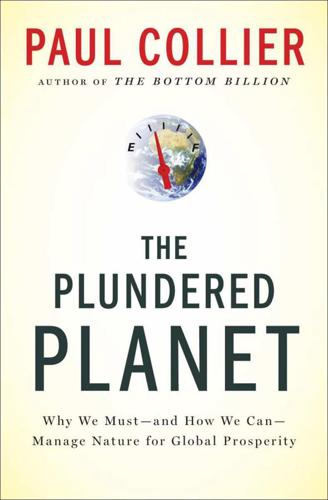
The Plundered Planet: Why We Must--And How We Can--Manage Nature for Global Prosperity
by
Paul Collier
Published 10 May 2010
Revenues from natural assets are placed into a special public fund known as the Sovereign Wealth Fund, which is earmarked for future generations and invested in international capital markets. Although stock markets are very volatile, overall the system has served Norway well: according to the 2009 Human Development Index it offers the best quality of life in the world. Unsurprisingly, it has become a model for those governments of low-income countries which wish to behave responsibly. Indeed, I was told that the Norwegian government had received requests for advice from 50 other governments on how to manage their resource revenues.
…
See climate change Global Witness, 231–32 Goderis, Benedikt, xiv, 38–40, 44, 52, 144 gold and gold rushes, 21, 68, 75, 89 governance and governments and auctions, 83–84 and borrowing for early consumption, 110 forests (Continued) and bottom billion countries, 6 and carbon emissions, 198–99 and charter for natural resources, 230–35 contracts with, 71–74, 85 and corruption, 79, 80, 82–83 decision chains in, 60–62 and discovery process, 69–71 and extraction rights, 73, 74, 75, 83–84 and free-riding, 188–91 and growth, 53–54 and investments, 134 and management of natural assets, 22–23 and nonmarket social cooperation, 175 and OECD countries, 7 phasing sale of natural assets, 75 and pork-barrel politics, 22–23 quality of, 7, 60, 229–30 and regulation, 5–6 and renewable natural assets, 166–67 and resource curse, 46–49 and resource extraction, 92–93 and revenues, 50–53, 59, 100, 101 and scarcity, 229–35 and threshold effects, 60 and time-inconsistency problem, 71–74 See also taxation greed, 10 Green Accounting, 120–21 Greenland, 30 Green Revolution, 222 growth and food crises, 209–10 low-carbon growth, 179–83, 184, 192, 197 and resource revenues, 52–54 and sustainability, 98 Growth Commission, 138, 233 Guinea, 242 Haiti, xiii, 19, 201, 208 Harvard Business Review, 132 hidden assets, 19–20 high-income countries, 184–85, 197, 211 high seas, 162, 169 Himalayas, 189 Hispaniola, 19 Hoeffer, Anke, xiv and checks and balances, 55 and distribution of assets, 20–21 and elections, 56, 59 and neo-con agenda paper, 49 and resource curse, 53 and subsoil assets, 65 Holbach, Paul Henri Thiry, baron d’, 7, 16 Hotelling Rule, 104–7, 155, 194 Human Development Index, 109 human nature, 33 hunger, 207–9 Iceland, 164, 169 I Didn’t Do It for You (Wrong), 159 imports, 100–101 income-elasticity, 210 India, 57, 139, 238 indigenous populations, 215 Indonesia, 93, 238 indulgences, 176 Industrial Development Report, 184–85 industry and carbon emissions, 180, 182, 183–85, 190, 192, 195, 196–97 globalization of, 3 industrial output, 184–85 and prosperity, 196 of rich countries, 65 and romantic environmentalists, 16 inefficiency, 21, 22 inequality, 21, 22, 29 information sharing, 239–41 infrastructure in Africa, 91–92, 122–25, 140–41 and changing needs, 138 innovation, 214 international coordination, 237–43 International Country Risk Guide (ICRG), 46, 47 International Monetary Fund (IMF) Bird-in-the-Hand Rule of, 107, 109, 110 on domestic investment, 128, 133 on future revenues, 107 general policy advice of, 61 and global coordination, 232 on investments, 128, 133, 144 on Permanent Income concept, 102 on savings rate, 102, 108 international organizations, 233 international territories, 29–30 international waters, 162, 163, 167 Internet, 234 Inuit people, 30, 34, 175 investments, 127–49 and absorption problems, 128, 133 and capital goods, 147–49 and corruption, 128–30, 131 government policies on, 145 IMF on, 128, 133 international investments, 117 Norway model of, 109, 113–14, 117–18, 128, 143 opportunities for, 132–34 private investment, 113, 131, 132, 134, 142–46 public investment, 113, 131, 134–42 rate of return on, 132–33 and resource curse, 48 and role model countries, 137–38 and supervision of projects, 141–42 volatility of, 118, 119 in world financial markets, 117, 122, 128, 133 See also domestic investment Iraq, 49–50 Italy, 158–59, 238 Japan, 190, 219, 238 Jesus, 33 Johnson-Sirleaf, Ellen, 55 Jones, Benjamin, 59 just-in-time production, 216 Kazakhstan, 143 Kenya, 223 Keynes, John Maynard, 41 Korea, 238 Kosmos Oil, 74 Kuwait, 20, 32, 133 Kyoto conference on climate change, 183 Lagos, Nigeria, 139, 140, 141 land, 147–48, 217–19 landlocked countries, 168 leaders, 59, 93 legal system, 80, 82 liabilities, 174–75, 178.

Growth: From Microorganisms to Megacities
by
Vaclav Smil
Published 23 Sep 2019
Common variables that the economists want to see growing include the total industrial output, GDP, disposable income, labor productivity, exports, trade surplus, labor force participation, and total employment. Affluence (GDP, gross earnings, disposable income, accumulated wealth) is commonly measured in per capita terms, while the quality of life is assessed by combinations of socioeconomic variables. For example, the Human Development Index (HDI, developed and annually recalculated by the United Nations Development Programme) is composed of three indices quantifying life expectancy, educational level, and income (UNDP 2016). And in 2017 the World Economic Forum introduced a new Inclusive Development Index (IDI) based on a set of key performance indicators that allow a multidimensional assessment of living standards not only according to their current level of development but also taking into account the recent performance over five years (World Economic Forum 2017).
…
Then I will proceed with a more detailed coverage of modern economic growth, focusing first on its major sectoral constituents before concentrating on longer historic trends for the leading countries with the best statistical coverage (US, UK, France, Japan) and on the recent rise of China. I will also address the most obvious weaknesses of the standard GDP approach and look at some additional or alternative ways to assess economic growth and its wider impacts, including the Human Development Index and recent efforts to measure subjective satisfaction with life and to compare self-assessed happiness on the global scale. Populations Interest in population growth has a long history and there is no shortage of comprehensive analyses at the global level (McEvedy and Jones 1978; Keyfitz and Flieger 1971, 1991; Livi-Bacci 2012; Bashford 2014), as well as those focusing on continents (Livi-Bacci 2000; Liu et al. 2001; Groth and May 2017; Poot and Roskruge 2018) and on major nations (Poston and Yaukey 1992; Dyson et al. 2005).
…
Proxies can be monetary (such as average per capita income or average disposable income), physical (such as infant mortality, whose falling rates are closely connected to rising quality of life, or average life expectancy), or they can reflect individual perception (satisfaction with life, happiness). As already noted, the Human Development Index has been the most widely used measure of improving quality of life. No matter which measure of standard of living is chosen, national averages of Western countries show long periods of steady gains (with takeoffs during the late 19th century) as well as some notable post-1950 improvements.
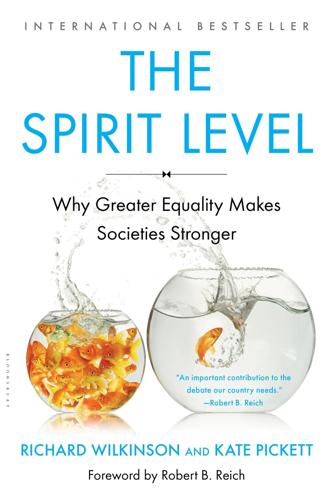
The Spirit Level: Why Greater Equality Makes Societies Stronger
by
Richard Wilkinson
and
Kate Pickett
Published 1 Jan 2009
However, a more comprehensive answer to the question comes from the World Wildlife Fund (WWF), which analysed data relating the quality of life in each country to the size of the ecological footprint per head of population.345 To measure the quality of life they used the UN Human Development Index (HDI) which combines life expectancy, education and Gross Domestic Product per capita. Figure 15.2 uses WWF data to show the relation between each country’s ecological footprint per head and its score on the UN Human Development Index. Scarcely a single country combines a quality of life (above the WWF threshold of 0.8 on the HDI) with an ecological footprint which is globally sustainable. Cuba is the only one which does so.
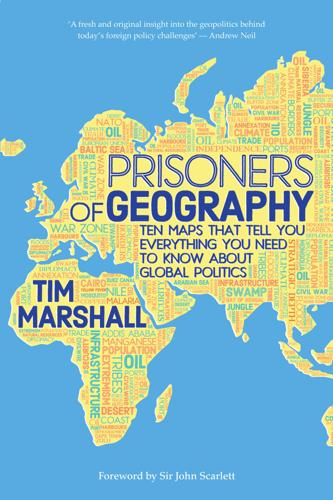
Prisoners of Geography: Ten Maps That Explain Everything About the World (Politics of Place)
by
Tim Marshall
Published 10 Oct 2016
The Great Rift Valley curves into the DRC in its south and east and it has exposed huge quantities of cobalt, copper, diamonds, gold, silver, zinc, coal, manganese, and other minerals, especially in Katanga Province. In King Leopold’s day the world wanted the region’s rubber for the expanding automobile industry; now China buys more than 50 percent of the DRC’s exports, but still the population lives in poverty. In 2014, the United Nations’ Human Development Index placed the DRC at number 186 out of 187 countries it measured. The bottom eighteen countries in that list are all in Africa. Because it is so resource-rich and so large, everyone wants a bite out of the DRC, which, as it lacks a substantive central authority, cannot really bite back. The region is also bordered by nine countries.
…
See also Islamic State/ISIS civil war, 5 and Russia, 22–23, 35 Taiwan/Republic of China (ROC), 36–37, 38–39, 43, 54, 55, 56–57, 58, 82, 208, 229 Tajikistan, 4–5, 8–9, 20, 36–37, 46, 49–50, 51 Takeshima/Dokdo Islands, 193, 206 Taliban, 4–5, 181–88 Tamil Nadu, 172 Tanzania, 109, 112, 114, 119, 120, 127, 130, 131 Tel Aviv, 153, 156 terrorism, 28, 106, 179, 182–83, 186, 188 Texas, 62–63, 67, 70–71, 222 Thailand, 36–37, 53, 55, 78–79, 168–69, 191 Thar Desert, 168–69, 180 Theroux, Paul, 48 Thule, 240–41, 243 Tiananmen Square massacre (1989), 44 Tibet, 7, 36–37, 41, 43–44, 46–50, 51, 178, 179, 188–90 Tibetan Plateau, 36–37, 40, 47 Tierra del Fuego, 215, 218 Tigris River, 133, 135, 139 Tikrit, 139, 141, 148, 150 Transistria, 29, 30 Transjordan, 142 Treaty of Tordesillas (1494), 219–20 Triple Entente (1907), 99–100, 136 Tripolitania, 116–17 Truman, Harry, 199 Turkey, 8–9, 29, 32, 86–87, 93, 133, 141, 145–46, 157, 159, 161–64 control of Bosporus, 22, 23, 163–64 and Iran, 163 and Russia, 32–33, 80 water supplies, 261 Turkmenistan, 8–9, 20, 133, 158 Tutsi, 119 Twain, Mark, 64 Uganda, 109, 112, 119, 120, 126–27, 131 Uighur people, 50–51 Ukraine, 1, 6, 8–9, 14–16, 20, 21–22, 23–27, 29, 29, 30, 33, 45, 77, 86–87, 91, 96, 102–3, 107 Umayyid Caliphate, 139, 173 UNASUR, 234 United Arab Emirates (UAE), 82–83, 133, 148 United Kingdom (UK), 86–87, 96–97, 103–5 in Afghanistan, 184–85 and China, 43, 44 colonial period, 43, 44, 66–67 and European Union (EU), 100–101, 103, 104–5 Falkland Islands/Las Malvinas, 234, 237–38 and France, 75–76 GIUK (Greenland/Iceland/UK) gap, 23, 86–87, 104, 252 and Iceland, 256 immigrants, 105–6 in India/Pakistan, 172, 173, 178 in the Middle East, 136–37, 141–42, 152–53 naval capacity, 75, 78, 104 Triple Entente (1907), 99–100, 136 and United States, 66–67, 75, 78, 238 United Nations (UN) Convention on the Law of the Sea (UNCLOS), 249, 254 Human Development Index, 119, 120 and Korea, 200 Security Council, 128, 131 United States, 62–63, 64–85. See also names of specific states and Afghanistan, 4–5 and Africa, 84 and Arctic/Arctic Circle, 243, 249, 253–54 and Canada, 62–63, 65, 66 and China, 38–39, 78–83 Cold War, 81, 94, 107, 118, 198–200, 205, 221, 235, 251–53 colonial period, 66–70 and Cuba, 72–73, 195 drones, 124–25, 148–49, 183, 186–87 and drugs, 224–25 energy resources, 33, 82, 84 geography in dictating foreign policy, 7 and Germany, 75 Hispanic population, 71, 222 and India, 191–92 and Iran, 82–83 and Iraq, 84 and Israel, 83 and Japan, 74, 75, 78–79, 81, 200, 208–13 and Korea, 79–80, 194, 198–200 languages, 71, 80, 89, 222 laser technology, 262–63 and Latin America, 83, 226–27, 229–30, 231, 235 and Mexico, 62–63, 66, 70–71, 222–23 Native American nations, 66, 67, 69, 71–72 naval capacity, 38–39, 53–54, 72–74, 75, 78, 79, 82–83, 160 prospects for, 64, 84–85 and Russia, 77–78 September 11, 2001, terrorist attacks, 28, 182–83, 186, 188 space exploration, 262 and Spain, 67, 69–73 strategic depth, 6, 62–63, 64–73 and United Kingdom, 66–67, 75, 78, 238 U.S.
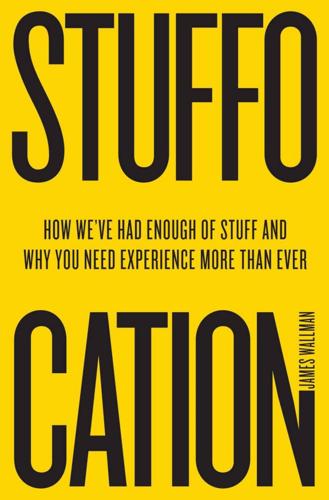
Stuffocation
by
James Wallman
Published 6 Dec 2013
They are all a bunch of splitters – because not only do they not agree with each other, they have all bypassed the other, internationally sanctioned challengers of GDP as measures of progress, like the Organisation for Economic Co-operation and Development (OECD)’s Better Life Index, based on eleven topics, the UN’s Human Development Index (HDI), featuring three dimensions and four indicators, and the granddaddy of all wellbeing measures: Bhutan’s Gross National Happiness (GNH), which was coined by Bhutan’s Dragon King in 1972 and is based on four “pillars”. It is all, as you can see, a very long way from the simplicity of GDP’s headline figure, a simple number that tells us if things are good, bad, up, down, and better, or not, than our neighbours.
…
Useful websites for progressive measures of social progress include: www4.hrsdc.gc.ca for Canada's Indicators of Well-being in Canada (IWC); uwaterloo.ca/canadian-index-wellbeing for The Canadian Index of Wellbeing (CIW); Australian Bureau of Statistics's www.abs.gov.au for Measuring Australia's Progress (MAP); www.oecdbetterlifeindex.org for the Organisation for Economic Co-operation and Development (OECD)’s Better Life Index; hdr.undp.org for the UN’s Human Development Index (HDI); www.grossnationalhappiness.com for Bhutan’s Gross National Happiness (GNH); and www.stateoftheusa.org for The State of the United States of America (SUSA). “Barry Schwartz recently proposed a psychological parallel to the Council of Economic Advisers that was created in 1946, a ‘Council of Psychological Advisers for the US President’.”
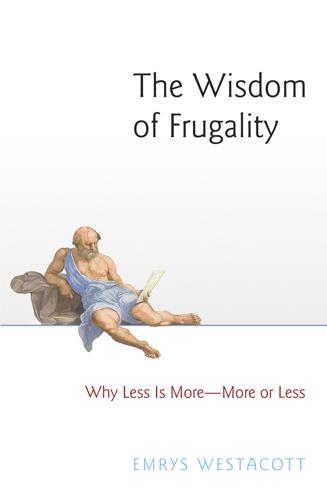
The Wisdom of Frugality: Why Less Is More - More or Less
by
Emrys Westacott
Published 14 Apr 2016
For instance, between 1999 and 2013, per capita GDP in the United States rose by about 25 percent, yet during that same period the median household income declined by 8.7 percent.11 And even where rising GDP does reflect a general increase in material prosperity, social scientists remain divided over the extent to which it brings about an increase in the general level of happiness.12 Those who oppose using GDP to guide government policy have likened what they see as a misguided obsession with it, on the part of many economists and politicians, to a driver paying attention to only one gauge on a car’s dashboard, the speedometer, while ignoring those that measure such important things as fuel level, engine temperature, or oil pressure.13 Some even argue that the excessive focus on GDP has been a major obstacle to progress in many areas, including material prosperity.14 For these reasons numerous alternatives to GDP as measures of a society’s well-being have been proposed. One that has attracted quite a lot of attention is the Gross National Happiness Index pioneered by the government of Bhutan. Others include the Human Development Index, which emphasizes life expectancy, education, and standard of living, and the Social Progress Index, which uses fifty-two indicators, including such things as health, safety, sustainability, and individual freedom. Yet in spite of all these criticisms, reservations, and alternative indexes, GDP remains important for economists and policy makers because it is a single number that, even if it oversimplifies matters, provides some sort of basic unit with which to make comparisons between countries and over time.
…
See also hedonic adaptation Hegel, Georg Wilhelm Friedrich, 125 Heidegger, Martin, 129 Heidorn, Keith, 256 Hesiod, 79, 207 higher education: cost and value of, 167, 245 Hilton, Paris, 168 Hinduism, 31 homelessness, 232–33 Homer, 118, 147 homes: size of, 232 Honoré, Carl, 213 house prices, 244–45 Howard, Henry, 100 Human Development Index, 219 Hume, David, 136, 159, 177 inauthenticity, 170–71 independence. See self-sufficiency individualism, 173, 284 inequality, 151–52, 172–73, 218, 240, 285 Irvine, William, 7 Islam, 31, 78 It’s a Wonderful Life, 97 Jackson, Michael, 169 Jains, 31, 272 Jesus, 44, 45, 63, 103, 104, 141, 201, 283 Johnson, Samuel, 10, 65 Judaism, 31, 78 Kahneman, Daniel, 144, 153, 222 Kant, Immanuel, 35, 273 Kardashian, Kim, 214 karma, 74 Kazez, Jean, 88 Keynes, John Maynard, 80, 166, 241, 242 kibbutzim, 22 Kozlowski, Dennis, 168–69 Krugman, Paul, 226 Kublai Kahn, 147 Lafargue, Paul, 80, 81 Laham, Simon, 114 leisure, 77, 242.
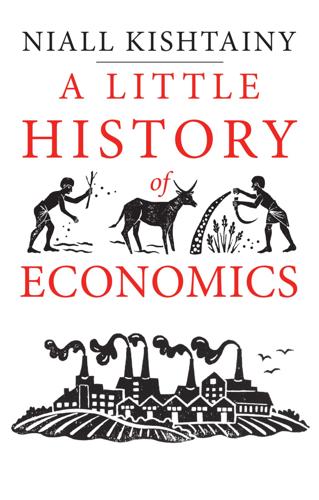
A Little History of Economics
by
Niall Kishtainy
Published 15 Jan 2017
He was able to put his ideas into practice in the 1990s when he helped the United Nations improve on the traditional measure of development – gross domestic product. Gross domestic product measures a country’s national income and is calculated by adding up what it produces each year. Sen came up with an alternative that included life expectancy and literacy along with income. It was called the Human Development Index and it highlighted the difference between human and economic development: Sri Lanka was ranked higher than Saudi Arabia in human development even though Saudi Arabia was much richer. Now most economists agree with Sen that development isn’t just about a country’s income, but about the health and education of its people too.
…
absolute poverty (i) acid rain (i) adaptive expectations (i) adverse selection (i) advertising (i) agriculture (i), (ii), (iii) aid (i) Akerlof, George (i) alienation (i) Ambrose, St (i) animal spirits (i), (ii), (iii) antitrust policies (i) Apple (i) Aquinas, St Thomas (i), (ii) Aristotle (i) Arrow, Kenneth (i) ascending auction (i) Asian Tigers (i), (ii) Atkinson, Anthony (i), (ii) auction theory (i) auctions (i) Augustine of Hippo, St (i) austerity (i) balance of trade (i) banks and entrepreneurs (i) and interest rates (i) and loans (i) and monopoly capitalism (i), (ii) and speculation (i) see also Britain, Bank of England; central banks; independent central banks; World Bank battle of the methods (i) Becker, Gary (i) behavioural economics (i) benevolent patriarch (i) Beveridge, William (i) big push (i) Black Wednesday (i) bonds (i) bourgeoisie (i), (ii), (iii) brand image (i) Britain Bank of England (i) inflation (i) pegged currency (i) Second World War (i) war with China (i) war with South Africa (i) bubbles (i), (ii) Buchanan, James (i) budget deficit (i) Burke, Edmund (i) capabilities (i) capital (i) and growth (i) Marx on (i) Capital (Marx) (i) Capital in the Twenty-First Century (Piketty) (i) capitalism (i), (ii), (iii) and entrepreneurs (i) and governments (i) and the Great Depression (i) and the Great Recession (i) historical law of (i) Marx on (i) world (i) see also communism Capitalism and Freedom (Friedman) (i) Capitalism, Socialism and Democracy (Schumpeter) (i) capitalists (i), (ii), (iii), (iv) and imperialism (i), (ii), (iii) Marx on (i), (ii), (iii), (iv), (v) carbon tax (i) carbon trading permits (i) Carlyle, Thomas (i), (ii) Castro, Fidel (i), (ii) central banks (i), (ii), (iii), (iv), (v) central planning (i), (ii) chaebols (i) chain of being (i), (ii) Chamberlin, Edward (i) Chaplin, Charlie (i) Chicago Boys (i) Chicago school (i), (ii), (iii), (iv) China, war with Britain (i) Christianity, views on money (i) Churchill, Winston (i) classical dichotomy (i) classical economics (i), (ii), (iii), (iv), (v) coins (i), (ii) Colbert, Jean-Baptiste (i) colonies/colonialism (i), (ii), (iii), (iv) American (i) Ghana (i), (ii) commerce (i), (ii), (iii), (iv) communism (i) and the Soviet Union (i) Communist Manifesto, The (Engels and Marx) (i), (ii) comparative advantage (i), (ii) competition (i), (ii), (iii), (iv) Condorcet, Marquis de (i) Confessions of an Economic Heretic (Hobson) (i) conspicuous consumption (i) constitution (rules) (i) consumers (i), (ii), (iii), (iv) contagion, economic (i) core (i) Corn Laws (i), (ii) Cortés, Hernan (i) cost (i) creative destruction (i) Credit Crunch (i) crime, economic theory of (i) Cuba (i) currency (i), (ii) see also coins currency markets (i), (ii) currency reserves (i) Debreu, Gérard (i) demand law of (i) see also supply and demand demand curve (i) democracy (i), (ii) Democratic Republic of the Congo (i) dependency theory (i) Depression (Great) (i), (ii), (iii), (iv), (v), (vi), (vii) and economic growth (i) and the US central bank (i) descending auction (i) developing/underdeveloped countries (i), (ii) development economics (i) Development of Underdevelopment, The (Frank) (i) diminishing marginal utility (i), (ii) diminishing return to capital (i) discretion (i) discrimination coefficient (i) distribution of income (i), (ii) diversification (i), (ii) dividends (i) division of labour (i) doomsday machines (i) Drake, Sir Francis (i) Drew, Daniel (i) dual economy (i) economic value (i), (ii), (iii), (iv) economics defined (i) normative (i) Economics of Imperfect Competition (Robinson) (i) economies of scale (i) economists (i), (ii), (iii) efficient markets hypothesis (i), (ii), (iii), (iv) efficient/inefficient economic outcome (i) see also pareto efficiency; pareto improvement Elizabeth I (i) Elizabeth II (i) employment, full (i) Engels, Friedrich (i) England’s Treasure by Forraign Trade (Mun) (i) entitlement (i), (ii) entrepreneurs (i), (ii) equilibrium (i), (ii), (iii), (iv), (v) exchange of goods (i), (ii) exchange rates (i) expectations, adaptive/rational (i), (ii), (iii), (iv) exploitation (i), (ii), (iii), (iv), (v) exports (i) and poor countries (i), (ii), (iii) externalities (i), (ii), (iii), (iv) Extraordinary Popular Delusions and the Madness of Crowds (MacKay) (i) failure, market (i), (ii), (iii), (iv) Fama, Eugene (i) famine (i), (ii), (iii), (iv) feminist economics (i) feudalism (i), (ii), (iii), (iv) financial systems (i), (ii) Finer, Herman (i) first price auction (i), (ii) First Welfare Theorem (i), (ii) First World War (i) fiscal policy (i), (ii) floating exchange rate (i) Florence (i) Folbre, Nancy (i) Fourier, Charles (i) framing (i), (ii) France agriculture (i) economic models (i), (ii) revolution (i), (ii), (iii), (iv) and taxation (i) Frank, Andre Gunder (i) free choice (i), (ii) free-market economics (i), (ii), (iii), (iv) free trade (i), (ii), (iii) Friedman, Milton (i), (ii), (iii) full employment (i) game theory (i), (ii), (iii) general equilibrium (i), (ii), (iii), (iv) General Theory of Employment, Interest and Money, The (Keynes) (i) Germany, infant industries (i) Ghana (i), (ii) Gilded Age (i) Global Financial Crisis (i), (ii) global warming (i) Goethe, Johann Wolfgang (i) gold (i), (ii) Golden Age (i) goods and services (i) government, and economies (i), (ii), (iii), (iv), (v), (vi), (vii) Great Moderation (i), (ii) Great Recession (i) Greece (i), (ii), (iii) gross domestic product (i) growth (i) and dependency theory (i) of government (i) and the Great Moderation (i) and Pakistan (i) and population (i) theory (i) Guevara, Ernesto ‘Che’ (i), (ii) guilds (i) Hamilton, Alexander (i) Hansen, Alvin (i) harmony, system of (i) Hayek, Friedrich (i), (ii) hedge funds (i) herds (i) Hicks, John (i) historical law of capitalism (i) HIV/AIDS (i) Hobson, John (i) Homobonus, St (i) human capital (i) human development (i), (ii) Human Development Index (i) imperfect competition (i), (ii) imperialism (i) Imperialism: The Highest Stage of Capitalism (Lenin) (i) imports (i), (ii), (iii) income (i), (ii) and bank loans (i) and capitalism (i) and communism (i) distribution of (i), (ii) and growth (i), (ii) national (i), (ii), (iii), (iv), (v) income per person (i), (ii) independent central banks (i) Industrial Revolution (i), (ii), (iii), (iv), (v) inequality (i), (ii) infant industries (i) inflation (i), (ii), (iii), (iv), (v) information economics (i), (ii), (iii) injection of spending (i) innovations (i), (ii) insurance (i), (ii) interest rates (i) British (i) and monetary policy (i) and recession (i) and usury (i) International Monetary Fund (i) investment (i) and the big push (i) and recession (i), (ii) invisible hand (i), (ii), (iii), (iv), (v) iron law of wages (i) Irrational Exuberance (Shiller) (i) Jefferson, Thomas (i) Jevons, William (i) just price (i) Kahneman, Daniel (i), (ii) Kennedy, John F.

Corporate Warriors: The Rise of the Privatized Military Industry
by
Peter Warren Singer
Published 1 Jan 2003
Sandline and MPRI stand out as two of the most savvy at this public relations task, as their websites, listed in Appendix 1, reveal. I. AN ERA OF CORPORATE WARRIORS? 1. James Traub. "The Worst Place on Earth." New York Review of Books, June 29, 2000. http://www.nybooks.com,'nyrev/ V\'\\r\Vfeatdisplay.cgi?2000o629o61F; UN Development Programme, UN Human Development Index 2000. Available at http://www.unclp.org/ hdr2000/english HDR2000.html 2. l.aura Silber and Allan Little. Yugoslavia: Death of a Nation (New York: Penguin Books, 1997), 357: Samantha Knight et al., "The Croatian Army's Friends." U.S. News & World Report, August 21,1995. p. 4 L. 3. Roger Cohen. * After Aiding Croatian Army.
…
Marina Jimenez, "Canadians Seek Fortune in Land of Anarchy, Violence," The National Post (Canada), August 23. K)C)C), available at http://www.nationalpost.com/news .asp?f=C)()o823/610 i5.html. 37. International Crisis Group (ICG). Sierra Leone: Time for a New Military and Political Strategy, ICG Africa Report no. 28 (April 1 1, 2001). 38. United Nations Development Programme. UN Human Development Index 2000, available at http://undp.org/hdr2000/english/HDR2000.htmI. 3c). Ryan Liz/a, "Sierra Leone, the I.ast Clinton Betrayal,'* The New Republic, July 2000. http://www.tnr.com/072400/li7.za072400.html. jo. For more on the doctrine behind this, see P. W. Singer, "Caution: Children at War." Parameters 31, no. 4 (Winter 2001). \ l.
…
"Report on the question of the use of mercenaries as a means of violating human rights and impeding the exercise of the right of peoples to selfdetermination." 53d Session, Item 7, Special Rapporteur, February 20, 1997- . Report on the question of the use of mercenaries as a means of violating human rights and impeding the exercise of the right of peoples to selfdetermination. 57th Session, Item 7, Special Rapporteur, January 2001. BIBLIOGRAPHY United Nations Development Programme. UN Human Development Index 22000, available at http://undp.org/hdr2000/english/HDR2000.html "UN Hires Detective to Probe UNITA." Globe Cf Mail, April 19, 2001. "US Backs Role for Rebels in W. Africa." Washington Post, October 18, 1999. U.S. Department of the Army. Contracting Support on the Battlefield FM 100-10-2.
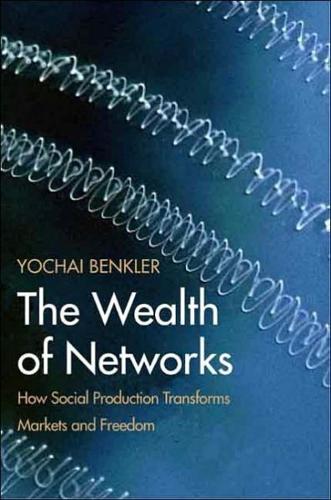
The Wealth of Networks: How Social Production Transforms Markets and Freedom
by
Yochai Benkler
Published 14 May 2006
It is, indeed, important not to be overexuberant about the importance of information and communications policy in the context of global human development. But it is also important not to ignore the centrality of information to most of our more-advanced strategies for producing core components of welfare and development. To see this, we can begin by looking at the components of the Human Development Index (HDI). 553 The Human Development Report was initiated in 1990 as an effort to measure a broad set of components of what makes a life livable, and, ultimately, attractive. It was developed in contradistinction to indicators centered on economic output, like gross domestic product (GDP) or economic growth alone, in order to provide a more refined sense of what aspects of a nation's economy and society make it more or less livable.
…
As [pg 310] Sen pointed out, the people of China, Kerala in India, and Sri Lanka lead much longer and healthier lives than other countries, like Brazil or South Africa, which have a higher per capita income. 107 The Human Development Report measures a wide range of outcomes and characteristics of life. The major composite index it tracks is the Human Development Index. The HDI tries to capture the capacity of people to live long and healthy lives, to be knowledgeable, and to have material resources sufficient to provide a decent standard of living. It does so by combining three major components: life expectancy at birth, adult literacy and school enrollment, and GDP per capita.
…
See blocked access financial reward, as demotivator, 187-190 Fine-grained goods, 221 First-best preferences, 355 large-audience programming, 355 power of mass media owners, 355 First-best preferences, mass media and, 297, 359, 366, 397, 423, 429, 463 concentration of mass-media power, 297, 397-402, 423, 429-436 large-audience programming, 366-375, 463-464 of mass media owners, 359-365 power of mass media owners, 397-402 Fisher, William (Terry), 40, 245, 498, 526, 720 Fiske, John, 262, 497, 526 Fixed costs, 216 Folding@home project, 168-170 Folk culture, 585 see culture food, commons-research based on, 585 Food security, commons-based research on, 586-608 Formal autonomy theory, 269-272 Formal instruction, 562 Fragmentation of communication, 41, 421, 459-460, 818-819 Franklin, Benjamin, 342 Franks, Charles, 165, 264 Free High School Science Texts (FHSST), 201, 582 Free software, 19-20, 37, 96, 125-132, 202, 247, 573, 762, 803 as competition to market-based business, 247 commons-based welfare development, 573-576 human development and justice, 37 policy on, 762-763 project modularity and granularity, 202 security considerations, 803-807 Freedom, 50, 122, 253, 273, 286, 316, 505, 532 behavioral options, 286-288, 316 cultural, 505-514, 532-533 of commons, 122 property and commons, 273-278 Freenet, 479 Frey, Bruno, 187-188 Friedman, Milton, 82 Friendships, virtual, 637-639 Friendster, 653 Froomkin, Michael, 727, 755 Future, 481, 531 participatory culture, 531-536 public sphere, 481-484 G GCP (Generation Challenge Program), 605 GE (General Electric), 346, 350-351 GM (genetically modified) foods, 590-597 GNU/Linux operating system, 128-131 GPL (General Public License), 126-130, 205 See Also free software, 205 GTLD-MoU document, 754 Games, immersive, 149-150, 263 General Public License (GPL), 126-130, 205 See also fre software, 205 Generation Challenge Program (GCP), 605 Genetically modified (GM) foods, 590-597 Genome@home project, 169 Ghosh, Rishab, 207 Gifts, 226-227 Gilmore, Dan, 393, 470 Glance, Natalie, 447, 461 Global development, 550-554, 584, 609, 627-628, 796 food and agricultural innovation, 584-608 international harmonization, 796-801 medical and pharmaceutical innovation, 609-623 Gnutella, 740 Godelier, Maurice, 215, 226 Golden rice, 599 Goods, information-embedded, 556-558 Google, 153 Gould, Stephen Jay, 64 Government, 52, 339, 356, 426, 473 authoritarian control, 426, 473-480 independence from control of, 339, 356 role of, 52-56 working around authorities, 473-480 Gramsci, Antonio, 506-507 Granovetter, Mark, 189, 638, 641 Granularity, 200-203, 221 of lumpy goods, 221-222 Granularity of participation and, 200-203 Green Revolution, 589-594 Grokster, 742 Growth rates of Web sites, 443, 446 H HDI (Human Development Index), 552-554 HHI (Herfindahl-Hirschman Index), 363 HIV/AIDS, 570-571, 585, 610 Habermas, Jurgen, 333, 338, 367, 508-509, 727 Hampton, Keith, 644 HapMap Project, 621 Hardware, 206, 220, 294, 718 as shareable, lumpy goods, 220-222 infrastructure ownership, 294-295 policy on physical devices, 718-725 Hardware regulations, 718-725 Harmonization, international, 796-801 Harris, Bev, 405, 408-409, 412 Hart, Michael, 164-165, 264 Hayek, Friedrich, 51, 274 Health effects of GM foods, 593-594 Hearst, William Randolph, 365 Heller, Michael, 558 High-production value content, 313, 528-530 Hollings, Fritz, 721-724 Home project, 168-170 Hoover, Herbert, 348 Hopkins Report, 408 Horner, Mark, 201 Huberman, Bernardo, 443, 446 Human Development Index (HDI), 552-554 Human Development Report, 552 Human affairs, technology and, 43-48 Human communicative capacity, 108-112, 194, 217 feasibility conditions for social production, 194-207 pricing, 217 Human community, coexisting with Internet, 664-666 Human contact, online vs. physical, 638-639 Human development and justice, 35-38, 537-628, 542, 550-554, 568, 820-821 commons-based research, 568-583 liberal theories of, 542-549 Human motivation, 21, 183-194, 189, 200, 221, 223 crowding out theory, 223 cultural context of, 189-191 granularity of participation and, 200-203, 221-222 Human welfare, 255, 297, 427, 542, 550, 555, 568 commons-based research, 568-583 commons-based strategies, 550-554 digital divide, 427 freedom from constraint, 297-299 information-based advantages, 555-562 liberal theories of justice, 542-549 Hundt, Reed, 398 Hyperlinking on the Web, 392, 437, 791 as trespass, 791-795 power law distribution of site connections, 437-466 I IAHC (International Ad Hock Committee), 754 IANA (Internet Assigned Numbers Authority), 754 IBM's business strategy, 96, 247-248 ICANN (Internet Corporation for Assigned Names and Numbers), 755 Iconic representations of opinion, 367, 373 Ideal market, 123 Immersive entertainment, 149-150, 263 Implicit knowledge, transfer of, 562 Incentives to produce, 21, 183-194, 189, 200, 221, 223 crowding out theory, 223 cultural context, 189-191 granularity of participation and, 200-203, 221-222 Independence from government control, 339, 356 Independence of Web sites, 203 Individual autonomy, 26-28, 51, 203, 258-322, 269, 278, 279, 309, 506, 815-819 culture and, 506-508 formal conception of, 269-272 independence of Web sites, 203 individual capabilities in, 51-56 information environment, structure of, 278, 279-303 mass media and, 309-310 Individual capabilities and action, 16, 43, 51-56, 108, 195, 238, 513, 545 as modality of production, 238-243 as physical capital, 195-196 coordinated effects of individual actions, 16-18 cultural shift, 513 economic condition and, 545 human capacity as resource, 108 technology and human affairs, 43-48 Individualist methodologies, 47-48 Industrial age, 73, 265 destabilization of, 73 reduction of individual autonomy, 265-266 Industrial ecology of digital environment, 356 emerging role of mass media, 356-358 Industrial model of communication, 16-17, 29, 31, 57-66, 120, 146, 208, 244, 309, 327, 340, 356, 539, 563, 611, 671, 674-807, 679, 685, 695, 803, 808, 825-826 autonomy and, 309-310 barriers to justice, 539-540 emerging role of mass media, 327-330, 340-341, 356-358 enclosure movement, 671-672 information industries, 563-565 mapping, framework for, 685-698 medical innovation and, 611 path dependency, 679-684 relationship with social producers, 244-250 security-related policy, 146-148, 695, 803-807 shift away from, 31-34 stakes of information policy, 808-829 structure of mass media, 327-330 transaction costs, 120, 208-224 Inefficiency of information regulation, 79-87, 100-104, 208-224, 221, 291, 571, 810-813 capacity reallocation, 221-224 property protections, 571 wireless communications policy, 291 Inertness, political, 355, 366-375 Influence exaction, 295-296, 298-300 Information appropriation strategies, 101-103 Information as nonrival, 79-83 Information economy, 11-66, 14, 24, 42, 57, 394, 542 democracy and liberalism, 24-39 effects on public sphere, 394-415 emergence of, 14-23 institutional ecology, 57-66 justice, liberal theories of, 542-549 methodological choices, 42-56 Information flow, 34, 281, 296, 355, 366, 463, 702 controlling with policy routers, 281-284, 296, 355-358, 702 large-audience programming, 355, 366-375, 463-464 limited by mass media, 355-358 Information industries, 563-565 Information overload and Babel objection, 31, 34, 314-323, 419, 424, 429-436, 818-819 Information production, 16, 79, 88, 174, 194, 403, 815 feasibility conditions for social production, 194-207 networked public sphere capacity for, 403-415 nonrivalry, 79-83, 174 physical constraints on, 16-17 strategies of, 88 Information production capital, 21-22, 73, 89, 120, 195, 216, 309 control of, 195-196 cost minimization and benefit maximization, 89 fixed and initial costs, 216 production costs as limiting, 309 transaction costs, 120 Information production economics, 77-117, 88, 100, 105, 114 current production strategies, 88-99 exclusive rights, 100-104, 114-117 production over computer networks, 105-112 Information production inputs, 81, 108, 135-148, 137, 140, 149, 214, 238, 281, 285, 296, 335, 355, 366, 397, 463, 531, 702 NASA Clickworkers project, 137-139 Wikipedia project, 140-148 existing information, 81-83, 108 immersive entertainment, 149-150 individual action as modality, 238-243 large-audience programming, 355, 366-375, 463-464 limited by mass media, 355-358 pricing, 214-219 propaganda, 285, 397-402, 531-536 systematically blocked by policy routers, 281-284, 296, 355-358, 702 universal intake, 335-336, 355-358 Information production, market-based, 83, 95, 120, 208, 244, 522, 529, 613 cultural change, transparency of, 522-526 mass popular culture, 529-530 relationship with social producers, 244-250 transaction costs, 120, 208-224 universities as, 613-616 without property protections, 83-87, 95-99 Information sharing, 175, 216, 218, 294 infrastructure ownership, 294 initial costs, 216 transaction costs, 218-223 Information, defined, 71, 559-560 Information, perfect, 364 Information-embedded goods, 556-558 Information-embedded tools, 558 Innovation, 37, 291, 586, 764 agricultural, commons-based, 586-608 human development, 37-38 software patents and, 764-766 wireless communications policy, 291 Innovation economics, 77-117, 88, 100, 100, 105, 114 current production strategies, 88 exclusive rights, 100-104, 100-104, 114-117 production over computer networks, 105-112 Inputs to production, 81, 108, 135-148, 137, 140, 149, 214, 238, 281, 285, 296, 335, 355, 366, 397, 463, 531, 702 NASA Clickworkers project, 137-139 Wikipedia project, 140-148 existing information, 81-83, 108 immersive entertainment, 149-150 individual action as modality, 238-243 large-audience programming, 355, 366-375, 463-464 limited by mass media, 355-358 pricing, 214-219 propaganda, 285, 397-402, 531-536 systematically blocked by policy routers, 281-284, 296, 355-358, 702 universal intake, 335-336, 355-358 Instant messaging, 647 Institute for One World Health, 619 Institutional ecology of digital environment, 6, 16-17, 27-28, 31, 57-66, 120, 146, 208, 244, 309, 327, 340, 539, 611, 671, 674-807, 679, 685, 695, 803, 808, 824-827 autonomy and, 309-310 barriers to justice, 539-540 emerging role of mass media, 327-330, 340-341 enclosure movement, 671-672 mapping, framework for, 685-698 medical innovation and, 611 path dependency, 679-684 relationship with social producers, 244-250 security-related policy, 146-148, 695, 803-807 shift away from, 31-34 stakes of information policy, 808-829 structure of mass media, 327-330 transaction costs, 120, 208-224 International HapMap Project, 621 International harmonization, 796-801 Internet, 377, 385, 416, 423, 429, 437, 448, 473, 515, 528, 535, 654, 664, 698, 753, 759, 791 Web addresses, 753-758 Web browsers, 759-761 as platform for human connection, 654-658 authoritarian control over, 473-480 centralization of, 423, 429-436 coexisting with human community, 664-666 democratizing effect of, 416-428 democratizing effects of, 377-384 globality of, effects on policy, 698 linking as trespass, 791-795 plasticity of culture, 528-530, 535 power law distribution of site connections, 437-466 strongly connected Web sites, 448-450 technologies of, 385-393 transparency of culture, 515-527 Internet Explorer browser, 759-761 Intrinsic motivations, 187-193 Introna, Lucas, 466 Isolation, 637-639 J Jackson, Jesse, 470 Jedi Saga, The, 261-262 Jefferson, Richard, 606 Joe Einstein model, 91-92, 98, 564 Johanson, Jon, 734 Journalism, undermined by commercialism, 355, 365-375 Justice and human development, 35-38, 537-628, 542, 550, 568, 820-821 commons-based research, 568 commons-based strategies, 550-554 liberal theories of, 542-549 K KDKA Pittsburgh, 345, 346-347 KaZaa, 741-742 Kant, Immanuel, 274 Karma (Slashdot), 157 Keillor, Garrison, 441 Kick, Russ, 203, 464 Know-How model, 95 Knowledge, defined, 562 Koren, Niva Elkin, 40 Kottke, Jason, 455 Kraut, Robert, 638, 644 Kumar, Ravi, 455 Kymlicka, Will, 508 L Laboratories, peer-produced, 622-623 Lakhani, Karim, 207 Lange, David, 63 Large-audience programming, 355, 366-375, 463 susceptibility of networked public sphere, 463-464 Large-circulation press, 342-343 Large-grained goods, 221 Last mile (wireless), 709-714 Layers of institutional ecology, 676-677, 685-698, 691, 696, 767, 823-825 content layer, 676-677, 691, 696, 767-802, 823-825 physical layer, 691, 823-825 see also logical layer of institutional ecology, 691 Learning networks, 91-92, 95, 218 Lemley, Mark, 705, 779 Lerner, Josh, 83, 207 Lessig, Lawrence (Larry), 40, 63, 434, 498, 501, 678, 705 Liberal political theory, 49-51, 502, 532 cultural freedom, 502-514, 532-533 Liberal societies, 24-39, 26, 31, 35, 40, 331, 542 autonomy, 26-29 critical culture and social relations, 40 design of public sphere, 331-339 justice and human development, 35 public sphere, shift from mass media, 31-34 theories of justice, 542-549 Licensing, 126, 205, 346, 598, 778 GPL (General Public License), 126-130, 205 agricultural biotechnologies, 598-608 radio, 346-349 shrink-wrap (contractual enclosure), 778-781 Limited intake of mass media, 355-358 Limited sharing networks, 91-92, 98-99 Limited-access common resources, 122 Lin, Nan, 189 Linking on the Web, 392, 437, 791 as trespass, 791-795 power law distribution of site connections, 437-466 Linux operating system, 130 Litman, Jessica, 63, 74, 501, 771 Local clusters in network topology, 34 Logical layer of institutional ecology, 171, 522, 671, 676, 691, 696, 726-766, 729, 737-752, 753, 759, 762, 782, 787, 796, 805, 823 DMCA (Digital Millennium Copyright Act), 671, 729-736 Web browsers, 759-761 database protection, 787-790 domain name system, 753-758 free software policies, 762-763 international harmonization, 796-801 peer-to-peer networks, 171-175, 805-806 recent changes, 696 trademark dilutation, 522, 782-786 Loneliness, 637-639 Loose affiliations, 27-28, 631, 642, 649-653 Los Alamos model, 91-92, 98 Lott, Trent, 461, 470 Lowest-common-denominator programming, 355, 367-375, 463-464 Lucas, George, 261-262 Luck, justice and, 543-545 Lumpy goods, 220-222 Luther, Martin, 64 M MIT's Open Courseware Initiative, 582 MMOGs (massive multiplayer online games), 149, 263 MP3.com, 739, 744 MSF (Medecins San Frontieres), 614 Mailing lists (electronic), 387 Management, changing relationships of, 247-250 Mangabeira Unger, Roberto, 266 Manipulating perceptions of others, 281-288, 285, 295, 298, 315-316, 397, 531 influence exaction, 295-296, 298-300 with propaganda, 285, 397-402, 531-536 Marconi, 346 Market reports, access to, 561 Market transactions, 211-214 Market-based information producers, 83, 95, 120, 208, 244, 522, 529, 529, 613 cultural change, transparency of, 522-526 mass popular culture, 529-530, 529-530 relationship with social producers, 244-250 transaction costs, 120, 208-224 universities as, 613-616 without property protections, 83-87, 95-99 Marshall, Josh, 398, 445, 470 Marx, Karl, 274, 505 Mass media, 327, 327, 340, 352, 353, 353, 397 as platform for public sphere, 327-330, 340-341, 352, 353-356 basic critiques of, 353-375 commercial platform for public sphere, 327-330 corrective effects of network environment, 397-402 structure of, 327-330 Mass media, political freedom and, 323-376, 331, 340, 353-375, 357 commercial platform for public sphere, 340-341, 357-358 design characteristics of liberal public sphere, 331-339 Massive multiplayer games, 149, 263 McChesney, Robert, 352 McHenry, Robert, 141 McLuhan, Marshall, 45 McVeigh, Timothy (sailor), 652 Medecins Sans Frontieres, 614 Media concentration, 297, 397, 423, 429-436 corrective effects of network environment, 397-402 Medicines, commons-based research on, 609-623 Medium of exchange, 214-219 Medium-grained goods, 221 Meetup.com site, 653 Metamoderation (Slashdot), 159-160 Methodological individualism, 48 Mickey model, 90-93 Microsoft Corporation, 759, 794 browser wars, 759-761 sidewalk.com, 794 Milgram, Stanley, 454 Misfortune, justice and, 543-545 Mobile phones, 393, 651, 709 open wireless networks, 709-714 Modularity, 200-203 Moglen, Eben, 20, 112, 748 Monetary constraints on information production, 21-23, 73, 89, 120, 195, 216, 309 control of, 195-196 cost minimization and benefit maximization, 89 fixed and initial costs, 216 production costs as limiting, 309 transaction costs, 120 Money, 89, 187, 214, 309, 420, 462 as demotivator, 187-190 as dominant factor, 420 centralization of communications, 462-466 cost minimization and benefit maximization, 89 cost of production as limiting, 309 crispness of currency exchange, 214-219 Monitoring, authoritarian, 426 Monopoly, 290, 345, 351, 371, 473, 611 authoritarian control, 473-480 breadth of programming under, 371 medical research and innovation, 611 radio broadcasting, 345, 351-352 wired environment as, 290 Moore, Michael, 360 Motivation to produce, 21-22, 183-194, 189, 200-203, 221, 223 crowding out theory, 223 cultural context, 189-191 granularity of participation and, 221-222 Moulitas, Markos, 398 Mumford, Lewis, 45 Municipal broadband initiatives, 715-717 Murdoch, Rupert, 365 Music industry, 106-107, 171, 733, 747-750, 777 DMCA violations, 733 digital sampling, 777 peer-to-peer networks and, 171-172 MyDD.com site, 398 N NASA Clickworkers, 137-139 NBC (National Broadcasting Company), 351 NIH (National Institutes of Health), 579 NSI (Network Solutions.

The Sharing Economy: The End of Employment and the Rise of Crowd-Based Capitalism
by
Arun Sundararajan
Published 12 May 2016
On a related note, other externalities, such as pollution and overcrowding, are also overlooked in GDP measures.13 And finally, GDP does not capture changes in “consumer surplus,” a point I explain in greater detail in the next section of the chapter. The shortcomings of the GDP are by no means news, even if they become increasingly salient with the rise of the sharing economy. As a result, there are already at least a few alternative measures proposed. The World Bank’s Human Development Index seeks to measure broader social indicators (e.g., educational attainment and health) and standards of living (like leisure time). The UK Office for National Statistics has adopted the Measures of National Well-being and now releases a dashboard of indicators on a quarterly basis that seek to capture economic impacts that extend the limited measures captured by the GDP.
…
See also Car sharing consumer behavior changed by, 110 convenience of, 128 as microentrepreneurship, 125 platform, 80, 82, 84 platform independence, 194 pricing, supply, and merchandising, 194, 195 shared redistribution, 82 Gett, 110 Ghose, Anindya, 112, 147 Gibran, Yokoo, 106–107 Gift: Creativity and the Artist in the Modern World, The (Hyde), 23, 35–36 Gift economy, 26, 35–40 funding and, 41–43 versus market economy, 43 service platforms and, 43–44 GigaOm, 200 Gigha, 105–106, 112 Gilligan, Carol, 44 Gnutella, 59, 92 Goldman Sachs, 25 Google, 53, 54, 55, 136, 203 data collection, 155–156 market value, 96 platform, 69 Gordon, Robert, 116, 117 Gorenflo, Neal, 24 Gottfried, Richard, 131 Government Accountability Office (GAO), 182 Grabtaxi, 6 Green, Logan, 12, 187 Greenberg, Andy, 86 Greif, Avner, 142–143 Greylock Partners, 178 Griswold, Alison, 122 Grocery shopping, 16–17 Gross domestic product (GDP), 190, 217n12 additional measurement challenges in digital economy, 111–113 problems with using, 109–111, 217n13 Grossman, Nick, 157 Grushack, Sydnee, 16 Gupta, Alok, 13–14 Gurbaxani, Vijay, 74–75 Haber, David, 49 Hackett, Tanner, 201 Hadoop, 53 Handy, 3, 11, 48, 160, 183, 187 background screening, 50–51 new social safety net and, 191 platform, 43–44 Hanrahan, Oisin, 187 Hantman, David, 135, 136 Harinarayan, Venky, 97 Harris, Seth, 179, 184, 185 Heiferman, Scott, 45 Heimans, Jeremy, 23, 136 Hello Alfred, 11, 160, 183–184 Henry, Peter Blair, 144 Herrera-Yague, Carlos, 98 Hertz, 107, 108 Hewlett-Packard, 54 Hitch, 44 Hitt, Lorin, 75, 113 Hive, 53 Hodges, Sam, 109 HomeJoy, 160, 194 Home sharing, 2–3 Homicki, Gene, 15 Honeycomb, collaborative economy, 82–84 Horowitz, Sara, 7, 187, 188 Horton, John, 185 Hosanagar, Kartik, 201 Hotel Association of New York, 121 Hour banks, 190 Howard, Alex, 157 Hu, Yu, 112 Human Development Index, 111 Hyatt Hotels, 40 Hybrid economies, 34–35 Hyde, Lewis, 23, 35–38, 40 IBM, 54, 100, 165 Icahn, Carl, 10, 25 IDEO, 76 Idling capacity, 82 Industrial Revolution, 4, 24, 65, 177 Information asymmetry, 139–140, 167–170 Infoseek, 96 Innovation open, 75–77 permissionless, 146 Instacart, 6, 11, 45 employees versus contractors and, 178, 183, 187 new social safety net and, 191 Institute for the Future, 187 Institute of Nuclear Power Operations (INPO), 153 Internal Revenue Service, 179, 180–181, 182, 186 Internet of Things, 56, 100 Internet Trends Report, 1 Invisible infrastructure, 203–204 Ipeirotis, Panagiotis, 147 iPod, 55 Issa, Darrell, 137 iTunes, 54, 56, 57, 91, 93 Jackley, Jessica, 41 Jain, Varun, 77 Jervis, Francis, 43 Jumio, 64 Junglee, 97 Juno, 200 JustPark, 29, 108, 203 Kasriel, Stephane, 161–162 Kaufman, Lisbeth, 14 Kaufmann Foundation, 108 Khin, June, 77 Khosla, Vinod, 87 Kickstarter, 41 King, Steve, 160 KitSplit, 14, 81 Kiva, 41–42, 82 Kozaza, 121 Kozmo, 51–52 Krueger, Alan, 164, 179, 184, 185 Krueger, Liz, 131 Labor platforms.
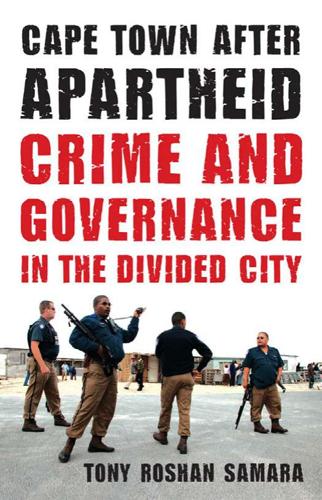
Cape Town After Apartheid: Crime and Governance in the Divided City
by
Tony Roshan Samara
Published 12 Jun 2011
The IDP attributed the pattern to the easy freeway access, good infrastructure, high amenity value, and safety of the wealthier areas. This, of course, is a direct legacy of apartheid social planning, which located poor nonwhites far from the urban center as a means of racial segregation, and apartheid capitalism, which sought to control black labor. Not surprisingly, the Human Development Index (HDI) reflects this spatial inequality. In 2005, the HDI for Mitchells Plain, the largest coloured township, measured .71, and for Khayelitsha, the largest black African township, .69. As a point of comparison, the HDI for Durbanville, a northern suburb of the city that is predominantly Afrikaans and was almost 90 percent white according to the 2001 census, was .88, and for the city center, .82.61 These spatial inequalities are hardly news to local authorities, and the city explicitly included a framework for social integration and targeting zones of poverty in its 1997 strategic planning document.62 To date, however, the city remains as divided as ever.
…
See arms trafficking Haefele, Benjamin, 95 Hangama, Nomatyala, 161 Hard Livings (gang), 130, 170 hard policing practices: in Cape Flats War, 111–22; People Against Gangsterism and Drugs vigilante campaigns and, 124–37; social crime rates and, 141–43; in townships, 123–52; urban governance and embrace of, 185–95 Harri, Kishor, 94, 121 HIV/AIDS epidemic: in Cape Town, 43; youth crime rates and, 72–73, 77 index╇ ·â•‡ 231 housing: gang activity and conditions in, 99–101, 136–37; township conflicts over, 159–65 Howard Eurocape, 70–71 Human Development Index (HDI): for Cape Town, 44 hybrid (public-private) governance. See also private sector; public sector: urban security and, 17–18 “hydra phenomenon” in gang organization, 131 income: gang activity as source of, 97–101; newspaper readership and, 214n.60 Independent Complaints Directorate (ICD), 46, 209n.71; crime statistics and, 126–37; mistrust of police and, 143; police brutality accusations in Cape Flats War and, 118; police misconduct cases and, 148–52; Tafelsig water war police brutality charges and, 156–57 Independent News and Media (INM), 74 Independent on Saturday, 73–74 informants: mistrust of police and use of, 145–52 infrastructure: Cape Flats Renewal Strategy and development of, 103–11, 193–95; gang activity supporting, 100–101, 169–72 Institute for Democracy in South Africa (Idasa), 28–29, 158 Institute for Security Studies (ISS), 38, 45, 99, 116 Integrated Development Plan (IDP), 79–80; Cape Flats Renewal Strategy and, 102–11; Listening Campaign of postapartheid government and, 158–60; social crime prevention and, 138–43; urban renewal and, 43–46, 50–53, 163–65 intelligence services: Cape Flats War and involvement of, 115–22; police corruption and, 149–50; police informants and, 146–52 “international best practices”: crime prevention in Cape Town and, 131–37 International Monetary Fund (IMF): economic development ideology of, 27; urban security ideology and, 10–13 Jackson, Pam, 85 Jensen, Steffen, 166 Jesters (gang), 179 job creation programs, lack of structure for, 162–65, 188 Jordaan, Llewellyn, 130, 137, 141, 163, 170 Joy Day Care Centre dispute, 168 Ketley, Richard, 28 Khayelitsha township: housing eviction dispute in, 159–65; unemployment severity in, 167; urban renewal in, 103–11 Kibble, Steve, 100–101 Kinnes, Irvin, 95–96, 98, 131, 167, 177 Kynoch, Gary, 170–71 Langa massacre, 30–31 Laughing Boys (Cape Flats gang), 90 Lavisa, Zola, 113 law enforcement.
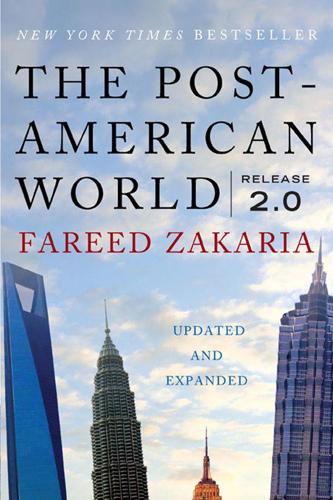
The Post-American World: Release 2.0
by
Fareed Zakaria
Published 1 Jan 2008
The results were poor, and in the 1970s, as India became more socialist, they became disastrous. In 1960, India’s per capita GDP was higher than China’s and 70 percent that of South Korea; today, it is just a quarter of China’s. South Korea’s is sixteen times larger. Perhaps most depressing is India’s score on the United Nations Human Development Index, which gauges countries not just by income but by health, literacy, and other such measures as well. India ranks 119 out of 169 countries—behind Syria, Sri Lanka, Vietnam, and the Dominican Republic. Female literacy is a shockingly low 48 percent. Despite mountains of rhetoric about helping the poor, India’s government has done little for them, even when compared with the governments of many other poor countries.
…
Petersburg, 83 Salafist Group for Call and Combat (GSPC), 13 salwar kurta, 88 samba, 95 Sarbanes-Oxley Act (2002), 221 saris, 88 Sarkozy, Nicolas, 252–53 Saudi Arabia, 8, 11, 13–14, 32, 38, 55, 125, 168, 232–33, 248n, 264, 278 savings rate, 25, 50, 104, 137–39, 151–52, 216–19, 233, 283 Schumer, Chuck, 220–21 Schwab, Klaus, 147 Schwarz, Benjamin, 37 scientific research, 68–70, 98, 123, 192, 198, 199, 200–202, 208–12, 218–19 Securities and Exchange Commission, 48 Security Council, UN, 40, 101, 118, 131, 165n, 254, 272 September 11, 2001, terrorist attacks, xi, 6, 10–11, 14, 16, 17, 246, 247, 265, 271, 272, 277, 278 service sector, 43, 148, 151, 230–31 Setser, Brad, 48, 55 Shah Jahan, 70 Shakespeare Wallah, 94 Shanghai, 34, 102–3, 109, 118, 150, 185, 211 Shanghai Stock Exchange, 109–10, 118 Shanmugaratnam, Tharman, 210–11 sharia, 16 Sharma, Ruchir, 179 Sherif, Abdul-Aziz el-, 15 Shia Muslims, 11–12, 263 shopping malls, 3 Shultz, George, 265 Sicily, 37 Sikhs, 180 Silicon Valley, 48, 215 Singapore, 3, 26, 32, 115–16, 132, 153, 185, 195–96, 200, 209, 210–12 Singh, Manmohan, 159, 160, 162, 169 Sino-African summit (2006), 130 Sky News, 96 Slaughter, Anne-Marie, 268 slavery, 79 Slovakia, 223 “smiley curve,” 203 socialism, 23, 24, 120, 144, 157, 161, 173, 178, 197 Social Security, 235 Socrates, 123 “soft power,” 121, 186, 259 Somalia, 185, 223 South Africa, 3, 4, 53, 98, 132, 188–90, 257, 258 South America, 78–79 South Asia, 21n, 52, 60 South China Sea, 133, 267 South Korea, 2, 20, 26, 40–41, 55, 84, 93, 95, 98, 104, 112, 115, 116, 132, 157, 171, 214 Soviet Union: Afghanistan invaded by, 13, 101, 284 Chinese relations of, 133, 137, 142 collapse of, 9, 23–24, 53, 243, 244–45, 284 Communist regime of, 23–24, 120 Czechoslovakia invaded by (1968), 252 expansionism of, 10, 173, 256, 284 space program of, 71, 232 as superpower, 10, 101, 120, 173, 256, 266, 284 technology sector of, 71 U.S. relations with, 4, 8–9, 20, 38, 141, 143, 144, 163–66, 196, 199, 244–45, 247, 252, 254, 255–56, 274, 275, 277, 284 in World War II, 37 see also Russia space program, 71, 232 Spain, 17, 116, 187, 239–41, 278, 280 Spanish language, 96 special interests, 234, 236 Speer, Albert, 103 Speer, Albert, Jr., 103 Spence, Jonathan, 124 Spiegel, 251 Spielberg, Steven, 105 Sputnik launching (1957), 232 Sri Lanka, 157, 165 Stalin, Joseph, 37, 196, 254, 275, 277 Starbucks, 105 state-directed capitalism, 32 state socialism, 144 “stealth reforms,” 160 steel, 103–4 Steingart, Gabor, 50 Stiglitz, Joseph, 139–40 stocks, 43, 109–10, 222 sub-Saharan Africa, 80 Sudan, 31, 38, 41, 131, 188, 273 Suez Canal, 20, 168, 186, 195 Suez Canal crisis (1956), 20, 168 suicide bombings, 14–15 Summers, Lawrence, 246 Sunni Muslims, 11–12, 263 Sun Yat-sen, 84, 86 Sun Zi, 143 Sweden, 24, 116, 200 Switzerland, 200 Syria, 6, 8, 157 Taiwan, 2, 20, 26, 35, 112, 116, 118, 119, 132, 135–36, 137, 141, 142, 165n, 214, 263, 264 Taiwan Strait, 20 Taj Mahal, 70–71 Talbot, Strobe, 107 Taliban, 13, 172, 241 Tamil Nadu, 180 tariffs, 40, 197 Tata Group, 148–49, 153 Tata Motors, 230 Nano of, 229–30 taxation, 40, 64, 72, 75, 83–84, 107–8, 223, 235, 236, 262 Tay, Simon, 259 technology, xiii, 9, 36, 43, 58, 60–61, 87, 92–93, 113, 135, 142, 148–49, 161, 198, 199, 200–212, 215, 217, 224–26, 228–32, 233 Tehran Conference (1943), 254 telecommunications industry, 161 television, 95, 96 tennis, 219–20 terrorism, 5, 6, 9, 10–19, 29, 34, 59, 241, 246, 247, 264, 269–70, 271, 272, 276–80 textile industry, 28 Thailand, 28, 132 Tharoor, Shashi, 165n Thatcher, Margaret, 24, 197, 225, 244, 245 Third Plenum of the Eleventh Central Committee of the Communist Party (1978), 101–2 Third World, 10, 39, 102, 161, 177, 229, 232 Thirty Years’ War, 123 Thornton, John, 114 Tiananmen Square massacre (1989), 27, 137, 274–75 Tibet, 165 Time, 96 Times (London), 96 Times Higher Educational Supplement, 207 Tojo Hideki, 37 Tokyo, 91–92 totalitarianism, 112–17, 274 Toynbee, Arnold, 185, 197 Toyota, 225–26 trade balance, 21, 36, 57–58, 104–5, 216 traditional culture, 90–99 “treasure ships,” 62–63 treasury bills, U.S., 138 Treasury Department, U.S., 11 Trends in International Mathematics and Science Study (TIMSS), 208–9 Truman, Harry S., 253, 255–56 Tsongas, Paul, 245 tsunami disaster (2005), 155 Tunisia, 209 Turkey, 4, 8, 17, 28–29, 84, 115, 273–74, 278 Turkey bombings (2003), 17 Twain, Mark, 271 Ukraine, 3, 260 unemployment, xi, xiii, 2, 227 unemployment rate, 212, 217, 226, 284 unilateralism, 59, 246–55, 264, 267–69 “uni-multipolarity,” 53 unipolar order, 1–5, 39, 52, 233, 240–42, 243–50, 266–67, 274–75 United Arab Emirates, 3 United Nations, 40, 41, 101, 118, 131, 157, 165n, 213, 240, 244, 250, 253, 254, 264, 268, 272 United Nations Human Development Index, 157 United Nations Population Division, 213 United States, 239–85 African policy of, 270–71, 273 alliances of, 243–50, 270–75 Asian policies of, 90, 241–42, 245, 259–60, 266, 267, 273–74, 280–81 automobile industry of, 192, 225, 230, 244 British Empire compared with, 185–86, 189–90, 197–99, 237, 261–63, 266, 268 British relations of, 168, 189, 194–97, 241, 254, 261, 274 budget deficits of, 139, 219, 241–42, 244 capitalism in, xi, 23, 28, 47, 60, 120, 200–202, 223–24 China compared with, 100, 103, 108, 193, 200, 242, 263 Chinese relations of, 100, 104, 105–6, 108, 118, 136–44, 176–77, 190, 236, 254, 260–61, 263, 264, 266, 269, 280–82 colonial period of, 65, 194 culture of, xi, 1–5, 36, 90–91, 93, 94, 204, 212–16, 223–26, 271–72, 275–85 democratic ideals of, 141, 167, 232–38, 264, 274–75 demographics of, 212–16 diversity of, 212–16, 278, 283–84 domestic market of, 224, 241, 267, 283 economy of, xi–xiii, 18, 20, 22, 25–26, 29, 43–49, 50, 56–57, 86–87, 118–19, 120, 140, 152, 182, 186, 191, 192, 197–99, 212–19, 233–34, 237–38, 241, 244, 245, 255, 275, 282–83 education in, 48, 58, 200, 204–12, 215, 218–19, 225, 233 elections in, 245, 251, 276, 278–79 energy needs of, 38, 232–33 engineers trained in, 204–8 European relations of, 244–45, 251–55, 273–74 family values in, 93 film industry of, 90, 94 financial markets of, 217, 219–22 foreign investment in, 219 foreign policy of, 8, 42, 52, 59, 125, 130, 131, 132, 140, 142–44, 167–68, 189–90, 223, 235–85 foreign trade of, 20–21, 36, 57–58, 104, 200, 216, 217, 280–83 French relations of, 251, 252–53 future development of, 1–5, 94–99, 199–203, 204, 239–85 German relations of, 244, 245, 251 global influence of, see post-American world gross domestic product (GDP) of, 18, 104, 118–19, 191, 196, 198–99, 200, 207–8, 215, 217, 218, 219n, 255 growth rate for, 212–16, 233–34, 243 health care in, 225–26, 233n, 283 immigration to, 61, 87, 167, 212–16, 233, 272, 277, 278, 280, 282 income levels of, 212, 216, 217–18, 219 India compared with, 155–56, 200, 226–27 Indian relations of, 54–55, 144, 160, 166–68, 173, 174–78, 182, 249–50, 263, 264, 266, 269, 271, 274, 283 industrialization of, 2, 20, 65, 193, 200, 204, 217, 218 infrastructure of, 152 insularity of, 223–26, 275–85 Japanese relations of, 245, 266 labor force of, 225–26 legal system of, 225 manufacturing sector of, 202–3 middle class in, 226–32 Middle East policies of, 8, 31, 52, 274 military forces of, xi, 48, 54, 140, 142–43, 174–78, 182, 185, 198–99, 241, 254, 259–63, 265, 267, 269–71 military spending of, 18, 105n, 142, 198–99, 241, 262 Muslim population of, 272, 276, 278 national debt of, 138, 140, 217–19, 241–42 nationalism in, 36–39 nuclear weapons of, 140, 142, 174–78, 265 oil needs of, 38 political system of, 186, 216, 232–38, 275–85 population of, 22, 50–51, 100, 200, 212–16 productivity of, 200, 281, 282, 283 United States (continued) religious attitudes in, 122 rhetoric of fear in, 275–85 Russian relations of, 54, 190, 241, 247, 260, 266, 269 savings rate of, 216–19, 233, 241, 283 scientific research in, 198, 199, 200, 218–19 Soviet relations of, 4, 8–9, 20, 38, 141, 143, 144, 163–66, 196, 199, 244–45, 247, 252, 254, 255–56, 274, 275, 277, 284 special interests in, 234, 236 as superpower, 4, 49–61, 117, 120, 142–44, 182, 223–85 taxation in, 108, 223, 235, 236, 262 technology sector of, xiii, 58, 61, 198, 199, 200–212, 215, 217, 224–25, 228, 233 terrorist attacks against, 6, 10–11, 13, 16, 17, 29, 59, 241, 246, 247, 265, 270, 271, 272, 276, 277–80 unemployment in, xi, 227 unemployment rate in, 217, 226, 284 unilateralism of, 59, 246–55, 264–65, 267–69 as UN member, 118, 254, 264, 272 wage levels in, 229 in World War II, 36–37 urbanization, 102–3, 106, 110, 150, 153–55, 160, 167 U.S.
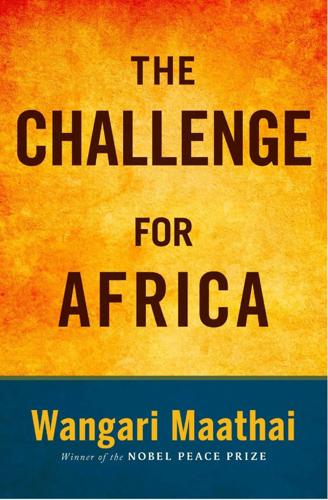
The Challenge for Africa
by
Wangari Maathai
Published 6 Apr 2009
According to the World Health Organization, nearly twenty-five million people in sub-Saharan Africa are living with HIV.10 Botswana, so long a beacon of political stability and economic growth, is challenged by the fact that a quarter of its citizens are HIV positive, a key factor in the decline of the average life expectancy from sixty-five years in 1995 to forty years in 2005.11 In the 2007/2008 UN Human Development Report, all of the twenty-two lowest-ranked countries—in terms of life expectancy at birth; adult literacy rates; combined gross enrollment ratio for primary, secondary, and tertiary education; GDP per capita; life expectancy index; education index; and GDP—were from Africa south of the Sahara. Alone of sub-Saharan African states, the island nations of Mauritius and the Seychelles were ranked in the top one hundred of the report's Human Development Index.12 REMAKING THE THREE-LEGGED STOOL A definite hunger for the reintroduction of democracy exists among African peoples after being denied it for so many years. At the same time, some of the current so-called democracies are deliberately weak or still unfolding. Too often, the term “democracy” has simply become a bromide offered during voting, rather than a means of enhancing the capacities of governmental and nongovernmental institutions, providing basic services to the people, and empowering them to be active partners in development.
…
Norway, for instance, has half of Europe's oil and gas reserves and in 2004 became the third-largest exporter of oil in the world.32 In the nineteenth and early twentieth centuries, Norway was so poor that 15 percent of its population emigrated, in search of more opportunities and better lives. However, by 2007, it had the third-highest GDP per capita in the world, average life expectancy at birth was eighty years, and it ranked second in the United Nations' Human Development Index.33 Norway maintains high rates of taxation, and costs of living are also high, which together mean that disparities in wealth are relatively small and within the society an egalitarian ethos predominates. Since 1990, Norway has been saving some of the money it receives from its oil exports in a sovereign wealth fund.
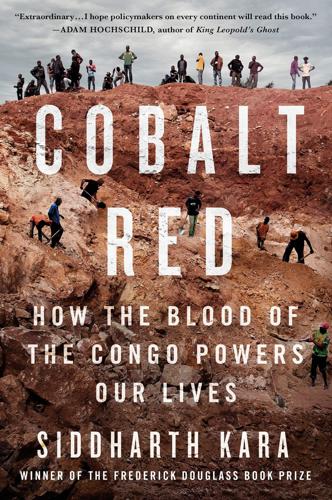
Cobalt Red: How the Blood of the Congo Powers Our Lives
by
Siddharth Kara
Published 30 Jan 2023
Although the copious mineral riches of Katanga could easily fund numerous programs to improve child education, alleviate child mortality, upgrade sanitation and public health, and expand electrification for the Congolese people, most of the mineral wealth flows out of the country. Despite being home to trillions of dollars in untapped mineral deposits, the DRC’s entire national budget in 2021 was a scant $7.2 billion, similar to the state of Idaho, which has one-fiftieth the population. The DRC ranks 175 out of 189 on the United Nations Human Development Index. More than three-fourths of the population live below the poverty line, one-third suffer from food insecurity, life expectancy is only 60.7 years, child mortality ranks eleventh worst in the world, access to clean drinking water is only 26 percent, and electrification is only 9 percent. Education is supposed to be funded by the state until eighteen years of age, but schools and teachers are under-supported and forced to charge fees of five or six dollars per month to cover expenses, a sum that millions of people in the DRC cannot afford.
…
Tshisekedi, Félix Tshite (Lubo’s father) Tshombe, Moise tunnels CDM site digging of children buried alive in cobalt mining digging deaths from collapsing Glencore’s collapse of heterogenite followed by injuries from collapse of Kamilombe’s collapsing at Kasulo Kasulo with collapsing KCC collapse of KCC mine with Lake Malo collapse of Mashamba East collapse of no supports for not earning wages while digging Raphael digging in Tilwezembe digging consequences of toxic particulates in ventilation of wages from digging in walk upon dead in wall collapse injuries in Twain, Mark UMHK. See Union Minière du Haut-Katanga UN. See United Nations underworld UNICEF Union Minière du Haut-Katanga (UMHK) United Nations (UN) United Nations Human Development Index United States University of Lubumbashi uranium. See also radioactive exposure ASM finding smuggling of ventilation, of tunnels violence voter registration cards wages of artisanal miners children making smaller decent at depots Gécamines with fixed of Lucien piece-rate and fixed tunnel digging tunnels and not earning washing pool Washington, Booker T.
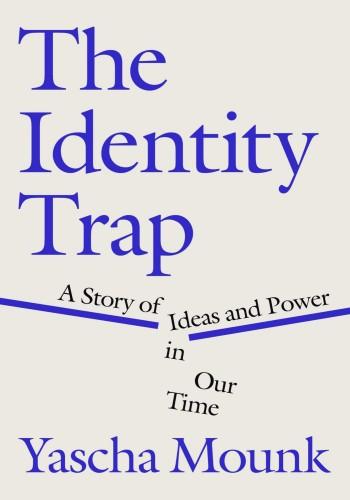
The Identity Trap: A Story of Ideas and Power in Our Time
by
Yascha Mounk
Published 26 Sep 2023
But when they think about how and where they want to live, most people will, as surveys of the dream destinations for would-be immigrants reveal, choose countries like France and Germany, Canada and the United Kingdom, Australia and the United States: countries, that is, in which they could speak freely, enjoy great autonomy in how they lead their private lives, and contest the decisions of a government they consider out of touch. There is good reason for that. Statistics show that liberal democracies outperform their rivals on key metrics that virtually every human being values. All twenty of the countries in which people report being the happiest are democracies. Out of the thirty countries with the highest human development index, twenty-seven are liberal democracies. Out of the thirty countries with the longest life expectancy, twenty-nine are liberal democracies. Even on economic metrics, which are often thought to favor efficient autocracies, democracies enjoy a striking advantage: out of the twenty-five countries with over four million inhabitants that have the highest GDP per capita, twenty-two are democratic.
…
And political equality helps to avert the most destructive forms of intergroup competition, making sure that all of us get a fair shake even if we don’t run the government. Liberal democracies vastly outperform alternative regime forms on metrics that most people have strong reason to value. Nearly all of the richest and happiest countries in the world are liberal democracies. So are those with the highest human development index. This is no mere coincidence: liberal institutions have helped sustain peace and affluence. Conclusion HOW TO ESCAPE THE IDENTITY TRAP Eboo Patel was born in Chicago, the son of a Muslim immigrant from India who came to the country as a poor student and worked his way up to relative riches by taking out franchises on Subway sandwich stores.
…
Neli Esipova, Julie Ray, and Anita Pugliese, “Number of Potential Migrants Worldwide Tops 700 Million,” Gallup, June 8, 2017, news.gallup.com/poll/211883/number-potential-migrants-worldwide-tops-700-million.aspx?g_source=World&g_medium=newsfeed&g_campaign=tiles. GO TO NOTE REFERENCE IN TEXT Out of the thirty countries: The exceptions are Singapore (ranked twelfth) and the United Arab Emirates (ranked twenty-sixth). “Statistical Annex: Human Development Index and Its Components,” in Human Development Report 2021/2022: Uncertain Times, Unsettled Lives: Shaping Our Future in a Transforming World (New York: UNDP, 2022), 272. GO TO NOTE REFERENCE IN TEXT longest life expectancy: Only China charts, ranking at twenty-nine. “Life Expectancy at Birth” (indicator), OECD (2023), accessed Jan. 29, 2023, doi:10.1787/27e0fc9d-en.
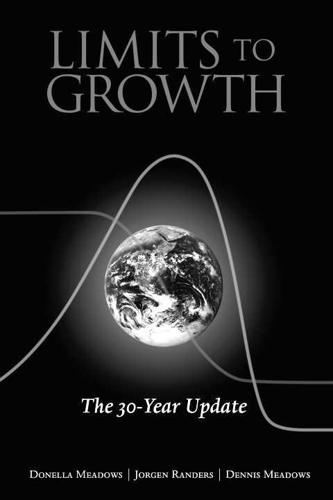
The Limits to Growth: The 30-Year Update
by
Donella H. Meadows
,
Jørgen Randers
and
Dennis L. Meadows
Published 15 Apr 2004
After considering the options, we chose the indicators described below We chose quantitative indicators, since they best suit the mathematical model World3. And instead of defining our own indices, we chose to adapt existing indicators that are more generally accepted. The Human Development Index of UNDP As a measure of human welfare we chose the Human Development Index (HDI), which has been measured for a number of years for most countries by the United Nations Development Program (UNDP). The HDI is published annually in the Human Development Report.2 In the 2001 Report UNDP defined the HDI: The HDI is a summary measure of human development.

Confessions of a Microfinance Heretic
by
Hugh Sinclair
Published 4 Oct 2012
Essentially we have a closed time period: microfinance hit the country like a tsunami, then collapsed. This is a neat case study. Over this period the Gini coefficient of Nicaragua hardly changed. This statistic measures the inequality of income and wealth in a society. The poor got neither better off nor worse off compared to the rest of the country. The Human Development Index is the UN’s overall measure of well-being. When I first entered microfinance, in 2001, Nicaragua was the 106th poorest country in the world as measured by this index. Microfinance was almost unheard of in Nicaragua at this point, and there were no large microfinance funds throwing money around.
…
, 208 Berenbach, Shari, 159, 161 BlueOrchard, 141, 199 investment in LAPO, 169, 182, 216 investment in Nicaragua, 193, 199 mission statement, 73 public relations attack on critics, 184–85, 200 Bolivia, microfinance in, 8, 249 Bosnia, microfinance in, 249 BRAC, 174, 179 Burson-Marsteller, 218 C Calvert Foundation, 11, 70, 200 complaint against, 159, 160 criticized in New York Times, 167, 168 discussion of evidence against LAPO, 155, 159, 161–64 due diligence on investments, 161 investment in LAPO, 115–16, 127, 131–32, 139, 146, 161 investment in Nicaragua, 199 stonewalling on LAPO criticisms, 145–46, 153, 164, 168 withdraws from LAPO, 164, 168 Caught in MicroDebt (Heinemann), 183, 208–10, 238 Center for Global Development, 184, 216 Central Bank of Mozambique, 64 Central Bank of Nigeria, 144, 145, 158, 182 Chang, Ha-Joon, 201 child labor, 6–7, 78, 205, 219 Chirac, Jacques, 209 Citi Microfinance, 165 investment in LAPO, 139, 146–47, 169 reaction to criticism of LAPO, 147 clients, microfinance advice to, 231–32 cheated of savings, 91–92, 157 default rates, 20, 62, 157, 171, 175 forced prostitution of, 205–6, 207 forced savings, 35–36, 92, 144, 157 group guarantees, 17, 19–20, 36, 205 harassment by MFIs, 205–6 interest charged, 2, 5–6, 10, 60, 92–93, 99, 100–2, 138, 157, 171–72, 175, 177–78, 180–81, 182, 183, 249 interest paid, 92, 99, 101–2, 247 kidnapping of, 205 overindebtedness, 80, 81, 140, 194, 205 resistance to MFIs, 195, 197 suicides of, 20, 80, 206 use of loans, 5–6, 18–19, 77–78, 150–52, 171, 193, 247–49 Compartamos, 3, 252n9 interest rates charged by, 3, 74–75 public offering, 3, 74, 182, 192, 204 Conserva, 25–26 Cordaid, investment in LAPO, 138 Counts, Alex, 183 Craigslist, 175 CrediComun, 174 credit unions, 9 Creditiuyo, 174 D Daley-Harris, Sam, 128 de Klumpp, Jean-Pierre, 141, 184, 186 debt, indebtedness, 5, 80, 81, 101, 140, 194, 205 Department of International Development (DFID, UK), 3 Desjardins Group, 9 Deutsche Bank, 10, 11, 133, 143 criticized in New York Times, 167 investment in LAPO, 139, 146 investment in Nicaragua, 199 reaction to criticisms of LAPO, 154–55 Diouf, Wagane, 166, 177 Duflo, Esther, 78 Dutch Postcode Lottery DOEN Foundation, 69, 70, 177 E eBay, 116, 159, 167 Ehigiamusoe, Godwin, 83–84, 142, 143 Ejoh Moju & Co., 156 Engelsman, Ab, 127 Enron, 16 entrepreneurs, entrepreneurialism, 18, 73, 235, 239–49 Erikson, Eliza, 145–46, 159, 164 Evers, Steven, 71, 72, 108, 110, 143 F FINCA International, 78 First Bank Nigeria, 211 Flannery, Matthew, 177 Fondo de Credito Comunitario (FCC) compared with other MFIs, 62 cost structure of, 60–61 forced savings, use of, 37, 60, 61 interest rates charged by, 60, 61 IT system projects, 39–53, 60 problems at, 33–34, 38, 55–56, 60–61 Ford Foundation, 157 Friends of Grameen, 209–11, 218 Fundenuse, 197 G Givewell, 184 Global Microcredit Summit, 128–29 Gokhale, Ketaki, 203 Google Inc., 175 Graber, Ken, 63, 64 Grameen Bank, 2, 8, 17, 84 criticism of, 208–10 interest rates charged by, 2, 210 Norwegian government investment in, 80 Grameen Foundation USA, 2, 143, 147, 157, 184 Grameen Trust Chiapas and, 17 investment in LAPO, 84, 133, 139, 168, 180, 182, 221 knowledge of LAPO problems, 104 LAPO accounting practices and, 91–92, 99 public relations attack on critics, 183–84, 208 Grameen Trust Chiapas, 17 accounting problems at, 23 business model, 24–25 group lending by, 19–20 nonprofit status, 19, 25 structure of, 19–20 Grottis, Sam, 38–39, 56, 57, 58–59, 64, 65 H Hatch, John, 78 Heinemann, Tom Caught in MicroDebt, 183, 208–10, 238 Human Development Index, 201 I Incofin investment in LAPO, 138, 169, 199 withdrawal from Nicaragua, 199 India development of microfinance in, 202–3 suicide of MFI clients in, 20, 80, 206 Indian Express, 205 Intel Corp., 175 Inter-American Development Bank, 12 visit to Grameen Trust Chiapas, 22–25 International Association of Microfinance Investors (IAMFI), 200 International Finance Corporation, 18 J Jackson, Jessica, 177 JP Morgan Chase, 175 K Keen, 175 Khosla, Vinoid, 204 Kiva, 11, 70, 102, 135 business model, 170–74 criticized in New York Times, 167, 168–69 default rates, 175 interest rates charged clients, 171–72, 174, 177–78 investment in LAPO, 139, 148, 153, 169, 175, 177–78 investment in Nicaragua, 199 partners, 173 profitability, 173–74 public relations, 175–76 response to criticism of LAPO, 177–80 withdrawal from LAPO, 179, 184 Klachteninstituut Financiële Dienstverlening (KIFID), 144 Kristof, Nicholas, 13 L Lift Above Poverty Organization (LAPO), 83 accounting problems, 91–92 business model, 101–2, 114–15 client desertion rates, 110, 138, 185 creditor taskforce, 161 deception of rating agencies, 152–53 forced savings, 101–2, 139, 144, 157 interest rate calculations, 91–93, 157 interest rates charged, 99, 100–2, 138, 142–43, 157, 180, 183, 185, 210 IT system, 90–92, 97, 99–100, 103, 107 microfinance fund investments in, 109, 113, 115–19, 121, 139, 167, 182, 216 profitability, 115, 158, 182–83, 185, 187, 190, 192 rating agency evaluations of, 137–38, 153, 156–58, 185, 219 transformation into a bank, 144–45, 158, 182 loans, microfinance consumption, 5–6, 78 default on, 20, 62, 157, 171, 175, 205 group guarantees of, 7, 19–20, 36 interest rates, 2, 5–6, 10, 60, 92–93, 99, 100–2, 157, 171–72, 174–75, 177–78, 180–81, 182, 183, 194, 220–21 purposes of, 5–6, 18–19, 77–78, 150–52, 171 LuxFLAG, 220 M M-Cril, 136, 203 M2 software, 84–86, 140 MacDougal, David, 199 MacFarquhar, Neil “Banks Making Big Profits from Tiny Loans,” 167 Mahmood, Asad, 154–55 Manuel, José, 26, 40–48, 84–86, 88, 99–100, 103, 105 Maputo, Mozambique, 32–33, 39 crime in, 56–57 Mecene Investments, 166 men, as microfinance clients 145, 234 Mexico, microfinance in, 19–26, 208, 210 microDINERO, 211 microfinance economics, 239–49 microfinance funds, 67, 227–28 Banana Skins surveys of sector, 80–81 business model, 72–79, 170–74 cooperation among, 78–79, 115–16 cost structure, 77–78, 238 due diligence on investments, 76, 98, 111–14, 118, 121–22, 137, 139, 158, 161, 169, 187, 192, 199–200 investors in, 12, 70, 175, 176, 177, 179, 189–91, 192, 196 lack of transparency, 166, 176, 179, 181, 191–92, 219–21 overinvestment in Nicaragua, 193, 194, 196, 198–200 principal-agent problem, 81–82 profitability, 102, 173–74, 190, 192, 194, 199, 216–17 public relations, 72–73, 76–77, 170, 175–76, 199, 202, 210 regulation of, 82, 116, 176, 188, 189, 192, 196, 197, 221, 231 microfinance rating agencies, 136–40, 156–58, 185, 237 methodologies, 137 warnings of financial problems, 139–40, 203 MicroFinance Transparency, 181, 184, 220–21 microfinance, microfinance institutions (MFIs), 3 as nonprofits, 19, 114–15, 182 business model of, 18, 20–21, 34–35 Christian, 65–66 clients, 5, 10, 11, 18, 19–20, 36–37, 77–78, 110, 138–40, 145, 150–52, 193–98, 205–7, 212 comparison to favelas, 215–16 competition among, 73–74, 104, 197 defense of, 2, 4–5 effective models, 222–24 financing of, 18, 36–38, 65–66, 73–76, 100, 111–14, 138–39, 191 gender-based lending by, 142, 145–46 harassment of clients, 20, 195, 203–8 history of, 8–10 impact on poverty, 3–4, 13, 78, 92, 100, 142–43, 179, 201, 212–12, 217, 247–49 interest rates charged by, 2, 5–6, 10, 60, 92–93, 99, 100–2, 138, 157, 171–72, 175, 177–78, 180–81, 182, 183, 249 IT systems in, 26, 39–40, 83, 84, 99–100, 105, 237 lack of transparency, 166, 170, 191–92 loan and other products, 20–22, 225–26 principles for fixing the sector, 225–38 profitability of, 18, 115, 172–73, 190, 191, 212–13 public relations, 4–5, 10, 12, 65–67, 73, 128–29, 142, 143–44, 147, 148, 153, 160, 171–72, 175–76, 182–83, 195, 218–21 regulation of, 37, 64, 65, 82, 189, 196, 197–98, 207, 221, 231 summary of critique of, 5–7 transformation into banks, 34, 100, 114–15, 144–45, 182, 192 use of client savings, 33–36 Microfinanza Rating, 136 MicroPlace, 116 deception on website, 160 raising money for LAPO, 167 MicroRate, 136, 165, 184 2006 rating of LAPO, 138–39 confirmation of LAPO rating, 158, 159 withdrawal of LAPO rating, 152–54, 203 Microsoft Corp., 175 MIX Market reports, 197–98 Africa Works, 65 Fondo de Credito Comunitario, 61 India, 203 SKS, 204 Mkandawire, Bentry, 99 Mol, Eelco, 70, 71 Molijn, Bruno, 108–10, 133, 144–45 moneylenders, 18, 203 Mongolia, microfinance sector in, 149–56, 152, 179 Morgan Stanley, 200 Mozambique, 41–52, 56–57, 84 poverty in, 32–33 Mujeres de Zinacantan, Las, 26 MyC4, 70, 135 N Nestor, Camilla, 181 Netherlands, 160 employment law, 127 government investments in microfinance, 84, 111, 148 New York Times, 13, 108, 167 critical articles on microfinance, 11, 167–69, 178, 180, 183, 184, 200 Nicaragua, 8 collapse of microfinance sector, 80, 140, 193–97 microfinance bubble, 193–98, 201 microfinance impact on poverty, 201 no paga movement, 195–97 regulation of microfinance, 197–98 Nigeria, 83, 87, 89, 94–96, 179 corruption in, 84, 86–87, 94, 103 microfinance in, 99–103, 138–39, 142–43, 211 working conditions in, 87–89 Norway, investigation of Grameen Bank, 209–10, 259n32, 259n36 Not One The Same (NOTS), 70, 160 O Omidyar, 175 Otero, Maria, 75, 158 Overseas Development Institute, 208 Oxfam Novib, 67, 70, 71, 84, 105 conflict with Triple Jump, 112–13 investment in LAPO, 110, 111–13, 116, 133, 138, 190 learns about LAPO problems, 108–10, 144, 145 P PayPal, 116 Park, David, 33, 61, 62, 64 peer-to-peer organizations (P2Ps), 79 business model, 170–77 lack of transparency, 166 PlaNet Finance group, 136 Planet Rating, 136, 154, 184 LAPO rating, 156–59, 165, 169, 178, 181 second LAPO rating, 182 Pouit, Jean, 99 Pouliot, Robert, 166 poverty reduction, 2, 3–4, 6, 7, 78, 92 ProCredit, 70 Q Quantum Hedge Fund, 204 R Raiffeisen, Wilhelm, 9 responsAbility, 169, 182, 189, 199, 216 risk, management of, 34, 36 Roodman, David, 184, 211, 216 S Schwab Foundation, 180 Securities Exchange Commission, 37, 65, 116, 148, 159 Sequoia Capital, 204 Shah, Premal, 177, 178 Shorebank International, 9 Sinclair, Hugh, 38 arrival in Mozambique, 30–32 background, 4, 7–8, 11–12, 15–17 confronts BlueOrchard, 186–89 confronts Triple Jump with evidence of fraud, 118–23 Conserva and, 26–26 deals with crime in Mozambique, 56–57 deals with crime in Nigeria, 94–96 death threat against, 155 Deutsche Bank and, 10, 143, 154–55, 208 discusses LAPO with AMT, 219 discusses LAPO with Calvert, 146–47, 159 discusses LAPO with Kiva, 177–80 discusses client protection wtih SMART Campaign, 219 files complaints with regulators, 144 Grameen Trust Chiapas and, 18–25 informs Oxfam Novib about LAPO, 108–10 introduction to microfinance, 4, 16–17 LAPO IT project, 90–92, 99–103 lawsuit against Triple Jump, 125–27, 129–33 learns P2P business, 135 lessons from Mozambique, 65–66 move to the Netherlands, 68, 69 organizes LAPO project, 83–86 project in Argentina, 104–5 project in Ecuador, 104 project in Peru, 104 reviews LAPO for Triple Jump, 112–18 Sam Grottis and, 58–59 speaks at ASN Bank annual meeting, 142–43 travel in Nigeria, 86–89 warns World Relief about problems at FCC, 61–64 work at Fondo de Credito Comunitario, 33–34, 38–60, 63–64 work in Mongolia, 149–56 work in Nicaragua, 194–95 Skoll World Forum, 75 SKS collapse in share price, 204–5 floats IPO, 203–4 interest rates charged, 204 profitability, 204 SMART Campaign and, 206 SMART Campaign, 182, 192 client protection principles and, 205, 206, 218–19 Society for the Elimination of Rural Poverty, 206 Soros, George, 204 South Sudan, 174, 179 Standard Chartered Bank investment in LAPO, 146, 169, 182 StreetCred, 16–17 T Times of India, 205, 207 Triodos Bank, 113 Triodos-DOEN fund, 70 Triple Jump, 67, 69, 200 defends lawsuit against Hugh Sinclair, 125–28, 130–31 Dutch court ruling against, 131–33 fires Hugh Sinclair, 122–24 funding of LAPO, 98 investment in LAPO, 139, 147 investment in Nicaragua, 199 knowledge of LAPO problems, 104 management experience, 70–72 misrepresentation of LAPO to investors, 112–13, 145, 147, 159 mission statement, 72 profitability, 174 reaction to criticisms of LAPO, 143–44 Triple Jump Advisory Services, 70, 72 U U.S.

Instant City: Life and Death in Karachi
by
Steve Inskeep
Published 12 Oct 2011
The instant city mixed the good with the bad, battering people with the impartiality of a typhoon. Even in the terrible year that was now under way, Karachi had much to recommend it. Businessmen saw opportunity in the city’s outrageous expansion. Workers saw opportunities too, which explained why many migrated to Karachi, or commuted from their home villages. The UN human development index, measuring education levels, health, and income, showed Karachi doing worse than the West, but far better than rural areas of Pakistan. Medical care was more easily available, and so was education. Although Pakistan’s school system was appalling—more than 40 percent of the country could not read—Karachi’s literacy far surpassed that of the surrounding countryside.
…
The report says that migration accounts for about 25 percent of worldwide urban growth, and that migration is more pronounced in South Asia, East Asia, Africa, and the Middle East. CHAPTER 1: PROMENADE 10 living better than people almost anywhere else in Pakistan: According to the United Nations Human Development Index. United Nations Development Program, “Pakistan National Human Development Report,” 2003. http://www.un.org.pk/nhdr/htm_pages/cp_1.htm. 10 “We’re not a poor country”: From conversation in Karachi, March 2010. 11 1,747, by one count, in the year 2009: Figures compiled by Human Rights Commission of Pakistan, Karachi office, 2010. 11 Taliban fighters are believed to visit Karachi: “Taliban Find Safe Haven in Pakistan’s Karachi,” Reuters, May 14, 2010. 11 a base for attacks outside Pakistan: Rohan Gunaratna and Khuram Iqbal detail several such attacks, and argue that “Al Qaeda could not have operated globally without a forward operational base in Karachi.”
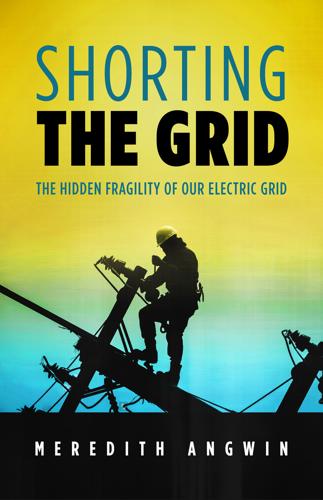
Shorting the Grid: The Hidden Fragility of Our Electric Grid
by
Meredith. Angwin
Published 18 Oct 2020
In A Question of Power: Electricity and the Wealth of Nations, Robert Bryce used a set of databases to divide countries of the world into three groups: Unplugged Countries, where per-capita electricity use is less than 1000 kWh per year, Low-Watt countries, where electricity use is between 1000 and 4000 kWh per year, and High-Watt countries, where electricity use exceeds 4000 kWh per year.239 Bryce quotes studies that show that the Human Development Index (HDI) increases with increased electricity use—but does not increase with more use above 4000 kWh per capita. (The HDI includes life expectancy, education, safe water, and other measures of human health and happiness.) More than 3 billion people live in Unplugged Countries, including India.
…
“Jake,” 84 E economic dispatch, 90–91, 149 EEme, 320 Electric Power Research Institute (EPRI), 36, 39 electric quality, renewables and, 209 electricity, generation in real time, 17–18, 25–26, 50. see also power grid electricity imports, 128, 131, 135–141, 158 electricitymap.org, 309, 324 electromagnetic radiation, line loss and, 23 emissions floor price rules and, 357–358 Ontario, Canada and, 355 Energy Efficiency groups, 119–120 Energy Institute, 83 Energy Star appliances, 321, 322 engineering discipline, lack of, 206–207 Enron, 10, 78 Entergy, 97, 157, 263–264, 328, 331 Environmental Defense Fund (EDF), 256 Eppstein, Margaret, 156 Equivalent Peak Period Forced Outage Rate (EFORp), 118 ERCOT, 89 Estonia, flexible pricing and, 316 Evslin, Tom, 319 Exelon Corporation, 127, 130, 330, 331 F “fairness,” RTO required to maintain, 121–123 Falmouth, Massachusetts, removal of wind turbines and, 299 fast-start plants, 200 Federal Energy Regulatory Commission (FERC) Bonneville Power Administration and, 236 citizen influence of, 363–364 Competitive Auctions with Sponsored Policy Resources (CASPR) and, 274–277 fuel neutrality and, 60, 121–123, 143, 226 fuel security ISO-NE ruling, 143–144 ISO-NE MOPR and, 266–269 jump ball filings, 109–113, 115–124 lack of transparency in RTO areas, 105, 107 market manipulation in California and, 78 Minimum Offer Price Rule (MOPR) and, 271–272 Mystic Generating Station and, 96 orders of, 72–73, 183, 227–228 socialization of transmission lines and, 160, 163–168 Winter Reliability Program and, 51, 109 Federal Trade Commission, 245 financial crisis of 2007, 3–4 FirstEnergy, 263–264, 328–329, 331 flexibility, grid, 206–207 “floor price” rules, Ontario’s, 357 Forward Capacity Auctions, 157, 283, 291 forward capacity market (FCM), 117 Forward Capacity Market, New England, 136 fossil fuels, “beating the peak” and, 176–177 fragility, grid, 5, 7, 79, 123, 345, 345–346 France, CO2 emissions, 309–310 fuel neutrality, 60, 103–108, 112–113, 121–123, 183, 226, 284, 330 fuel security, 122–123, 125–131, 136, 140–142, 143–153, 158, 307–308, 323, 333 G Gates, Bill, 340 Gattie, David, 83 generation utilities (merchant generators), 41–43, 77–79 generators, personal, 45–46 George, Ann, 270 Germany, CO2 emissions, 309–310, 324–325 Gheorghiu, Iulia, 276 Gifford, Ray, 75 Girouard, Coley, 282, 283 Glick, Richard, 123, 269 Global Adjustment price, 354–356 Goldstein, Joshua, 310, 311, 313, 353 Grand Coulee Dam, 195 Great Britain, renewables-alone and, 312 Green Mountain Power, 301, 302 Green New Deal movement, 197 Greenpeace, 297–302, 342 Greenpeace, solar project in India, 304–305 Greenstone, Michael, 237–239 greenwashing, 62, 169–174, 178–179, 302 grid, as machine, 281–283 grid governance, choice of, 348–351 grid price, 51, 88, 184, 227, 228, 233 ground faults, 210–211 H Hallquist, Christine, 201, 236 Hargraves, Bob, 339 high-quality grid, components of, 343–346 Hittinger, Eric, 30 hot weather planning, 170–174, 175–179 Human Development Index (HDI), 310 hydro plants cold weather and, 52–53 intermittent or steady power, 194 load-following plants and, 186 Ontario, Canada and, 356–357 responsiveness of, 27 Wind-Water-Solar, 195–197 Hydro-Québec, 137, 158, 240, 244 I Independent Electricity System Operator (IESO), 353, 354, 358 Independent System Operators (ISOs), 34, 72. see also Regional Transmission Organizations (RTOs) clearing price and, 92 India coal and, 304, 310 failure of solar with battery backup, 304–305, 342 Indian Point, 256, 328 Integrated Resource Plans (IRPs), 282–287 Integrating Markets and Public Policy (IMAPP), 227 Intergovernmental Panel on Climate Change 2014 report, 258 intermittent power generators, 5, 151, 184, 189, 191, 194–195, 199, 201–202, 206–207, 209, 219, 236, 238, 240, 270, 347, 349 internal combustion plants, 26–27 Inventoried Energy Program, 123 Investment Tax Credit, 223 Iowa, time-of-use pricing and, 316 Ireland, CO2 emissions of, 204 ISO-NE Addendum Report of, 130–131, 141 balancing authority and, 26 Cold Weather Operations report of, 53–56, 145 Competitive Auctions with Sponsored Policy Resources (CASPR) and, 261–262 CONE and, 269–270 Consumer Liaison Group Coordinating Committee, 167, 310 Consumer Liaison Group of, 303–308 fair share of system costs and, 175–176 FERC rulings and, 271–272 fuel neutrality and, 103 fuel security and, 125–131, 143–153 Fuel Security Report of, 333 jump ball filings, 109–113, 115–124 Market Rule proposals approved by NEPOOL, 110 Minimum Offer Price Rule (MOPR) and, 261–262 oil storage program of, 61–62 out-of-market funded plants and, 271 Pay for Performance plan of, 61–63, 262, 330 proposals for new auctions, 146–147, 149, 156, 157 reliability and, 156–158 renewables and, 192–193 socialized transmission lines of, 158–161 state mandates and, 227–228 summer planning and, 172–174 Synapse Report and, 133–141 Winter Reliability Program of, 49–51, 58, 59–63, 145, 322 J Jacobson, Mark Z., 195–196, 216 Jenkins, Jesse, 216 Johnson, Lyndon, 341 Jones, Charles E., 329 Jones Act, 128 journalists, banned from meetings, 104, 107, 283, 363 jump ball filings, 109–113, 115–121 just-in-time, natural gas, 46–47, 74, 122–123, 144, 146, 151, 172, 257, 334, 346–348, 362, 365 K Kavulla, Travis, 348 Kelly, Kristin, 248 Kingdom Community Wind Project, 31–32, 210, 245 Klein, Tony, 235 kludge system, all-renewables system as, 207 Knauer, Tim, 253 Kreis, Don, 107, 128–129 Kuser, Michael, 146 kWh auctions, 59, 228, 229, 233 L Larson, Matthew, 75 line loss, 23 liquified natural gas (LNG), 55–56, 61, 111, 125–126, 128, 131, 137–139, 330. see also natural gas lithium, 20, 218–219 load shedding. see rolling blackouts load-following plants, 186, 194 load-serving entities (LSEs), 41–42, 349 local citizens groups, 362–363 local control of grid, 361 “lost savings,” 84–85 Lovins, Armory, 322 M MacKay, David, 311–312 Maine, smart meters in, 319 maintenance, plant, 78 Malhortra, Ripudaman, 218 Maloney, Tim, 196 Marcus, William B., 83 market-oriented solutions, 39–44, 63, 81–85, 146 Marshall, Jason, 165–166, 167 Mays, Jacob, 264 McKibben, Bill, 301 merit order. see economic dispatch methane, 259 methane digesters. see cow power (methane based) Meyer, Eric, 253, 254 microgrids, 303–305, 341–342 Midcontinent Independent System Operator (MISO), 276 Minimum Offer Price Rule (MOPR), 99, 100, 222, 261–262, 266–274, 271–273, 273, 283 Mystic Generating Station, 96, 126–127, 130, 134, 143, 330, 331 N N minus 1, 155–157, 159 N minus 2, 156 “name that fuel,” 60–62 nameplate capacity, 265–266, 272 Nath, Ishan, 237–239 National Bureau of Economic Research (NBER), 199, 201 natural gas backup for renewables, 199–200, 202–204, 214, 286, 346, 347, 362, 365 cold weather and, 49–51, 55–56 combined cycle plants, 203 CONE and, 270 emissions and, 259–260 FERC rulings and, 122 just-in-time, 46–47, 74, 122–123, 144, 146, 151, 172, 257, 334, 346–348, 362, 365 kept onsite, 111 load-following plants and, 186 Ontario, Canada and, 356 pipelines, 9, 46–47, 50, 55–57, 60, 128, 134, 138, 348 profitability of, 4–5, 98–99 protected by RTO rules, 283 renewables and, 152, 199–200, 202–203, 266 rise in price of, 335 summer planning and, 172–174 trend toward increased use, 99–101, 364–366 wind power and, 152 negative energy prices, 208, 357 “negawatts,” 322 net metering, 201–202, 226, 235, 285, 291–295, 293, 295, 300, 302, 305–306, 351, 361 Nevada, net-metering in, 294–295, 351, 361 New England Power Pool (NEPOOL) Addendum Report, 141 first jump ball filing, 108–112 fuel security and, 144, 146 IMAPP process and, 227 lack of transparency in, 104–108 Participants Committee of, 105–108, 111, 130–131, 268 Pay for Performance payments and, 330 reporters banned from meetings, 104, 107, 363 second jump ball filing, 115–121 Synapse Report and, 130 New England States Committee on Electricity (NESCOE), 165–166, 167 New Jersey, smart meters in, 317 New York Clean Energy Standard, rally for, 252–254 New York Independent System Operator, 95 New York Public Utilities Commission, 255 New York, Zero Emission Credits (ZECs) and, 252, 255–258 NextEra Energy, 245 nickel-iron batteries, 219 Nolan, Ken, 235 non-spinning reserve, 27. see also fast-start plants North American Electricity Reliability Council, 217 Northern Pass line, 158 NOX (nitrogen oxide) emissions, 204–205 NOX (nitrogen oxides) emissions, 251–252 nuclear power advantages of, 365 baseload plants, 186 capacity factor of, 194 cold weather and, 52–53 emissions and, 251–252, 258–260 Entergy leaving RTO areas and, 328–329 high-quality grid and, 345–346 increased safety requirements of, 344–345 jump ball filings and, 111 low bidding by renewables and, 265 Ontario, Canada and, 356–357 profitability of, 4, 98–99 renewables and, 311–312 RTO price changes and, 334 subsidies and, 329 ZECs and, 252, 255–258, 262 zero emissions and, 252 NYISO, 354 O Ohio, ZECs and, 257 oil cold weather planning and, 49–55 ISO-NE’s oil storage program, 61–62 kept onsite, 61–62, 111, 145, 284 Ontario, Canada; RTO of, 353–359 Operational Fuel-Security Analysis, ISO-NE Report, 125–131 Order 888, FERC, 72 Order 889, FERC, 72 Order 1000, FERC, 160, 163–168, 183, 227–228 Order 2000, FERC, 72 Oslo, Norway; spot-indexed prices and, 316 Otter Tail Power, 21–22, 163 “out of market” payments, 263 out-of-market compensation, 112, 127, 263–267, 271–272, 275, 290 out-of-market revenue. see out-of-market compensation overbuilding, 36, 42, 216–218, 220, 273, 286, 358–359, 362, 365 oversupply, in California, 350 P Palisades nuclear plant, 328 Participant Committee, RTO, 332, 362–363 Participants Committee, NEPOOL, 105–108, 111, 130–131, 268 Pay as Bid, 94–95 Pay at the Clearing Price, 94 Pay for Performance, 51, 61–63, 115–124, 262, 330 subsidies and, 263 peak usage, 175–179 Pennsylvania, ZECs and, 257 Perry, Rick, 60–61, 122, 126, 365 personal responsibility, vs. civic choices, 308–312 PG&E, 179, 316–317 Pilgrim nuclear plant, 97, 328 pipelines, natural gas, 9, 46–47, 50, 55–57, 60, 128, 134, 138–139, 172, 330, 348 PJM RTO, 266, 268, 276 “Policy Grid,” vs.
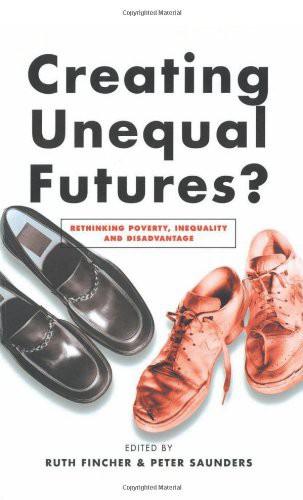
Creating Unequal Futures?: Rethinking Poverty, Inequality and Disadvantage
by
Ruth Fincher
and
Peter Saunders
Published 1 Jul 2001
TABLES 2.1 Relationship between poverty and social exclusion 2.2 Income inequality in OECD countries, late 1980s 2.3 Income inequality in countries in LIS database, mid-1980s 2.4 Comparison of estimates of poverty in Australia from LIS studies 2.5 Alternative estimates of relative low income in developed economies in the early 1990s 3.1 Articles on poverty and welfare in international news: 1 July–30 September 1998 3.2 Articles on poverty and welfare in domestic news: 1 July–30 September, 1998 4.1 Child poverty rates: relative poverty line 4.2 Child poverty rates: ‘real poverty line’ 4.3 Children aged 0–4 years and 5–14 years to 2006 4.4 Living circumstances of children, 1992 and 1996 4.5 Labour force status of parents with children aged under 15 years 4.6 Access and participation indicators for low socioeconomic status group, 1991–95, age group 15–24 4.7 18- to 19-year-old school leavers engaged in marginalising and non-marginalising activities, May 1996 4.8 Characteristics of 19-year-olds in 1994 and 1995 who have been consistently engaged in marginalising activities from age 16 years 5.1 Head count measures of poverty as measured by the per cent of households and income units with income below various percentages of the Australian median income, 1994–95 5.2 Multi-dimensional nature of indigenous poverty, 1994 5.3 Factors potentially correlated with poverty among indigenous households, 1994 6.1 Five-yearly population growth rate, Cairns, Kelsey, Australia, 1981–86 6.2 Dwelling structure, Cairns, Kelsey, Australia, 1996 6.3 Housing tenure, Cairns, Kelsey, Australia, 1996 6.4 Age profile, Kelsey, Cairns, Australia, 1996 6.5 Total weekly household income, Cairns, Kelsey and Australia, 1996 52 58 59 60 62 79 81 103 104 105 106 110 113 118 120 145 147 150 164 165 166 166 167 xii PDF OUTPUT c: ALLEN & UNWIN r: DP2\BP4401W\PRELIMS p: (02) 6232 5991 f: (02) 6232 6232 36 DAGLISH STREET CURTIN ACT 2605 xii FIGURES AND TABLES 7.1 Comparison between static and dynamic accounts of the labour market, Australia, mid-1990s 7.2 Proportion of dual wage-earning households by wage levels, Australia 1988–89 7.3 Occupation of spouse for various categories of wage-earning household reference persons, Australia 1988–89 7.4 Occupational composition of households 7.5 Access to training for salesworkers, labourers and plant and machine operators, Australia 1993 7.6 Overview of low-wage firms in Australia, 1995–96 7.7 Characteristics of low-wage firms in Australia, 1995–96 205 210 211 212 218 218 219 xiii PDF OUTPUT c: ALLEN & UNWIN r: DP2\BP4401W\PRELIMS p: (02) 6232 5991 f: (02) 6232 6232 36 DAGLISH STREET CURTIN ACT 2605 xiii Abbreviations ABBREVIATIONS ABC ABR ABS ACA ACIRRT ACOSS ACTU ADAM AFR ALP ATSIC AWIRS AWOTE BBC BCA BFS CDC CDEP CNN DEETYA EITC ESCAP FNQ GDP Australian Broadcasting Commission Aboriginals Benefit Reserve Australian Bureau of Statistics ‘A Current Affair’ Australian Centre for Industrial Relations Research and Training Australian Council of Social Service Australian Council of Trade Unions Agreements Database and Monitor Australian Financial Review Australian Labor Party Aboriginal and Torres Strait Islander Commission Australian Workplace Industrial Relations Survey Average Weekly Ordinary Time Earnings British Broadcasting Corporation Business Council of Australia Business Funding Scheme Commercial Development Corporation Community Development Employment Projects Cable News Network Department of Employment, Education, Training and Youth Affairs earned income tax credit Economic and Social Commission for Asia and the Pacific Far North Queensland Gross Domestic Product xiv PDF OUTPUT c: ALLEN & UNWIN r: DP2\BP4401W\PRELIMS p: (02) 6232 5991 f: (02) 6232 6232 36 DAGLISH STREET CURTIN ACT 2605 xiv ABBREVIATIONS HDI HDIPC IBIP ILC IMF LIS MIRE NATSIS OECD PPPs PR RMI SMH UN UNICEF Human Development Index Household Disposable Income Per Capita Indigenous Business Incentives Program Indigenous Land Corporation International Monetary Fund Luxembourg Income Study Mission Recherche National Aboriginal and Torres Strait Islander Survey Organisation for Economic Co-operation and Development Purchasing Power Parties public relations Revenu minimum d’insertion Sydney Morning Herald United Nations United Nations International Children’s Emergency Fund xv PDF OUTPUT c: ALLEN & UNWIN r: DP2\BP4401W\PRELIMS p: (02) 6232 5991 f: (02) 6232 6232 36 DAGLISH STREET CURTIN ACT 2605 xv This page intentionally left blank PDF OUTPUT c: ALLEN & UNWIN r: DP2\BP4401W\PRELIMS p: (02) 6232 5991 f: (02) 6232 6232 36 DAGLISH STREET CURTIN ACT 2605 xvi 1 The complex contexts of Australian inequality Ruth Fincher and Peter Saunders CREATING UNEQUAL FUTURES THE COMPLEX CONTEXTS OF AUSTRALIAN INEQUALITY The eminent economist and commentator, John Kenneth Galbraith, recently identified persistent inequality in the distribution of income (and urban poverty in particular) as a major piece of ‘unfinished business’ at the end of the twentieth century (Galbraith 1999).
…
For example, the United Nations Human Development Report 1993 showed that among the twenty industrialised countries for which figures were available for the period 1985–89, the income share of the lowest 40 per cent of households was smallest in Australia, and the ratio of the incomes of the highest 20 per cent to those of the lowest 20 per cent was greatest.9 When the Human Development Index (HDI) is adjusted for this relatively unequal distribution, Australia’s HDI rank drops from seventh to eleventh among the industrial countries, one of the largest falls recorded. The Economist (November 5–11, 1994, pp. 19–23) cited similar figures, giving the United States, Australia, New Zealand and Switzerland the highest level of income inequality among thirteen countries, and Sweden and Japan the lowest inequality.
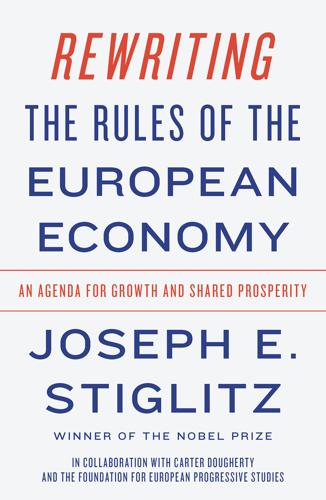
Rewriting the Rules of the European Economy: An Agenda for Growth and Shared Prosperity
by
Joseph E. Stiglitz
Published 28 Jan 2020
Is the growth sustainable—socially, environmentally, or economically? The answers will help Europe craft an economic model that is both sustainable and equitable. Some places in Europe have been quite successful in advancing the well-being of their citizens. Indeed, once inequality is taken into account, 12 out of the top 20 countries in the UN’s Human Development Index (a broad measure of well-being incorporating income, education, and health) are in Europe.3 In comparison, the United States occupies the 26th spot. But even in Europe, the failure to make markets work as they should—competitive markets with the private interests of key decision makers such as CEOs aligned with society’s interests—has resulted in a less productive and less equal Europe.
…
See Stability and Growth Pact Harmonised Index of Consumer Prices (HICP), 64 headline inflation, 82 health care, 241–43 home mortgages affordability of, 231, 233–35 public option for, 183–84, 233–34 rising costs of, 230 housing crisis. See also home mortgages affordable housing, 235–37 land use and property taxes, 231–33 overview of, 229–31 Human Development Index, 126 Human Rights, Office of the High Commissioner for, 247 Human Rights, Universal Declaration of (1948), 237 HypoVereinsbank, 164 IMF (International Monetary Fund), 36 incentives CEO and executive, 137–38 corporate governance and, 127 for excessive patenting, 146 proposals for reforming, 140 providing, for innovations, 147 worker-owned businesses and, 142 income, raising minimum wages, 265–68 restoring workers’ bargaining power, 262–65 universal basic income, 251–54 India, 131, 252, 253, 275 industrial policies, 273–74 inequality austerity related to, 49–50 corporation power leading to, 128 data supporting patterns of, 6, 7 globalization mismanagement and, 303–4 large corporations and, 19–20 macroeconomic framework creating, 46–47 market power contributing to, 129 as socioeconomic characteristic, 2 unemployment and, 31, 49–50, 275 inequality, growing (post-mid 1970s) contributing factors, 219–21 data supporting patterns of, 6, 7 decline in labor shares, 216, 217 economic background, 215–16 equitable society, achieving, 223–24 globalization, 219, 220–21, 221–23 income inequalities, 217–18, 218 rising poverty, 218–19, 219 welfare state and, 216–17 inflation Austerity Doctrine related to, 17 fears about, 44, 51–52, 58 -fighting mandate of ECB, 72–73, 75–76 low, or deflation proposals, 82–84 Price Stability Doctrine and, 18–19 informal workers, 247–48 information technology sector, 129 inheritance taxes, 188, 190–91 Initiative for Policy Dialogue, xv innovation -based economy, 128, 149 intellectual property rights and, 143–45, 147 in market economies, 135–36 insurance.

The Measure of Progress: Counting What Really Matters
by
Diane Coyle
Published 15 Apr 2025
Well-being frameworks, a dopted in different formats by a range of countries and subnational governments, generally include many indicators that contribute to SWB, such as income, health, education, environment, 236 Ch a p t er E ight and sometimes governance, as well as summary indicators such as life satisfaction. They bear a close relationship to earlier alternative approaches to assessing progress, such as the Human Development Index (Cooper et al. 2023). So, although derived from the SWB conceptualisation of social welfare, these often end up drawing in practice on the objective welfare/ capabilities tradition, which lists factors generally considered to be determinants of well-being. The New Zealand Living Standards Framework (New Zealand T reasury 2021) is a bit of an exception in that it draws explic itly on the theory of wealth accounting, including human, natural, and social capital, in order to monitor sustainability.
…
See also economic growth growth accounting, 42–47 Guide to Measuring Global Production (UNECE), 77–78 happiness, measuring, 233, 235 hard to measure conundrum, 179–80, 180 health: in economic measurements, 1–2, 244; human capital estimations and, 63, 215, 226–27 hedonic adjustment, 189, 237; quality change and, 180, 191–92 hedonic index, real output growth rates and, 192 hedonic regression, 201; adjusting price indices and, 138–39 Hicksian reservation price, 183, 190 household: innovation for, 107; shifting market transactions to, 99–102 household capital, 113–16 household/home production, 105; GDP and, 106–7; lack of attention paid to, 124–25; productivity growth and transfer of time input to, 67–70, 68; technology and substitution of for market production, 110; user-generated digital products, 129, 143–45 household satellite accounts, 107–9, 108 301 How to Pay for the War (Keynes), 24 HP printers, 95, 96 human capital accounting, 224–27; comprehensive wealth framework and, 251; economic statistics and, 63; estimating stock of, 227; including health status in, 215 Human Development Index (HDI), 236, 243 human footprint, 205, 206 hybrid work, 120–21, 163 hyperscalers, 89, 167–69, 169–70, 196 ICT (digital information and communication technologies): enabling remote work, 163; factoryless goods production and, 79; firm-level productivity and, 52, 53, 54; production networks, 57–58 imputation: for barter, 131–33; in GDP statistics, 17–18, 18; of value of digital goods and services, 20 inclusive wealth, 214 income distribution, measurement of economic welfare and, 260 index method, 48 Index of Sustainable Economic Welfare, 244 India, IT services sector in, 163 India Stack, 173–74 indicators, in alternative indices, 245–46, 246 inflation: constant utility construct for measuring, 192–93; consumer price indices and, 184; distributional consequences of, 188; measuring, 178–79; politics of statistics on, 185 Information Rules (Shapiro & Varian), 127–28 infrastructure: comprehensive wealth framework and, 248; data on, 62–63; defined, 60–61; digital public, 171–76; internet, 166–67; social, 61 Infrastructure as a Service (IaaS), 88, 168, 169 innovation: for the household, 107; questioning benefits of some, 3–4; S-shaped logistic curve for spread of, 9; von Hippel, 140–42 innovative property, as intangible asset, 229 302 inputs: growth accounting and, 43–47; time as, 121–24 intangible assets, 61, 152, 157, 215, 229, 229, 231 intangible investment, scale of, 228–29, 229, 230 intangibles, 97, 157, 228–33 intellectual property rights, subscription economy and, 95 International Trade in Services Survey (ITIS), 160 iPhone, 102, 102–3, 155 J curve, 39, 70 John Deere, subscriptions and, 41, 94 Jorgenson-Fraumeni approach, 226 KLEMS (capital, labour, energy, materials, and services) growth accounting framework, 11, 43–46, 55 labour: gig employment, 20, 105, 116–20; hybrid and remote work, 120–21; substitution of capital for, 100–1 labour productivity, 35, 35–36; decomposing, 48–52; defining, 50; growth accounting and, 45–47; time and, 66 Laspeyres index, 181–82, 183, 193 leisure/consumption, time-based approach to productivity and, 66, 67–69, 68, 70 leisure time: effect of hybrid and remote work on, 120–21; SNA accounting for, 107–8 life satisfaction, measuring, 234, 235, 236–37; as measure of well-being, 241–42 lifetime earnings, human capital and, 225 Light as a Service model, 82–83 Likert scale, 234 living standards: democratic institutions and increasing, 221; leisure time and, 107–108; productivity and, 34, 36–37; slow growth in, 3–4, 5 Living Standards Framework (LSF), 233, 236, 245, 246 i n de x machine learning (ML), decision-making and, 29–31.
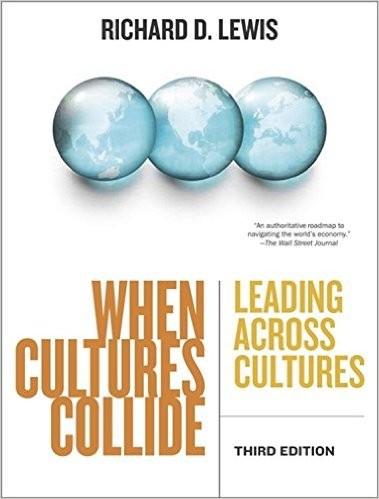
When Cultures Collide: Leading Across Cultures
by
Richard D. Lewis
Published 1 Jan 1996
Canada played a substantial role in the Second World War and is the only nation to have taken part in all of the UN’s major peacekeeping operations. It is the eighth biggest economy in the world; only half a dozen countries enjoy a higher standard of living as far as quality of life is concerned. Canada is normally among the top three on the Human Development Index. Culture Values honest friendly, easy-going practical, savers humorous tolerant, but critical of U.S. prudish, often traditional fair, gentle generous, parochial pioneers, independent low key, uncomplicated love family, mother nature internationally impartial Canadians and Americans Canadians are often defined in comparison and contrast to the Americans, with whom they share a 5,000-mile (8,000-kilometer) border and for whom they have conceived a love–hate relationship.
…
Exercise generosity. Canadians themselves are generous people. Canadians dislike unnecessary complication. Simplify issues but avoid oversimplification. Bear in mind that Canadians are rather prudish and traditional, so tailor your behavior accordingly. Quality of life is important. According to the UN’s Human Development Index, Canada is often assessed in first place. Remember that Canadians respect underdogs; they are the only nation to have taken part in all of the UN’s peace-keeping operations and are big aid donors. When dealing with French Canadians, you may liven up considerably. Avoid Being too individualistic or expecting them to be. ✦ Being overly opinionated or intense. ✦ Getting overly excited about anything, particularly politics. ✦ Underestimating Canada’s economic impact, fine humanitarian record and moral authority. ✦ 13 Britain For decades the British film industry, enriched by the talents of such actors as Alec Guinness, Peter O’Toole, John Gielgud, Ralph Richardson, Alastair Sim, George Cole and Charles Laughton, has put the typical Englishman on the screen for the world to see.
…
The 27th economy in the world in size, it is an astounding third in GDP per capita and the world’s seventh biggest oil producer, enabling it to be the fifth largest exporter of energy. NORWAY 345 Quality of life matches the economic foundation. Norway has the third oldest population in the world and ranks first in quality of life, according to the Human Development Index in 2004. It is the world’s second largest donor of bilateral aid as a percentage of GDP (after Denmark). The educational system is remarkable in that Norwegians study longer than anyone else in Europe (12 years) and have the fourth highest tertiary enrollments, in spite of the difficult terrain and elongated country.

Why the West Rules--For Now: The Patterns of History, and What They Reveal About the Future
by
Ian Morris
Published 11 Oct 2010
Coming down from the sublime movement of the stars to the brutal bombardment of Tinghai, though, we immediately see that things are much messier when we are dealing with human societies. Just what should we be measuring to assign scores to social development? If Einstein provides our theoretical lead, we might take a practical lead from the United Nations Human Development Index, not least because it has a lot in common with the kind of index that will help answer our question. The UN Development Programme devised the index to measure how well each nation is doing at giving its citizens opportunities to realize their innate potential. The Programme’s economists started by asking themselves what human development really means, and boiled it down to three core traits: average life expectancy, average education (expressed by literacy levels and enrollments in school), and average income.
…
Still other critics reject the very idea of scoring human development. It creates the impression, they say, that Norwegians are 97.1 percent of the way toward ultimate bliss, and 2.9 times as blissful as people in Sierra Leone—both of which seem, well, unlikely. But despite all the criticisms, the human development index has proved enormously useful. It has helped relief agencies target their funds on the countries where they can do most good, and even the critics tend to agree that the simple fact of having an index moves the debates forward by making everything more explicit. An index of social development across the last fifteen-thousand-plus years faces all the same problems as the UN’s index (and then some), but it also, I think, offers some similar advantages.
…
As Chairman Mao famously put it, “Every Communist must grasp this truth: ‘Political power grows out of the barrel of a gun.’ “Before the 1840s, no society could project military power across the whole planet, and to ask who “ruled” was nonsense. After the 1840s, though, this became perhaps the most important question in the world. Just as with the UN’s human development index, there is no umpire to say that these traits, rather than some other set, are the ultimate way to measure social development, and again like the UN index, any change to the traits will change the scores. The good news, though, is that none of the alternative traits I have looked at over the last few years changed the scores much, and none changed the overall pattern at all.* If Eddington had been an artist he might have been an Old Master, representing the world at a level of detail painful to behold.

Exceptional People: How Migration Shaped Our World and Will Define Our Future
by
Ian Goldin
,
Geoffrey Cameron
and
Meera Balarajan
Published 20 Dec 2010
As with health care, the educational achievements of migrants are explained by their relatively higher incomes and greater access to facilities. The educational benefit of moving is vividly depicted in figure 6.5, which shows that school enrolment is consistently higher for children of families that migrate to a country with a higher Human Development Index (HDI) rating.180 As expected, the gains are the largest for children moving from countries that score poorly on this development index. At a national level, the educational gains from migration vary with the age of the migrant. Those who migrate to the United States as children (before 13) or as young adults (25-29) reap the greatest educational benefits from moving.181 Immigration between ages 13 and 19 confers a relative disadvantage on migrants, however, because of obstacles with language and integration in schools—which are no easier to overcome in teenage years.
…
“Immigration and Health,” Health Policy Working Paper 01–05. Ottawa: Health Canada. 176. Samuel Noh and Violet Kaspar. 2003. Diversity and Immigrant Health. Toronto: University of Toronto, p. 25. 177. IOM, 2005: 334. 178. Ibid.: 43. 179. World Health Organization. 2003. International Migration, Health and Human Rights. Geneva: WHO. 180. Human Development Index. 181. Barry R. Chiswick and Noyna DebBurman. 2004. “Educational Attainment: Analysis by Immigrant Generation,” Economics of Education Review 23: 361–379. 182. Ibid., 2004. 183. Maurice Crul and Hans Vermeulen. 2003. “The Second Generation in Europe,” International Migration Review 37(4): 965–986. 184.

Age of Discovery: Navigating the Risks and Rewards of Our New Renaissance
by
Ian Goldin
and
Chris Kutarna
Published 23 May 2016
The spread of so many low-cost ideas to improve health and education means that wider human progress today depends more on how well countries exploit these ideas than on how fast incomes grow. If, instead of concentrating only on income, we look at life expectancy, years of schooling and income together—a combined statistic that its Pakistani creator, the late economist Mahbub ul Haq, dubbed the Human Development Index (HDI)—then by this measure virtually all countries for which data exists are better off since 1990, and poor countries are clearly converging upon the rich.¶ At present rates of progress, by 2050, more than three-quarters of humanity will attain the same score on the development index that the United Kingdom enjoys today.101 The biggest leaps are happening in countries we don’t talk nearly enough about—like Rwanda, which since 2008 has risen faster up the HDI—17 places—than any other country.102 * * * We see humanity’s potential more clearly now, because we suddenly stand so much closer to it.
…
GDP per capita, 89 limits of, 113–14 paradigm shifts, 112–13 See also disease; genetics; pandemics; pharmaceutical industry Heisenberg, Werner, 124 HIV/AIDS, 76, 83, 98, 101, 154, 158, 185–6 Hong Kong, 24, 63, 180, 184 Hoskins, W.G., 90 Huffington Post, 35 Huizinga, Johan, 9 Human Development Index (HDI), 101 Hurricane Sandy, 36 identity, 65–6 identity theft, 199 ignorance, 65–6 illicit economy, 64–5, 166 immigration. See migration import substitution, 22 Incas, 9, 93 India, 66, 192, 206, 262 and development, 4, 43, 78, 82, 84, 99–100 and environmental challenges, 251, 260 and exploration, 18, 40 and migration, 57 and poverty, 77 and trade, 45–6 Indonesia, 19, 43, 99, 252 infrastructure nature as, 200–1 in the Renaissance, 193–5 and systemic risk, 195–200 Intel, 31, 59, 121, 126, 157, 196 intellectual property (IP), 136, 199, 227, 244–5 International Monetary Fund (IMF), 22, 97, 190–1, 219, 221 Internet, 4, 7, 10, 34, 35, 66, 81, 95–6, 136, 145–6, 157, 159, 179 Amsterdam’s exchange hub, 248–9 and complexity, 176, 196, 198 and concentration, 253 connectivity (Internet users and mobile subscriptions), 32 cybercrime, 198–9, 223 and infrastructure, 175, 199–200 memes, 138 and power consumption, 196 quantum Internet, 126 and systemic risk, 197–9 See also digitization Internet of Things, 61–2 Iran, 199, 253 Iraq, 166, 207, 209, 211, 221, 228, 242 Islam, 2, 10, 60–1, 193–4, 252 Islamic State of Iraq and the Levant (ISIS/ISIL), 36, 166, 206–13, 242, 253 Islamophobia, 206 Jagiellonian University (Krakow), 51, 133 Japan, 4, 29, 43, 60, 63–4, 86, 196 Jianlun, Liu, 180 Kasparov, Garry, 152 Kepler, Johannes, 107 Kjellberg, Felix, 138 language and collective effort, 145–7 and ignorance, 65–6 and translation, 29, 80, 146–7, 149, 158, 217 See also printing and publication Large Hadron Collider, 137, 147, 149 Latin America, 23–4, 43, 49, 52–3, 76, 90, 161, 238, 253 Leonardo da Vinci.

System Error: Where Big Tech Went Wrong and How We Can Reboot
by
Rob Reich
,
Mehran Sahami
and
Jeremy M. Weinstein
Published 6 Sep 2021
It forces us to consider not only wealth but the key ingredients that enable people to lead a full and meaningful life, such as education; a long life expectancy; access to clean water, food, and health care; political freedom; and civil liberties. The United Nations Development Programme (UNDP) took Sen’s proposal seriously in an effort to challenge the world’s reliance on measures of gross domestic product (GDP) as a proxy for well-being. It invented a new measure, the Human Development Index (HDI), to better capture people’s capabilities. Although income is part of the HDI, the index also includes years of education and life expectancy. It is still a rough proxy but one that comes much closer to capturing something about the ability of human beings to pursue their own goals and aspirations, to flourish as individuals and societies.
…
See also optimization mindset Einstein, Albert, 77 election fraud alleged in 2020 presidential election, xi Electronic Frontier Foundation (EFF), 119–20 Electronic Privacy Information Center (EPIC), 150 Emanuel, Ezekiel J., 243 encryption, xv, 13, 72, 116, 127–29, 134 Encyclopaedia Britannica, 195 “End of Food, The,” Soylent reported to be, 9 engineers, 6, 10–15, 28–30, 31–33 environment vs. factory farms, 20–21 epistocracy, democracy vs., 66–68 ethics and AI, 165–66 ethics and politics of technological change, xvi–xvii, xx–xxi, xxiii European Commission, 136 European Data Protection Authorities, 145 European model of capitalism, 181 European Union antitrust actions against Google, 228–29 GDPR data protection, 142–45, 147, 238, 241 social safety nets, 185–86 Vestager’s roadblocks to big tech, 252–53, 255 Everyday Sexism Project, 220 expert rulers’ incentive to maintain their status, 68 externalities, xxvi, 48, 73, 200, 260 extremists right to use hate speech in the US, 189–90 FAccT/ML (Fairness, Accountability, and Transparency in Machine Learning), 89 Facebook acquisition of Instagram, 229 business model, xxvii, 18–19 Cambridge Analytica scandal, 37, 128, 146–47, 254 Christchurch, New Zealand, terrorist attack livestreamed, viral, removed, 189 data mining, 118–19 DeepFace system, 161, 162 deleting derogatory statements about men, 188 as digital civic square, 21 and end-to-end encryption, 127–28 FTC complaints against, 150, 253 global audience for truth or lies, 192–93 lawsuit for using facial recognition tech, 46–47 market dominance of, 227 Oversight Board of Facebook, 213–16 plan to comply with GDPR, 145 population of users nearly double that of China, 188–89 #StopProfitForHate campaign vs., 224–25 study of privacy settings, 137 Terms of Service excerpt, 118–19 Zuckerberg appears before House committee, 64–65 See also big tech platforms facial recognition aerial surveillance systems, 112 deep learning, 161–62 downstream applications, 17 Facebook sued for using, 46–47 human supervision requirement, 85 loss of liberties in a democratic society, 125 modern revival of physiognomy, 249 paradox, 113–15 prioritizing optimization vs., 15, 17 protecting celebrities from stalkers, 111–12 women and dark-skinned people, 113 factory farming as a success disaster, 20–21 Factory Investigating Commission, New York, 55 fairness, xxxiii, 20, 73, 88–94, 97, 99, 101, 103, 104, 106–8, 166, 237 Family Educational Rights and Privacy Act (FERPA), 140 famines as man-made political disasters, 74 Federal Bureau of Investigation (FBI), 128–29, 134–35 Federal Communications Commission (FCC), 58, 228 Federal Constitutional Court of Germany, 143 Federal Trade Commission (FTC), 118, 150–51, 228, 253 financial sector, 163–64, 254–55 First Amendment of the Constitution of the United States, 189, 191–92, 214, 216, 217 Flexner, Abraham, 244–45 Floyd, George, murder of, 69 Foot, Philippa, 155 Ford Pinto’s design flaw, 36–37 Foster, Bill, 52 Foucault, Michel, 122–23 free speech and the internet, 187–230 overview, 187–91 beyond self-regulation, 216–21 Christchurch, New Zealand, terrorist attack livestreamed, 189 collision of free speech with democracy and dignity, 198–202 creating a more competitive marketplace, 227–30 exceptions to free speech, 217 foreign interests with election-related advertising as an exception, 225 the future of platform immunity, 221–26 hate speech, 187–91, 200–201, 218 online efforts to regulate speech, 219–21 speech and its consequences, 191–97 Twitter’s suspension of Trump, xi-xii, 187–88 See also creating an alternative future freedom of expression, 198–99 Furman, Jason, 184 Galetti, Beth, 79–80, 99 Gates, Bill, 183 Gebru, Timnit, 112–13, 250 gender bias in recruiting system, 81–82, 83, 100–1 General Data Protection Regulation (GDPR), 142–45, 147, 149, 238, 241, 255 Germany, 143, 217–18 Gibbons, Jack, 258 gig economy workers, 47–49 Gillibrand, Kirsten, 151 Gingrich, Newt, 259 Glickman, Aaron, 243 Go, AI playing, 157 goals, of algorithmic models, 15–16, 18–21, 34–37 “Goals Gone Wild” (Ordóñez), 34–37 Gonzalez, Lorena, 48, 95 Goodhart’s Law, 19 Goodrow, Cristos, 33–34 Google AI ethics board dissolved, 166 data mining, 117 differential privacy technology used by, 131–32 employees protest sale of AI tech, 17 engineers actively unionizing, 180 European Commission lawsuit against, 136 Founders’ Award, 28 Gebru, firing of, 250 Google Buzz launch, 120 management by OKRs, 32–33 market dominance of, 227, 228 OpenSocial specification, 256 partnership with Apple, 113, 141 Pichai appears before House committee, 64–65 state attorneys general filing suit against, 253 Google Buzz, 120 Gore, Al, 59–60 governance, 66–68, 69–72, 105–7, 263–64 government AI-related taxes on businesses, 182–84 Clipper Chip technology, 115–16 companies helping to manage consequences of AI, 184 creating an agency responsible for citizen privacy rights, 150–51 data collection by public institutions, 140–42, 151 developing a new relationship with tech sector, 241 legitimacy of, 68 reasons for involvement in free speech on the internet, 221–26 tax-related subsidies for businesses, 179 See also regulations GPT-2 and GPT-3, OpenAI’s language models, 233–37 greedy algorithms, 12–13 Greenspan, Alan, 61 gross domestic product (GDP), 173 Group Insurance Commission (GIC) of Massachusetts, 130 Grove, Andy, 51 “Guerrilla Open Access Manifesto,” xxii–xxiii Hacker News website, 8 hackers computer scientists as, 21–22 Hacker News, 8 influencing political arena, 46 iPhones’ back door as a challenge to, 135 life hacking website, 14 marriage of capitalists and, 28, 52, 68 Hall, Margeret, 250 happiness in life, importance of, 167, 168 Harvard University Data Privacy Lab, 130–31 Hashemi, Madhi, 250 Hastings, Reed, 5–6 hate speech, 187–91, 200–201, 218, 224–25 Hawley, Josh, 223 Health Insurance Portability and Accountability Act of 1996 (HIPAA), 129, 140, 246 hedge funds using AI, 163–64 Hertzberg, Robert, 95 High Bar for Talent, Amazon’s, 79–80 High Performance Computing and Communications Act (1991), 59–60 Hinton, Geoff, 164 Hoffman, Reid, xxviii, 39, 51–52 Holmes, Elizabeth, xxx Holt, Rush, 52 Hong Kong protests in 2019, 125 Hooked on Phonics, 150 Horowitz, Ben, 42 Houghton, Amo, 259 Human Development Index (HDI), 173 human intelligence compared to machine intelligence, 158–59. See also smart machines and humans human judgment and AI, 80–82, 86 comparing efficacy of algorithmic predictions vs., 95–96 coupled with enforceable rules leads to safety, 239 importance of happiness, 167, 168 and protecting personal privacy, 137–40 and self-driving vehicles, 155–56 Hundt, Reed, 61 Huxley, Aldous, 1 Iacocca, Lee, 36 identity protection, 134 Illinois Biometric Information Privacy Act (BIPA), 46–47 independent contractors in the gig economy, 47–49 India, 170 individual dignity threatened by free speech, 200 inefficiency, 15–17 Infogami, 44 information services and Clinton administration, 60–61 infrastructure as a public good, xx–xxi initial public offerings (IPOs), 27 innovation, xiv, 55–56, 133–34.
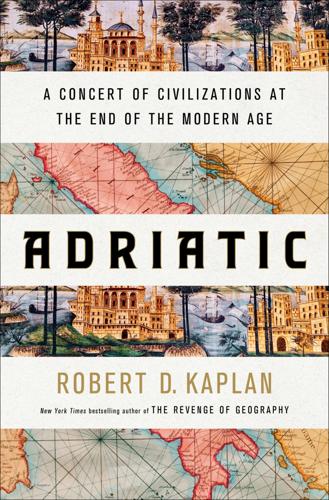
Adriatic: A Concert of Civilizations at the End of the Modern Age
by
Robert D. Kaplan
Published 11 Apr 2022
I sense the East in its distinct friendliness—in the way that strangers intrude on you in restaurants with personal questions—and in the stark visual effects of corruption coupled with the dusky mystery and distinct aura of antiquity of the Orthodox churches, marked by their imposing iconostases and priests swinging incense censers. Such thoughts tempt essentialism, I know. But these, I believe, are more than first impressions. The statistics concerning per capita income that foreign ministry officials provided me in Slovenia, as well as the rankings on the United Nations Human Development Index, point directly to a drop in living and governmental standards as one travels from north to south in the former Yugoslavia. And after all, despite the patina of globalization, there is still such a thing as the East, just as there is such a thing as the West. Of course, it is far more complicated than that.
…
W., 64n, 80 Tyrol, 94 U Ukrainian Revolution (2014), 226 Ulcinj, 143, 145 Ulm, 107 Ulysses (Joyce), 9, 109, 111, 127 Unamuno, Miguel de, 32 Unbearable Lightness of Being, The (Kundera), 49 United Nations Human Development Index, 223 United States cars in, 30 Cold War and, 27 European Union and, 171 universalism, 87 Uskoks, 192–193 Ustache, 175, 177, 190, 204 V Valiani, Leo, 286 Vandals, 37, 38, 123 Venetian Painters of the Renaissance, The (Berenson), 68 Venice Albania and, 243–244 Brodsky and, 86–88 Corfu and, 265–266 Croatia and, 183 Dalmatia and, 184–186, 188–189 departure from, 90–91 descriptions of, 64–79, 88–90 Dubrovnik and, 217 Frazer and, 80–82 Habsburg Empire and, 101 James on, 79–80 Koper and, 139–140, 141 Korčula and, 208, 210 Malcolm on, 143–144 memories of, 63–64 in Middle Ages, 37 Pound and, 82–86, 88 rise of, 45 Slovenia and, 133 trade and, 95 Trieste and, 103 Uskoks and, 192–193 Yugoslavia and, 156 Venice and the Slavs (Wolff), 185–186 Venice Desired (Tanner), 64n Venice Observed (McCarthy), 71 Veronese, Paolo, 76, 78 Via Flaminia, 24 Via Ignatia, 257 Vickers, Miranda, 244, 245 Virgil, 54, 55, 81 Visigoths, 24, 36, 60 Vitale II Michiel, 88–89 Vitalis, Saint, 46–47, 48 Vivaldi, Antonio, 67 Voinovitch, Louis, 188–190, 210 Volosko, 166–167 Voltaire, 20, 37 W Ware, Timothy (Father Kallistos), 225 Warsaw Pact, 246 Wartime (Djilas), 168 Waste Land, The (Eliot), 9, 13, 80 Watermark (Brodsky), 69 Wells, H.
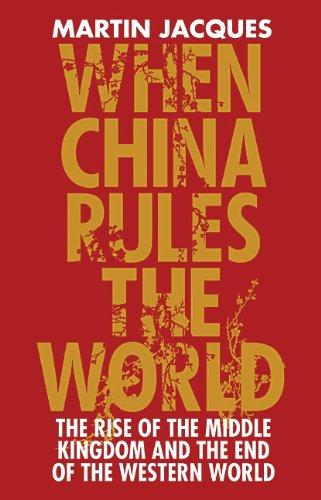
When China Rules the World: The End of the Western World and the Rise of the Middle Kingdom
by
Martin Jacques
Published 12 Nov 2009
Despite the wild vicissitudes of Mao’s rule, China achieved an impressive annual growth rate of 4.4 per cent between 1950 and 1980,105 more than quadrupling the country’s GDP106 and more than doubling its per capita GDP.107 This compared favourably with India, which only managed to increase its GDP by less than three times during the same period and its per capita GDP by around 50 per cent.108 China’s social performance was even more impressive. It enhanced its Human Development Index (a measure of a country’s development using a range of yardsticks including per capita GDP, living standards, education and health)109 by four and a half times (in contrast to India’s increase of three and a half times) as a result of placing a huge emphasis on education, tackling illiteracy, promoting equality (including gender) and improving healthcare.110 This strategy also enabled China to avoid some of the problems that plagued many other Asian, African and Latin American countries, such as widespread poverty in rural areas, huge disparities of wealth between rich and poor, major discrepancies in the opportunities for men and women, large shanty towns of unemployed urban dwellers, and poor educational and health provision.111 The price paid for these advances, in terms of the absence or loss of personal freedoms and the death and destruction which resulted from some of Mao’s policies, was great, but they undoubtedly helped to sustain popular support for the government.
…
Maddison, The World Economy: A Millennial Perspective, pp. 558, 562; see also pp. 548, 552. 105 . Maddison, Chinese Economic Performance, p. 70. 106 . Ibid., p. 552. See also Desai, ‘India and China’, p. 11. 107 . Maddison, The World Economy: A Millennial Perspective, p. 562. 108 . Ibid., pp. 552, 562. 109 . The Human Development Index (HDI) is an index combining measures of life expectancy, literacy, educational attainment and GDP per capita for countries worldwide. It is claimed as a standard means of measuring human development. It has been used by the United Nations Development Programme since around 1990. 110 . Desai, ‘India and China’, pp. 9-10. 111 .
…
family systems farmers, land rights farming population fashion industry fast-food restaurants Fausett, Bret Ferguson, Niall feudal system filial piety Filipinas film industry financial crisis see also Asian Financial Crisis; credit crunch foreign direct investment to Africa to China from China Fortune Top France Friedman, Thomas Fukuyama, Francis G20 G8 Gao Rui-qian Gardner, Howard Garver, John Geely gender Germany Gernet, Jacques Giddens, Anthony Gilley, Bruce gimu Gin, Katherine giri global GDP, China’s share global history global trade see international trade global warming globalization Western view of ‘Going Global’ golf good governance government function of nature of Gramsci, Antonio Grand Canal Gray, John Great Wall Greater China Greek civilization growth sustainability Guangdong province Guangzhou Hainan Province Han Chinese invention of myth of resettlement in Tibet Han dynasty ( BC-AD ) Hangzhou harmonious society Harrell, Stevan health services Heaven, concept of hegemonysee also Chinese hegemony; United States, hegemony Henan province Hevi, Emmanuel Historical Records (Sima Qian) Hobsbawm, Eric Hollywood homogeneity Hong Kong democracy direct investment in mainland languages process of modernization public opinion racism renminbi in superstitious customs taken by British transfer of sovereignty Westernization Hu Angang Hu Jintao Hu Yaobang Huang Ping Human Development Index (HDI) human race, evolution of human rights Hung Tze Jan hyper-modernity Ikenberry, John IMF imperial examination system imperial family, Japanese and Chinese imperial state system income per capital India and China clothing colony economy cricket democracy as megastate population shares of global GDP Indian Premier League individualism Indonesia China’s impact farming population languages overseas Chinese industrial employment, in Europe Industrial Revolution industrialization see modernity inequality, in China Inner Mongolia interest groups internal wars, in Europe international financial system international gold standard system international system see also tributary system; Westphalian system international trade East Asia in Ming dynasty in Song dynasty internet inventions Iran Iraq Japan agriculture and ASEAN and China clothing democracy distinctiveness of and East Asia n food modernity overseas Chinese population racial terms rise/fall of Tokugawa era Japanese firms Japanese (language) Jiang Zemin Jin Guantao Jin Jing Johnson, M.

As the Future Catches You: How Genomics & Other Forces Are Changing Your Work, Health & Wealth
by
Juan Enriquez
Published 15 Feb 2001
It is interesting to read the International Monetary Fund’s take on these trends. If you cannot get results by increasing real incomes … If national incomes keep diverging … Make up another scale and declare success. While absolute-dollar income gaps widen … They are peddling a different scale … Called the human-development index.20 One way to figure out where a country is going … Is to spend a day at one of the innumerable seminars titled … “The Future of [Country].” In some cases these seminars focus on IT, genetics, nanotech … But in most cases … Debates and papers focus not on the future but on … History culture, current political problems … And the smartest get so distracted looking in their rearview mirror … That they end up crashing into the future.
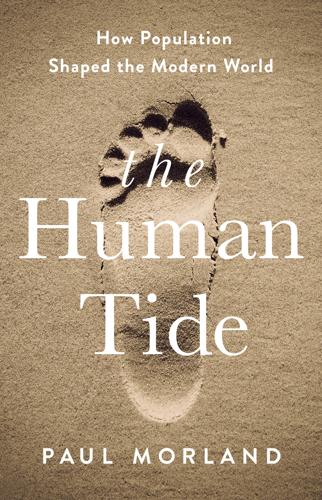
The Human Tide: How Population Shaped the Modern World
by
Paul Morland
Published 10 Jan 2019
One way of analysing socio-economic development which takes into account such chance effects as income coming from large-scale oil and gas production is to compare the human development of a country relative to that of other countries with a similar income. A study in 2002 found that the overwhelming majority of Arab countries, whether impoverished or super wealthy, were underachieving on levels of human development versus other countries of similar income.33 The Human Development Index used for such exercises, which weights education, health and income, may have imperfections, but looking at individual measures, the same picture emerges. For a start, participation in the workforce is low, whether due to general unemployment or specifically to low female employment. The employment to population ratio stands at 46%, making the Arab countries worse than any other region in the world on this index.34 Water consumption per capita is 20% of the world average and 2% in Yemen, a sign of low standards of living.35 It might be objected that this is a dry region and so low water consumption is to be expected, but the problem of water shortages in dry climates has been tackled successfully, for example (if not very sustainably) in the US south-west and (more sustainably) in Israel, through conservation, recycling and desalination.
…
Scott: The Great Gatsby, 115 food prices: fall in Victorian times, 73 food production (global), 44; see also Malthus, Thomas France: ethnic composition, 26; European immigrants, 110–11, 121, 158; fears German rivalry, 91–2; fertility rates, 105, 144–5; life expectancy increases, 107; little emigration, 50; manpower in First World War, 97; north African immigrants, 158; numbers of children born, 16; population compared with Germany, 79; pro-natalism and encouragement of fecundity in, 121; rural living conditions in eighteenth century, 4; rural remoteness, 76; size of economy, 56; slow population growth, 19, 50–1, 83, 86, 88, 120–1; slow urbanisation, 50 Franz Ferdinand, Archduke of Austria, 189 Freedom House, 241 French, Marilyn: The Women’s Room, 141 Freud, Sigmund, 111 Gaddafi, Muammar, 224 Gandhi, Indira, 142, 264 Gandhi, Sanjay, 264 Gaza: fertility rate, 249–50, 252; relations with Israel, 252–3 George III, King of Great Britain, 64 Germans: US immigrants, 65, 66, 92 Germany: birth rate, 30; Catholic–Protestant divide, 81; East and West merge, 189; Eastern birth rate falls, 186; economic size, 23, 78, 80; expansion, 69; family size, 81–2; fear of Russian power, 93–4, 98; fertility rates, 32–3, 104–5, 145, 148, 158, 231–2, 259; future population decline, 279; as goal for non-European immigrants, 245; immigrants, 82, 156, 158–9; increased life expectancy, 80–1; invades Soviet Russia, 127–8; Jews emigrate, 110–11, 125; life expectancy, 151; manpower in First World War, 97; median age, 207; old-age pensions, 152; orderly society, 242; political reaction to immigration, 159; population growth, 51, 79, 83, 86, 91–4, 104; population in Second World War, 129; post-war baby boom, 137; pro-natal movement, 125; rapid industrial development, 95; rivalry with Britain, 70–1, 78–9, 91, 94; rural large families, 81; territorial expansion and settlement (Lebensraum), 125–6; unified from smaller states, 78–9; urbanisation, 81, 105 Goldstein, Ferdinand, 93 Gorbachev, Mikhail, 164–6 Granicus, Battle of (334 BC), 19 Grant, Madison: The Passing of the Great Race or the Racial Bias of European History, 114 Great Depression (1930s), 110, 133 Great Stink (London, 1858), 72 Greece: extra-marital births, 147; median age, 191 Gregory, John Walter: The Menace of Color, 115 Guatemala, 257 Guinea: death rate, 33; median age, 33 Haggard, Sir Henry Rider, 118–19 Haycraft, Dr John Berry: Darwinism and Race Progress, 89 Hayhoe, Aida, 76 Herzen, Alexander, 84 Hiroshima, 211 history: demography and, 29; shaping of, 6–7 Hitler, Adolf: and German war casualties, 126; Houston Stewart Chamberlain applauds, 200; military interference, 128; racial theories and German population, 100, 125–6, 127; and settlement of Ukraine, 202; war in Russia, 169 Holocaust, 8, 247–8 Honduras, 257 Hong Kong: life expectancy, 206 Howard, Michael, 111 Hu Yaobang, 216 Hughes, William, 117 Huguenots, 17 Human Development Index, 237 Ibn Khaldun, 20 Illustrated London News, 53 immigration: countries of origin, 156–9; effects, 153; into Europe from Middle East, 236; political reactions to, 159 Independent (newspaper), 155 India: British imperialism in, 60; emigrants, 118; famines, 261; fertility rates, 221, 262, 264, 265, 267; immigrants in UK, 157; independence, 127; life expectancy, 265; male life expectancy, 180; Muslims in, 231; population size, 24, 221, 261–2; size of economy, 23, 55, 266; sterilisation programme, 264–5 Indonesia: health care, 49; population size, 222; size of economy, 23 industrialisation: global spread, 22; rates of, 80 infant mortality: falls, 15–16, 72–3; historic, 3, 5, 8; in North Africa and Middle East, 230; in Russian central Asian republics, 171 infanticide: in China, 213; in Japan, 198, 213 Iran: fertility rates, 231, 234, 254; numbers of children born, 16; population policies, 233–4; status of women in, 234 Iraq: birth and death rates, 30; family size, 21, 230; median age, 225; militants, 20 Ireland: death and birth rates, 30; emigration, 46, 53, 59, 77, 109, 137; famine, 8, 53, 67; high fertility rate, 137, 148; importance of potato in, 52; nationalism and home rule, 54; population fall in Victorian age, 54; population growth, 52; separation from Britain, 127 ISIS, 242, 247 Islam: achievements, 237; pro-natalism, 233; role in Middle East and North Africa, 231–2; see also Muslims Israel: conflict with Palestinians, 245–7; fertility rate, 32, 250–1, 271; and Gaza Strip, 252–3; immigration, 248–9, 251; Russian Jews migrate to, 170, 184, 248; territories, 252; water supply and consumption, 238; see also West Bank Italy: emigration declines, 124; emigration to USA and Argentina, 87, 109; fertility rates, 137, 145–6; future population decline, 279; immigrants in France, 110; large family size, 86; low extra-marital births, 147; median age, 207; population increase, 124; population policy under Fascism, 124; settlers in North Africa, 228; women’s work handicaps, 147 Ivory Coast see Côte d’Ivoire Jacobite rising (1745–6), 46 Japan: adopts European practices, 120; centenarians, 208; death rate, 30, 33; defeat (1945), 211; defeats Russia (1904–5), 162, 195–6, 201; demographic transition, 196, 199; economic decline, 209; economy and population size, 24, 203; extra-marital births, 204; falling birth rates, 18, 205–6; fertility rate falls, 204–5, 207; government debt, 209; high life expectancy, 151, 206–7; inadequate early data, 197; infanticide in, 198; low emigration, 202; low marriage and sex relations, 205; median age and ageing population, 33, 207–9, 275–6; modernisation and rise to power, 196–201; modest immigration, 207; not seen as threat, 83; orderly society, 242; population trend, 14, 206–7; post-war baby boom, 204; post-war pacifist policy, 209; pressure on pensions system, 206; pro-natalist policies, 203; reliance on agricultural imports, 202; small family sizes, 206, 208; stable population, 197; status and education of women, 204–5; territorial expansion and settlement question, 203; as threat to Australia, 116–17; twentieth-century population increase, 199, 202; wartime losses, 203; Western alarm at rise of, 203 Jefferson, Thomas, 64, 66, 134–5 Jews: birth rate, 251; emigrate from Soviet Russia to Israel, 170, 184, 248; flee Germany and Italy, 110–11; immigrants in England, 46; migrants to USA, 77, 87, 108–9; numbers, 248; persecuted in Russia, 110; see also Israel; Zionism Jihadism, 240 Kazakhstan, 171 Kenya: female literacy, 270; fertility rate, 269; population growth, 36 Keynes, John Maynard: The Economic Consequences of the Peace, 101–2 Khameini, Ali, 234 Khomeini, Ayatollah, 233 Kingsley, Charles, 53 Kipling, Rudyard, 83 Kirk, Dudley, 112 Knowlton, Charles: The Fruits of Philosophy, 74 Koch, Robert, 73 Kollontai, Alexandra, 122 Korea: migrants in Japan, 202 Korea, North: Soviet-style policies, 178 Korea, South: falling birth rates, 222; fertility rate, 217; life expectancy, 222; median age, 223, 274 Kosovo, 190 Kravitz, Lenny: ‘Rock and Roll is Dead’ (song), 138 Ku Klux Klan, 114 Kurds: and Armenian massacres, 227; Turkish attitude to, 28 Lagos, Nigeria, 272 Lancet, The, 75, 90–1 Latin America: Catholicism in, 262; cultural and geographical differences, 255–6; demographic pattern, 255–6; falling infant mortality, 256; fertility rates, 257–8; immigrants in USA, 143, 153–5; population growth, 260; Spanish empire in, 57–8 Latvia: population decline, 279 Lazarus, Emma, 135 League of Nations: data collection, 107; formed, 130; mandates in Middle East, 228 Lebanon: conflict in, 28 Lenin, Vladimir I., 122, 165, 169 Le Pen, Marine, 159 Leroy-Beaulieu, Paul: La question de la population, 120 Lesotho: fertility rate, 268 LGBTQ: effect on demography, 282 liberalism: decline after First World War, 122 Libya: civil breakdown, 247; fertility rate, 230; median age, 275 life expectancy: calculation, 283–4; and death rates, 33; increase, 5, 7–8, 107, 148–9; male–female differences, 180 Lister, Joseph, 1st Baron, 73 Lithuania: fertility rate, 148 Lloyd George, David, 89, 120 London: conditions in nineteenth century, 4–5, 72–3; differences in birth rates in boroughs, 90; sewage system and public hygiene, 73; suburbs develop, 45 Lönne, Friedrich, 93 Louisiana Purchase (1804), 65 Luxembourg: economy, 24, 55–6 McCain, John, 25 McCleary, G.
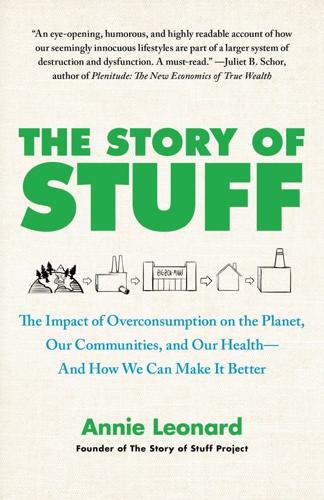
The Story of Stuff: The Impact of Overconsumption on the Planet, Our Communities, and Our Health-And How We Can Make It Better
by
Annie Leonard
Published 22 Feb 2011
This measure evaluates a number of factors beyond traditional economic activity, including pollution, resource depletion, amount of leisure time, and income distribution, although some have critiqued it for operating from within the same fundamental pro-growth paradigm as the GDP.5 The United Nations’ Human Development Index also looks at broader development goals, beyond economic growth. Then there’s the previously mentioned Happy Planet Index, combining environmental impact with human well-being to measure the environmental efficiency with which, country by country, people live long and happy lives. How do we actually promote adoption of a different metric as an official macroeconomic welfare indicator at the international, national, and local levels?
…
B., 140–141 Madagascar, 2, 3, 35 Makeup, 76–77 Makower, Joel, 185, 186 Malaysia, 8 Mandela, Nelson, 222 Maniates, Michael, 112, 159, 239, 240 Marine Protection, Research, and Sanctuaries Act of 1972 (Ocean Dumping Act), 98 Markey, Ed, 195 Marshall, James, 24 Mascara, 75 Massachusetts, toxics use reduction in, 218–219 Mazzochi, Tony, 85–86 McDonough, Bill, 52, 103 McKibben, Bill, 141 McRae, Glenn, 201 Mechanical pulping, 53 Medical waste, 185, 201–202 Mercury, 24, 25, 30, 34–35, 42, 54–55, 59, 61, 62, 69, 73, 74–75, 77, 79, 86, 91, 95, 203, 221–223, 257 Methane, 36, 209 Methyl-3-methoxyproprionate, 60 Methyl alcohol, 60 Methyl ethyl ketone, 60 Methyl isocyanate (MIC), 90, 91, 93 Mexico, 72, 135 Mickey Mouse Goes to Haiti (National Labor Committee), 49, 50 Microchips, 59–61 Microsoft, 71, 203 Minerals, 20–29 Minerals Policy Institute, 253 Mines, Minerals and People, 253 Mining, 20–25, 35, 36, 59, 64, 75 Mirex, 79 Mitchell, Stacy, 121, 125 Mobil Chemical Company, 230–231 Mobile phone chargers, 103–104 Monitors, 61 Monocropping, 47 Montague, Peter, 211–212 Moosewood Cookbook (Katzen), 158 Morris, David, 34 MOSOP (Movement for the Survival of the Ogoni People), 31–33 Mountaintop removal mining, 36, 254 Mozambique, 66 Mudslides, 4, 7 Muir, John, 7 Municipal solid waste (MSW), 185, 190–199 Municipal supply of discards (MSD), 190 Myers, John Peterson, 45 NAFTA (North American Free Trade Agreement), 126, 136, 255 Nair, Shibu, 236 National Environmental Justice Advisory Council, 88 National Environmental Policy Act (NEPA) of 1969, 95 National Environmental Satellite, Data and Information Service, 96 National Foreign Trade Council, 258 National Institute for Occupational Health and Safety (NIOSH), 85, 96, 205 National Labor Committee, 49 National Marine Fisheries Service, 96 National Memorial for the Mountains, 36 National Ocean Service, 96 National Oceanic and Atmospheric Administration (NOAA), 96 National People of Color Environmental Leadership Summit (1991), 88 National Priorities Project (NPP), 243, 244 National Recycling Coalition (NRC), 196 National Weather Service, 96 Native Americans, 24, 196 New Economics Foundation, 152 New Leaf Paper, 56 Newsom, Gavin, 235–236 Newsweek, 234 Nickel, 59 Nigeria, 30–33, 35 Nigerian Petroleum Development Company, 33 Nike, 71, 108, 109, 165, 188 9/11 terrorist attacks, 147 Nitrates, 61 Nitric acid, 60, 61 Nitrogen dioxide, 65 Njehu, Njoki Njoroge, 39 No Dirty Gold campaign, 25 t-Nonachlor, 79 North Cascades National Park, 6–7, 10, 11 Obesity, 150 Occupational Safety and Health Act of 1970, 96 Occupational Safety and Health Administration (OSHA), 96, 123 Office Depot, 9 Office of Environmental Quality, 95 Office of Oceanic and Atmospheric Research, 96 Ogoni 9, 33 Ogoniland, Nigeria, 31–33 Oil, 29–35, 246, 254 Oil Pollution Act of 1990, 98 One Planet Living program, 40 Online shopping, 118–119 Only the Paranoid Survive (Grove), 58 Open-pit mining, 20–22 Oreskes, Michael, 173 Organic cotton, 51 Organic matter, in water, 11 O’Rourke, Dara, 62, 108–112, 117, 140 Orris, Peter, 84 Our Stolen Future (Colborn, Myers and Dumanoski), 45 Overproduction, 102 Overspent American, The (Schor), 167, 168 Overworked American, The (Schor), 156 Oxfam America, 21 Oxychlordane, 79 Pacific Institute, 17 Packaging, 194–198 Packard, Vance, 163, 194 Paglia, Todd, 10 Paolino & Sons, 224 Paper, 1, 8–9, 14, 51–56, 52–55 Papyrus, 52 Parchment, 52 Patagonia, 50–51 PBDEs (polybrominated diphenyl ethers), 60, 73, 261 Peak oil, 29 Peek, Bobby, 223 PepsiCo, 196 Perceived obsolescence, 162–163 Perot, Ross, 126 Personal care products, 76–77, 264 Personal consumption expenditures, 146–147, 177–178 Pesticide Action Network Organic Cotton Briefing Kit, 47 Pesticides, 5, 46, 47, 79, 231, 262 Petroleum, 20, 29–34, 55, 230 PFCs (perfluorocarbons), 65, 79 PFOA (perfluorooctanoic acid), 73 Philadelphia, Pennsylvania, 224–227 Phosphoric acid, 60 Phosphorus, 59 Phthalates, 69, 71–72, 76, 124 Planned obsolescence, 160, 161–163 Plant-derived pharmaceuticals, 2–3 Plastics, 44, 194–195, 230–232 PVC (polyvinyl chloride), 42, 51, 61–63, 68–72, 124, 170–172, 184, 188, 257, 261, 265–267 Pollution Prevention Act of 1990, 98 Polyester, 44 Polymers, 44 POPs (persistent organic pollutants), 73 Poverty, 178–179 Prescription drugs, 2–3 Print-on-demand technology, 119 Printers, 203, 204 Privatization of water systems, 16 Processed chlorine free (PCF) process, 54, 56 Procter & Gamble, 112 Product Policy Institute (PPI), 198–199 Production, 44–105, 255–256 Progress, redefining, 242–243 Project Return to Sender, 225–226 Project Underground, 31 Puckett, Jim, 205, 210 Puget Sound, 11 Pulping, 53 Putnam, Robert, 149, 238–239 PVC (polyvinyl chloride), 42, 51, 61–63, 68–72, 124, 170–172, 184, 188, 257, 261, 265–267 Quante, Heidi, 226 Quinine, 2 Rainforest Action Network (RAN), 5, 254–255 Rainforests, 2–4, 30–31 REACH (Registration, Evaluation, Authorisation, and Restriction of Chemicals) Act, 82, 83 ReBuilders Source, 200–201 Reciprocity, culture of, 238–239 Recycle-Bank, 229 Recycling, 9, 42, 52, 55, 56, 64, 66–67, 69–70, 190, 196, 197–199, 204–207, 216, 228–234, 266–267 Rendell, Edward, 225–226 Repairs, 192–194 Resource Conservation and Recovery Act (RCRA) of 1976 and 1986, 98 Hazardous and Solid Wastes Amendments of 1984, 98 Resource curse, 37 Responsible Care program, 93 Revolutionary United Front (RUF), Sierra Leone, 26 Rivers, 10–11, 24, 25 Roane County, Tennessee, 35 Rocks, 20–29 Rogers, Heather, 228, 232 Rosario, Juan, 65 Rosy periwinkle, 2–3, 35 Rwanda, 27, 28 Safe Drinking Water Act of 1974, 97 Safer Chemicals, Healthy Families Campaign, 84 Salt water, 15 San Francisco, California, 235–236 Sarangi, Satinath, 91 Saro-Wiwa, Ken, 31–33 Schettler, Ted, 74, 78, 79 Schor, Juliet, 156, 167, 168, 246, 247 Scorecard, 94 Scott, Lee, 122 Sea levels, 13 Seattle, Washington, 133–134 Seinfeld, Jerry, 182 Seldman, Neil, 228 Sequestration, 2 Sewage systems, 12 Shaman Pharmaceuticals, 3 Sharing and borrowing, 43, 237–238 Shell Oil, 31–33 Shoe repairs, 194 Shopping, 147–148 Shopping malls, 124–125 Shower curtains, 69 Shukla, Champa Devi, 91 Sierra Leone, 26, 35 Silent Spring (Carson), 98 Silicon, 59 Silicon Valley, 57–58 Silicon Valley Toxics Coalition, 63 Silicosis, 59 Silver, 59 SmartWay Transport program, 115 Smith, Alisa, 140–141 Smith, Kari, 165 Smith, Ted, 58 Sodium hydroxide, 60 Soesterberg Principles, 63 Soil, 7, 12 Solar power, 34, 36 South Africa, 23–24, 26, 221–223, 258 South Korea, 135 Soy inks, 55 Spain, 31, 71 Species extinction, 4 Speth, Gus, 167 Stainless steel, 44 Staples, 9 Steam engine, invention of, 101 Stevens, Brooks, 161, 163 Stewart, Howard, 225 Stoller Chemical, 219 Story of Stuff, The (film), 56, 147, 162 Suicide, teen, 150 Sulfonamides, 48 Sulfur dioxide, 65 Sulfuric acid, 48, 60 Superfund sites, 57, 97, 208 Supply chains, 107–113, 117, 256 Sustainable Biomaterials Collaborative, 34, 231 Sustainable Forestry Initiative, 10 Sweatshops, 49–50, 51 Switkes, Glenn, 66 Synthetic materials, 44–45, 75, 78, 80 Take-back programs, 29, 206 Talberth, John, 242 Tantalum (coltan), 27–29, 35, 246 Tar sands, 254 Target, 118 Television, 167–168, 262 Tetramethylammonium, 60 Texaco, 30 Text messages, 57 Thor Chemicals, 221–223 Thoreau, Henry David, 147 Thornton, Thomas, 245 Timber plantations, 5 Tin, 59 Toluene, 55 Total economic value framework, 18 Totally chlorine free (TCF) process, 54, 56 Toxic Substances Control Act (TSCA) of 1976, 82, 97 Toxic Wastes and Race at Twenty, 1987–2007 (United Church of Christ), 89 Toxic Wastes and Race in the United States (United Church of Christ), 88 Toxics Release Inventory, 93–94 Toxics Use Reduction Act (TURA), 218 Toxics Use Reduction Institute (TURI), 218–219 Toyota, 71, 108, 111 Toys, 74, 111 Trade Reform, Accountability, Development and Employment (TRADE) Act, 136, 255 Trans-Atlantic Network for Clean Production, 63 Transition Towns, 141–142 Trees, 2–10, 21 Triclosan, 79 Trucks, 113–115, 123 Ts’ai Lun, 52 Tucker, Cora, 88 Turkey, 50, 157–158 Tweeting, 57 Uganda, 27 Underground (subsurface) mining, 20 Unhappiness/happiness, 149–155 UNICOR, 205 Union Carbide Corporation, 90–93 United Church of Christ (UCC), 88, 89 United Nations, 38, 146 Center for Trade and Development, 228 Committee on Economic, Social and Cultural Rights, 16 Environment Programme (UNEP), 75 Food and Agriculture Organization, 47 Human Development Index, 242 Human Poverty Index, 151 U.S. Agency for International Development (USAID), 137–139 UPS (United Parcel Service), 115 Uranium, 35 Urban Ore, 200 Urea resins, 48 USA*Engage, 258 Uzbekistan, 45, 46 Vacations, 247 VCM (vinyl chloride monomer), 68 Vinblastin, 2 Vincristine, 2 Vinyl Institute, 70, 265–266 Virtual water, 17, 46 Volatile organic compounds (VOCs), 55, 209 Voluntary Simplicity (Elgin), 158–159, 181 Wal-Mart, 71, 107, 116, 120–127, 145, 188 Walden (Thoreau), 147 Wales, 251–252 Wallach, Lori, 134 Walton, Sam, 121 War, 243–245 Washington State, 2, 6, 11 Waste Makers, The (Packard), 163, 194 Waste Management, Inc., 230 Waste-to-energy plants, 215 Wastewater, 61, 86, 208 Water, 10–19, 46 Water footprint, 17, 46 Water pollution, 18, 49 Water scarcity, 16, 46 Water warriors, 19 Water Wars, 140 Watson, Alan, 252 Waxman, Henry, 93 Waxman-Markey climate bill, 209 We All Live Downstream: A Guide to Waste Treatment that Stops Water Pollution (Costner), 11 WEEE (waste electrical and electronic equipment) directive, 234 Weissman, Rob, 132 When Corporations Rule the World (Korten), 109 Whole Foods, 188 Wicks, Judy, 141 Wildlife, 3–4 Williams, Eric, 60 Williams, Ted, 196 Wind power, 34 WiserEarth, 241 Wiwa v.
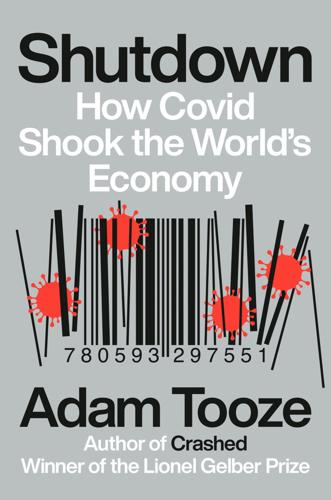
Shutdown: How COVID Shook the World's Economy
by
Adam Tooze
Published 15 Nov 2021
In late November, weeks after Peru floated its century bond, Côte d’Ivoire issued a twelve-year EUR1 billion Eurobond. Despite offering a record-low yield of 5 percent, it was five times oversubscribed. In 2021, rating agency Fitch predicted that Namibia, Nigeria, and South Africa would roll over old debt. Côte d’Ivoire, Ghana, and Kenya might embark on new issues. Benin, 158 in 2019 out of 189 on the Human Development Index, was on the list of those expected to return to the market.84 The countries in question urgently needed the money and were willing to pay, but what was pushing money out even to the most impoverished corners of the world economy was the huge abundance of dollar liquidity. It was the stance of the U.S.
…
See also climate change and agenda GSK Foundation, 237 Guangdong, China, 46, 54, 57, 60, 200 Guatemala, 172 Guedes, Paulo, 171, 173 Guha, Krishna, 122 Guterres, António, 252, 265 H7N9 avian flu, 47 Haiti, 132 Hang Seng Index, 200 Han Zheng, 200 Hawley, Josh, 219, 271, 273, 284 health care systems, 20, 21, 41–42, 44, 169 Heavily Indebted Poor Countries, 254–55 hedge funds, 115, 117–18, 120, 201–2 herd immunity, 53, 81, 226–27 Hildebrand, Philipp, 120 HIV/AIDS, 29, 30–31, 166, 235, 236, 237 Hobbes, Thomas, 34–35 Hokkaido, Japan, 73 Honduras, 165 Hong Kong, 56, 198–200, 200–201, 297 Hong Kong flu (1957-1958), 45, 46 Huawei, 210–11, 212 Hubei province, China, 6, 17, 49, 51–52, 54, 55–58, 62 Human Development Index, 268 Hungary, 248, 279–80, 283 Hussein, Saddam, 18, 77 immunizations. See vaccines and immunizations Imperial College London, 36, 84, 85, 124 India: Bollywood shutdowns, 100; competition with China, 207–9; and early responses to pandemic, 11, 13, 51, 87–88; and emerging market debt crises, 164; and fiscal responses to pandemic, 133, 133; garment industry struggles, 102–3; and global trade contraction, 106; and global vaccine rollout, 245, 246; IT and outsourcing industry disruptions, 99; and labor market challenges, 104–5; and mortality rates of SARS-CoV-2, 28; and second wave of pandemic, 292; and supply chain disruptions, 86; vaccination programs, 237; and wartime rhetoric on pandemic, 135 Indonesia, 106, 122, 158, 159, 165, 189, 249 infectivity of SARS-CoV-2, 51 influenza, 29, 30, 35, 53, 73–74, 77, 90, 239 Institute of International Finance (IIF), 155, 257 Instituto Butantan, 249 Integrated Policy Framework, 302 Intended Nationally Determined Contributions, 194 intensive care units (ICUs), 41 International Bank for Reconstruction and Development (IBRD), 258 International Energy Agency, 79, 205 International Labour Organization (ILO), 88 International Monetary Fund (IMF): and 2020 trade forecasts, 106; and debt relief programs, 252–53, 259–60, 261; and early responses to pandemic, 13, 66; and economic impact of coronavirus pandemic, 1–2; and emerging market debt crises, 157, 159–62, 166, 168, 170, 172; and European sovereign debt crisis, 177–78; and fiscal responses to pandemic, 131, 132, 143; and G20 finance ministers’ meeting, 71; and global market stabilization efforts, 123; and global response to pandemic spread, 96; and global vaccine rollout, 244; Integrated Policy Framework, 302; and Munich Security Conference, 70; New Arrangements to Borrow, 162–63; special drawing rights (SDRs), 162; and Turkish financial crisis, 267 Iran, 20, 71, 83, 162, 295 Ireland, 81, 82, 104, 177 Israel, 171 Italy: debt levels, 177–78; and development of European recovery fund, 186–87; and early responses to pandemic, 51, 67, 71–72, 84, 88; and European sovereign debt crisis, 179–80, 181, 182; and eurozone crisis legacy, 109; extent of outbreak in, 78; and fiscal responses to pandemic, 133, 134, 137; and “flattening the curve” efforts, 75; and global response to pandemic spread, 95; and NextGen EU fiscal package, 284–85; and second wave of pandemic, 233; and wartime rhetoric on pandemic, 135; and WHO funding, 33 Japan: and China’s growing influence, 205; and climate agenda, 194; debt levels, 177; and development lending programs, 264; and differing national responses to pandemic, 73; and fiscal responses to pandemic, 133, 138, 142, 145; and global vaccine rollout, 243; Olympic Games postponed, 88; and Trans-Pacific Partnership, 206; and WHO funding, 33 Jenner Institute, 245 Johnson, Boris, 69, 77–78, 81, 88–89, 90, 124, 278 Johnson & Johnson, 54, 239–40, 241, 251 J.P.

People, Power, and Profits: Progressive Capitalism for an Age of Discontent
by
Joseph E. Stiglitz
Published 22 Apr 2019
The only problem with this line of reasoning is that each step is flawed. Here we address the underlying premise—that the US is the most productive economy with the highest standard of living. (We explore the other steps in the logic in chapter 5 on globalization.) _______ THE REALITY IS that, using the Human Development Index, a broad-gauge measure of standard of living, the US ranks thirteenth, just above the United Kingdom. Once America’s inequality is taken into account, it slips to twenty-fourth.6 In 2018, the World Bank launched its own “human capital index,” reflecting the strength of a society’s investment in its people, combining education, health, and just the ability to survive.7 The United States ranked twenty-fourth, well below Asian leaders like Singapore, Japan, South Korea, and Hong Kong, and well below our neighbor to the north, Canada (ranked tenth), and most of our European competitors.
…
Federal Election Commission, 166, 169–70, 172 class warfare, 6 climate change and attacks on truth, 20 and intergenerational justice, 204–5 markets’ failure to address, xxiii money’s effects on debate, 20 Clinton, Bill, and administration, xiii, 4, 5, 168, 238, 242 Clinton, Hillary, 4, 6 coal companies, 20 Cold War, end of, 28; See also Communism, collapse of collective action, 138–56 balancing with individualism, 139 circumstances requiring, 140–42 government failures, 148–52 increasing need for government action, 152–55 in preamble to Constitution, 138–39 regulation as, 143–48 collective judgments, 262–63n20 college, income inequality and, 200 Comcast, 147 Communications Decency Act, 320n32 Communism, collapse of, 3, 28 comparative advantage, 82–84 competition market concentration, 55–56 market failures, 23 in marketplace of ideas, 75–76 market power, 57–60 power vs., 22 competitive equilibrium model, 47, 280n1 Comprehensive and Progressive Agreement for Trans-Pacific Partnership, 306n25 compulsion, power of, 155 confirmatory bias, 225 conflicts of interest, 70, 72, 124 Congress antitrust laws, 51, 68 and Great Recession, 39, 215 and lobbyists, See lobbyists and money in politics, 171–72 and Obamacare, 213 and regulatory process, 145–46 Supreme Court nominations, 166 and USTR, 100 conservatism, embracing change vs., 226–28 Constitution of the United States collective action reference in preamble, 138–39 economic changes since writing of, 227 “General Welfare” in Preamble, 242 individual liberties vs. collective interest in, 229 and minority rights, 6 as product of reasoning and argumentation, 229 three-fifths clause, 161 consumer demand, See demand consumer surplus, 64 cooperatives, 245 Copenhagen Agreement, 207 copyright extensions, 74 Copyright Term Extension Act (1998), 74 corporate taxes, 108, 206, 269n44 corporate tax rates, globalization and, 84–85 corporate welfare, 107 corporations and labor force participation, 182 and money in politics, 172–73 as people, 169–70 rights as endowed by the State, 172 corruption, 50 cost-benefit analysis, 146, 204–5 Council of Economic Advisers (CEA), xii credit, 102, 145, 186, 220 credit cards, 59–60, 70, 105 credit default swaps, 106 credit unions, 245 culture, economic behavior and, 30 customer targeting, 125–26 cybersecurity, 127–28 cybertheft, 308n35 Daraprim, 296n72 data exclusivity, 288n40 data ownership, 129–30 Deaton, Angus, 41–42 debt, 220; See also credit DeepMind, 315n1 defense contractors, 173 deficits, See budget deficits deglobalization, 92 deindustrialization early days of, xix effect on average citizens, 4, 21 facilitating transition to postindustrial world, 186–88 failure to manage, xxvi in Gary, Indiana, xi globalization and, 4, 79, 87 place-based policies and, 188 deliberation, 228–29 demand automation and, 120 and job creation, 268n41 Keynesian economics and, xv market power’s effect on, 63 demand for labor, technological suppression of, 122 democracy, 159–78 agenda for reducing power of money in politics, 171–74 curbing the influence of wealth on, 176–78 fragility of norms and institutions, 230–36 inequality as threat to, 27–28 maintaining system of checks and balances, 163–67 need for a new movement, 174–76 new technologies’ threat to, 131–35 and power of money, 167–70 as shared value, 228 suppression by minority, xx Trump’s disdain for, xvii voting reforms, 161–63 democratic institutions, fragility of, 230–36 Democratic Party gerrymandering’s effect on, 159 and Great Recession, 152 need for reinvention of, 175 popular support for, 6 renewal of, 242 and voter disenfranchisement, 162 demographics, xx, 181 “deplorables,” 4 deregulation, 25, 105, 143–44, 152, 239; See also supply-side economics derivatives, 80, 88, 106–7, 144 Detroit, Michigan, 188 Dickens, Charles, 12 Digital Millennium Copyright Act, 320–21n32 disadvantage, intergenerational transmission of, 199–201 disclosure laws, 171 discourse, governance and, 11 discrimination, 201–4; See also gender discrimination; racial discrimination by banks, 115 and economics texts, 23 forms of, 202 under GI Bill, 210 and inequality, 40–41, 198–99 and labor force participation, 183 means of addressing, 203–4 and myths about affirmative action, 225 reducing to improve economy, 201–4 diseases of despair, 42–43 disenfranchisement, 27, 161–62 disintermediation, 109 Disney, 65, 74 dispute resolution, 56–57, 309n40 Dodd–Frank Wall Street Reform and Consumer Protection Act, 70, 102, 107 driverless cars, 118 drug overdoses, 42 Durbin Amendment, 70 East Asia, 149 economic justice historical perspectives, 241–42 intergenerational justice, 204–5 racial justice and, 176, 203–4 tax system and, 205–8 economics, assumptions about individuals in, 29–30, 223 economic segregation, 200 economies of scale, 72 economies of scope, 347–48n15 economy and collective action, 153–54 decent jobs with good working conditions, 192–97 deterioration since early 1980s, 32–46 failure’s effect on individuals and society, 29–31 failure since late 1980s, 3–5 government involvement in, 141–42, 150–55 intergenerational transmission of advantage/disadvantage, 199–201 reducing discrimination in, 201–4 restoring fairness to tax system, 205–8 restoring growth and productivity, 181–86 restoring justice across generations, 204–5 restoring opportunity and social justice, 197–201 social protection, 188–91 “sugar high” from Trump’s tax cut, 236–38 transition to postindustrial world, 186–88 education equalizing opportunity of, xxv–xxvi, 219–20 improving access to, 203 returns on government investment in, 232 taxation and, 25 undermining of institutions, 233–34 Eggers, Dave, 128 Eisenhower, Dwight, and administration, 210 elderly, labor force growth and, 181–82 election of 1992, 4 election of 2000, 165–66 election of 2012, 159, 178 election of 2016, xix, 132, 178 elections, campaign spending in, 171–73 elite control of economy by, 5–6 and distrust in government, 151 and 2008 financial crisis, 5 promises of growth from market liberalization, 21–22 rules written by, 230 employers, market power over workers, 64–67 employment, See full employment; jobs; labor force participation End of History, The (Fukuyama), 3 Enlightenment, the, 10–12 attack on ideals of, 14–22 and standard of living, 264n24 environment carbon tax, 194, 206–7 and collective action, 153 economic growth and, 176 economists’ failure to address, 34 markets’ failure to protect, 24 and true economic health, 34 environmental justice, economic justice and, 176 Environmental Protection Agency (EPA), 267n38 epistemology, 10, 234 equality as basis for well-running economy, xxiv–xxv economic agenda for, xxvii as shared value, 228 Equifax, 130 equity value, rents as portion of, 54 ethnic discrimination, 201–4 Europe data regulation, 128–29 globalization, 81 infrastructure investment, 195–96 privacy protections, 135 trade agreements favoring, 80 unity against Trump, 235 European Investment Bank, 195–96 evergreening, 60 excess profits, as rent, 54 exchange rate, 89, 307n28, 307n32 exploitation in current economy, 26 in economics texts, 23 financial sector and, 113 market power and, 47–78 reducing, 197 as source of wealth, 144–45 wealth creation vs., 34 and wealth redistribution, 50 exports, See globalization; trade wars Facebook anticompetitive practices, 70 and Big Data, 123, 124, 127–28 competition for ad revenue, 56 and conflicts of interest, 124 market power in relaxed antitrust environment, 62 as natural monopoly, 134 and preemptive mergers, 60, 73 reducing market power of, 124 regulation of advertising on, 132 fact-checking, 132, 177 “Fading American Dream, The” (Opportunity Insights report), 44–45 “fake news,” 167 family leave, 197 Farhi, Emmanuel, 62 farmers, Great Depression and, 120 fascism, 15–16, 18, 235 Federal Communication Commission (FCC), 147 Federal Reserve Board, 70, 112 Federal Reserve System, 121, 214–15 Federal Trade Commission, 69 fees bank profits from, 105, 110 credit card, 60, 70, 105 for mergers and acquisitions, 108 mortgages and, 107, 218 “originate-to-distribute” banking model, 110 private retirement accounts and, 215 fiduciary standard, 314n21, 347n10 finance (financial sector); See also banks and American crisis, 101–16 contagion of maladies to rest of economy, 112 disintermediation, 109 dysfunctional economy created by, 105–9 gambling by, 106–8 and government guarantees, 110–11 history of dysfunctionality, 109–12 as microcosm of larger economy, 113 mortgage reform opposed by, 216–18 private vs. social interests, 111–12 and public option, 215–16 shortsightedness of, 104–5 stopping societal harm created by, 103–5 and trade agreements, 80 financial crisis (2008), 101; See also Great Recession bank bailout, See bank bailout [2008] China and, 95 deregulation and, 25, 143–44 as failure of capitalism, 3 government response to, 5 housing and, 216 as man-made failure, 153–54 market liberalization and, 4 and moral turpitude of bankers, 7 regulation in response to, 101–2 as symptomatic of larger economic failures, 32–33 and unsustainable growth, 35 financial liberalization, See market liberalization First National Bank, 101 “fiscal paradises,” 85–86 fiscal policy, 121, 194–96 fiscal responsibility, 237 food industry, 182 forced retirement, 181–82 Ford Motor Company, 120 Fox News, 18, 133, 167, 177 fractional reserve banking, 110–11 fraud, 103, 105, 216, 217 freedom, regulation and, 144 free-rider problem, 67, 155–56, 225–26 Friedman, Milton, 68, 314–15n22 FUD (fear, uncertainty, and doubt), 58 Fukuyama, Francis, 3, 259n1 full employment, 83, 193–94, 196–97 Galbraith, John K., 67 gambling, by banks, 106–7, 207 Garland, Merrick, 166–67 Gates, Bill, 5, 117 GDP elites and, 22 as false measure of prosperity, 33, 227 financial sector’s increasing portion of, 109 Geithner, Tim, 102 gender discrimination, 41, 200–204 gene patents, 74–75 general welfare, 242–47 generic medicines, 60, 89 genetically modified food (GMO), 88 genetics, 126–27 George, Henry, 206 Germany, 132, 152 gerrymandering, 6, 159, 162 GI Bill, 210 Gilded Age, 12, 246 Glass-Steagall Act, 315n25, 341n39 globalization, 79–100 budget deficits and trade imbalances, 90 collective action to address, 154–55 effect on average citizens, 4, 21 in era of AI, 135 failure to manage, xxvi false premises about, 97–98 and global cooperation in 21st century, 92–97 and intellectual property, 88–89 and internet legal frameworks, 135 and low-skilled workers, 21, 82, 86, 267n39 and market power, 61 pain of, 82–87 and protectionism, 89–92 and 21st-century trade agreements, 87–89 and tax revenue, 84–86 technology vs., 86–87 and trade wars, 93–94 value systems and, 94–97 GMO (genetically modified food), 88 Goebbels, Joseph, 266n35 Goldman Sachs, 104 Google AlphaGo, 315n1 antipoaching conspiracy, 65 and Big Data, 123, 127, 128 conflicts of interest, 124 European restrictions on data use, 129 gaming of tax laws by, 85 market power, 56, 58, 62, 128 and preemptive mergers, 60 Gordon, Robert, 118–19 Gore, Al, 6 government, 138–56 assumption of mortgage risk, 107 Chicago School’s view of, 68–69 debate over role of, 150–52 and educational system, 220 failure of, 148–52 in finance, 115–16 and fractional reserve banking, 111 and Great Depression, 120 hiring of workers by, 196–97 increasing need for, 152–55 interventions during economic downturns, 23, 120 lack of trust in, 151 lending guarantees, 110–11 managing technological change, 122–23 and need for collective action, 140–42 and political reform, xxvi pre-distribution/redistribution by, xxv in progressive agenda, 243–44 public–private partnerships, 142 regulation and rules, 143–48 restoring growth and social justice, 179–208 social protection by, 231 government bonds, 215 Great Britain, wealth from colonialism, 9 Great Depression, xiii, xxii, 13, 23, 120 “great moderation,” 32 Great Recession, xxvi; See also financial crisis (2008) deregulation and, 25 diseases of despair, 42 elites and, 151 employment recovery after, 193 inadequate fiscal stimulus after, 121 as market failure, 23 pace of recovery from, 39–40 productivity growth after, 37 and retirement incomes, 214–15 weak social safety net and, 190 Greenspan, Alan, 112 Gross Fixed Capital Formation, 271n4 gross investment, 271n4 growth after 2008 financial crisis, 103 in China, 95 decline since 1980, 35–37 economic agenda for, xxvii failure of financial sector to support, 115 and inequality, 19 international living standard comparisons, 35–37 knowledge and, 183–86 labor force, 181–82 market power as inimical to, 62–64 in post-1970s US economy, 32 restoring, 181–86 taxation and, 25 guaranteed jobs, 196–97 Harvard University, 16 Hastert Rule, 333n31 health inequality in, 41–43 and labor force participation, 182 health care and American exceptionalism, 211–12 improving access to services, 203 public option, 210–11 in UK and Europe, 13 universal access to, 212–13 hedonic pricing, 347n13 higher education, 219–20; See also universities Hispanic Americans, 41 hi-tech companies, 54, 56, 60, 73 Hitler, Adolf, 152, 266n35 Hobbes, Thomas, 12 home ownership, 216–18 hours worked per week, US ranking among developed economies, 36–37 House of Representatives, 6, 159 housing, as barrier to finding new jobs, 186 housing bubble, 21 housing finance, 216–18 human capital index (World Bank), 36 Human Development Index, 36 Human Genome Project, 126 hurricanes, 207 IA (intelligence-assisting) innovations, 119 identity, capitalism’s effect on, xxvi ideology, science replaced by, 20 immigrants/immigration, 16, 181, 185 imports, See globalization; trade wars incarceration, 161, 163, 193, 201, 202 incentive payments for teachers, 201 voting reform and, 162–63 income; See also wages average US pretax income (1974-2014), 33t universal basic income, 190–91 income inequality, 37, 177, 200, 206 income of capital, 53 India, guaranteed jobs in, 196–97 individualism, 139, 225–26 individual mandate, 212, 213 industrial policies, 187 industrial revolution, 9, 12, 264–65n24 inequality; See also income inequality; wealth inequality benefits of reducing, xxiv–xxv and current politics, 246 in early years after WWII, xix economists’ failure to address, 33 education system as perpetuator of, 219 and election of 2016, xix–xxi and excess profits, 49 and financial system design, 198 growth of, xii–xiii, 37–45 in health, 41–43 in opportunity, 44–45 in race, ethnicity, and gender, 40–41 and 2017 tax bill, 236–37 technology’s effect on, 122–23 in 19th and early 20th century, 12–13 20th-century attempts to address, 13–14 tolerance of, 19 infrastructure European Investment Bank and, 195–96 fiscal policy and, 195 government employment and, 196–97 public–private partnerships, 142 returns on investment in, 195, 232 taxation and, 25 and 2017 tax bill, 183 inheritance tax, 20 inherited wealth, 43, 278n38 innovation intellectual property rights and, 74–75 market power and, 57–60, 63–64 net neutrality and, 148 regulation and, 134 slowing pace of, 118–19 and unemployment, 120, 121 innovation economy, 153–54 insecurity, social protection to address, 188–91 Instagram, 70, 73, 124 institutions fragility of, 230–36 in progressive agenda, 245 undermining of, 231–33 insurance companies, 125 Intel, 65 intellectual property rights (IPR) China and, 95–96 globalization and, 88–89, 99 and stifling of innovation, 74–75 and technological change, 122 in trade agreements, 80, 89 intelligence-assisting (IA) innovations, 119 interest rates, 83, 110, 215 intergenerational justice, 204–5 intergenerational transmission of advantage/disadvantage, xxv–xxvi, 199–201, 219 intermediation, 105, 106 Internal Revenue Service (IRS), 217 International Monetary Fund, xix internet, 58, 147 Internet Explorer, 58 inversions, 302n10 investment buybacks vs., 109 corporate tax cuts and, 269n44 and intergenerational justice, 204 long-term, 106 weakening by monopoly power, 63 “invisible hand,” 76 iPhone, 139 IPR, See intellectual property rights Ireland, 108 IRS (Internal Revenue Service), 217 Italy, 133 IT sector, 54; See also hi-tech companies Jackson, Andrew, 101, 241 Janus v.
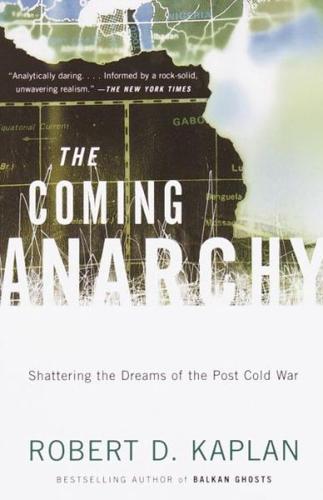
The Coming Anarchy: Shattering the Dreams of the Post Cold War
by
Robert D. Kaplan
Published 1 Jan 1994
A survey of business executives and economists by the World Economic Forum ranked Singapore No. 1 among the fifty-three most advanced countries appearing on an index of global com petitiveness. What is good for business executives is often good for the average citizen: per capital wealth in Singapore is nearly equal to that in Canada, the nation that ranks No. 1 in the world on the United Nations' Human Development Index. When Lee took over Singapore, more than thirty years ago, it was a mos quito-ridden bog filled with slum quarters that frequently lacked both plumbing and electricity. Doesn't liberation from filth and privation count as a human right? Jeffrey Sachs, a pro fessor of international trade at Harvard, writes that "good gov ernment" means relative safety from corruption, from breach of contract, from property expropriation, and from bureaucratic inefficiency.

The Rational Optimist: How Prosperity Evolves
by
Matt Ridley
Published 17 May 2010
The latest research uncovers a second demographic transition in which the very richest countries see a slight increase in their birth rate once they pass a certain level of prosperity. The United States, for example, saw its birth rate bottom out at 1.74 children per woman in about 1976; since then it has risen to 2.05. Birth rates have risen in eighteen of the twenty-four countries that have a Human Development Index greater than 0.94. The puzzling exceptions are ones such as Japan and South Korea, which see a continuing decline. Hans-Peter Kohler of the University of Pennsylvania, who co-authored the new study, believes that these countries lag in providing women with better opportunities for work–life balance as they get richer.
…
Whereas income per head stood still in Africa in the past twenty-five years, in Asia it trebled. Then tragically, Africa’s promising economic boom in the 2000s was cut short by the credit crunch. Some Westerners have been heard to say that growth is not what matters, that what Africa needs is an improvement in the human development index, towards the Millennium Development goals and to erase suffering without raising income, or that it needs a new kind of sustainable growth. Paul Collier and his colleagues at the World Bank encountered a storm of protest from non-governmental organisations when they published a study entitled Growth Is Good for the Poor.
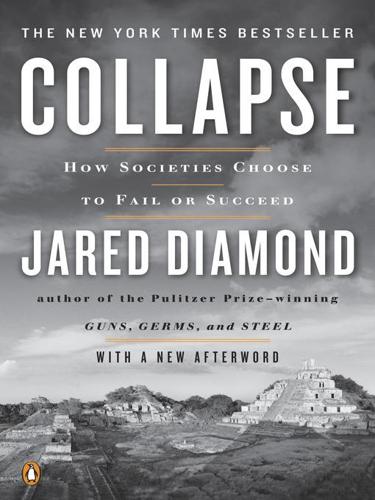
Collapse: How Societies Choose to Fail or Succeed
by
Jared Diamond
Published 2 Jan 2008
He died a natural death in 1971, to be succeeded by his son Jean-Claude “Baby Doc” Duvalier, who ruled until forced into exile in 1986. Since the end of the Duvalier dictatorships, Haiti has resumed its former political instability, and its already weak economy has continued to shrink. It still exports coffee, but the amount exported has remained constant while the population has continued to grow. Its human development index, an index based on a combination of human lifespan and education and standard of living, is the lowest in the world outside Africa. After Trujillo’s assassination, the Dominican Republic also remained politically unstable until 1966, including a civil war in 1965 that triggered the arrival again of U.S. marines and the beginning of large-scale Dominican emigration to the U.S.
…
Goyder Line Grasberg-Ertsberg mines Great Northern Railroad Great Zimbabwe, collapse of Greece Green, Roger greenhouse gases Greenland: climate in Danish colony in Dorset people in English explorers in environment of fish in fjords in government of ice core studies of Inuit in iron in modern populations of religion in Scandinavian settlement of; see also Norse Greenland self-sufficiency in sheep grazing in soil of written accounts of Green Revolution group decision-making: clashes of values in in complex societies creeping normalcy crowd psychology in by distant managers failure of failure to anticipate a problem failure to perceive a problem failure to try to solve a problem false analogies in irrational behavior in landscape amnesia in logic of collective action psychological denial in rational behavior in short-term focus in success in in tragedy of the commons unsuccessful solutions in groupthink Haakonsson, King Haakon of Norway habitat destruction Habyarimana, General Haiti: agriculture of border of Dominican Republic and cooperation between Dominican Republic and Creole language and culture of Duvalier in economy of emigration from environmental problems of future of human development index independence of map national parks in political instability in population of poverty in slave society of U.S. military occupation of wealth gap in Haoa, Sonia and Sergio Rapu Harald Bluetooth, king of Norway Harappan Indus Valley civilization, collapse of Harte, John Hawaiian Archipelago Heaven’s Gate cult Henderson Island collapse of and Easter Island human impact on isolation of population of settlement of survival on trading partners of Heyerdahl, Thor Hideyoshi, Toyotomi Hirschy family Hispaniola climate of deforestation of five-factor themes in French colony on map Native Americans on and slave trade Spanish conquest of sugar plantations on see also Dominican Republic; Haiti H.M.S.
…
Goyder Line Grasberg-Ertsberg mines Great Northern Railroad Great Zimbabwe, collapse of Greece Green, Roger greenhouse gases Greenland: climate in Danish colony in Dorset people in English explorers in environment of fish in fjords in government of ice core studies of Inuit in iron in modern populations of religion in Scandinavian settlement of; see also Norse Greenland self-sufficiency in sheep grazing in soil of written accounts of Green Revolution group decision-making: clashes of values in in complex societies creeping normalcy crowd psychology in by distant managers failure of failure to anticipate a problem failure to perceive a problem failure to try to solve a problem false analogies in irrational behavior in landscape amnesia in logic of collective action psychological denial in rational behavior in short-term focus in success in in tragedy of the commons unsuccessful solutions in groupthink Haakonsson, King Haakon of Norway habitat destruction Habyarimana, General Haiti: agriculture of border of Dominican Republic and cooperation between Dominican Republic and Creole language and culture of Duvalier in economy of emigration from environmental problems of future of human development index independence of map national parks in political instability in population of poverty in slave society of U.S. military occupation of wealth gap in Haoa, Sonia and Sergio Rapu Harald Bluetooth, king of Norway Harappan Indus Valley civilization, collapse of Harte, John Hawaiian Archipelago Heaven’s Gate cult Henderson Island collapse of and Easter Island human impact on isolation of population of settlement of survival on trading partners of Heyerdahl, Thor Hideyoshi, Toyotomi Hirschy family Hispaniola climate of deforestation of five-factor themes in French colony on map Native Americans on and slave trade Spanish conquest of sugar plantations on see also Dominican Republic; Haiti H.M.S. Bounty Hohokam society Holdren, John Home Depot stores Honduras hopefulness hopelessness Hopi pueblo Hotu Matu’a (Easter chief) Huls family Huls Farm, Montana human development index hunting: and chronic wasting disease and extinction overhunting Hutu people Ice Ages Iceland agriculture of community decision-making in conservative society of Danish rule in deforestation of ecological damage to environment of fishing in five factors in fuel in iron in political history of religion in soils of survival of trade with Viking colony in written accounts of Ieyasu, Tokugawa Inca Empire: food supply of forest management in regional integration of Spanish conquest of stone structures of top-down management in India, caste system of Indonesia illegal logging in military dictatorship in Pertamina oil in population of infanticide Inuit: culture and technology diet of and Dorset people expansion of and Franklin Expedition fuel for in Greenland hunters kayaks of kidnapped and Norse people survival of and toxic chemicals trade with irrigation: Anasazi strategies for drip vs. broadcast rivers diverted for and salinization water rights for irrigation salinization Janis, Irving Japan Ainu people civil wars in deforestation fishing and hunting forest management in isolation of Meireki fire mining in Pearl Harbor attacked by population of religion in shogun social advantages of in Tokugawa era top-down management in trade with Jirsa, Bob Juan Fernández Islands Kaczinski, Theodore Keller, Christian Kennedy, John F.

Private Empire: ExxonMobil and American Power
by
Steve Coll
Published 30 Apr 2012
Otherwise the project had not achieved its goals: It did not create a template for international management of resource wealth in poor countries; it did not prevent Déby from diverting funds to cronies and defense spending; it did not reduce corruption; it did not create political or social stability; and it had not yet improved Chad’s abysmal poverty indicators. In 2000, when the project was approved by the Clinton administration, Chad ranked 167th out of the 174 nations assessed by the United Nations Human Development Index, a table of quality of life indicators, and the U.N. estimated that Chad’s average life expectancy was forty-seven years. In 2006, after six years of reform experimentation and several years of oil revenue, Chad ranked 171st out of 177 nations assessed, and its average life expectancy was forty-four years.23 The oil project did, however, allow ExxonMobil and its partners to generate several billions of dollars of top-line revenue, to forge a path to profitability just as world oil prices spiked, and to embed themselves with Déby’s regime, positioning the corporation for additional oil deals beyond those covered by the original bargain.
…
Nigeria possessed a talented, well-educated elite; fertile land; and, of course, oil revenue. The country’s earnings from oil and gas sales from the early 1970s to 2008 totaled about $400 billion. Yet nearly half a century after independence, the country’s population languished perpetually near the bottom of the United Nations’s human development index. Average Nigerian life expectancy remained only forty-six and one half years. Nine tenths of the population lived on two dollars a day or less. More than a third lacked sanitation and clean water, and the country’s infant mortality rates remained among the world’s highest. Such impoverished but less oil-burdened countries as Papua New Guinea and Zimbabwe ranked higher than Nigeria on the human development scale.15 Corruption, mismanagement, theft, and criminal violence were hallmarks of the government’s performance.
…
(Indoensian National Army) (Tentara Nasional Indonesia), 118 ExxonMobil’s relations with, 101, 107, 108–11 human rights abuses of, 102–5, 107, 118, 220, 395, 397–98 John Doe lawsuit and, 120, 399–401 political power of, 107 TNK-BP, 274–75 tobacco industry, 85, 133, 134–35, 336–37 Total, 61, 172, 198, 255, 261, 322, 414, 415, 418, 425 Townsend, Peter, 48 Toyota, 180 Tragedy of Great Power Politics, The (Mearsheimer), 244–45 Trans-Alaska Pipeline System, 3, 126 Transocean, 602, 613 Treasury Department, U.S., 62, 168–69 Triple Option, 286 UBS, 268, 326 Ukraine, 267, 268, 517–18 unconventional gas, 577–78, 580–82, 584–87, 590–93, 617 Union of Concerned Scientists, 336 Union Oil Company, 120 Union Oil Platform A-21, 605 United Arab Emirates, 195, 222, 291, 322–24, 510, 558 United Front for Change (Front Uni Pour le Changement), 357, 363 United Kingdom, see Great Britain United Nations, 66, 81, 105, 356, 370, 512, 519, 564, 574 Convention on Human Rights of, 111 Development Programme of, 155 Framework Convention on Climate Change of, 80–81 Human Development Index of, 367, 461 I.P.C.C. of, 79, 81, 88, 635n Oil-for-Food Programme of, 561 United States, 18–19, 21, 29, 51, 58, 59, 68, 70, 83, 310, 448, 455, 464, 468 Aceh war role of, 112–14 Canada’s oil relationship with, 544, 548 Chad and, 158–59, 170, 174–75 daily oil consumption in, 308 Equatorial Guinea attempted coup and, 290, 291–93 Equatorial Guinea’s relationship with, 141–49, 151, 152, 514–16, 529 global oil prices and, 419–20 Iraq War aims of, 228–29 natural gas market in, 200–201 natural gas reserves of, 581, 583, 585 Nigerian oil security and, 469–75 oil dependency of, 303–4, 421–22, 435–37, 478, 618–19 Russia’s oil relationship with, 252–54, 258–59 Standard & Poor’s downgrading of, 625 strategic petroleum reserves of, 229, 237, 245, 440 Suharto regime and, 102 trade deficit of, 618 2008 election in, see election of 2008 United States Climate Action Partnership, 539–40 United States Energy Information Agency, 199 United States Geological Survey, 130, 413, 421, 621 United States Steel, 19 Upper Zakum oil field, 322–24 U.S.
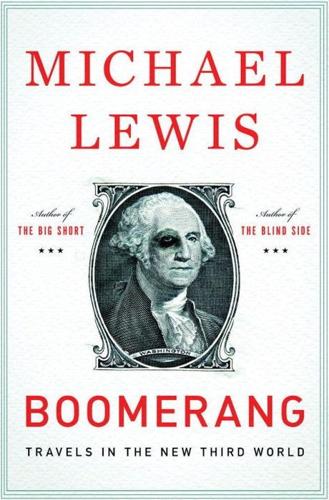
Boomerang: Travels in the New Third World
by
Michael Lewis
Published 2 Oct 2011
He’d never been to Iceland, knew nothing about the place, and said he needed a map to find it. He has spent his life dealing with famously distressed countries, usually in Africa, perpetually in one kind of financial trouble or another. Iceland was entirely new to his experience: a nation of extremely well-to-do (No. 1 in the United Nations’ 2008 Human Development Index), well-educated, historically rational human beings who had organized themselves to commit one of the single greatest acts of madness in financial history. “You have to understand,” he told me, “Iceland is no longer a country. It is a hedge fund.” An entire nation without immediate experience or even distant memory of high finance had gazed upon the example of Wall Street and said, “We can do that.”

The Rise and Fall of Nations: Forces of Change in the Post-Crisis World
by
Ruchir Sharma
Published 5 Jun 2016
In countries like Brazil and India, one often hears the argument that if the government focuses too narrowly on economic growth, then health, education, and other measures of human development will suffer. But this is a false choice. The countries with the lowest per capita income also tend to have the worst human development records. Every year the UN puts out a Human Development Index (HDI) ranking countries by educational measures like years of schooling, health measures like life expectancy, and basic infrastructure measures like access to running water and electricity. A nation’s overall rank on the HDI often aligns very closely with its ranking for per capita income, which is the result of its long-term growth record.
…
“Mahatma,” 236 Garotinho, Anthony, 78 Gates, Bill, 104, 119, 124 GDP (gross domestic product): analysis of, 407 and civil wars, 142 and credit markets, 300, 301n, 302 and current account, 273, 296 and debt, 149, 216, 291, 300, 317, 320, 328 global, 2–3, 19, 243 and government spending, 135–39, 164 and inflation, 235, 238 and investment, 202–3, 204, 205–6, 217, 231–32 and leadership, 86–87 and manufacturing, 204–6, 214–15 per capita, 345–46, 347 and population growth, 30 rising, 8 and wealth gap, 107–10 Geographic Sweet Spot (Rule 5), 166–200, 402–3; see also location geopolitics, 172–75 Germany, 93, 138, 192, 208 billionaires in, 116, 121, 122, 388 currency in, 294 economic strength of, 286, 387–88, 391, 400 fall of Berlin Wall in, 215 Hartz reforms in, 215, 387 hype about, 335 and immigration, 45, 50, 53, 388 industrialization in, 144, 215 leadership in, 387, 388 and location, 388 per capita income in, 32 population growth rates in, 26, 45 retirement in, 37, 39, 45 slump in (1860s), 6 state bank in, 245, 388 workforce in, 19, 32, 37, 41, 55–56, 388 Ghana, 12, 87, 354 Giang Ho, 336 Gini coefficient, 99–100 global cities, 197–200 global economy: competition in, 17, 57, 68, 173–74, 193, 295 cycles in, 2, 3, 10, 172 protection measures, 172–73 global financial crisis (2007–2009): and debt, 300, 302–3, 327–28 effects of, vii, viii, xi–xii, 59, 69–70, 102, 253, 274–75, 279, 324–25, 328 and emerging markets, 146–48, 280 and global trade, 2, 172–75 and government spending, 146–47, 164 and new regulations, 276 onset of, 338 preceding events (BC), 1, 5, 13, 101, 102, 132, 177, 276, 358, 359 reality in years following (AC), 1, 5–6, 71, 134, 137, 173, 400 recovery from, 17, 23–24, 60, 93–94, 150 and state banks, 151–52, 276 as systemic crisis, 23 unexpectedness of, 5, 11, 337–38 globalization: and asset prices, 257–58 deglobalization, 274–77, 296, 394, 399 trends in, 1, 8, 199, 211, 295 and wages, 101 gold standard, end of, 252 Goldstone, Jack, 92 “golf course capitalism,” 331, 351 Good Billionaires/Bad Billionaires (Rule 3), 95–131 bad billionaires defined, 100, 105–6, 111, 121–22 billionaire lists, 100, 103–5, 111–12, 116–17, 120–21 and corrupt societies, 127–29 good billionaires defined, 104–5, 111 quality: good vs. bad, 110–15, 121–24 rise of billionaire rule, 129–31 see also wealth Goodhart’s Law, 13, 18 governments: key tasks of, 135 meddling, see Perils of the State too-small, 141–43 government spending, 135–41, 145–51, 164 Great Depression (1930s), 172, 173, 254, 258, 299, 325 Great Recession (2007–2009), see global financial crisis Greece, 5, 20 backsliding, 288, 346 corruption in, 137, 164 currency crisis in, 286, 293 debt crisis in, 51, 127, 137–38, 163–64, 300, 301, 327 economic cycle in, 88, 286 government collapse (2011), 80 tourism in, 288 Gref, German, 60, 67 Guericke, Konstantin, 49 guns versus butter, 158 Haiti, 346 Hanushek, Eric, 16 Harari, Yuval, 199 Henry I, king of England, 264 Hessler, Peter, 42 Hong Kong, 171, 176, 253, 254, 346 Huang, Yukon, 196 Humala, Ollanta, 76 Human Development Index (HDI), 10 Hungary, 151, 176, 320 Hussein, Jaffer, 246 Hussein, Saddam, 89 hype: applying the rules to, 351–55 of commodity economies, 340–42, 343 constant vigilance in, 344–47 on convergence myth, 338–41, 352 cover stories, 334–38, 347, 349–52 and disaster scenarios, 343–44 of emerging nations, 4, 8, 9, 333–34, 338–40 focus on one growth factor, 11, 14 indifference vs., 332, 333, 347–51 and media negativity, 349–50 of need for structural reform, 62–63 time differentiation in, 330, 335 Hype Watch (Rule 10), 329–55 Iceland, 88 immigration: anti-immigrant forces, 27, 44, 49, 53 and capital flight, 52–53 economic, 2, 48, 170 highly skilled, 48–54 and social services, 50 student visas, 49 and workforce, 28, 44–54 incremental capital output ratio (ICOR), 149 India, 157, 174, 283 bureaucracy in, 133, 162, 209 corruption in, 105–6, 112, 129, 164 economic cycle in, 8, 10, 62, 63, 94, 358, 375 GDP of, 4–5, 12, 175 and geopolitics, 172–73, 175 government spending in, 149, 150, 164 HDI ranking, 10 hype about, 4, 10, 333, 334, 336, 338, 345, 358, 370 and immigration, 50, 52 inflation in, 4, 236–38, 250–52, 374 infrastructure in, 374 international business in, 18, 375, 394 investment in, 205, 208–9, 231, 250, 374 leadership in, 70, 79, 81, 94, 350–51, 373–75 location of, 185, 374–75 manufacturing in, 208–10, 213 nationalism in, 81–82 population centers in, 195–97 population growth rates in, 26–27, 30, 31 prices in, 234–38 and regional alliances, 180–81, 375 service jobs in, 212–13, 218, 221 social unrest in, 4, 31, 70, 73, 74, 236 stagnation in, 6, 75 state banks in, 151–52, 153–54, 374 state intervention in, 135–36, 196 tax evasion in, 128–29 war with Pakistan, 97, 375 wealth gap in, 102, 105, 112, 116, 120, 129 workforce in, 32, 42–43, 44, 209 Indonesia, 116, 120, 326 and budget deficit, 148, 158, 163 closed economy of, 174, 178 commodities economy of, 227, 342, 376 currency of, 292, 293, 321 debt in, 320–23, 324, 325, 327 economic growth in, 82, 349 energy subsidies in, 157–58 financial deepening in, 327 GDP of, 175, 205 and hype, 330–31, 349 and international trade, 179–80, 293 leadership in, 59–60, 82, 93, 143 population growth rates in, 30 and regional alliances, 377 social unrest in, 70, 321 state banks in, 151, 320–23 industrialization, 98 and investment, 205 and population growth, 195 state assistance in, 144, 145–46 see also manufacturing Industrial Revolution, 6, 35, 255 inflation, 234–61 containment of, 21, 65 and currencies, 264–65, 292 and deflation, 5, 252–57 and economic growth, 238–40, 326, 365 and GDP, 235, 238 and government collapse, 242, 247 hyperinflation, 69, 97, 155, 239 and investment, 233, 238, 240 persistence of, 252 and prices, 237, 240–42, 257–61 stagflation, 64, 65, 240, 395 war on, 240–46 infrastructure, 10 and export trade, 207–8 inadequate, 141–43 investment in, 21, 135, 158, 175, 232–33 interest rates, 229, 235, 239, 240, 244, 260, 306, 335 International Monetary Fund (IMF): bailouts from, 5, 65, 68, 272, 280, 354, 372 on capital flight, 280 and debt, 299 on economic growth factors, 12, 152 forecasting record of, 336–38 on global debt crisis, 259, 324 global recession defined by, 2 and hype, 335–37 on inflation, 241 reforms required by, 68, 248, 372 WEO database of, 407 on women’s opportunities, 43 Internet, 1, 8, 221 censorship of, 308 “crowdfunding” sites on, 313 and global trade, 176, 197, 199 hype in, 334 information flow on, 1 service jobs for, 210, 211–13 shopping via, 257–58 investment: in commodities, 223–29 as economic indicator, 15, 202–3, 205–6, 233 in education, 16–18 by entrepreneurs, 158, 209, 226 and GDP, 202–3, 204, 205–6, 217, 231–32 good vs. bad, 203 ideal level of, 205–6 and inflation, 233, 238, 240 in infrastructure, 21, 135, 158, 175, 232–33 in manufacturing, 203–6, 232 and price shifts, 344 in real estate, 222–23, 229–31 shift from private to public, 149 speculation, 229–31, 313–14, 382 in technology, 218–21, 229, 233, 255 weak, 231–33 Iran, 174, 190 birth rate in, 26 economic cycle in, 87, 88, 346, 348 hype about, 346, 348 as Shiite theocracy, 170 trade with, 170–71 workforce in, 42 Iraq: economic cycle in, 87, 88, 89 hype about, 346, 348 leadership in, 89 refugees from, 2, 44 wars in, 167, 346 Ireland, 29, 288, 300, 346 Islam, Shiite-Sunni divide, 170 Israel, 175, 218–19 Italy, 83, 136, 192, 204 birth rate in, 26 debt in, 310, 385 internal devaluation in, 287 leadership in, 70, 81 wealth gap in, 102, 116–17, 121, 122 workforce in, 32, 39, 44 Jaitley, Arun, 106 Jamaica, 5, 66, 339 Japan, 26, 141, 190, 194 agriculture in, 384 bank crises in, 316, 319 billionaires in, 110, 116, 121 currency in, 294, 385 debt in, 300, 307, 316, 317, 318–19, 320, 384, 385 deflation in, 253–54, 256, 260 economic cycle in, 8, 57, 83, 93, 94, 175, 238, 308, 310, 317, 335 economic reform in, 384 and global trade, 176, 178, 184, 187, 294 hype about, 329–30, 334, 335, 348, 351 and immigration, 47, 50, 52, 384 industrialization in, 144, 178 insularity of, 46 investment in, 221, 238, 253, 318, 385 manufacturing in, 203, 212–13 and per capita GDP, 346 population decline in, 46, 383 reconstruction period in, 29 and regional alliances, 179, 183, 384 slump (1990s), 6, 258, 329, 335 technology in, 295 tourism in, 384–85 workforce in, 32, 37, 41, 43, 44, 55–56, 384, 385 “zombie companies” in, 318–19 Jim Yong Kim, 48 jobs: availability of, 32, 37, 55 in government or state-owned companies, 155–56 manufacturing as source of, 15 new, 57 replaced by machines, 16, 24, 101 and service sector, 202, 209–13, 221 Jobs, Steve, 49 Johnson, Simon, 176 Jonathan, Goodluck, 226, 352, 398 Jordan, 88, 206 Jordà, Òscar, 259 Jospin, Lionel, 34 Juncker, Jean-Claude, 80 Kahneman, Daniel, 56 Katz, Lawrence, 55 Kaunda, Kenneth, 96 Kenya, 31, 181–82, 190, 238, 354–55, 398–99 Kenyatta, Uhuru, 355, 399 Keynes, John Maynard, 149–50 Khan, Genghis, 8, 187 Khodorkovsky, Mikhail, 350 Kim Dae-jung, 66–67, 71 Kim Il-sung, 96 Kim Jong-il, 74, 86, 94 Kirchner, Nestor, 9, 64, 74, 76, 98 Kissinger, Henry A., 79 Kiss of Debt (Rule 9), 297–328 Zielinski play, 297–98, 299, 323 see also debt Kohler, Hans-Peter, 35 Koizumi, Junichiro, 335, 351 Kudrin, Alexei, 60, 67, 74 Kuznets, Simon, 101, 299 Lagarde, Christine, 58 Laos, 180 Latin America, 364–70 economic cycles in, 93, 291, 310, 342 infrastructure in, 186 and location, 177 regional alliances, 179, 182–83, 366 wealth gap in, 95–96, 97, 125–26 see also specific nations Lavagna, Roberto, 74 leadership: aging, 3, 59, 71–72, 75, 114 arrogance of, 59, 60, 61, 62, 71, 72 autocrats vs. democrats, 21, 63, 82, 85–91, 132, 333, 365 charismatic, 61, 68, 69 in circle of life, 60–62, 364–65 corruption of, 3, 12, 60, 61, 67, 91, 97, 105–6, 114, 127–29, 226, 320, 379 and elections, 364–65 fresh, 63, 64–70, 75, 76–77, 86, 94, 388 populist, 59, 77–80, 96–99, 363–64 and regional alliances, 179 stale, 21, 59, 61, 63, 70–77, 86, 92, 94, 249, 376, 392–93 technocrats, 63, 80–85, 237 tenure of, 73–75, 90 Li, Robin, 113 Libya, 4, 74, 92, 167, 168, 185 life expectancy, 10, 19, 25, 26, 28, 44 and retirement, 37, 38–40 Li Keqiang, 84, 150, 312 location, 166–200 and economic growth, 175–78, 199–200 and global trade, 171–75, 176–89, 199–200 population centers, 189–97 regional alliances, 173–75, 178–84, 199 service cities, 197–200 and shipping routes, 185–86, 402–3 long term, myth of, 399–401 López Michelsen, Alfonso, 188 Lucas, Robert, 280 Lucas paradox, 280 Lula da Silva, Luiz Inácio, 66, 69, 71, 74, 79, 284 Ma, Jack, 113, 114 Macri, Mauricio, 83, 365–66 Maduro, Nicolás, 158 Ma Huateng, 113 Maktoum, Sheikh Mohammed bin Rashid Al, ruling family of, 166–67 Malaysia, 190, 342 banking crisis in (1990s), 316 debt in, 299, 300, 306, 315, 325 economic cycle in, 29, 327, 378–79 and global trade, 174, 178, 180 hype about, 330, 331, 345, 348 immigration to, 48, 51 investment in, 206, 231 leadership in, 60, 76, 379 manufacturing in, 205 state banks in, 151, 323–24 wealth in, 107, 118 Malta, 342, 348 Malthus, Thomas, 27, 343 Manuel, Trevor, 341 manufacturing: and economic growth, 15–16, 216, 227, 341 for export, 207–8 and GDP, 204–6, 214–15 and innovation, 15, 204 international, 213–15, 216 investment in, 203–6, 232 and productivity, 15, 204–5, 207 stabilizing effect of, 215–17 virtuous cycle of, 206–10, 215, 221, 228 Mao Zedong, 84 Marcos, Ferdinand, 7, 79, 334 Marino, Roger, 49 markets: cycles of, viii–x, 74–75 and leadership, 79–81 predictive power of, 13–14, 75 Marx, Karl, 92 Mauro, Paolo, 336 Mboweni, Tito, 245 Meirelles, Henrique, 69, 245 Menem, Carlos, 82 Mercosur trade bloc, 182–83, 366 Merkel, Angela, 45, 387, 388 Mexico, 368–70 breakdown in government functions, 201–2 corruption in, 141 currency crisis (1994) in, 5, 65, 148, 273, 281, 285, 298, 324 debt of, 291, 298, 324–25 economic cycle in, 98, 348, 400 government spending in, 140, 141, 148 and immigration, 53–54 inflation in, 242, 246, 370 infrastructure in, 232, 369 investment in, 203, 205, 220, 232, 368, 369 leadership in, 81, 94, 98, 368–69 location of, 168, 169, 177, 193, 199–200, 370 manufacturing in, 369–70 and oil, 130, 368, 369 population centers in, 193–94, 199 population growth rates in, 26, 30, 369 and regional alliances, 183, 199, 370 social unrest in, 70, 77, 98 technology in, 219–20 wealth gap in, 115, 120, 364 workforce in, 40, 43 middle class: anger of, 3, 5, 72–73, 76–77 growing, 204 jobs for, 213 and wealth inequality, 102 Middle East: Arab Spring, 4, 31, 76, 91–92, 167, 242 energy subsidies in, 156, 157 investment in, 169–70 political unrest in, 167, 168, 169, 170, 396 restrictions on women in, 42 see also specific nations middle-income trap (hype), 344–45 Mikitani, Hiroshi, 110 Modi, Narenda, 79, 94, 210, 350–51, 370, 373–75 Mohamad, Mahathir, 60, 231, 280, 330 money flows, 2, 5, 268–70, 275, 277, 279–90, 292, 295–96 Monti, Mario, 81 Morales, Evo, 76 Morocco, 168, 185, 190, 199 Moynihan, Daniel Patrick, 234–35 Mozambique, 225, 354 Mubarak, Gamal, 133 Mubarak, Hosni, 76, 92 Mugabe, Robert, 86, 88–89, 96–97, 373 Musk, Elon, 123–24 Myanmar, 187, 333, 334 Nakasone, Yasuhiro, 46 Nanda, Ramana, 220 natural resources, 223–29 Nehru, Vikram, 81, 82 Netherlands, 41–42, 50, 176, 224–25, 255, 256, 299 news media, see hype New Zealand, 244 Nguyen Tan Dung, 90–91 Nicaragua, 98 Niger, 66, 339 Nigeria: commodities economy of, 4, 174, 223, 225–27, 228, 293, 394, 398 corruption in, 226–27, 398 economic cycle in, 88, 348, 398 GDP in, 12, 87, 227 government spending in, 141–42 hype about, 348, 398 inflation in, 242 leadership in, 352–53, 365, 398 and regional alliance, 182 slipping backward, 202, 205, 232, 398 workforce in, 19, 29, 31, 185 North America Free Trade Agreement (NAFTA), 183 North Korea, 74, 86, 96, 136, 174 Norway, 90, 225, 300, 346, 348 Nyerere, Julius, 96 Obasanjo, Olusegun, 398 OECD (Organization for Economic Cooperation and Development), 40, 44, 48–49 oil: and bad billionaires, 100, 111 and corruption, 226 curse of, 12, 169, 224, 227 and “Dutch disease,” 224–25 exporters of, 155, 174, 341, 394 extraction of, 124–25 investment in, 223, 224, 225, 228 offshore, 130 price of, 4, 29, 60, 62, 64, 65, 89, 111, 114, 154–55, 227–29, 257, 268, 282, 293, 333, 342, 348, 362, 393, 394, 398 shale, 228–29 Okonjo-Iweala, Ngozi, 227 Oman, 342 Omidyar, Pierre, 49 OPEC, 64, 65, 240, 333 Ortega, Daniel, 98 Osborne, Michael, 54 Osnos, Evan, 145 Ostry, Jonathan, 125–26 Ozden, Caglar, 51 Pacific Alliance, 183–84, 199 Pakistan, 142, 180, 370–73 infrastructure in, 187, 372 leadership in, 77, 94, 96, 372 service jobs in, 212 war with India, 97, 375 workforce in, 31, 42, 370–71, 373 Palaiologos, Yannis, 164 Paldam, Martin, 241 Palestine, 175 Papademos, Lucas, 80 Paraguay, 182, 183, 242 Park Chung-hee, 85 Park Geun-hye, 47, 383 pattern recognition, 7–11 Peña Nieto, Enrique, 94, 115, 368–69 People Matter (Rule 1), 23–57; see also workforce per capita income, 10, 339–40, 348 Perils of the State (Rule 4), 132–65 and bad billionaires, 127–29 devaluing the currency, 290–96, 381 energy subsidies, 156–58 and leaders, see leadership meddling in private companies, 158–62, 246, 250–51 and population growth, 33, 35–36 privatization, 161–62, 177 sensible role for state, 162–65 state banks, 134, 151–54, 243–44 state companies as political tools, 154–56, 165 Perón, Juan, 333 Persson, Stefan, 174, 179 Peru, 52, 188, 190, 291 commodities economy of, 174, 228, 368 investment in, 228 leadership in, 98 and Pacific Alliance, 183–84 workforce in, 43 pessimism, prevailing fashion of, 9, 275, 360, 399 Philippines, 180, 193, 194, 198 economic recovery in, 327, 350, 375–76, 378 economic slowdown in, 346 hype about, 333, 334, 348 investment in, 232, 375–76 leadership in, 79, 97, 376 population growth in, 31 service jobs in, 212–13, 221 social unrest in, 70, 77 wealth redistribution in, 97 workforce in, 19, 31 Piketty, Thomas, 104 Piñera, Sebastián, 34–35, 95–96, 98, 102, 126 Pinochet, Augusto, 82, 98, 99 Pires, Pedro, 353 Poland, 139, 190, 339 billionaires in, 109, 120, 391 currency of, 288–90 debt in, 391 investment in, 205, 215, 391 leadership in, 74–75, 365 location of, 168, 176, 177, 198–200 political shift in, 391 population growth rate in, 30, 39 private economy in, 159, 160, 161 workforce in, 39, 391, 392 population growth: baby bonuses, 33–36 decline in, 19–20, 24–32, 44, 56, 392, 394, 399 and economic growth, 29–32, 57 forecasts of, 25, 27, 28, 32 measurement of, 21 and replacement fertility rate, 26, 33, 37, 47 and workforce growth, 18–19, 39, 57 populism, 59, 60, 77–80, 81–82, 96–99, 100, 247, 363–64, 389 Portugal, 29, 30, 39, 288 Price of Onions (Rule 7), 234–61; see also inflation; prices prices, 234–61 asset, 257–61 of commodities, 111, 114, 174, 228, 263, 278, 341–42, 354, 365, 386; see also oil consumer, 235, 256, 257–61 and currency, 294 and deflation, 256 falling, 4, 5, 253–54 of food, 234, 235, 236, 241–42, 365 to foreign buyers, 258 “Mapping the World’s Prices,” 265 of money, 304 public anger about, 237, 241–42 stabilizing, 261 of stocks, 313 validity of data about, 13 wage-price spiral, 240 Pritchett, Lant, 336, 347 production: chain of, 27 as growth factor, 15–16 productivity: elusive x factor in, 20 and government spending, 148–49 and ICOR, 149 and immigration, 51 in manufacturing, 15, 204–5, 207 measurement of, 17, 18–21 and population trends, 39, 57 and technology, 220–21 Putin, Vladimir, 18, 42, 392–94 and billionaires, 114, 115, 350 and economic reforms, 58–59, 60, 61, 67–69, 78, 284 hype about, 342, 350, 393, 394 and populism, 59 rise to power, 61, 66, 67 and social unrest, 73–74 and stale leadership, 60, 71–72, 76, 114, 159–60, 392 and state intervention, 159–60, 350 Qaddafi, Muammar el-, 74 Rahman, Sheikh Mujibur, 96 Rajan, Raghuram, 251 Rajapaksa, Mahinda, 180, 373 Rao, Jaithirth, 209–10 Razak, Najib, 379 Reagan, Ronald, 64–65, 66, 70 Real Effective Exchange Rate (REER), 265, 267, 272 real estate: bad billionaires in, 100, 105, 107, 108, 110–11, 364, 369 and debt, 310–13 investment binges in, 222–23, 228, 229–31, 382, 387 prices of, 108, 257–61, 309, 312, 382, 389 and state banks, 154 recessions: 1930s (Great Depression), 172, 173, 254, 258 1970s, 2, 64, 65 1980s, 2, 64, 305 1990s, 2, 6, 13, 64, 66, 68, 83, 138, 148, 161 2007–2009, see global financial crisis in Asia (1997-1998), see Asia China as possible source of, 2–3 cycles of, 2, 14, 64–66, 87–88 debt as cause of, 260, 298–99, 301, 303–4, 308–10, 317–19 dot-com bust, see dot-com bubble forecasting of, 14, 337–38, 400 official documentation of, 14 U.S. origins of, 2, 132, 303–4, 305–6, 308–9, 327–28, 362 Regional Comprehensive Economic Partnership, 173 rent-seeking industries, 110–11, 122, 123, 124 Renzi, Matteo, 81, 94 Rhodes-Kropf, Matthew, 220 Rickards, James, 168 Robinson, James, 176 robots, 27, 36, 54–57, 214 Rockefeller, John D., 124 Rodrik, Dani, 207 Romania, 87, 162, 238, 348, 391–92 Rothschild, Baron de, 349 Rousseff, Dilma, 80, 152–53, 155, 366, 368 Roy, Nilanjana, 236 Rubin, Robert, 341 Russia, 193, 326, 344 aging population in, 72 authoritarianism in, 3, 60 author’s speech in, 58–59 banking crisis (1990s), 61 billionaires in, 103, 107, 114–15, 116, 119, 120, 364, 393 birth rate in, 26 brain drain from, 52 capital flight from, 52, 281, 282, 367 commodities economy in, 4, 205, 225, 341, 367, 376, 393, 397 currency of, 263, 265, 268, 281, 282, 289, 291, 393, 394 debt in, 59, 291, 327, 394 economic growth in, 17, 60, 63, 66, 69, 159, 340, 358 economic slowdown in, 346, 392 education in, 17 financial deepening in, 327 GDP of, 4, 175, 394 government spending in, 139, 149, 394 hype about, 4, 338, 347, 348, 350 inflation in, 241, 242, 246 international business in, 18, 394 international sanctions against, 282 investment in, 205, 208, 232, 394–95, 397 leadership in, 349, 392–94; see also Putin, Vladimir oil in, 29, 60, 62, 72, 114, 155, 159, 265, 282, 341, 342, 393, 394 oligarchs in, 107, 114–15, 160, 268 per capita income in, 61, 68 political cronyism in, 4, 159, 160 reforms in, 58, 59, 60, 61, 66, 67, 68, 78 social unrest in, 4, 73–74 state banks in, 151–52, 159, 282 stock exchange in, 161 tech companies in, 17, 159–60 workforce in, 30, 42, 155, 393 Rwanda, 181, 182, 199 Rybolovlev, Dmitry, 107 Sakurauchi, Yoshio, 329–30 Samuelson, Paul, 13 Santos, Manuel, 188, 189 Sassen, Saskia, 197 Saudi Arabia, 29, 42, 170, 190 currency of, 396 energy subsidies in, 156, 157 GDP in, 87 government spending in, 139, 396 leadership in, 87, 396 and oil prices, 227–28, 279, 333, 394 roller-coaster economy of, 227–28 savings, 16, 277–79 Scandinavia, 35, 42 Schlumpeter, Joseph, 360 Schularick, Moritz, 259 service businesses, 204, 210–13 service cities, 197–200 Sharif, Nawaz, 94, 372 Sharma, Rahul, 170–71 Shinawatra, Thaksin, 79, 97 Shinawatra, Yingluck, 78–79, 217 Sierra Leone, 225 Silk Road, 8, 187–88, 399 Singapore, 32, 33, 175, 182, 238, 346, 348 Singh, Manmohan, 62, 73, 74–75, 133, 187, 234–37, 250 Sirisena, Maithripala, 181 Sisi, Abdel Fattah el-, 76, 157 social upheavals: Arab Spring, 4, 31, 76, 91–92, 167, 242 “middle-class rage,” 72–73 as revolts against stale leadership, 21, 61, 70, 72, 73–74, 77, 92 spread of, 3, 91–92 South Africa: commodities economy in, 223, 225, 263, 376, 397 corruption in, 164 currency in, 397 debt of, 291 decline in development of, 3, 6, 205, 346, 397 economic growth in, 10, 38, 90, 340 HDI ranking, 10 immigration to, 48 investment in, 232, 397 leadership in, 76, 90, 352–53, 397 life expectancy in, 10 social unrest in, 4, 73, 74 South Asia, 370–75, 400 commodities economies in, 371 political instability in, 180, 373 regional alliances, 179, 180 restrictions on women in, 42 Southeast Asia, 375–80 economic cycle in, 310, 324, 326, 327, 349, 375–76, 400 and global trade, 176, 178, 179–80 and hype, 330, 331 South Korea, 190, 197–98 and China, 382 debt in, 216, 321 economic growth in, 10, 66–67, 87, 175, 216, 238, 308 government spending in, 140, 146 HDI ranking, 10 homogeneity in, 46–47 hype about, 333, 334, 339 inflation in, 237, 246 and international business, 179, 382–83 investment in, 205, 206, 218, 221, 225, 238, 253 leadership in, 66–67, 82, 85, 93, 349 literacy in, 17 manufacturing in, 205, 212–13, 214–15, 216, 225, 382–83 per capita income in, 215, 316 productivity in, 20 robots in, 56 technology in, 218, 221, 295, 382 wealth in, 107–8, 109, 116, 117–18, 120, 121–22, 383 workforce in, 40, 43, 44, 47, 56, 140, 383 Soviet Union: after 1991, see Russia central plan of, 81, 85 fall of, 29, 67, 107, 109, 151, 198, 208, 242 Spain, 29, 32, 192 current account in, 288 debt in, 327–28, 389–90 internal devaluation in, 287 manufacturing in, 387 Spence, Michael, 341 Spence Commission, 341–42 Sri Lanka, 180–81, 187, 212, 365, 370–71, 373 stagflation, 64, 65, 240, 395 stagnation, 6, 83, 88, 91, 105, 172, 192 state banks, 134, 151–54 state capitalism, 133–35, 155 stock markets: best time to buy in, 349 and crisis of 2008, 146–47 mania/crash, 258–61, 313–14, 318 signals from, 13, 74–75, 133, 134, 258, 313 state-run companies in, 135 “structural reform,” 62–63, 163 Studwell, Joe, 17, 143–44 Sudan, 142, 185 Suharto, 59–60, 82, 93, 293, 320–21, 330 Summers, Lawrence, 104, 336, 347 supply and demand, 256–57 supply networks, 235, 238, 239–40, 243, 253, 292, 365 supply side, 24 Surowiecki, James, 13 Sweden, 42, 50, 136, 138 billionaires in, 108, 116, 121, 123 debt in, 300 economic cycle in, 17, 90, 256 financial crisis (1990s), 317 and inflation, 245 Switzerland, 41, 50, 121, 138–39, 198, 294 Syria: and Arab Spring, 92, 167 civil war in, 4, 92, 168, 224 economic cycle in, 87, 88 leadership in, 89 refugees from, 2, 44, 48 Taiwan, 144, 151, 190 banking crises in (1995, 1997), 316, 317 and China, 382–83 debt in, 291, 307, 317–18 economic growth in, 87, 175, 238, 308, 348 government spending in, 140, 146 hype about, 333, 334, 345, 346, 348 and international business, 382–83 investment in, 205, 218 leadership in, 82, 86, 93 literacy in, 17 per capita income in, 316 and regional alliances, 179, 383 and technology, 221, 295 wealth in, 107–8, 118, 120, 122 working-age population in, 383 Tanzania, 96, 181–82 taxes: corporate, 63, 138 cutting, 67 evading, 128, 137, 142, 164 failure to collect, 141–43 and government spending, 136–37 import tariffs, 172 inheritance, 124 and public services, 140 Taylor, Alan M., 259, 304, 310 technology: automation, 214 cycle of, 8, 124, 218–21 driverless cars, 54 and immigration, 51–52 investment in, 218–21, 229, 233, 255 and jobs, 101, 211, 212 and leisure time, 199 and productivity, 20, 51, 119, 220–21 robot workers, 27, 36, 54–57, 214 and service businesses, 210, 211–13 3-D printing, 8, 214 Tetlock, Philip, 400 Thailand, 47–48, 189–90 capital flight from, 272, 292 commodities economy in, 342, 379 credit binge in, 199, 297, 298–302, 306, 315, 328, 380 currency of, 217, 267, 271–73, 273, 285–86, 292 economic contraction in, 286, 349, 379 economic growth in, 79, 217, 256, 348, 380 economic recovery of, 288, 302, 325, 327 and hype, 330, 349 infrastructure in, 207–8, 230 and international trade, 174, 178, 179–80, 216 investment in, 206, 217, 225, 230–31 leadership in, 78–79, 97, 379–80 manufacturing in, 216–17, 225, 227, 379 military coup in (2014), 379–80 population growth rates in, 30, 47 social unrest in, 78–79, 189, 190, 217 state banks in, 151, 321, 323–24 Thatcher, Margaret, 64–65, 68, 94 Thiel, Peter, 104, 119, 125 thrift, 16, 277–79 Time, 331, 334–35, 347, 349, 350, 352 tourism, 2, 37, 199, 211, 288, 384–85 trade balance, 269 Transatlantic Trade and Investment Partnership, 173, 179 Trans-Pacific Partnership, 173, 178, 361, 377, 378, 383, 384, 386 Trudeau, Justin, 386 Trump, Donald, 53, 364 Tsai Ing-wen, 383 Tunisia, 91–92, 224 Turkey, 190, 326 currency of, 273–74, 280, 283, 291, 292, 293, 396 debt of, 291, 306, 327, 328 economic growth in, 66, 69, 72 financial deepening in, 327 government spending in, 139, 247–48 hype about, 345, 348 immigration to, 48 inflation in, 241, 242, 246, 247–50, 326 leadership in, 60, 66, 71–72, 74, 349, 395 and location, 395–96 per capita income in, 68, 331, 348 population growth in, 31 populist nationalism in, 60, 72, 247 reforms in, 67–68, 72, 248, 249, 331 social unrest in, 4, 61, 72, 73, 74 wealth in, 114, 116, 120 Tusk, Donald, 74–75 Uganda, 87, 181, 354–55 United Arab Emirates, 167, 170 United Kingdom, see Britain United Nations (UN), 10, 47 on population growth, 19, 25, 27, 33, 44–45 United States, 194–95, 360–64 billionaires in, 107, 108, 114, 116, 118–19, 121, 123–25, 364 birth rate in, 26 checks and balances in, 364 credit markets in, 13, 298, 303–4, 305–6, 316 currency of, 266, 271, 272, 362–63 current account deficit in, 278, 362–63 debt in, 363 economic growth in, 3, 288, 337–38, 340 economic recovery in, 24, 64–65, 102, 360 economic strength of, 266, 400 financial speculation in, 102 and geopolitics, 172–73 and global trade, 184, 185, 402–3 government spending in, 138, 139 and hype, 361–62 and immigration, 45, 49–50, 52, 53, 360 industrialization in, 144, 215 inflation in, 240–41, 258 infrastructure in, 207, 208 life expectancy in, 39, 40 and location, 176–77, 200 long boom of, 255–56 manufacturing in, 204, 213, 214, 215, 361 oil and gas in, 228–29, 362 per capita income in, 32, 66, 339, 346 polarization in, 62–63, 132, 363–64 productivity in, 20, 51–52, 220–21, 257, 303 recessions originating in, 2, 132, 303–4, 305–6, 308–9, 327–28, 362 and regional alliances, 173–75, 178, 183, 188, 199, 361, 383, 384, 386 “second term curse” in, 70–71 technology in, 20, 218, 221, 294, 303, 361–62 Treasury bonds, 280 Washington Consensus, 132–33 and wealth gap, 101, 102, 364 workforce in, 19, 32, 37, 41–42, 43–44, 360 Uribe, Álvaro, 77, 183, 350 Uruguay, 300 Velasco, Juan, 98 Venezuela, 4, 158 economic cycle in, 87, 346, 365 leadership in, 64, 69, 76, 77, 98, 365 oil in, 333, 334 and regional alliances, 182, 366 Vietnam, 42, 202 billionaires in, 118 Communist Party in, 377–78 currency in, 295 fiscal deficit in, 377 and global trade, 174, 176–78, 180, 295 hype about, 345 inflation in, 378 investment in, 378 leadership in, 90–91 location of, 168, 177–78, 185, 378 manufacturing in, 213, 378 per capita income in, 178, 378 population centers in, 190, 191, 199 Viravaidya, Mechai, 47 Volcker, Paul, 241, 245, 335 wage-price spiral, 240 Walton family, 119 Wang Jianlin, 114 wealth: balance in, 103 billionaire lists, 100, 103, 104, 116, 117, 120–21 and capital flight, 52–53, 107, 279–81, 292 creation of, 99, 103, 115 crony capitalism, 105–6, 112, 130, 332 of entrepreneurs, 118–19, 122 in family empires/inherited, 104, 116–21 measures of, 101 redistribution of, 95, 96–98, 99, 101, 126 of robber barons, 124 scale of, 107–10 and state meddling, 127–29 wealth gap, 95–96, 99–102, 364 and corruption, 127–29 and easy money, 101–2, 108 and economic declines, 125–27 rise of, 129–31 welfare states, 64, 65, 93, 97, 126, 138, 140–41 Wen Jiabao, 307, 308, 311–12 Widodo, Joko, 143, 157, 163, 376–77 Wiesel, Elie, 331–32 wildebeest, survival of, viii, ix, xi women: and birth rates, 18, 25–26, 28, 33–36, 43, 44, 47, 392 economic restrictions on, 42 education of, 26, 41 working, 28, 34, 35, 36, 40–44, 47 workforce: aging, 392 and available jobs, 32, 37, 55 and baby bonuses, 33–36 and economic growth, 24, 26, 52 global, 55–56 growth rate in, 28–32 highly skilled, 48–54 hours worked by, 18 and immigration, 28, 44–54 manual labor, 213 new people in, 28, 36, 57 participation rate in, 36–37 and pension funds, 279 and population declines, 24–32, 35, 38, 43, 44, 56 and productivity data, 18–19, 39 replaced by machines, 16, 24 and retirement, 36–40 robots in, 54–57 skilled, 48–54 wages, 101, 184, 185, 204, 214, 243, 257 women in, 28, 34, 35, 36, 40–44, 47 World Bank: on convergence, 339, 341 data set of, 407 on economic growth factors, 12, 18, 342, 346 forecasting record of, 336, 338 on inflation, 242 on infrastructure, 186, 187 on middle-income trap, 345 on new business, 48 on service sector, 210–11 Spence Commission, 341–42 on wealth gap, 100 on workforce, 42, 51 world economy, 358–401 absence of optimism in, 359 combined scores of, 358–59 crisis (2008), see global financial crisis disruptions of, 358–59 potential growth rate of, 359 world maps, 356–57, 402–3 see also specific nations World Trade Organization, 177 Wu Jinglian, 314 Xiao Gang, 311 Xi Jinping, 120, 156, 187, 208 Yellen, Janet, 101 Yeltsin, Boris, 67, 242 Yemen, 92 Yudhoyono, Susilo Bambang (SBY), 93, 157 Zambia, 96, 354 Zambrano, Lorenzo, 219–20 Zeihan, Peer, 184 Zielinski, Robert, The Kiss of Debt, 297–98, 299, 323 Zimbabwe, 86, 88–89, 96–97, 373 Zoellick, Robert, 242 “zombie companies,” 318–19 Zong Qinghou, 113 Zuckerberg, Mark, 104, 119, 124 Zuma, Jacob, 352, 397 ALSO BY RUCHIR SHARMA Breakout Nations: In Pursuit of the Next Economic Miracles ABOUT THE AUTHOR Ruchir Sharma is head of emerging markets and chief global strategist at Morgan Stanley Investment Management, with more than $20 billion of assets under management.

The Singularity Is Nearer: When We Merge with AI
by
Ray Kurzweil
Published 25 Jun 2024
Barro and Jong Wha Lee, “A New Data Set of Educational Attainment in the World, 1950–2010,” Journal of Development Economics 104 (September 2013): 184–98, https://doi.org/10.1016/j.jdeveco.2012.10.001, data available at http://www.barrolee.com/data/yrsch2.htm. BACK TO NOTE REFERENCE 59 “Human Development Index and Its Components,” United Nations Development Programme, accessed March 19, 2023, available for download at https://hdr.undp.org/sites/default/files/2021-22_HDR/HDR21-22_Statistical_Annex_HDI_Table.xlsx. BACK TO NOTE REFERENCE 60 “Human Development Index and Its Components,” United Nations Development Programme. BACK TO NOTE REFERENCE 61 National Center for Education Statistics, “Expenditures of Educational Institutions Related to the Gross Domestic Product, by Level of Institution: Selected Years, 1929–30 Through 2020–21,” in Digest of Education Statistics: 2021, US Department of Education, March 2023, https://nces.ed.gov/programs/digest/d21/tables/dt21_106.10.asp; “Consumer Price Index, 1913–,” Federal Reserve Bank of Minneapolis, accessed April 28, 2023, https://www.minneapolisfed.org/about-us/monetary-policy/inflation-calculator/consumer-price-index-1913-; US Bureau of Labor Statistics, “Consumer Price Index for All Urban Consumers: All Items in U.S.
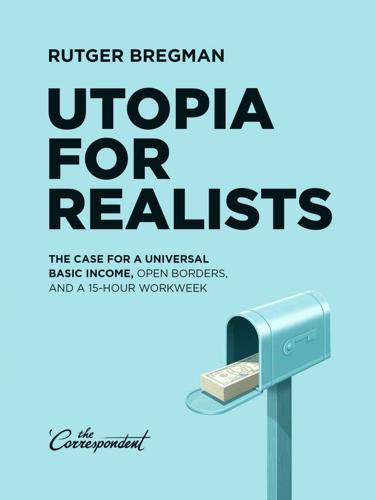
Utopia for Realists: The Case for a Universal Basic Income, Open Borders, and a 15-Hour Workweek
by
Rutger Bregman
Published 13 Sep 2014
Likewise, though GPI and ISEW do correct some of GDP’s failings, they totally pass over the huge technological leaps made in recent decades. Both indices testify that all is not well in the world – but that’s also precisely what they’ve been designed to show. In fact, simple rankings consistently conceal more than they reveal. A high score on the UN’s Human Development Index or the OECD’s Better Life Index may be something we should applaud, but not if we don’t know what is being measured. What’s certain is that the wealthier countries become, the more difficult is it to measure that wealth. Paradoxically, we’re living in an information age where we spend increasing amounts of money on activities about which we have little solid information.
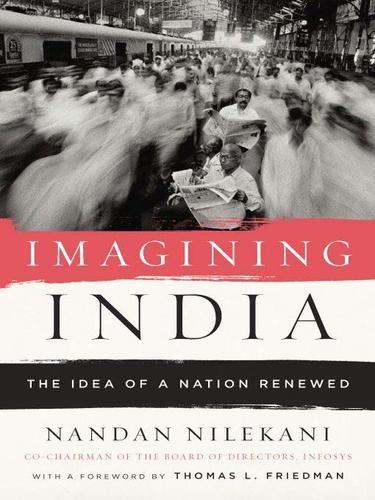
Imagining India
by
Nandan Nilekani
Published 25 Nov 2008
M. groundwater Guangzhou, China Guha, Ramachandra Gujarat Gujarat State Petroleum Corporation (GSPC) Gulati, Ashok Gulf War Gupta, Anil Gurukula Botanical Sanctuary Haldea, Gajanan Hamel, Gary Hande, Harish Hard Times (Dickens) Harrison, William Haryana Hasan, Zoya Hazard, Leland “Health for All by the Year 2000” campaign heart disease Hicks, John Hieronimus, Albert Himachal Pradesh Hindi language Hindu Adoption and Maintenance Act (1956) Hindu College Hinduism Hindustan Aeronautics Ltd Hindustan Petroleum Corporation Ltd Hindustan Unilever Limited (HUL) Hitchens, Christopher Hobson Jobson dictionary Honey Bee network Hong Kong Hooghly River Hoover, Herbert hospitals human capital human development index (HDI) Human Development Report 2007, 406 human rights Hume, Allan O. Hyderabad hypertension IBM ICICI Bank IIT Bangalore IIT Bombay IIT Kharagpur IIT Madras IKEA imperialism Imperial Legislative Council income taxes Independence Day India: agriculture in ; birth rate in; boundaries of ; British colonial rule in ; caste system of ; census figures for; civil service of ; class divisions in ; Constitution of ; culture of , ; currency of; defense budget of; as democracy ; demographic trends in ; as developing country ; divisiveness and fragmentation in ; domestic market of ; economy of, see economy, Indian; education in ; elections in ; emigration from; employment in ; environmental issues ; family planning in ; film industry of (Bollywood) ; five year plans of ; foreign aid to ; foreign exchange reserves of ; foreign investment in ; foreign policy of ; foreign trade of; former kingdoms and principalities of ; future trends in; geography of; government of, see government, Indian; gross domestic product (GDP) of ; health care ; history of ; housing in; identity in ; income levels in ; independence of ; industrialization of ; infrastructure of ; labor market of ; land ownership in ; languages of ; see also specific languages; legal system of ; Legislative Assembly of ; manufacturing in ; mass media in ; national debt of ; nationalism in ; national security of ; natural resources of; northern vs. southern ; parliament of ; Partition of ; population of ; poverty in ; regionalism in ; religion in ; rural areas of ; secularism in ; separatism in ; social progress in; states of ; see also specific states; stock markets of ; Supreme Court of ; time line for; urban areas of ; see also specific cities and towns; villages of ; voting blocks in; wealth disparities in India after Gandhi (Guha) India Brand Equity Fund (IBEF) “India Everywhere” campaign India International Center Indian Banks Association Indian Council for Cultural Relations Indian Diary (Montagu) Indian Institute of Management Ahmedabad (IIMA) Indian Institute of Science (IISc) Indian Institute of Technology (IIT) Indian Institutes of Management (IIMs) Indian National Trade Union Congress (INTUC) Indian Oil Corporation Ltd Indian Railways Indian Roads Congress (1930) Indian Science Congress “India: On the Growth Turnpike” (Kelkar) “India Shining” campaign India’s New Capitalists (Damodaran) India’s Turn (Subramanian) indigo Indiresan.
…
da A cap and trade system first sets limits on pollution (a cap) and then the emissions allowed within the cap are divided into individual permits. Companies can then trade these permits, as polluters buy “pollution credits” from nonpolluters. db This relationship is startlingly direct: countries with a human development index (HDI) of above 0.8 use at least 1,000 kgoe (kilogram of oil equivalent; one kgoe approximates 10,000 kcal) in energy per capita, and to reach an HDI of above 0.9, energy use must rise above 2,000 kgoe per capita. India currently uses approximately 520 kgoe per person. dc India spends 46 percent of its export earnings on oil imports.

Lonely Planet Kenya
by
Lonely Planet
And many don't trust their politicians – hardly surprising when Kenya's leaders are among the richest people in the country while unemployment sits at around 40%, a staggering 50% of Kenyans live below the poverty line and the prices of basic foodstuffs are soaring. By one estimate, Kenya would require an annual growth rate of 11% for the prosperity gains to even begin to trickle down to poorer sectors of society. Although Kenya has shown some gains in recent years, the Human Development Index (which measures the well-being of a country, taking into account life expectancy, education and standard of living) ranked Kenya at a fairly dismal 146 out of 188 countries in 2016, while the country’s income gap between rich and poor remains within the 10 worst in the world. The Challenges of Democracy Ever since the widespread political and ethnic violence that followed the disputed 2007 elections, when more than 1000 people were killed, Kenya and its friends hold their collective breath whenever the country goes to the polls.
…
The generation of educated Kenyans who came of age in the 1980s is now making itself heard: Kenyans abroad have started to invest seriously in the country, Nairobi’s business landscape is changing rapidly and a new middle class is demanding new apartment blocks and cars. In the 2016 United Nations Development Program (UNDP) Human Development Index, which is based on a number of economic and quality-of-life indicators, Kenya ranked 146th out of 188 countries. One Country, Many Tribes Kenya is home to more than 40 tribal groups. Although most have coexisted quite peacefully since independence, the ethnocentric bias of government and civil-service appointments has led to escalating unrest and disaffection.
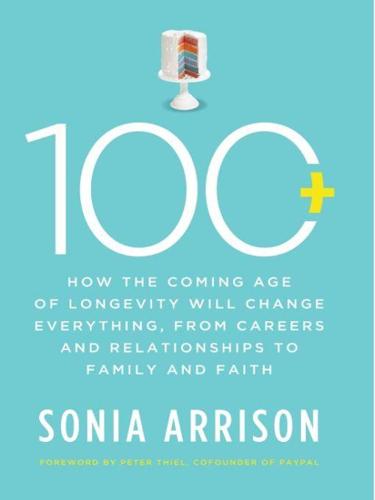
100 Plus: How the Coming Age of Longevity Will Change Everything, From Careers and Relationships to Family And
by
Sonia Arrison
Published 22 Aug 2011
Tory High, Dr. Katherine A. Hill, Peter Hines, Jean HIV Hobbes, Thomas Holliday, Chad Homebrew Club Hood, Ralph Hook, C. Christopher Hormones Housing Hout, Michael Howard, Ron Huber, Peter Hughes, James Human capital Human Connectome Project Human development index(fig.) Human Genome Project (HGP) Human growth hormone (HGH) Human nature Human rights Hurlbut, William Hybrid cars IAC/InterActive Corporation Iannaccone, Lawrence IBM Ideas Immortality as a curse Immortality Institute Income. See also Wages; Wealth India Industrial revolution Inflammation Information technology Information vs. knowledge Infrastructure Inglehart, Ronald Inheritance Innovation “In Pursuit of the Longevity Dividend” (Olshansky, Perry et al.)
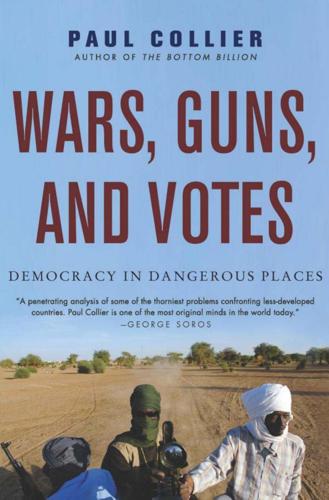
Wars, Guns, and Votes: Democracy in Dangerous Places
by
Paul Collier
Published 9 Feb 2010
These are both strong states in societies in which the sense of national identity is weak relative to the sense of subgroup identity. There is so little common national feeling that both of these societies periodically teeter upon the brink of breaking apart as states. Yet both countries function brilliantly: Canada is at the top of the Human Development Index and Belgium is among the richest countries in Europe. Their intense subnational identities are made manageable within a single state by robust accountability: checks and balances keep the federal state impartial despite the intergroup contest. Instead of a shared sense of belonging, the state functions because its component groups are suspicious of each other and can use the institutions of accountability to prevent being disadvantaged.
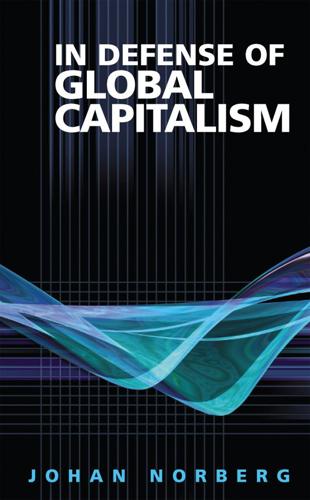
In Defense of Global Capitalism
by
Johan Norberg
Published 1 Jan 2001
Without that adjustment the figures mainly show the level of a country’s official exchange rate and what its currency is worth on the international market, which is a poor yardstick of poverty. Poor people’s actual living standard, needless to say, hinges far more on the cost of their food, clothing, and housing than on what they would get for their money when vacationing in Europe. The odd thing is that the UNDP itself uses purchasing power–adjusted figures in its Human Development Index (HDI), which is its universal yardstick of living standards. It only resorts to the unadjusted figures in order to prove a thesis of inequality. A report from the Norwegian Institute for Foreign Affairs investigated global inequality by means of figures adjusted for purchasing power. Their data show that, contrary to the conventional wisdom, inequality between countries has been continuously declining ever since the end of the 1970s.
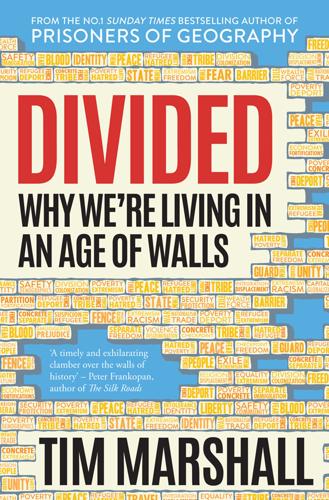
Divided: Why We're Living in an Age of Walls
by
Tim Marshall
Published 8 Mar 2018
The authors removed from their statistics a traditional measure of success, ‘income per head’, on the grounds that the massive energy wealth of a few countries, which trickled down to only a few people, skewed the numbers. They then added internet access and freedom levels to create the ‘Alternative Human Development Index’. In a cutting sentence they concluded that ‘the region is richer than it is developed’. In particular, they highlighted what they called the ‘Three Deficits’ that were holding the region back: first, because it lacked certain freedoms, the Arab world had failed to keep up with global knowledge in science, political thought and comparative religion.
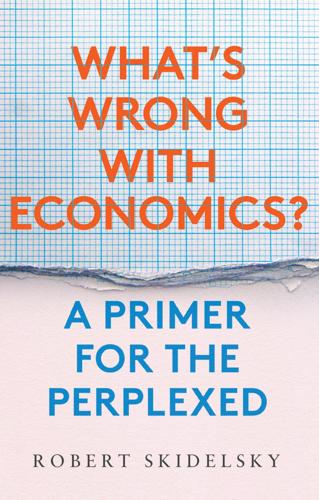
What's Wrong With Economics: A Primer for the Perplexed
by
Robert Skidelsky
Published 3 Mar 2020
Surely what matters is that they are actually healthy and educated. But taking a public stance on what it means to be healthy and educated would be dictatorial. ‘Capability’ preserves the autonomy of individual choice.26 Sen realised that an alternative index was needed, so, with Mahbub ul Haq and others, he produced the Human Development Index, which includes indicators of a country’s income, education, and health. Other indices include the OECD’s Better Life Index, which contains eleven components, the King of Bhutan’s ‘Gross National Happiness’ goal and the OPHI and UNDP’s multidimensional poverty index.27 The International Labour Organization (ILO) says that social justice – not growth – should be the goal, but acknowledges that there is ‘no objective notion of social justice’.
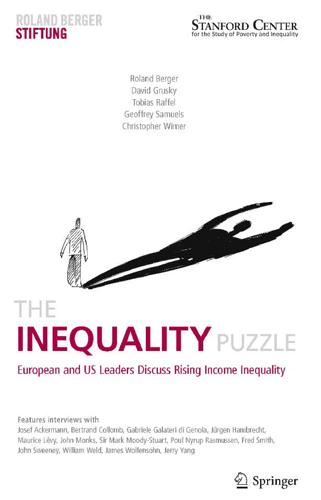
The Inequality Puzzle: European and US Leaders Discuss Rising Income Inequality
by
Roland Berger
,
David Grusky
,
Tobias Raffel
,
Geoffrey Samuels
and
Chris Wimer
Published 29 Oct 2010
All indicators tell us that income inequalities have risen not only in the United States but – with the exception of continental Europe – all over the world. They have risen in Brazil as well as in China, in Argentina as well as in South Africa. But I think that this growing gap in income – which represents a serious political issue to be addressed – is somewhat less important than the human development index trend that shows an improvement for all these countries. In my opinion this is due to globalization: the more a country is integrated in the global economy, the more are the growth dividends for its citizens. If I look, for example, at Brazil, I am impressed by the greater number of people who have gone to the market, who are now participating actively into the marketplace.
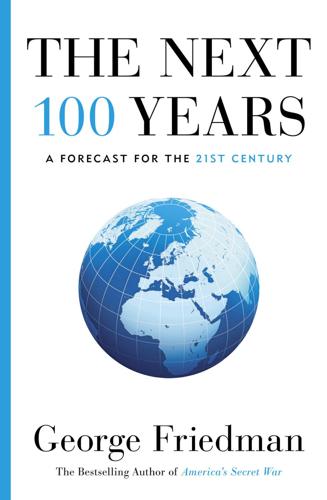
The Next 100 Years: A Forecast for the 21st Century
by
George Friedman
Published 30 Jul 2008
Services now account for 70 percent of Mexico's GDP, and agriculture for only about 4 percent. The rest is made up of industry, oil, and mining. The proportion of services centered around tourism is relatively high, but the mix as a whole is not typical of a developing country. There is an interesting measure, created by the United Nations, called the human development index (HDI), which charts global standards of living, including factors like life expectancy and literacy rates. The HDI divides the world into three classes. On the map that follows, black represents the advanced industrial world, medium gray indicates the middle-tier and developed countries, and light gray shows the developing world.

How to Speak Money: What the Money People Say--And What It Really Means
by
John Lanchester
Published 5 Oct 2014
We could have flat or low GDP growth but be living longer, be better educated, feel happier, and have less inequality—which would be a win. The attempt to find hard, non-touchy-feely ways of measuring material well-being is a focus of interest in some areas of economics at the moment. One popular measure, produced by the UN, is the Human Development Index or HDI, which crunches together life expectancy, years spent in education, and GDP per capita, to come up with a single hard number. There are four categories, ranging from “very high human development” to “low human development.” These are the top twelve countries: 1. Norway 2. Australia 3.
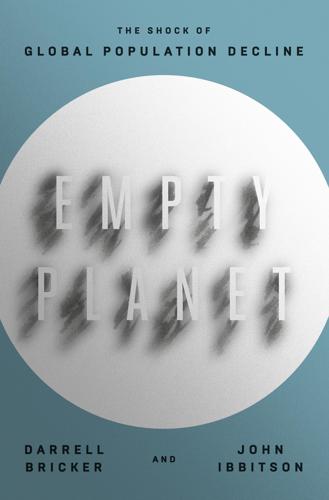
Empty Planet: The Shock of Global Population Decline
by
Darrell Bricker
and
John Ibbitson
Published 5 Feb 2019
The Korean economic model focused on developing the chaebol—state-supported industrial conglomerates—that made Hyundai, Samsung, Kia, and LG household names around the world. From utter poverty in the 1950s, Korea progressed so rapidly that it triumphantly hosted the 1988 Olympics, introducing itself to the modern world. Today, Korea ranks fifteenth on the UN’s Human Development Index. Improved health care after the Korean War, coupled with a birth rate of about 6.0—typical of a rural, impoverished society at the time—brought on Korea’s own baby boom, with the population doubling from twenty million to forty million between 1950 and 1985. This enormous cohort of the young proved to be Asia’s “demographic dividend,” as it was known: a huge number of eager young workers for the factories that produced the cheap transistor radios and their ilk that powered the first wave of growth.
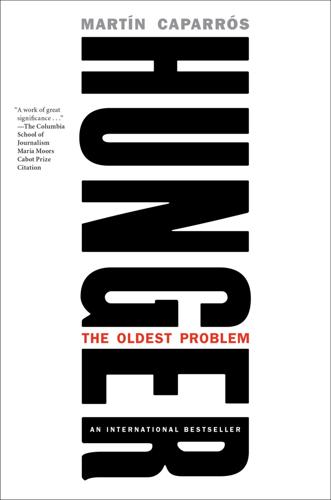
Hunger: The Oldest Problem
by
Martin Caparros
Published 14 Jan 2020
Those countries—with their more than 750 million people, 11 percent of humanity—account for 0.5 percent of the world’s riches. They are the hard core, the indisputable. To them can be added other countries, according to the United National Development Program (UNDP), that score low on their Human Development Index (HDI): Bolivia, Burundi, Dominican Republic, Egypt, El Salvador, Fiji, Gabon, Guatemala, Guyana, Honduras, Indonesia, Kenya, Kirgizstan, Micronesia, Mongolia, Morocco, Namibia, Nicaragua, Nigeria, Pakistan, Papua New Guinea, Paraguay, Philippines, Sri Lanka, Surinam, Swaziland, Zimbabwe, Syria, Tajikistan, Thailand, Turkmenistan, Uzbekistan, Vietnam, and even one European country, the poorest of all: Moldavia.13 (Or, forget all those names and remember one frivolous criterion: the Other World consists of all those countries whose combined gross domestic product is less than the fortune of the richest person in the world: Jeff Bezos.)
…
Un.org. 11 United Nations. “Goal 1: Eradicate Extreme Poverty and Hunger.” Un.org. 12 Truman, Harry S. “Inaugural Address.” Speech. Washington, DC, January 20, 1949. Harry S. Truman Presidential Library and Museum. 13 United Nations Development Programme. “Human Rights Report. Table 2. Human Development Index Trends, 1990–2017.” United Nations Development Program. <http://hdr.undp.org/en/composite/trends> 14 Chu, Henry. “India’s Gnawing Pain.” Los Angeles Times. August 24, 2008. 15 Singh, Manmohan. “Independence Day Speech.” Speech, New Delhi, August 15, 2008. Embassy of India Embassy Archives. 16 Rossi, B.
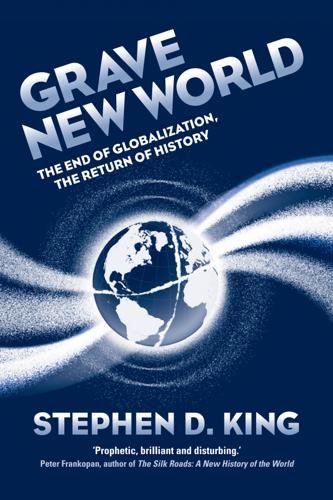
Grave New World: The End of Globalization, the Return of History
by
Stephen D. King
Published 22 May 2017
In a speech given at Harvard University, Salmond claimed that: the winds of globalisation are blowing strongly in [Scotland’s] favour … among the big winners of globalisation are the small, dynamic trading nations of Europe … among the top five nations in the world [as measured by the United Nations Human Development Index] we see three of our European cousins – Ireland, Iceland and Norway. These countries are of course being affected by global forces just like their larger neighbours but all recent evidence suggests they will rebound quickest and strongest from current difficulties.10 They didn’t. The Icelandic and Irish economies both collapsed (even if Ireland subsequently rebounded), while Norway only did well initially because of its enormous exposure to oil at a time of China-led oil price increases.

Food and Fuel: Solutions for the Future
by
Andrew Heintzman
,
Evan Solomon
and
Eric Schlosser
Published 2 Feb 2009
Data supplied by the Economic Research Service, Department of Agriculture, and correspondence, December 2000. See also Frances Moore Lappé, Diet for a Small Planet (Ballantine Books, 1971, 1991), 445n13. 7. For more information see http://www.rprogess.org. Other alternative indicators include the United Nations Human Development Index (UNHDI), http://www.un.org; the Gross Sustainable Development Product (GSDP) developed by the Global Community Assessment Center and the Society for World Sustainable Development in the U.K.; and the Calvert-Henderson Quality of Life indicators, http://www.calvert-henderson.com. 8. See Gary Gardner and Brian Halweil, Underfed and Overfed: The Global Epidemic of Malnutrition, WorldWatch Institute Paper no. 150 (March 2000). 9.
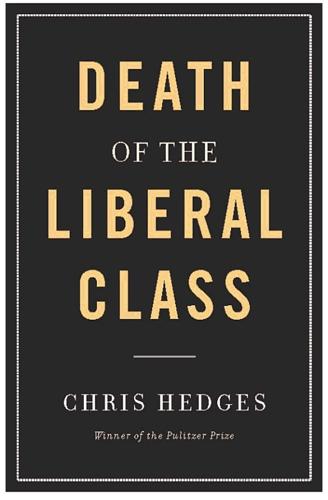
Death of the Liberal Class
by
Chris Hedges
Published 14 May 2010
Many simply walked away from their land .12 “There’s much excited talk these days about a great global shift of power, with speculation about whether, or when, China might displace the U.S. as the dominant global power, along with India, which, if it happened, would mean that the global system would be returning to something like what it was before the European conquests,” said Noam Chomsky, speaking at the Left Forum at Pace University in New York:And indeed their recent GDP growth has been spectacular. But there’s a lot more to say about it. So if you take a look at the U.N. human development index, basic measure of the health of the society, it turns out that India retains its place near the bottom. It’s now 134th, slightly above Cambodia, below Laos and Tajikistan. Actually, it’s dropped since the reforms began. China ranks ninety-second, a bit above Jordan, below the Dominican Republic and Iran.
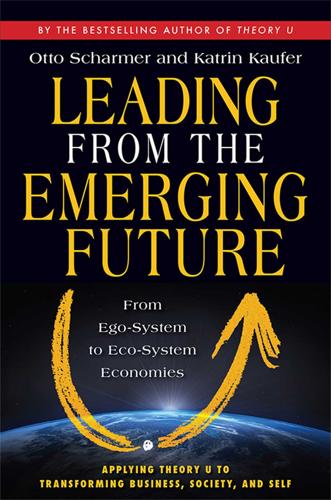
Leading From the Emerging Future: From Ego-System to Eco-System Economies
by
Otto Scharmer
and
Katrin Kaufer
Published 14 Apr 2013
Source: United Nations Development Program, Human Development Report (New York: Oxford University Press, 2006). FIGURE 7. Health and social problems are closely related to inequality among rich countries. Source: Richard Wilkinson and Kate Pickett, The Spirit Level: Why Equality Is Better for Everyone (New York: Penguin, 2009), 20. FIGURE 8. Ecological footprint versus human development index, 2008. Source: Global Footprint Network and WWF, Living Planet Report 2012 (Gland, Switzerland: WWF, 2012), 60. Nobel Laureate Joseph Stiglitz argues in The Price of Inequality that even after the 2007–08 financial crisis, “the wealthiest 1 percent of households had 220 times the wealth of the typical American, almost double the ratio in 1962 or 1983.”4 Stiglitz emphasizes that inequality results from political failure and argues that inequality contributes not only to the social pathologies pointed out above, but also to economic instability in the form of a “vicious downward spiral.”

Black Code: Inside the Battle for Cyberspace
by
Ronald J. Deibert
Published 13 May 2013
service=mobile. 5 The fastest growth rates are occurring among the world’s failed and most fragile states: In the ITU’s 2009 Information Society Statistical Profiles, the ten countries that saw the fastest Internet user growth rates (calculated in terms of compounded annual growth rates) over five years were Afghanistan, Myanmar, Vietnam, Albania, Uganda, Nigeria, Liberia, Sudan, Morocco, and D.R. Congo. Uganda, Nigeria, Liberia, and D.R. Congo were ranked as having low human development on the UN’S 2008 Human Development Index, with no available data for Afghanistan, which at the time was ranked seventh on the Fund for Peace’s Failed States Index. The growth rates for Afghanistan, Myanmar, and Vietnam were derived from 2002 to 2007 ITU figures, while 2003 to 2008 figures were used for the rest. The International Telecommunications Union’s Information Society Statistical Profiles are available at: “Information Society Statistical Profiles 2009: Africa,” 2010, http://www.itu.int/ITU-D/ict/material/ISSP09-AFR_final-en.pdf; “Information Society Statistical Profiles 2009: Europe v.1.01,” 2010, http://www.itu.int/dms_pub/itu-d/opb/ind/D-IND-RPM.EUR-2009-R1-PDF-E.pdf “Information Society Statistical Profiles 2009: Europe,” 2010, http://www.itu.int/dms_pub/itu-d/opb/ind/D-IND-RPM.EUR-2009-R1-PDF-E.pdf; “Information Society Statistical Profiles 2009: Americas,” 2010, http://www.itu.int/dms_pub/itu-d/opb/ind/D-IND-RPM.AM-2009-E09-PDF-E.pdf; and “Information Society Statistical Profiles 2009: Asia and the Pacific,” 2010, http://www.itu.int/dms_pub/itu-d/opb/ind/D-IND-RPM.AP-2009-R1-PDF-E.pdf.
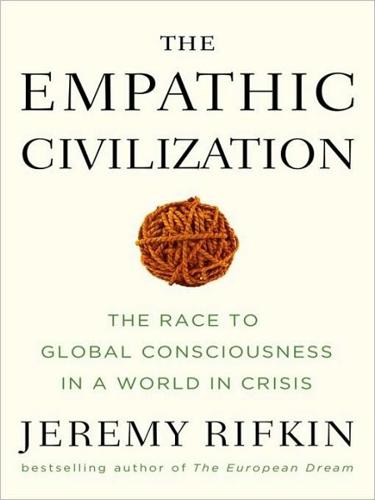
The Empathic Civilization: The Race to Global Consciousness in a World in Crisis
by
Jeremy Rifkin
Published 31 Dec 2009
Goals for ‘more’ growth should specify more growth of what and for what.”39 A number of attempts have been made over the years to come up with a suitable alternative to GDP. The Index of Sustainable Economic Welfare (ISEW), the Genuine Progress Indicator (GPI), the Fordham Index of Social Health (FISH), the UN’s Human Development Index (HDI), and the Index of Economic Well-Being (IEWB) are among the more popular indicators. They each attempt to determine “real” economic improvement in human welfare. The earliest effort at establishing an alternative index was the ISEW, created by then World Bank economist Herman Daly and theologian John Cobb in 1989.
…
(Fromm) Tocqueville, Alexis de Today (TV show) toddlers induction discipline and Tolstoy, Leo Tomasello, Michael Tomlinson, John Tonight Show, The (TV show) Torah Totem and Taboo (Freud) Toulmin, Stephen tourism traditional societies transatlantic cable transcendence transportation revolution travel Travers, Jeffrey Treisman, Uri tribes Trilling, Lionel Trist, Eric Trobriand Islands Trotter, Wilfred true self trust Truth and Reconciliation Commission (South Africa) truths tsunamis Tudor England Turkle, Sherry tweens Twenge, Jean M., Dr. Twitter Two Treatises of Government (Locke) UCLA UK Meteorological Office Ulysses (Joyce) United Nations Food and Agricultural Organization Human Development Index (HDI) Intergovernmental Panel on Climate Change United States credit crisis in greenhouse gas emissions illegal immigrants in income disparity in interstate highway system kiddy consumption in market model in materialism of as media capital as music capital pet industry in presidential election of 2008 religious values in self-help groups in United States Democratic Review universal God universal literacy universality University Hospital (London) University of Amsterdam University of Chicago Oriental Institute University of Groningen University of Michigan University of Minnesota University of Missouri University of North Florida University of Rochester University of St Andrews University of Western Ontario University of Wisconsin uranium urbanization urban life in Roman Empire in Sumeria Utilitarian philosophers utopia Value of the Individual, The: Self and Circumstance in Autobiography (Weintraub) van den Boom, Dymph Varela, Francisco Vedic religion Vegetarian Society vendetta Venice Vermont vernacular (language) vernacular cosmopolitanism Vernadsky,Vladimir Vickers, Sir Brian Vico, Giambattista Victorian architecture Vie de Marianne, La (Chamblain de Marivaux) village life village settlements violence Virginia Declaration of Rights virtual reality Vischer, Robert vision vocabulary Voltaire Vygotsky, Lev Walqa Technology Park (Huesca, Spain) Walter, Katey, Dr.

The Meritocracy Trap: How America's Foundational Myth Feeds Inequality, Dismantles the Middle Class, and Devours the Elite
by
Daniel Markovits
Published 14 Sep 2019
And between 1960 and 2004, the spread of home air-conditioning reduced premature heat-related deaths by as much as 75 percent. Broader markers of physical health extend this trend. The mortality rate for American children under the age of five has fallen from 30.1 per thousand live births in 1960 to 6.8 per thousand in 2015. The United Nations’ Human Development Index for the United States has increased by about 10 percent. And the life expectancy of the poor has increased (although by much less than the increase enjoyed by richer Americans). None of this shows that poverty has been eradicated or that the lives of the remaining poor have become easy.
…
Centers for Disease Control and Prevention, National Vital Statistics Reports 49, no. 10 (September 25, 2001): 2, accessed November 18, 2018, www.cdc.gov/nchs/data/nvsr/nvsr49/nvsr49_10.pdf; “Trends in Teen Pregnancy and Childbearing,” Department of Health and Human Services, accessed October 12, 2018, www.hhs.gov/ash/oah/adolescent-development/reproductive-health-and-teen-pregnancy/teen-pregnancy-and-childbearing/trends/index.html. increased by about 10 percent: “Human Development Data,” United Nations Development Programme, accessed October 12, 2018, www.hdr.undp.org/en/indicators/137506. The United Nations Development Programme’s Human Development Index (HDI) measures “average achievement in three basic dimensions of human development: a long and healthy life, knowledge and a decent standard of living.” The HDI for the United States was 0.826 in 1980, and increased to 0.915 in 2014. by richer Americans: See Social Security Administration, Office of Retirement and Disability Policy, “Trends in Mortality Differentials and Life Expectancy for Male Social Security–Covered Workers, by Socioeconomic Status,” Social Security Bulletin 67, no. 3 (2007): Table 4, www.ssa.gov/policy/docs/ssb/v67n3/v67n3p1.html.
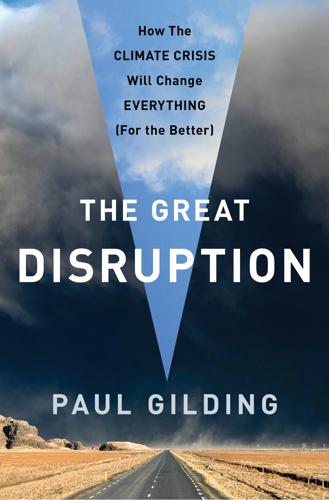
The Great Disruption: Why the Climate Crisis Will Bring on the End of Shopping and the Birth of a New World
by
Paul Gilding
Published 28 Mar 2011
As Robert Kennedy suggested forty-five years ago, we need to stop measuring our progress by quantity of activity and instead start to measure quality of life. This is the type of progress we should hold our governments accountable for. There is a great deal of work under way to define the right way to do this, like the human development index devised by the UN Development Programme (UNDP), which adds life expectancy and quality of education to GDP. Another, and my favorite, is the happy planet index developed by the New Economics Foundation. The happy planet index adds life satisfaction levels to life expectancy levels and divides the result by the ecological footprint, thus measuring the length and genuine quality of life for present generations divided by the risk to future generations of any damage being done to our capital stocks.3 Am I off with the fairies or being gripped by naive idealism?

QI: The Second Book of General Ignorance
by
Lloyd, John
and
Mitchinson, John
Published 7 Oct 2010
In 2008 the International Criminal Court (ICC) issued an arrest warrant for President Omar al-Bashir, charging him with war crimes and crimes against humanity. This is the first time the court has brought charges against a serving head of state. Sudan is 150th out of 182 nations on the UN’s human development index. One in five Sudanese lives on less than £1 a day. In the 2009 Happy Planet Index, which measures well-being and environmental impact, Sudan is ranked 121 out of 143, though this beats both Luxembourg and Estonia. What was Cleopatra’s nationality? She was Greek. Cleopatra (literally meaning ‘renowned in her ancestry’) was a direct descendant of Ptolemy I (303–285 BC), the right-hand man to Alexander the Great.
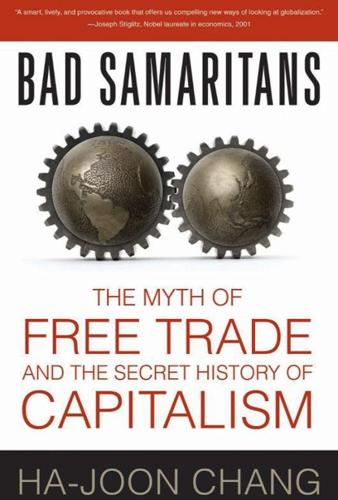
Bad Samaritans: The Myth of Free Trade and the Secret History of Capitalism
by
Ha-Joon Chang
Published 26 Dec 2007
If we take the mid-point of these two estimates ($25 billion), Suharto has stolen the equivalent of 5.2 times his country’s national income in 1961 ($4.8 billion). Zaire’s income per capita in purchasing power terms in 1997, when Mobutu was deposed, was one third of its level in 1965, when he came to power. In 1997, the country stood 141st among the 174 countries for which the UN calculated a ‘human development index’ (HDI). The HDI takes into account not only income but also ‘quality of life’ measured by life expectancy and literacy. Considering the corruption statistics, Indonesia should have performed even worse than Zaire. Yet where Zaire’s living standards fell by three times during Mobutu’s rule, Indonesia’s rose by more than three times during Suharto’s rule.
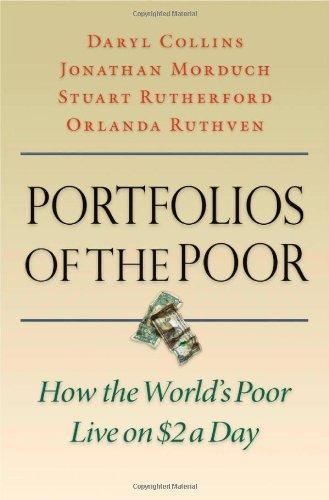
Portfolios of the poor: how the world's poor live on $2 a day
by
Daryl Collins
,
Jonathan Morduch
and
Stuart Rutherford
Published 15 Jan 2009
Households like those who feature in our diaries face many challenges of poverty that go beyond the lack of money. They may face discrimination because of their ethnicity or class, find that their legal rights are poorly enforced, or have to struggle with low-quality public services and low skill levels. Measures of well-being such as the UN’s Human Development Index track health and literacy as well as income, broadening the domain of poverty reduction. Yet the financial diaries made us think afresh about poverty in terms of money—and, more specifically, money management. We saw that without access to basic forms of financial intermediation, poor households found their health emergencies triggered broader economic crises; they were prevented from seizing opportunities to increase income; and they were pushed into relying on neighbors and relatives in ways that often brought shame, anxiety, and dependence.
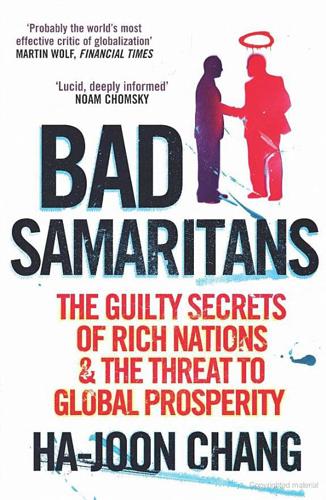
Bad Samaritans: The Guilty Secrets of Rich Nations and the Threat to Global Prosperity
by
Ha-Joon Chang
Published 4 Jul 2007
If we take the mid-point of these two estimates ($25 billion), Suharto has stolen the equivalent of 5.2 times his country’s national income in 1961 ($4.8 billion). Zaire’s income per capita in purchasing power terms in 1997, when Mobutu was deposed, was one third of its level in 1965, when he came to power. In 1997, the country stood 141st among the 174 countries for which the UN calculated a ‘human development index’ (HDI). The HDI takes into account not only income but also ‘quality of life’ measured by life expectancy and literacy. Considering the corruption statistics, Indonesia should have performed even worse than Zaire. Yet where Zaire’s living standards fell by three times during Mobutu’s rule, Indonesia’s rose by more than three times during Suharto’s rule.
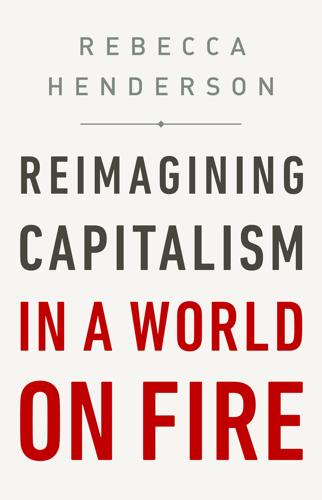
Reimagining Capitalism in a World on Fire
by
Rebecca Henderson
Published 27 Apr 2020
(In 2013 the United States had a Gini of 0.41. Germany’s Gini was 31.4, and Denmark’s was 28.5.)91 Gender equality has improved, and the poverty rate has fallen from 40 to 11 percent. The country recently ranked 11 out of 102 countries in the OECD Social Institutions and Gender Index and 65 in the Human Development Index—ahead of Mexico, Brazil, and China.92 What can we learn from Mauritius’s experience? As advertised, it turns out that business can help build inclusive institutions outside Europe, even when the local society is not racially homogenous. It’s also a story that illustrates the subtle interplay between economic interest and the shared sense of what is right.
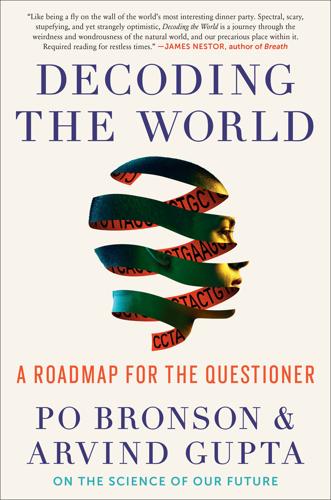
Decoding the World: A Roadmap for the Questioner
by
Po Bronson
Published 14 Jul 2020
Every procedure has extra steps and extra documentation. Far more tests are ordered than are necessary, just in case. Medical centers and hospital systems are not racking up all these costs to get rich. They’re not evil. They do it to avoid being sued. The United States is the only country in the Top 50 on the Human Development Index that doesn’t have socialized or universal medicine. So it’s tempting to think, “We should do exactly what everyone else does.” Except none of those countries has the kind of litigious culture we have. If the government paid for health care, then everyone would be suing the government. If our government actually ran our health systems, we would have lawsuits out of our ears.
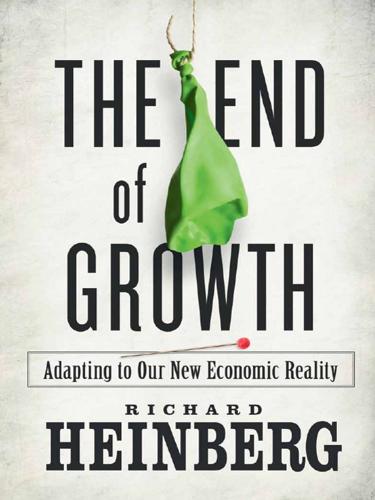
The End of Growth: Adapting to Our New Economic Reality
by
Richard Heinberg
Published 1 Jun 2011
This is because in a democratic system people are better able to petition the government to act in emergency situations; also, democratic accountability provides incentives for leaders to act. Sen’s capabilities approach has been incorporated into some welfare and poverty measurements being used today. The best example is the UN Human Development Index (HDI). This measure looks at education and life expectancy along with income to measure and understand a country’s development. It is interesting to note that the HDI does not correspond directly with a ranking of countries by GDP, or even GDP per capita — a measure that tends to mask inequality.
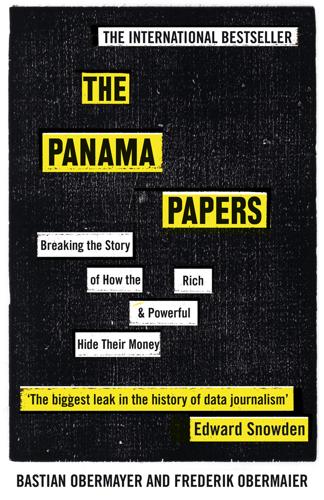
The Panama Papers: Breaking the Story of How the Rich and Powerful Hide Their Money
by
Frederik Obermaier
Published 17 Jun 2016
The annual budget of the Guinean government at that time was $1.2 billion, meaning that BSGR received twice as much as the government had available each year. It’s important to note that this is the government of a country in which child mortality rates are so high that 104 in every 1,000 children don’t reach their fifth year of life. In comparison, this figure is as low as four in every 1,000 in Germany. In the United Nations’ Human Development Index, Guinea occupies position 179 of 187. That’s the human impact of the resource curse. The Independent referred to the BSGR–Vale deal as ‘the corruption deal of the century’. And according to Transparency International, Guinea is one of the most corrupt countries in the world. The Guinean dictator Lansana Conté, under whose rule Steinmetz was awarded the mining rights, called his own ministers ‘thieves’.
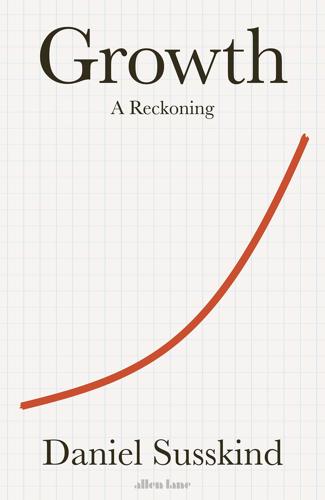
Growth: A Reckoning
by
Daniel Susskind
Published 16 Apr 2024
Another strategy that many have proposed is to create an ‘index’: choose several measures, assign to each one a weight that reflects its relative importance and combine them to produce the overall number. Many of the best-known alternatives to GDP that have been suggested by economists and policymakers – ‘Genuine Progress Indicator’, ‘Green GDP’, ‘Human Development Index’, ‘Index of Sustainable Economic Welfare’, ‘Better Life Index’, ‘Wealth Plus’, and so on – are built in this way. But while including multiple measures might seem like a sensible way to get a richer picture than GDP alone, what you actually get is a technical and moral fudge: the key questions of what measures to include and what their weights ought to be are again decided by the deliberations of academics and technocrats, hidden within the details of the index calculation.52 The result is often a reflection of arbitrary tastes and biases, more than anything else.
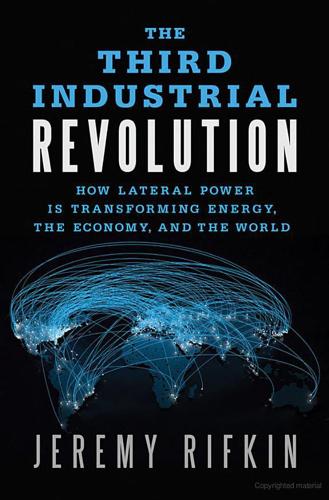
The Third Industrial Revolution: How Lateral Power Is Transforming Energy, the Economy, and the World
by
Jeremy Rifkin
Published 27 Sep 2011
Goals for ‘more’ growth should specify more growth of what and for what.”29 In recent years, economists have begun to create alternative indices for measuring economic prosperity based on quality-of-life indicators rather than mere gross economic output. The Index of Sustainable Economic Welfare (ISEW), the Fordham Index of Social Health (FISH), the Genuine Progress Indicator (GPI), The Index of Economic Well-Being (IEWB), and the UN’s Human Development Index (HDI) are among the many new quality-of-life economic index models. These new indices measure the general improvement in the well-being of society and include things such as infant mortality, longevity of life, the availability of health coverage, the level of educational attainment, average weekly earnings, the eradication of poverty, income inequality, affordability of housing, the cleanliness of the environment, biodiversity, the decrease in crime, the amount of leisure time, and so on.

The Iron Cage: The Story of the Palestinian Struggle for Statehood
by
Rashid Khalidi
Published 31 Aug 2006
While there had been extensive progress in education in the late Ottoman period, and that progress continued during the Mandate, the development of a modern Palestinian educational system started from a very low base.52 Arab society in Palestine thus suffered from severe inherited educational disadvantages. Beyond this, it was primarily rural and therefore had not been extensively exposed to modern technology. In terms of the United Nations Development Program’s “Human Development Index,” which is meant to be a “comprehensive, comparative measure of a society’s all-inclusive state of development,” around 1939 Palestine’s Jews placed fifteenth out of thirty-six countries measured, behind Belgium and Finland and ahead of Czechoslovakia and Italy, while the Palestinian Arabs placed thirtieth, falling behind Brazil and Peru, but ahead of Egypt (thirty-third) and Turkey (thirty-fifth).53 In light of the advantages that the yishuv enjoyed in the realm of human capital, it can be imagined what a benefit its phenomenally high ratio of capital investment per capita gave it by comparison with Palestinian Arab society, a benefit reflected in the exceedingly high growth rate of the Jewish economy already mentioned.
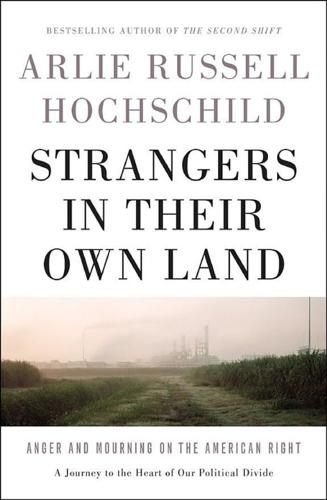
Strangers in Their Own Land: Anger and Mourning on the American Right
by
Arlie Russell Hochschild
Published 5 Sep 2016
That 44 percent of the Louisiana budget that came from the federal government, much of it for welfare to the poor, she would just as soon give back. Giving money in return for nothing? That broke her moral rule: reward for work. So for her, there was no paradox in Louisiana coming in 49th in the human development index and 50th in overall health and right-wing resistance to the idea of federal government aid. They could have whatever rank they wanted, if they didn’t work. We stop at a drive-through Burger King to buy two Whopper Juniors, sit down to eat them with some large sweet teas, then head to Janice’s dream house.
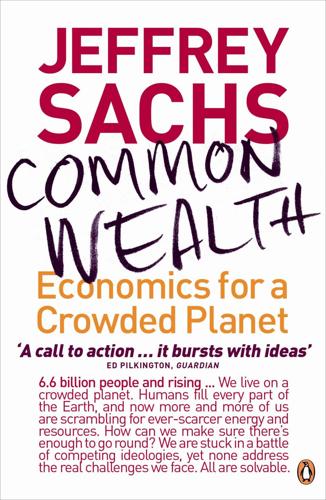
Common Wealth: Economics for a Crowded Planet
by
Jeffrey Sachs
Published 1 Jan 2008
GATT General Agreement on Tariffs and Trade GDP gross domestic product GEF global environmental facility GFATM Global Fund to Fight AIDS, Tuberculosis and Malaria GNP gross national product GROCC Global Roundtable on Climate Change GWP gross world product HDI Human Development Index HIPPO habitat destruction, invasive species, pollution, population increase, and overharvesting ICPD International Conference on Population and Development IMF International Monetary Fund I= P × A × T or I-PAT equation: Environmental impact = population × per capita income × the environmental impact per dollar of income IPCC Intergovernmental Panel on Climate Change MDGs Millennium Development Goals MENA Middle East and North Africa MVP Millennium Village Project N2O nitrous oxide NGO nongovernmental organization NRR net reproduction rate PAI Population Action International ppm parts per million PPP purchasing power parity PPPs public private partnerships R & D research and development RD & D research, development, and demonstration TFR total fertility rate UN United Nations UNCCD United Nations Convention to Combat Desertification UNDP United Nations Development Program UNEP United Nations Environment Program UNFCCC United Nations Framework Convention on Climate Change UNFPA United Nations Population Fund (formerly UN Fund for Population Activities) UNICEF United Nations Children’s Fund USAID United States Agency for International Development WHO World Health Organization WTO World Trade Organization Notes CHAPTER 1: COMMON CHALLENGES, COMMON WEALTH 4 social insurance and transfer schemes: Peter Lindert, Growing Public: Social Spending and Economic Growth since the Eighteenth Century, vol. 1 (New York: Cambridge University Press, 2004). 10 “For peace is a process”: John F.
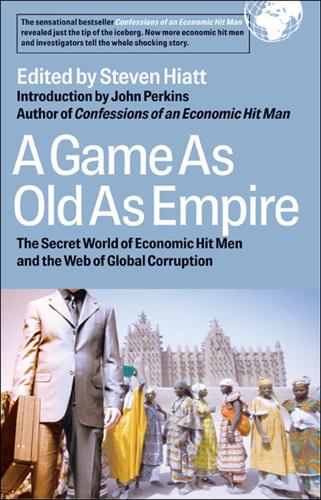
A Game as Old as Empire: The Secret World of Economic Hit Men and the Web of Global Corruption
by
Steven Hiatt; John Perkins
Published 1 Jan 2006
According to a survey by the nonprofit organization Social Weather Station, the proportion of Filipino households experiencing hunger hit 16.7 percent in the fourth quarter of 2005. Self-rated poverty rose to 57 percent, having fluctuated between 46 percent and 58 percent since the beginning of 2004.60 In some parts of the Philippines, the human development index is almost the same as that in sub-Saharan Africa.61 The Philippine Center for Investigative Journalism revealed a new “Mini-Size Me” phenomenon. “Procter & Gamble unit manager Jonathan Chua explains: ‘Package downsizing is in response to consumer coping behavior.’ With the disposable income of Filipinos shrinking almost daily, canned food in 100- to 200-gram size (100 grams equals approximately 4 ounces) eats up more than half the market volume share.”62 Poor people can now afford to buy food only in very small quantities.
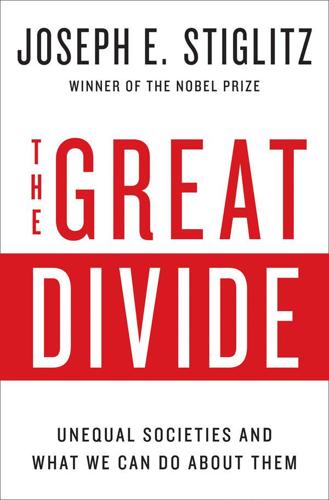
The Great Divide: Unequal Societies and What We Can Do About Them
by
Joseph E. Stiglitz
Published 15 Mar 2015
Moreover, there are other countries, committed to open, democratic processes, that have been spectacularly successful in creating economies that are both dynamic and fair—with far less inequality and far greater equality of opportunity than in the United States. Each of the Nordic countries has taken a slightly different path, but each has impressive achievements of growth with equity. A standard measure of performance is the United Nations Development Program’s inequality-adjusted Human Development Index, which is less a measure of economic output than it is of human well-being. For each country, it looks at citizens’ income, education, and health, and makes an adjustment for how access to these is distributed among the population. The Northern European countries (Sweden, Denmark, Finland, and Norway) stand towards the top.

Culture and Prosperity: The Truth About Markets - Why Some Nations Are Rich but Most Remain Poor
by
John Kay
Published 24 May 2004
See also Lane (1991), Oswald (1997), and the WORLD DATABASE OF HAPPINESS.w 18. UNDP (2002). 19. Steckel (1995), 1914. 20. Transparency International ( 2001), 234. 21. World Bank, 2001 World Development Indicators, Table 2.8. 22. IMF World Economic Outlook 2000, Inflationw www.imf.org/external/pubs/ ft/weo/2000/02/ data/ 23. UNDP Human Development Index 1998. However, some poor states, e.g. Malawi and the Indian state ofKerala, have high literacy rates. 24. Inglehart et al. (1998), Table V264. 25. IMD (2002), Freedom House (2002). 26. Maddison (1993), Table A-2 of2000 ed. 27. Freedom House (2001), 11. 28. Inglehart and Baker (2000), 19-55. 29.
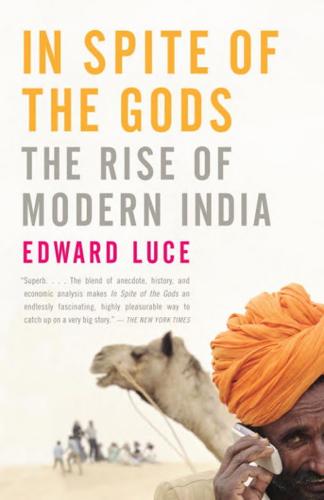
In Spite of the Gods: The Rise of Modern India
by
Edward Luce
Published 23 Aug 2006
Or take India’s literacy rate. In 1991 it was 52 percent. By 2001 it was 65 percent. Or life expectancy. In 1991 the average Indian would live to the age of fifty-eight. By 2001 the age had risen to sixty-five years. Roughly the same congruence emerges from India’s international rankings. India’s human development index, which is compiled by the UN Development Program, went from 0.254 in 1970 to 0.602 in 2005, which translates into an annual improvement of about 1 percent. To judge by the living conditions of ordinary Indians and not by the drama of national events, the country is moving forward on a remarkably stable trajectory.
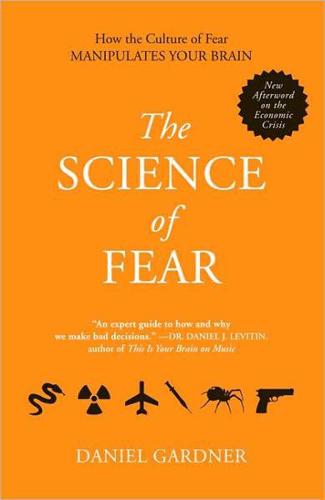
The Science of Fear: How the Culture of Fear Manipulates Your Brain
by
Daniel Gardner
Published 23 Jun 2009
Not so well known, however, is that there have been major improvements in the developing world, too. In the two decades following 1980, the proportion of people in the developing world who were malnourished fell from 28 percent to 17 percent. That’s still unconscionably high, but it’s a lot better than it was. Then there’s the United Nations Human Development Index (HDI). It’s probably the best measure of the state of humanity because it combines key data on income, health, and literacy. At the bottom of the HDI list of 177 countries is the African country of Niger—and yet Niger’s 2003 HDI score is 17 percent higher than it was in 1975. The same trend can be seen in almost all very poor countries.
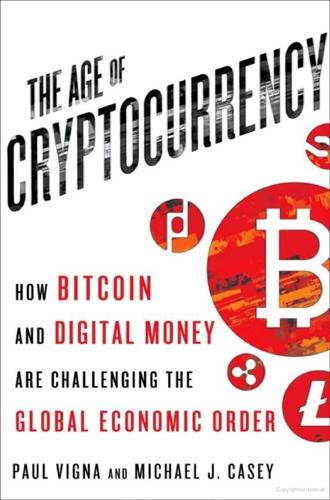
The Age of Cryptocurrency: How Bitcoin and Digital Money Are Challenging the Global Economic Order
by
Paul Vigna
and
Michael J. Casey
Published 27 Jan 2015
For them, the pursuit of other freedoms—of speech, for example—must be subordinated to the task of tackling these financial and economic challenges. The escape from all that, bitcoiners surmise, may lie in those $5 phones and a radical new mobile-money system. Mali is one of the poorest nations on the planet. It ranked 175th out of 187 nations on the UN’s Human Development Index. More than 70 percent of the population lives below the poverty line. It is largely dependent upon agriculture, and per capita income averages $500 a year. There are efforts to boost tourism, but the country’s history of violence, including the coup in 2012 that drove people such as Fatima from their homes, makes that a hard sell.
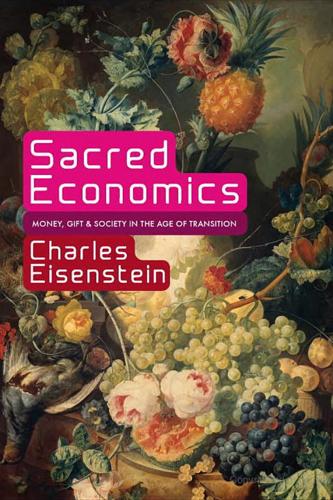
Sacred Economics: Money, Gift, and Society in the Age of Transition
by
Charles Eisenstein
Published 11 Jul 2011
I think that on a healing planet, both GDP and population will peak within the next three decades, level off, and then contract by a few percent per decade until they reach a sustainable level.1 The trend has started already: according to 2006 U.N. projections, the world’s fertility rate has dropped in the last decade from 2.65 to 2.55 live births per woman. Over the past half-century, fertility rates in the most highly industrialized countries have dropped dramatically, in most cases to well under the replacement level of 2.1. Interestingly, the inverse correlation between a nation’s human development index (HDI, a measure of well-being that avoids many of the flaws of GDP) and its fertility rate has, in the last few years, reversed at the upper extreme of HDI. In other words, the fertility rate is showing signs of recovery to near replacement levels when economic development nears completion.2 I don’t intend these statistics to be anything more than suggestive of a possibility.

In a Sunburned Country
by
Bill Bryson
Published 31 Aug 2000
Never mind that most of these countries were only marginally ahead and that much of it was to do with relative exchange rates. Never mind that when you take into account quality-of-life indicators like cost of living, educational attainments, crime rates, and so on, Australia bounds back up near the top. (It ranks seventh on the United Nations’ Human Development Index, a little behind Canada, Sweden, the United States, and one or two others, but comfortably ahead of Germany, Switzerland, Austria, Italy, and several other countries with stout economies and higher GDPs.) At the time of my visit, Australia was booming as never before. It was enjoying one of the fastest rates of economic growth in the developed world, inflation was invisible, unemployment was at its lowest level in years.
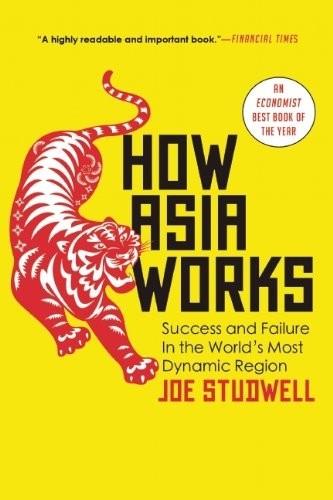
How Asia Works
by
Joe Studwell
Published 1 Jul 2013
One of these involved choosing which east Asian countries to leave out of the narrative. Since the book is about developmental strategies that have achieved a modicum of success, the region’s failed states do not appear. North Korea, Laos, Cambodia, Myanmar and Papua New Guinea, all of which are found near the bottom of the United Nations’ Human Development Index (HDI) rankings,8 are not discussed. The reasons for the failure of these states are varied, but one common characteristic leaps out: they are all politically and economically introverted. In varying degrees, these countries are re-learning the old lesson of pre-1978 China, pre-1989 Soviet Union and pre-1991 India: that if a country does not trade and interact with the world, it is all but impossible to get ahead in the development game.
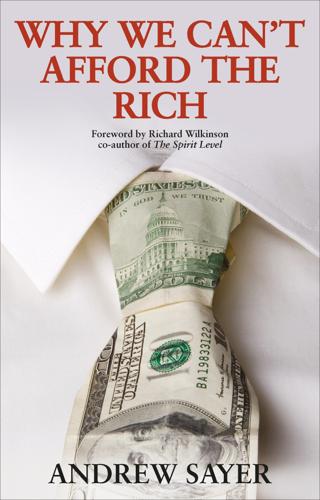
Why We Can't Afford the Rich
by
Andrew Sayer
Published 6 Nov 2014
Pacala estimates that as long as incomes across the world were capped at $40,000 per person, CO2 in the atmosphere could be stabilised. While this is probably one of the more optimistic outlooks, researchers Julia Steinberger and Timmons Roberts found that some countries actually combine long life expectancy and a high score on the UN Human Development Index (HDI) with low carbon emissions that would be sustainable if replicated across the globe. What’s more, as technology becomes less carbon intensive, this combination becomes possible for more countries. So there is some evidence that well-being can be decoupled from high carbon emissions. Just as well-being doesn’t require great wealth, the good news about climate change is that nor need well-being cost the earth.
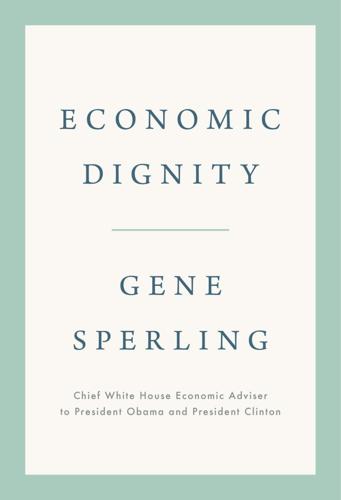
Economic Dignity
by
Gene Sperling
Published 14 Sep 2020
Stiglitz, Jean-Paul Fitoussi, and Martine Durand, “Country-Experiences with Using Well-Being Indicators to Steer Policies,” in Beyond GDP: Measuring What Counts for Economic and Social Performance (Paris: OECD Publishing, 2018), 103–14, https://www.oecd-ilibrary.org/economics/beyond-gdp/country-experiences-with-using-well-being-indicators-to-steer-policies_9789264307292-7-en. 12. There are efforts to design more comprehensive indexes like the United Nations’ Human Development Index, the World Economic Forum’s twelve-factor Inclusive Development Index, and the sixteen critical factors comprising the Institute for Innovation in Social Policy’s Index of Social Health, including teenage suicide and food insecurity. 13. Stiglitz, Fitoussi, and Durand, Beyond GDP, 13. 14.
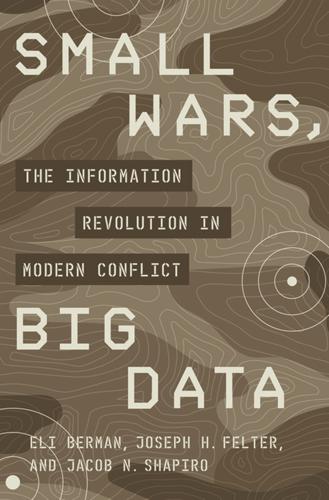
Small Wars, Big Data: The Information Revolution in Modern Conflict
by
Eli Berman
,
Joseph H. Felter
,
Jacob N. Shapiro
and
Vestal Mcintyre
Published 12 May 2018
Parkyn, “Operation Beleaguer.” 5. Australian Government Department of Foreign Affairs and Trade (AGDFAT), “Development Assistance in Timor-Leste,” http://dfat.gov.au/geo/timor-leste/development-assistance/Pages/development-assistance-in-timor-leste.aspx, accessed 22 November 2016. 6. The most recent Human Development Index placed Timor-Leste at position 133 out of 188 countries, while Indonesia came in at 110. United Nations Development Programme, “Human Development Report 2015: Work for Human Development,” http://hdr.undp.org/en/2015-report, accessed 21 November 2016. Nutrition remains a major concern: over half of the country’s children are stunted.
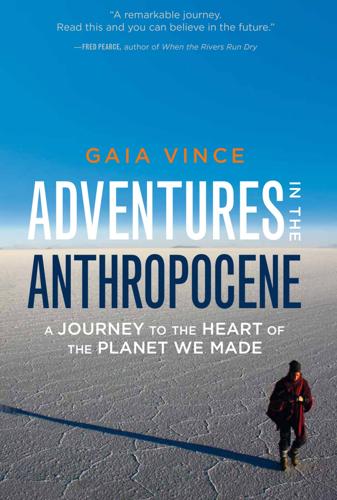
Adventures in the Anthropocene: A Journey to the Heart of the Planet We Made
by
Gaia Vince
Published 19 Oct 2014
Kenya is an uneasy conglomerate of tribes, stirred up and manipulated by Arab slave traders, then British colonialists. Following a brief period of post-independence calm and prosperity, intertribal conflict has resumed over land, animals and water. The country has slipped twenty places on the Human Development Index since 2002, the government is corrupt and making little progress towards democratic reform, frustrating conflict-weary Kenyans and alarming the international community. Meanwhile, the population, more than half of whom are children, has doubled in the past twenty years. More than 80% of this equatorial nation is arid, populated by nomadic people who cover vast areas with cattle, goats and camels.

MacroWikinomics: Rebooting Business and the World
by
Don Tapscott
and
Anthony D. Williams
Published 28 Sep 2010
It is the public that bears the enormous cost of the country’s conflict.”25 A succession of military governments have prioritized security and utterly failed to deliver any gains in public health, education, ethnic integration, or the economy. Burma ranks 138th out of 182 countries on the UN’s human development index, despite the country’s sizable stores of natural resources, including oil, natural gas, timber, hydropower, gemstones, cash crops, and a periodic table’s worth of minerals.26 The Evolution of Conflict in Burma Against this backdrop, the fight for freedom in Burma is long in the making, stretching back, as it does, to the country’s fight to gain independence from Britain in the 1940s.
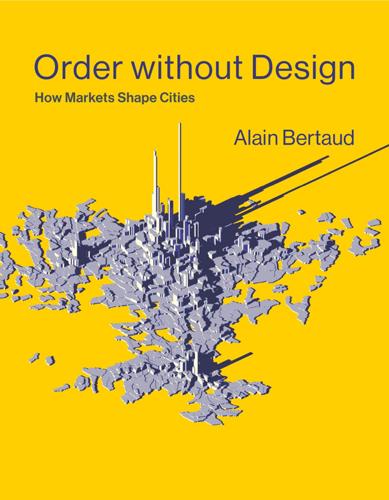
Order Without Design: How Markets Shape Cities
by
Alain Bertaud
Published 9 Nov 2018
In Russian: “Gosudarstvennaya Planovaya Comissiya” [State Planning Committee], in charge of the Soviet economy. 8. Sam Staley and Adrian Moore, Mobility First (Lanham, MD: Rowman & Littlefield Publishers, Inc., 2009). 9. The OECD (Organisation for Economic Co-operation and Development) is a club of 34 rich countries each with a high human development index and committed to a market economy and democracy. 10. Rémy Prud’homme and Chang-Woon Lee, “Size, Sprawl, Speed and the Efficiency of Cities,” Observatoire de l’Économie et des Institutions Locales, Université de Paris 13, 1998. 11. Patricia Melo, Daniel Graham, David Levinson, and Sarah Aarabi, “Agglomeration, Accessibility, and Productivity: Evidence for Urbanized Areas in the US,” paper submitted to the Transportation Research Board, Washington, DC, 2013. 12.
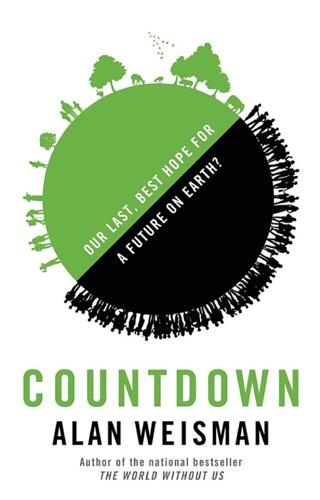
Countdown: Our Last, Best Hope for a Future on Earth?
by
Alan Weisman
Published 23 Sep 2013
The deluge of materialism confounded the image of Keralans enjoying dignified lives on very low incomes. Kerala’s progressive social development and miraculously low fertility had been frequently extolled by Nobel laureate economist Amartya Sen. In the 1990s, the “Kerala Model” became an inspiration for the UN’s Human Development Index that Sen developed with Pakistani economist Mahbub ul Haq—an alternative to GDP as the measure of healthy development. Kerala was cited repeatedly during formulation of the UN’s current Millennium Development Goals as a world-class example of gender equality, women’s empowerment, reduced maternal and child mortality, and universal health care and education.

Slouching Towards Utopia: An Economic History of the Twentieth Century
by
J. Bradford Delong
Published 6 Apr 2020
The growth rate of income per capita averaged more than 7 percent of GDP for the three decades after 1960. Even where rapid growth would seem to have been swimming against the regional political-economic tide, it was possible. The shining beacon is Botswana, with an annual real income per capita estimated at $900 in 1960 and $14,000 in 2010. Then it had the highest Human Development Index in sub-Saharan Africa, despite being landlocked, despite being severely affected by HIV/AIDS, and despite being in a regional neighborhood that has done very poorly in terms of economic growth.20 Its neighbor Zambia’s income per capita went from $2,800 in 1960 to $3,500 in 2010, from three times Botswana’s to one-fourth of Botswana’s.
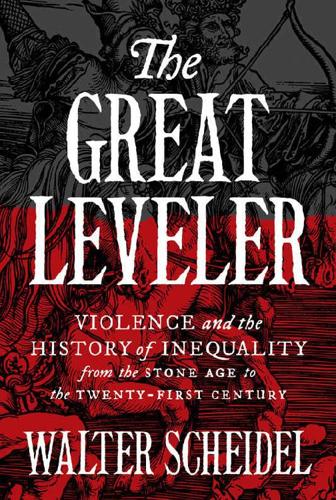
The Great Leveler: Violence and the History of Inequality From the Stone Age to the Twenty-First Century
by
Walter Scheidel
Published 17 Jan 2017
Levels of human welfare are generally very low. One study that measures deprivation in Arab countries (broadly defined), based on factors such as child mortality, nutrition, schooling, and access to basic services, puts Somalia in last place. Data are so scarce that the most recent issue of the Human Development Index refrains from including the country in its global rankings but assigns Somalia the sixth-worst score on the multidimensional poverty index among all developing countries. The country was also found to have the sixth-largest proportion of the population living in severe poverty. There is no doubt that in many ways Somalia is “so broken,” as its most famous export, the author and activist Ayaan Hirsi Ali, once put it in an interview.38 What concerns us here is a more specific question: whether and how the fall of the central government and subsequent fragmentation of the country affected income and wealth inequality.

Nepal Travel Guide
by
Lonely Planet
The powerful Arun River from Tumlingtar makes an excellent three-day wilderness trip with good class 3 rapids and pristine canyons, although the logistics of flying the start of the river and getting gear there makes it an expensive trip. Understand Nepal NEPAL TODAY HISTORY RELIGION THE PEOPLE OF NEPAL ARTS & ARCHITECTURE ENVIRONMENT & WILDLIFE RESPONSIBLE TRAVEL Top of section Nepal Today Population: 29.4 million (2011 estimate) Surface area: 147,181 sq km UN Human Development Index: 157, out of 187 countries Life expectancy: 66 years Adult literacy rate: 49% Gross national income: US$240 per capita Average age: 21 years Just five years ago, Nepalis were stepping out of the wreckage of a decade-long civil war; today Nepal is a quite different country, literally.

Accessory to War: The Unspoken Alliance Between Astrophysics and the Military
by
Neil Degrasse Tyson
and
Avis Lang
Published 10 Sep 2018
type=static&page=flonnet&rdurl=fl1823/18230780.htm (accessed Nov. 23, 2016); Ellen Barry, “India Launches 104 Satellites from a Single Rocket, Ramping Up a Space Race,” New York Times, Feb. 15, 2017; Kai Schultz and Hari Kumar, “India Tests Ballistic Missile, Posing New Threat to China,” New York Times, Jan. 18, 2018. 55.United Nations Development Programme, “Table 1: Human Development Index and Its Components,” Human Development Report 2015: Work for Human Development, 2015, 208–211, hdr.undp.org/sites/default/files/2015_human_development_report.pdf. Life expectancy at birth: Japan 83.5, Canada 82.0, China 75.8, India 68.0. Average years of schooling: Canada 13.0, Japan 11.5, China 7.5, India 5.4.

Collapse
by
Jared Diamond
Published 25 Apr 2011
He died a natural death in 1971, to be succeeded by his son Jean-Claude "Baby Doc" Duvalier, who ruled until forced into exile in 1986. Since the end of the Duvalier dictatorships, Haiti has resumed its former political instability, and its already weak economy has continued to shrink. It still exports coffee, but the amount exported has remained constant while the population has continued to grow. Its human development index, an index based on a combination of human lifespan and education and standard of living, is the lowest in the world outside Africa. After Trujillo's assassina-tion, the Dominican Republic also remained politically unstable until 1966, including a civil war in 1965 that triggered the arrival again of U.S. marines and the beginning of large-scale Dominican emigration to the U.S.

Israel & the Palestinian Territories Travel Guide
by
Lonely Planet
Inside Israel, there is increasing interest in documenting and preserving the ruins of villages lost in 1948. The app iNakba, launched in 2014, helps users find Palestinian villages destroyed since 1948. According to the United Nations Development Programme, Israel ranks 19 (out of 187 countries) on its 2014 Human Development Index; the State of Palestine is ranked 107. Employment & Income Despite restrictions imposed by Israel, the pragmatic policies of former Palestinian Authority Prime Minister Salam Fayyad, a PhD economist, and of significant foreign aid have helped produce solid economic growth in the West Bank in recent years.

Lonely Planet Morocco (Travel Guide)
by
Lonely Planet
,
Paul Clammer
and
Paula Hardy
Published 1 Jul 2014
By 1906, Britain had snapped up strategic waterfront property in Egypt and the Suez; France took the prize for sheer acreage from Algeria to West Africa; Italy landed Libya; Spain drew the short stick with the unruly Rif and a whole lot of desert. Germany was incensed at being left out of this arrangement and announced support for Morocco’s independence, further inflaming tensions between Germany and other European powers in the years leading up to WWI. According to the 2010 Human Development Index, 28.5% of Moroccan households are poor, and another 11.4% are at risk. Moroccan officials dispute the validity of these statistics, placing the poverty figure nearer 9%. France Opens a Branch Office: The Protectorate Whatever illusions of control Morocco’s sultanate might have been clutching slipped away at the 1906 Conference of Algeciras, when control of Morocco’s banks, customs and police force was handed over to France for ‘protection’.

The 9/11 Wars
by
Jason Burke
Published 1 Sep 2011
Pakistan was a nuclear power, with hostile relations with its neighbours that dated back decades and a range of social and economic problems that, though no means exceptional in the Islamic world or among developing nations generally, were nonetheless acute. In 2008, Pakistan was 141st out of 182 on the United Nations Human Development index.2 Infant mortality rates were on a par with those in sub-Saharan Africa and much of the population did not have access to clean water let alone health care. If outright chronic malnutrition was rare, many millions of people ate poorly. Pakistan’s size alone – often underestimated due to its proximity to giants India and China – and strategic position as a buffer state between the Middle East and south Asia contributed too to a strategic importance that few other countries involved in the 9/11 Wars could rival.
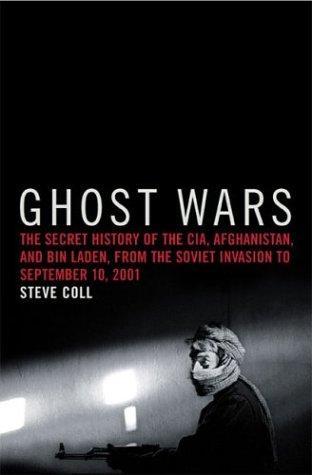
Ghost Wars: The Secret History of the CIA, Afghanistan, and Bin Laden, from the Soviet Invasion to September 10, 2011
by
Steve Coll
Published 23 Feb 2004
American tolerance of the Taliban was publicly and inextricably linked to the financial goals of an oil corporation. There were by now about 1.5 million Afghan war dead, dating back to the Soviet invasion. The land was desolate, laced with mines. The average life expectancy for an Afghan was about forty-six years. The country ranked 173 out of 175 countries on the United Nations human development index.42 Yet the few American officials who paid attention to Afghanistan at all talked as if it was a tax-free zone ripe for industrial revival, a place where vocational education in metallurgy could lead to a political breakthrough. For Afghans themselves the central question in the spring of bin Laden’s return was the military potential of the Taliban.

Bourgeois Dignity: Why Economics Can't Explain the Modern World
by
Deirdre N. McCloskey
Published 15 Nov 2011
The descendants of ditchdiggers and lumberjacks are now CEOs and senators. Of one hundred U.S. senators in 2014, on a rough survey four had Italian last names, six Jewish, and fifteen Irish. Adult literacy and years of schooling are combined nowadays to measure the knowledge leg of the three-legged stool of the “human development index.” Technically speaking the index is a geometric average of measures of knowledge, of real income, and of how long people live. All of these elements are rising and some are accelerating. Years of life, for example, have shot up, as I have noted, from an expectation at birth worldwide of less than thirty years in 1800 to fifty-two years in 1960 and to seventy years in 2010, including even very poor places.

In Europe
by
Geert Mak
Published 15 Sep 2004
The tip covers an immense plot, an endless series of grey, smoking mounds marked by the occasional orange fire, an inferno of soot, rotting food, bottles, cans, car tyres and old plastic. Through the clouds of smoke you can see figures poking around everywhere, rummaging, bent over, every day. Rumania is probably the poorest country in Europe, according to the Human Development Index (2000). It is even worse off than, say, Cuba. Average annual inflation hovers around sixty per cent. The population is decreasing, less than half have access to good drinking water, only one in every five households has a telephone. Thirty to forty per cent of the voters choose ultra-right wing, nationalistic parties.

Empire of Things: How We Became a World of Consumers, From the Fifteenth Century to the Twenty-First
by
Frank Trentmann
Published 1 Dec 2015
Human Development Research Centre and National Rural Electricity Co-operative Association (NRECA), ‘Economic and Social Impact Evaluation Study of the Rural Electrification Program in Bangladesh’ (Dhaka, 2002), with thanks to Anjali Garg for pointing me to this document. In 2007, Bangladesh’s GDP per capita was the 155th lowest in the world ($1,241 PPP), barely ahead of Gambia and Tanzania. It ranked 146th in the overall human development index. See also: Md. Motaher Hossain, ‘Role of Technology in Consumption and Everyday Life in Rural Bangladesh,’ in: Technology in Society, XXXII/2 (2010), 130–6. 31. Linda Chao & Ramon H. Myers, ‘China’s Consumer Revolution: The 1990s and Beyond’, in: Journal of Contemporary China 7, no. 18, 1998: 351–68, 354, table one.
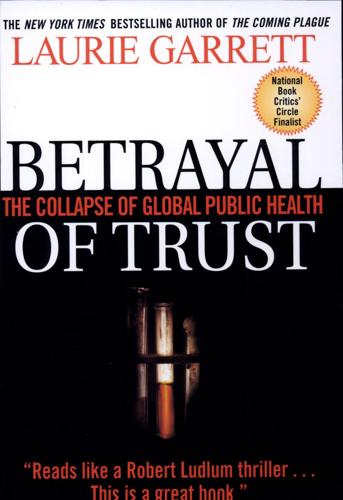
Betrayal of Trust: The Collapse of Global Public Health
by
Laurie Garrett
Published 15 Feb 2000
Brazilian researcher Luiz Loures had an office down the hall from Dehne, and although he had faced tough obstacles to AIDS prevention in Latin America he, like Dehne, was finding the former Soviet nations a dismal challenge. “First of all,” Loures said, pointing to charts and tables strewn across his data-cluttered desk, “look at the economics. Ukraine, for example. In 1992 it ranked sixty in the Human Development Index,” a United Nations Development Program Scale in which higher numbers indicate greater progress in all facets of social and economic advancement and infrastructure. “By 1993, a year later, it was down to nineteen. By 1994—seventeen.” Now, Loures continued, add an overlay of a quarter million IV drug users and millions of teenaged prostitutes and it was obvious that Ukraine would have twenty thousand full-blown AIDS cases by 2001.

The Rough Guide to Australia (Travel Guide eBook)
by
Rough Guides
Published 14 Oct 2023
Australia’s main exports are minerals, metals, fossil fuels, cotton, wool, wine and beef, and its most important trading partners are China, Japan, the EU, South Korea and the USA. At 5614km the dingo fence is the longest of its kind in the world, stretching from Jimbour to the cliffs of the Nullarbor Plain. It’s around twice the length of the Great Wall of China. Australia ranks proudly first in the Human Development Index, which measures a country’s progress by its life expectancy, education and standard of living. Around 20 percent of Australians are descended from convicts. Where to go For visitors, deciding where to go can mean juggling distance, money and time. You could spend months driving around the Outback, exploring the national parks, or hanging out at beaches; or you could take an all-in, two-week “Sydney, Reef and Rock” package, encompassing Australia’s outstanding trinity of must-sees.